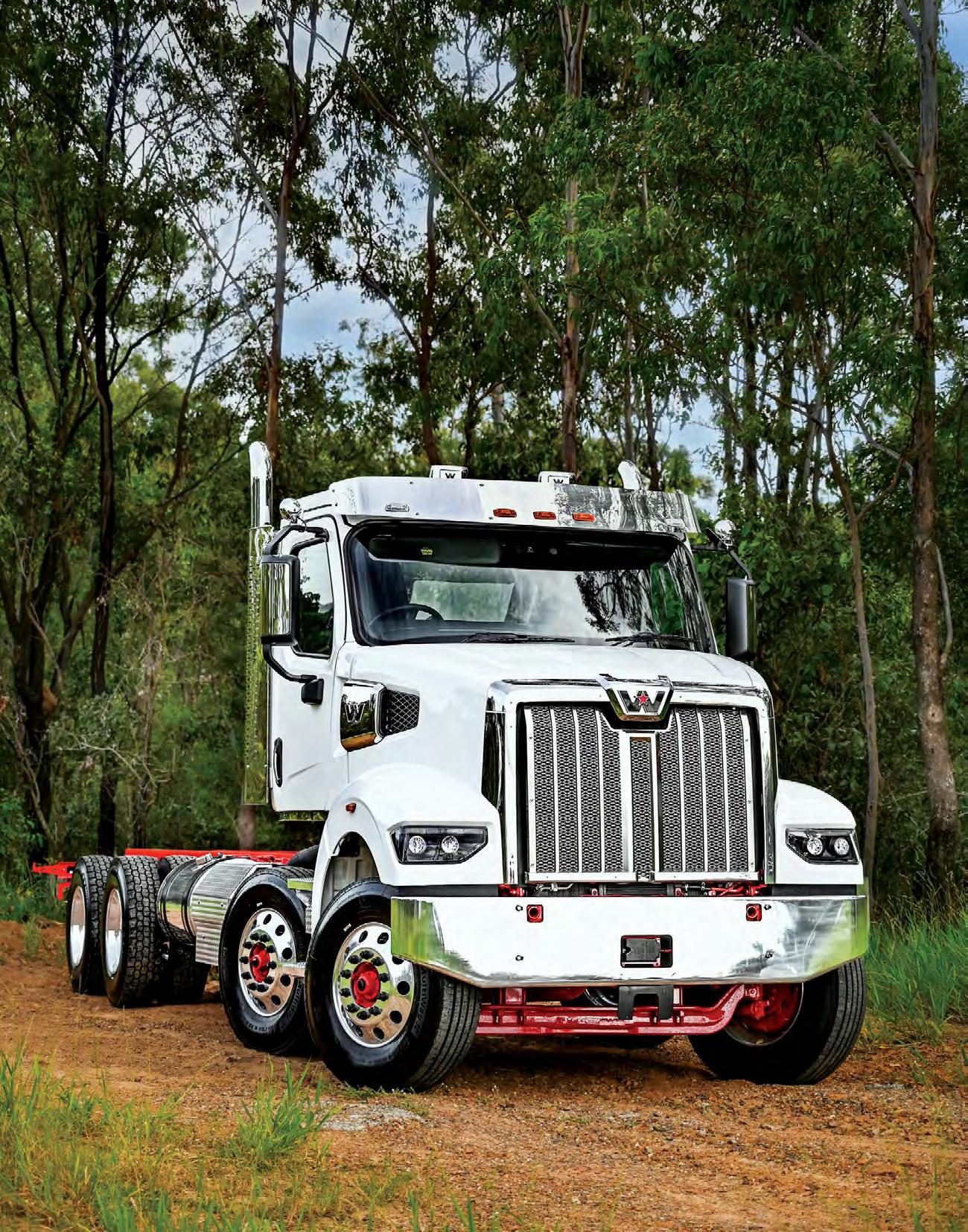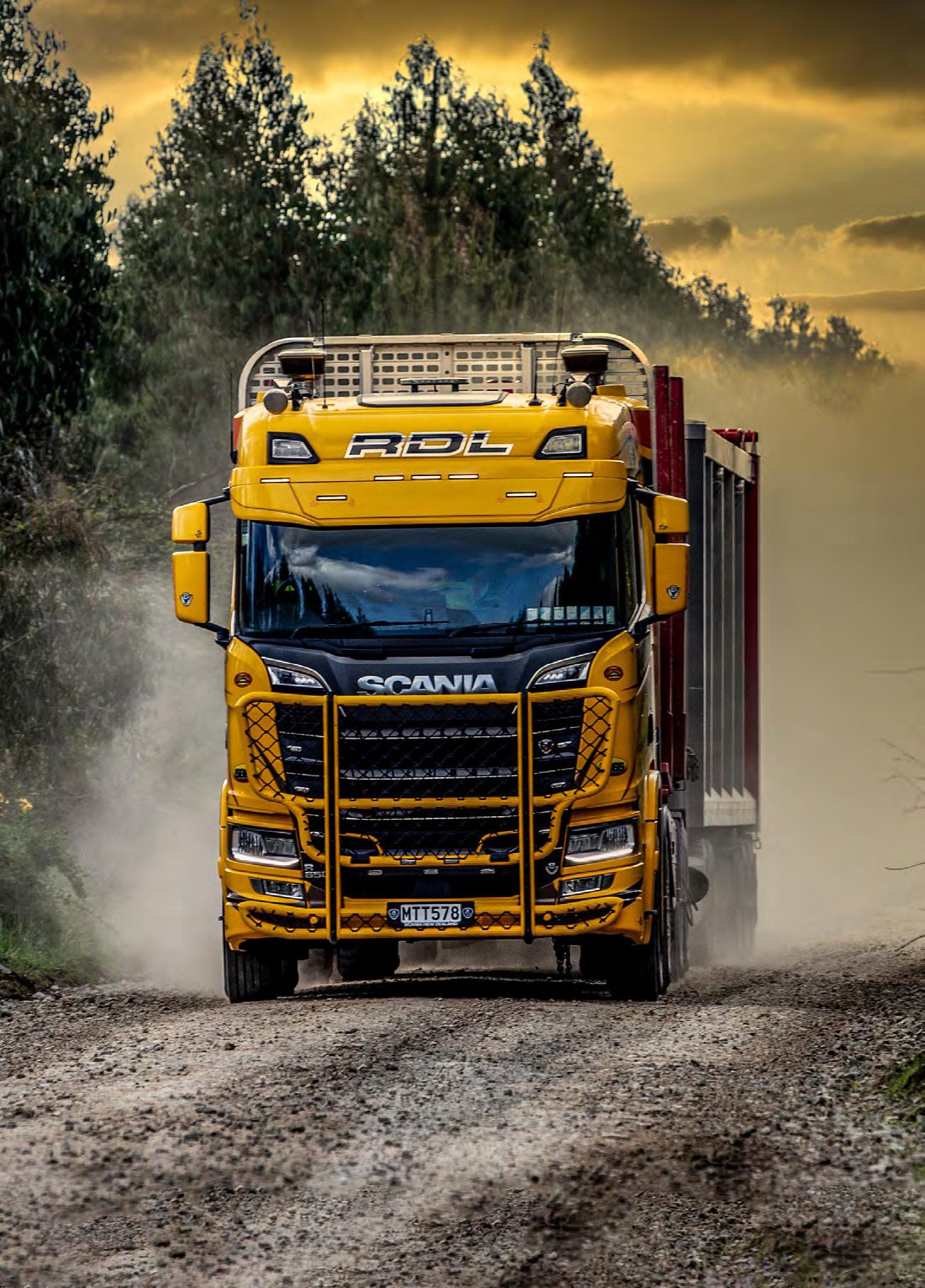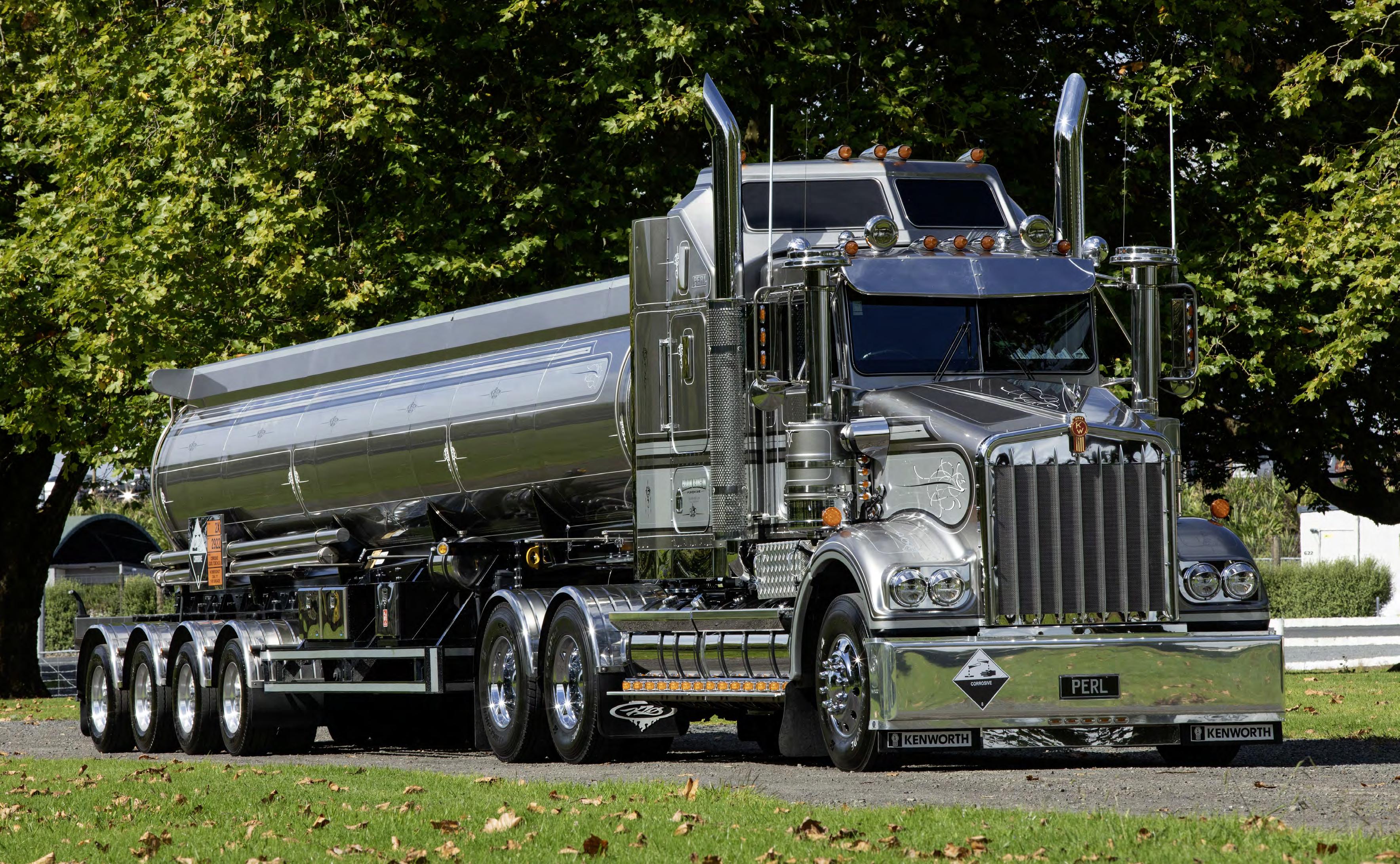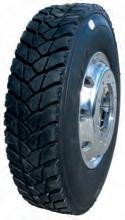


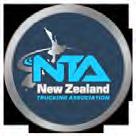















For the second year running the results are in and we couldn’t be happier. Scania has once again been voted the number one* truck brand in the country by the people whose opinion we value the most - New Zealand truckies.
We’re chuffed to have rated highest on all measures, including most preferred, comfort, safety, sustainability, performance, efficiency, service and parts. Thanks again New Zealand. It means a lot.


EDITORIAL DIRECTOR
Dave McCoid
Ph: 027 492 5601
Email: dave@nztrucking.com
EDITOR
Gavin Myers
Ph: 027 660 6608
Email: gavin@nztrucking.com
For all advertising enquiries:
ADVERTISING MANAGER
Pav Warren
Ph: 027 201 4001
Email: pav@nztrucking.co.nz
Mike Devon
Ph: 027 332 4127
Email: mike.devon@nztrucking.co.nz
Maddy McCoid
Ph: 027 336 6811
Email: maddy@nztrucking.co.nz
SUB EDITORS
Tracey Strange, Faye Lougher
EDITORIAL
Carl Kirkbeck, Craig McCauley, Shannon Williams, Russell Walsh
LITTLE TRUCKER
Shannon Williams
Ph: 021 182 4803
shannon@nztrucking.co.nz
CONTRIBUTORS
Craig
Faye Lougher
Alison Verran
Mike Verran
Andrew Geddes
Niels Jansen (Europe)
Paul O’Callaghan (UK, Europe, Australia)
Mike Williams (Australia) Will Shiers (UK)
(USA)


New Zealand Trucking magazine is published by Long Haul Publications Ltd. The contents are copyright and may not be reproduced without the consent of the editor. Unsolicited editorial material may be submitted, but should include a stamped, self-addressed envelope. While every care is taken, no responsibility is accepted for material submitted. Opinions expressed by contributors are not necessarily those of New Zealand Trucking or Long Haul Publishing Ltd. All rights reserved. This magazine is subject to the New Zealand Press Council. Complaints are to be first directed to: editor@nztrucking.co.nz with “Press Council Complaint” in the subject line. If unsatisfied, the complaint may be referred to the Press Council, PO Box 10 879, The Terrace, Wellington 6143 or by email at info@presscouncil.org.nz
Further details and online complaints at www.presscouncil.org.nz
6 months (6 issues)
One year (11 issues)
Two
1 Year Australia (11 issues) $250
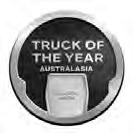
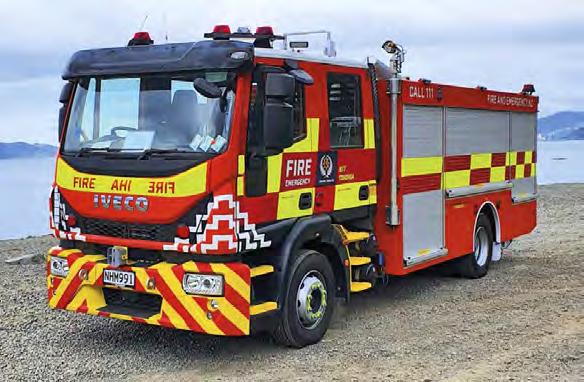
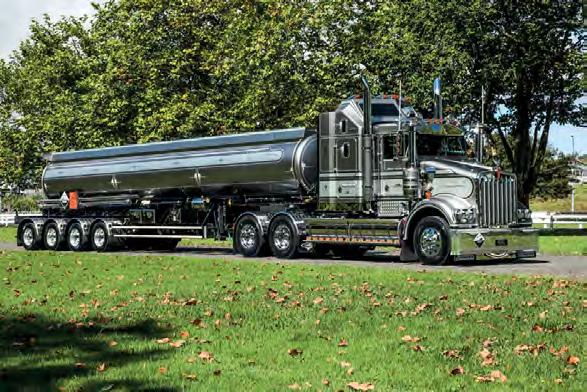
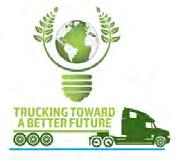

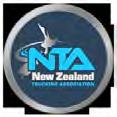

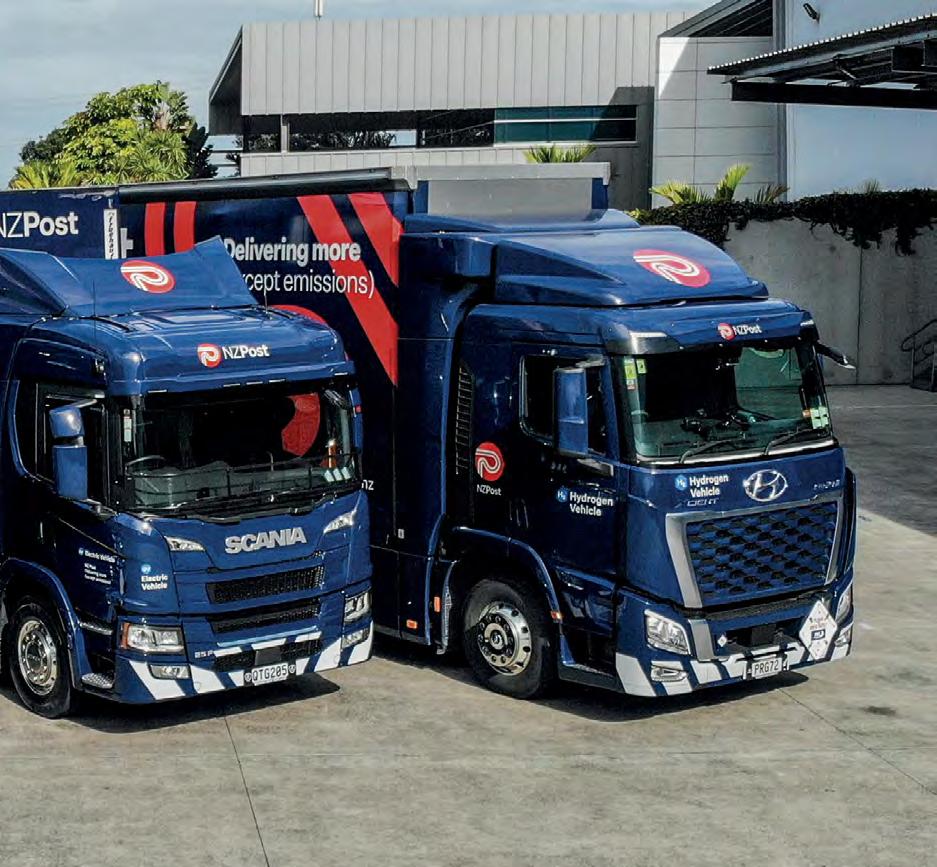

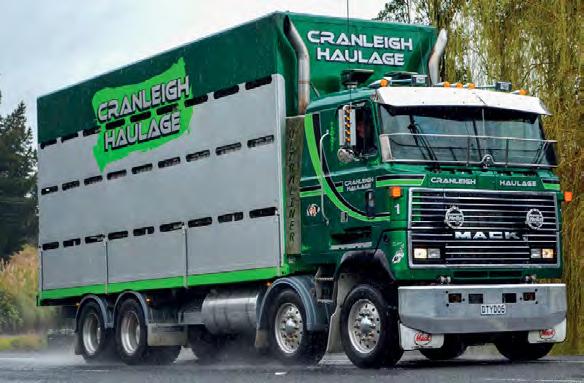


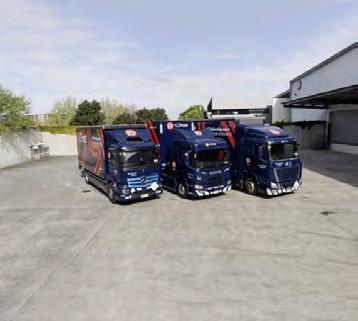



Ilive in the suburbs directly across the road from a prominent state-integrated primary school – and by ‘directly’, I mean I can walk in a straight line down my driveway, across the street and through the office building door. As you’d expect, just about the entire length of the block is a school zone with four substantial speed humps. One of these is a pedestrian crossing, installed last year when the council added a second footpath to our side of the road.
Each day, I watch motorists navigate these humps. I watch parents take over the surrounding streets, dropping off and fetching their kids, and I watch pedestrians walk up and down. Each day, numerous drivers will hit the speed humps so hard and fast that they bottom out their cars or give serious airtime to whatever flotsam is in the back of their ute, and more parents and kids will just cross the road at will than walk along the path to the new crossing.
As with any other city, Tauranga has a plethora of cycle paths and lanes. Having cost many millions to install over
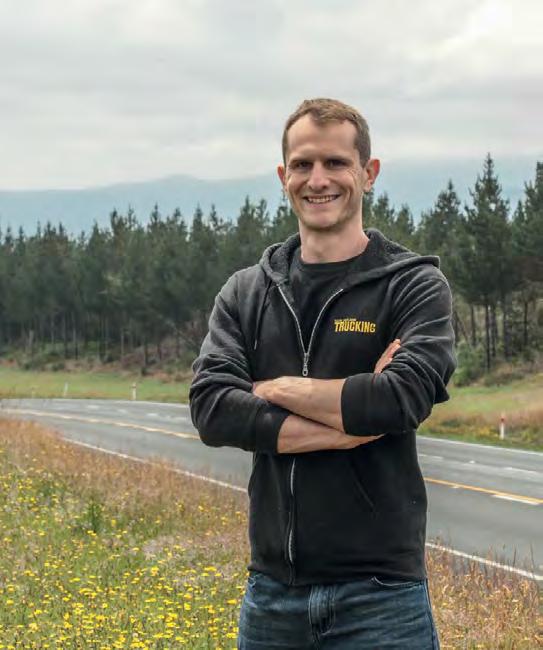
the years, they serve a good purpose. I use them myself when I fancy a pedal, and I know one person personally who rides his bike 5km to work and back every day. Sadly, I doubt the same can be said for other residents, some of whom clearly feel they shouldn’t be restricted to their special lanes while most others seemingly have no desire for that mode of transport – such is the overwhelmingly barren state of those paths and lanes.
I share these observations in the wake of last month’s 2024 National Land Transport Programme release. As expected, the coalition government has done what it promised it would and prioritised investment in roading infrastructure. Of the $32.9 billion total, basic calculations reveal about $18.4 billion relate directly to road maintenance and improvements, $6.4 billion has been allocated to public transport, $460 million to footpath and cycleway improvements and $1 billion to rail. The rest consists of road policing and safety ($1.7 billion), weather event recovery, resilience and climate response, debt repayments and so on.
You can find the full details
on page 15 and, as you’ll read elsewhere in this issue, our own industry has praised the plan. But, as expected, the opposition, academics and interest groups have bemoaned the priority being placed on road infrastructure while the likes of cycleways and rail have had their allocations slashed. This will drastically, negatively, impact on things like vehicle emissions and pedestrian safety, they say.
While everyone’s entitled to share their opinions, I feel it necessary to counter that for the better part of a decade, the shoe has been on the other foot. As my opening anecdotes illustrated, it’s seemingly made little difference, while the rest of our roading infrastructure has suffered for it.
From my own humble, everyman point of view, yes, it’s about time investment went back to roading infrastructure. We’ve said before it is as much about safety and efficiency as anything else. It means all road users, from commercial and public transport vehicles to private motorists in gas-guzzling V8s to EVs or motorcycles, can complete their journeys more quickly, easily and safely with

reduced fatigue and wear and tear to their vehicles. And, in the case of commercial vehicles, that means avoiding unnecessary costs being passed on to consumers brought about by premature repairs and increased diesel consumption.
Further, yes, investment in public transport systems is good (and we have $6.4 billion worth of it here), but we certainly don’t need a further proliferation of cycleways and speed humps right now. If anything, we need increased spending and effort on education and enforcement, encouraging and incentivising people to use these facilities properly and obey the road rules, and penalising them when they don’t. And that all starts every morning when we take our kids to school and lead by example by doing something as simple as crossing the street.
Gavin Myers Editor


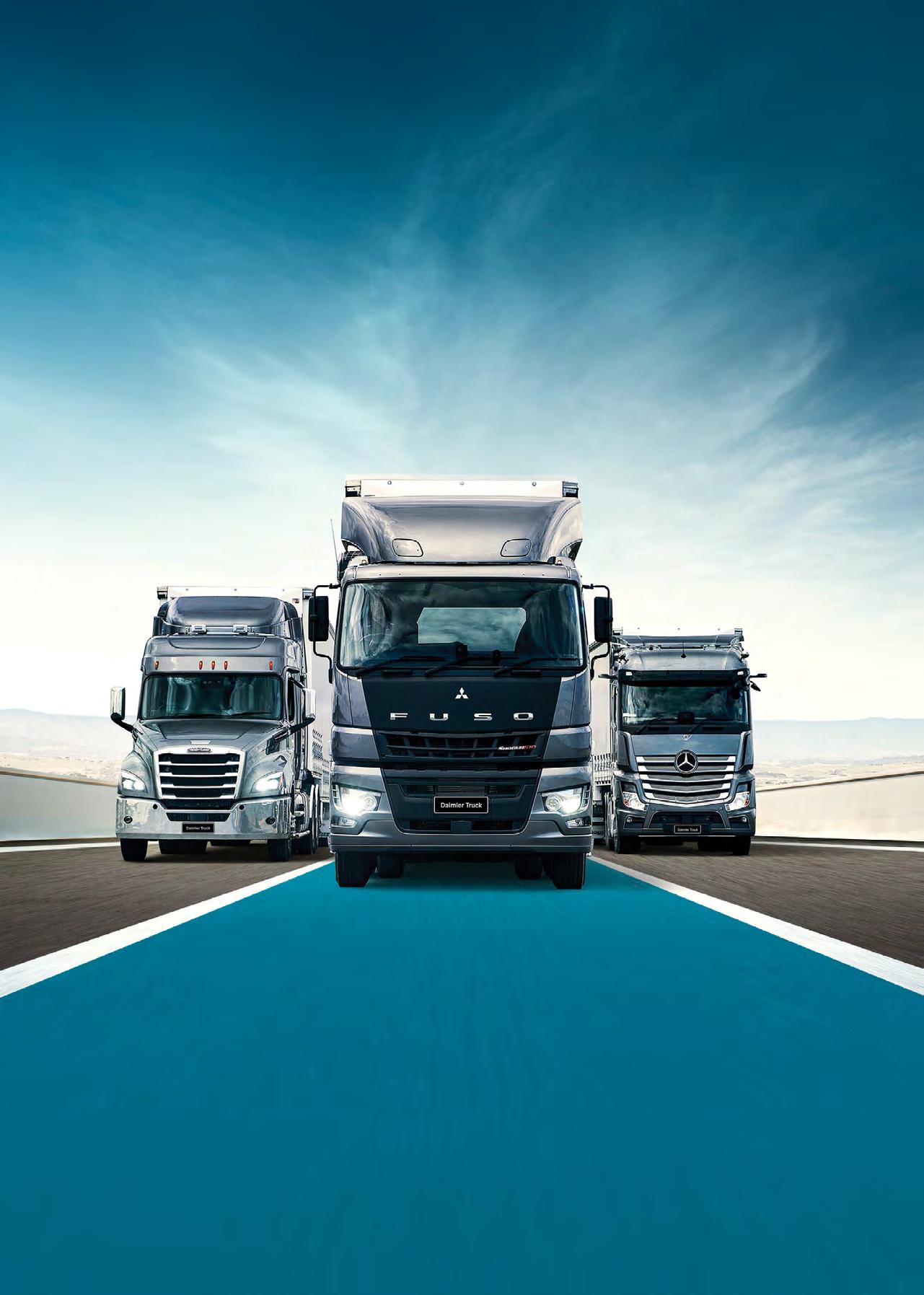
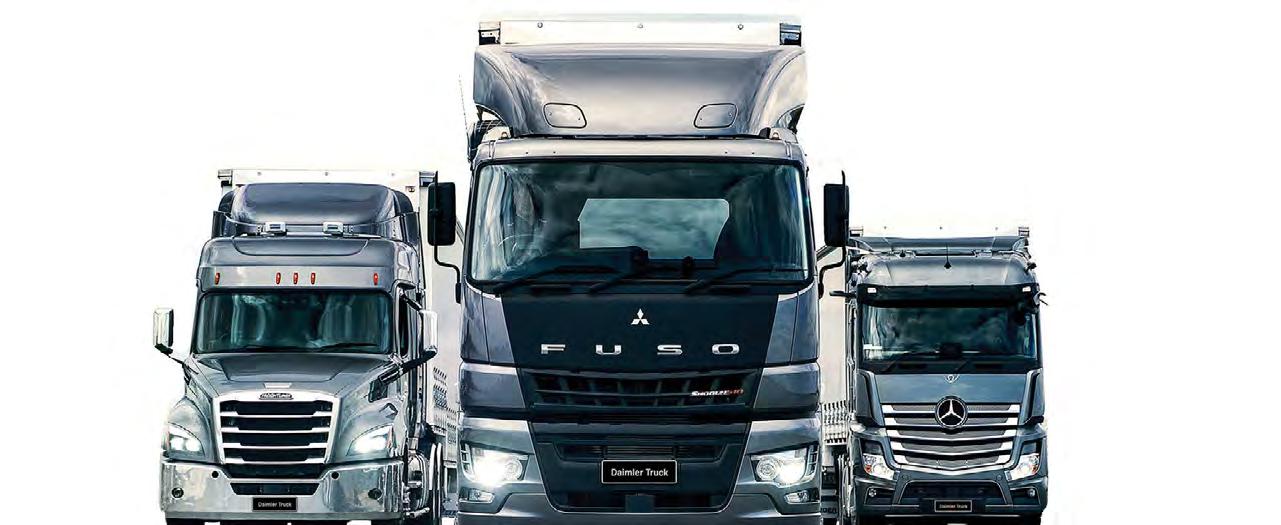



The Scania R540 No Bad Days, owned by Kane and Tamara Scott’s family business Scott Carrying Company, has won the 2023-2024 John Murphy Memorial Top Truck of the Year competition.
After a month of public voting on the New Zealand Trucking website, the Scania emerged victorious in a closely fought competition, with the top three voted separated by just a couple of hundred votes out of the
4800 total.
“That’s very humbling, we’re very, very happy with that. It’s definitely a credit to the guys who drive it every day; they keep it in pretty shipshape form,” says Kane Scott.
No Bad Days operates out of Kaiapoi moving refrigerated product between Christchurch and Auckland, so is often seen throughout the country. “Thank you to everyone who put a vote our way and all the sponsors in the competition,” Kane adds.

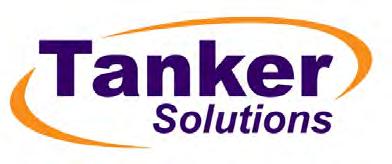

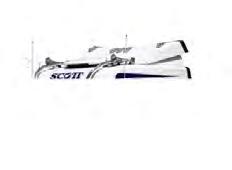

As ever, the Top Truck of the Year competition is supported by Power Retreads, which will award Kane a set of premium Vipal retread tyres. Rochelle Thomas of Auto Art by Rochelle will also produce a bespoke painting of the winning truck based on the Top Truck poster that appeared in the December 2023/January 2024 issue.
These prizes, along with the 2023-2024 John Murphy Memorial Top Truck of the Year plaque – awarded in memory

of the former editor of New Zealand Trucking magazine –will be presented to Kane and Tamara in the coming weeks. Look out for that report in an upcoming issue.
Congrats to the Scotts and No Bad Days, and well done to all the other trucks that were in this year’s competition. And thank you to everyone who voted this year for supporting the competition.
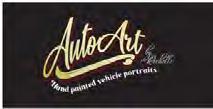
We specialise in the design, manufacture, and maintenance of all classes of tankers and trailers for fuel and dry bulk goods.
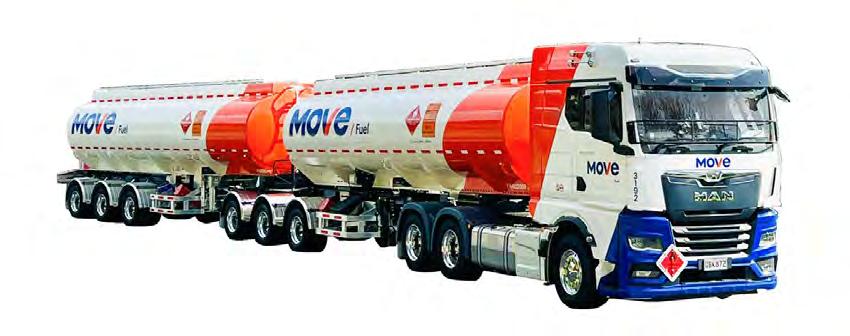



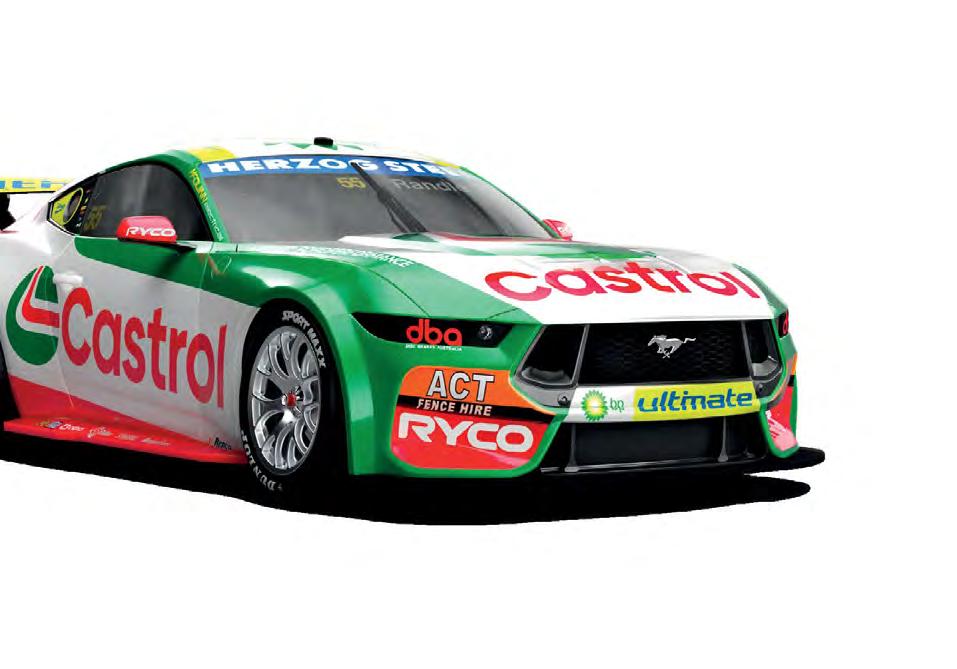

Tickford Racing trusts Castrol fluids in its supercars and transporters. When performance matters, trust Castrol in your trucks.

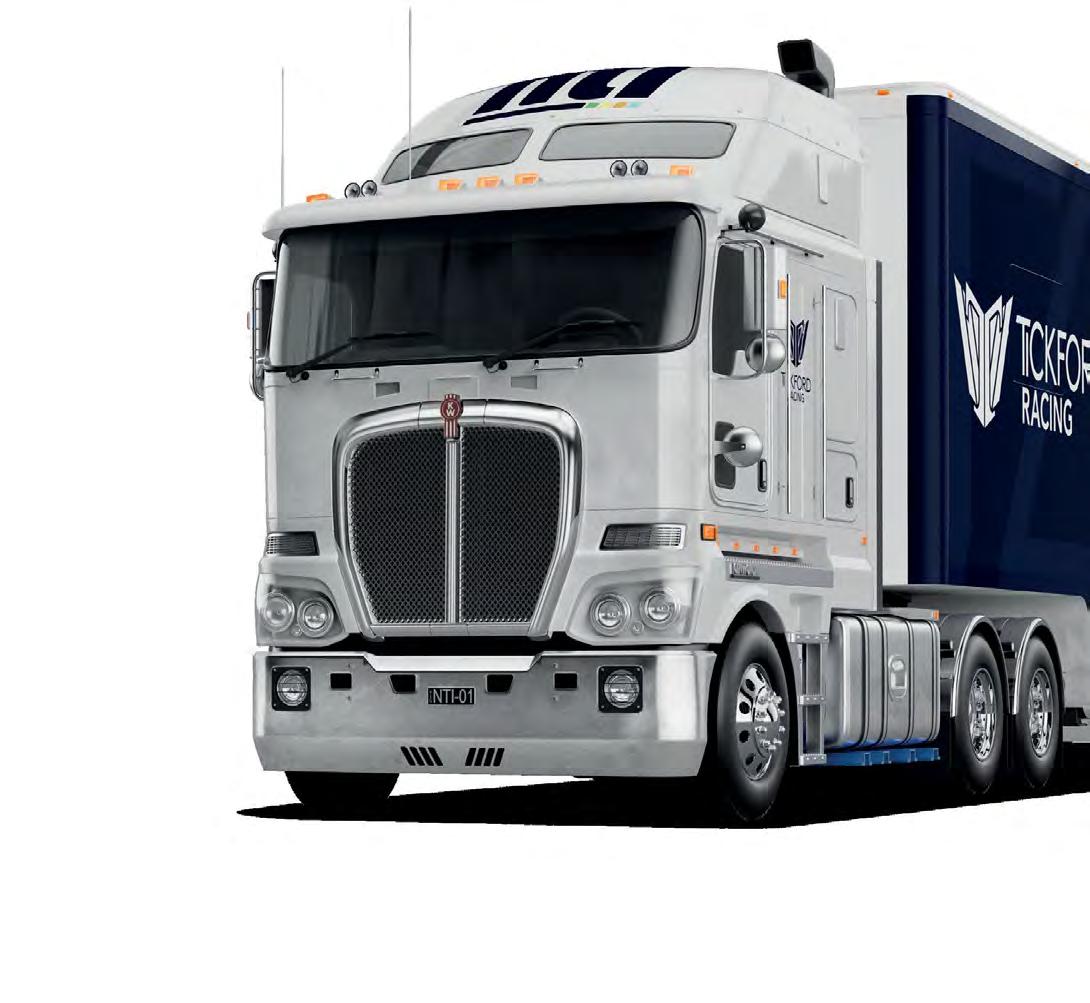
The eActros 600 from Mercedes-Benz Trucks has been voted International Truck of the Year 2025 by a jury of 24 editors and senior journalists from the commercial vehicle press, representing 24 of Europe’s most important truck magazines.
The prestigious award was presented to Karin Rådström, CEO of Mercedes-Benz Trucks, during the IAA Transportation press day in Hanover, Germany, in September.
With 88 votes, the German truck manufacturer’s heavy-duty battery electric vehicle (BEV) beat stiff competition from Volvo Trucks’ Aero range with electric or conventional powertrains and the Iveco S-eWay electric tractor.
It is the second time an electric
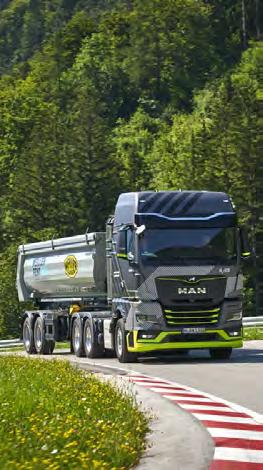
truck has won the International Truck of the Year Award, which dates back to 1977. In addition, five of the seven vehicles on this year’s IToY shortlist are batteryelectric models with zero tailpipe emissions.
“This is another sign that the energy transition is gaining momentum among truck manufacturers and is attracting the interest of European transport operators,” says the International Truck of the Year (IToY) jury.
According to the IToY rules, the annual award goes to the truck launched in the previous 12 months that makes the most significant contribution to road transport efficiency. The judging is based on a number of critical criteria, including technological
innovation, comfort, safety, driveability, energy efficiency, environmental footprint and total cost of ownership (TCO).
The numerous IToY journalists who participated in the more than 15,000km eActros 600 European Testing Tour 2024, organised by Mercedes-Benz Trucks, praised the new ProCabin’s advanced aerodynamics. With its protruding front section and smooth, curved surfaces, the ProCabin is designed to improve airflow by 9% compared with the current model.
The IToY journalists appreciated the powertrain’s performance, based on twin 400kW electric motors on the electric axle and three LFP battery packs of 20 kWh each. This powertrain provides
smooth acceleration with three different driving programmes in a quiet, vibration-free working environment.
As the IToY judges witnessed, with more than 600kWh of installed capacity, a standard 40-tonne tractor-semitrailer combination can achieve a range of more than 500km without intermediate recharging.
Summing up the jury’s vote, International Truck of the Year chairman Gianenrico Griffini said, “Mercedes-Benz Trucks designed the eActros 600 as an electric truck right from the start. This decision has put a state-of-theart BEV on the road capable of fulfilling a wide range of longhaul missions.”
The MAN hTGX – a heavy-duty truck with a hydrogen combustion engine – has won the 2025 Truck Innovation Award. The International Truck of the Year journalists presented Alexander Vlaskamp, CEO of MAN Truck & Bus, with the prestigious award during the IAA Transportation press day in Hanover.
Following the inaugural Truck Innovation Award in 2019 in recognition of the aFAS Level 4 automated driverless safety truck and the ATLAS-L4 and ANITA autonomous driving projects in logistics operations in 2023, this is the third time MAN Truck & Bus has won this trophy.
The Truck Innovation Award, created by the International Truck of the Year (IToY) jury, recognises excellence in advanced transport solutions. The IToY group comprises 25 commercial vehicle editors and senior journalists, representing major trucking magazines from Europe and South Africa.
With 84 votes, MAN’s hTGX beat off competition
from Renault Trucks’ Oxygen – a prototype distribution truck – and Iveco’s S-eWay Fuel Cell (FCEV), a zero-emission electric long-distance vehicle.
During a road test in Saalfelden, Austria, IToY journalists praised the hTGX’s diesel-like performance and driveability, delivered by MAN’s 16.8L H4576 in-line, six-cylinder, spark-ignition hydrogen engine.
The International Truck of the Year judges also praised the heavy-duty truck’s near-zero carbon footprint, the range of around 600km provided by the 56kg, 700-bar hydrogen tanks and the simplified after-treatment system.
Summing up the jury’s decision, Gianenrico Griffini, chairman of the International Truck of the Year, said, “MAN’s hTGX opens a new chapter in decarbonising road transport. It can be the vehicle of choice for heavy-duty applications, such as in the construction sector, in challenging climatic conditions.”








Keith Andrews has begun trading in new dealerships in Christchurch, Tīmaru and Dunedin, becoming the nationwide sales dealer for Daimler Truck’s MercedesBenz, Freightliner and FUSO commercial vehicle brands.
Prior to 12 September, Keith Andrews represented MercedesBenz Trucks, Freightliner and FUSO in the North Island, and CablePrice represented the three brands in the South Island.
To deliver all New Zealand customers the full benefit of the general distributor appointment, Keith Andrews Holdings and CablePrice have now reached agreement on the sale and acquisition of selected South Island Daimler Truck dealerships.
Keith Andrews Trucks will now
begin trading at CablePrice’s 29 Waterloo Road, Christchurch, truck dealership together with sites in Tīmaru and Dunedin. CablePrice’s dealerships in Nelson, Greymouth and Invercargill will maintain their Daimler Truck service and parts status.
The Keith Andrews truck sales team will be located across the South Island, making Keith Andrews the nationwide sales dealer for Daimler Truck’s Mercedes-Benz, Freightliner and FUSO commercial vehicle brands.
The established South Island sales team have all joined Keith Andrews, including Andrew Buschl based in Nelson, Wayne Byrnes and Theo Ferreira in Christchurch, Hamish Stonehouse in Tīmaru, and
Tristan Duffell in Dunedin and Invercargill.
“The CablePrice team has achieved great success with FUSO in particular and been an integral part of market-leading truck and bus sales efforts in the past three years,” said Keith Andrews Holdings executive director Kurtis Andrews.
“It has been a very busy time, and without doubt, it has been a pleasure to meet the teams in Christchurch, Tīmaru and Dunedin over the past months. Despite the distractions of the purchase process, it’s heartening that everyone has remained highly committed and focused on the job of keeping Daimler Truck customers moving,” he said.
“While we welcome the truck teams in Christchurch, Tīmaru
Our 100 year history proves that when you do everything with heart, nothing is too heavy. Mitsubishi from Centra, moving New Zealand forward.
You can hire a Mitsubishi Forklift on a fixed term hire contract, maintenance included on terms from day to day right up-to 7 years
• New or Used, ex fleet forklifts available
• Huge range to choose from
• Delivery within 24hours

Auckland - 32 Hastie Avenue, Māngere Bridge, Ph: 09 634 8500 Hamilton - 38a Maui Street, Ph: 07 849 5128
Tauranga - 12/45 Kaweroa Drive, Tauriko, Ph: (07) 282 9910 Palmerston North - 25 Bisley Street, Ph: 06 355 9033 Christchurch - 38a Parkhouse Road, Ph: 03 343 6814
and Dunedin, we are thrilled by the prospect that CablePrice will continue to provide fantastic customer support in the mainland in Nelson, Greymouth and Invercargill.”
CablePrice NZ managing director Aidan Mahony added, “I am extremely proud of what our team has achieved since becoming the South Island dealer for Mercedes-Benz, Freightliner and FUSO trucks, and I believe all customers will benefit from having a New Zealand-based and focused general distributor.”
Andrews and Mahony said Keith Andrews Holdings and CablePrice aim to maintain all existing operations to ensure a smooth transition and a high level of customer support.
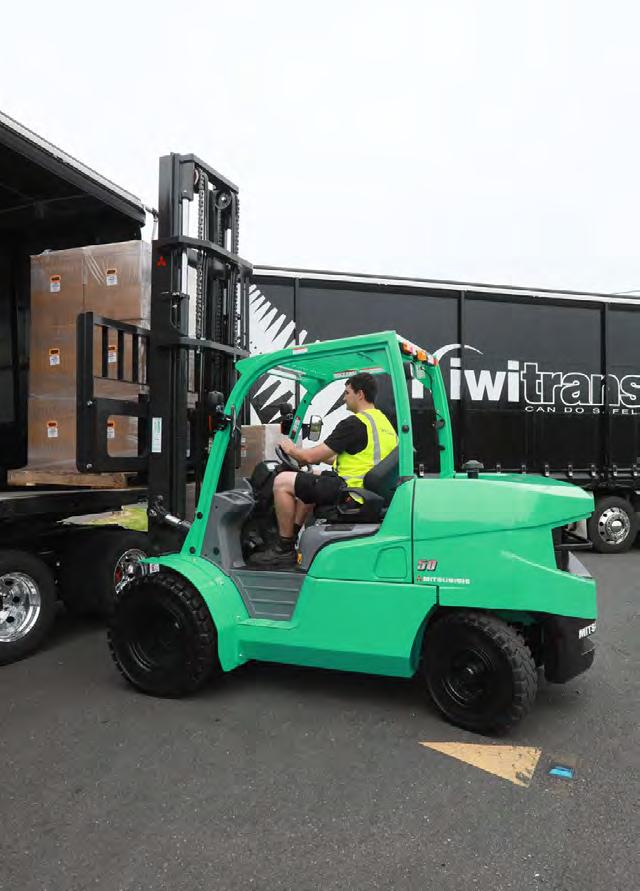

Here’s proof that getting to where you want to be is always better with an understanding of what the destination looks like, a map, and the right vehicle. In the wake of the industryled HARMfree Transport and Logistics workplace safety and wellbeing initiative achieving 300 sign-ons representing 80,000 workers, programme manager John Sansom has taken it on the road.
“HARMfree is now a significant community linked via a common and effective application, all at different stages along their journey, and all communicating and collaborating. It’s time to get those people together and network, continue to build relationships, share ideas, and
experiences. They are making a difference.”
Following on from the initial meeting in Christchurch, 36 participants from the Auckland region met in Manukau on 28 August for a review, coaching, and networking event.
Kelly McLuckie, senior consultant in New Zealand and Australia for programme partner Success Formula, was present and spoke about good work design, perspective and cultural change in the transport and logistics industry when looking at harm prevention.
HARMfree Connect webinars and additional in-person events will round out the rest of 2024, with plans to continue the series early in the new year. To stay updated, sign up for HARMfree or follow them on Facebook or

HARMfree is a collaborative industry-led application aimed at improving workplace safety, and worker wellbeing in transport and logistics. The initiative is led by the New Zealand Trucking Association, in collaboration with National Road Carriers, Success Formula, Fit For Duty, and AutoSense.
The recipient of funding assistance via an ACC Workplace Injury Prevention grant, HARMfree provides an online step-by-step pathway for small and medium sized businesses looking to make meaningful positive change in the area of harm prevention and cultural change.
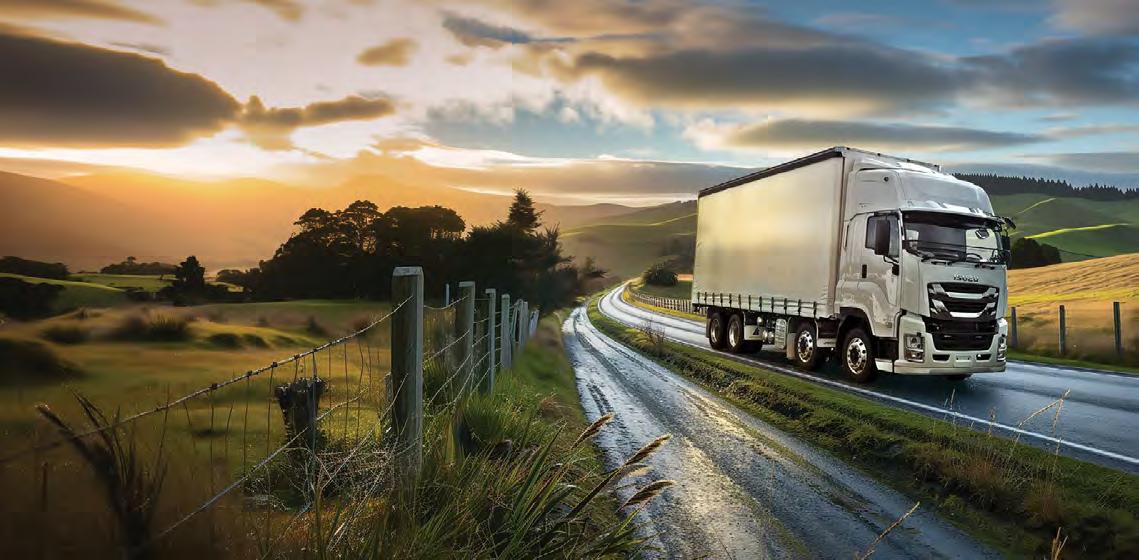
Scania has sold 50 heavy trucks to Hall’s Group in one year – a record volume of sales to a single customer in Scania NZ’s five-year history.
The 20 Scania G560 Super 8x4 tractor units, delivered last month to Hall’s, come within 12 months of Hall’s also buying 30 V8s from Scania.
Hall’s transport operations GM, Damon Bryant, said as a fleet operator in New Zealand, Hall’s Group understands its role to help reduce emissions within the sector.
“With these Scania G560 Supers, the business will continue its relentless focus on road safety and fuel efficiency in order to make a difference,” he said.
Scania’s national key account
and sustainable solutions manager Craig Pepperell said the G560 Supers represent the latest in fuel efficiency as well as the usual full suite of Scania safety features.
“The Super’s six-cylinder platform is fully Euro-6 compliant and designed for optimum fuel efficiency and CO2 reduction,” he said.
“They are a stepping stone in the transition towards greater sustainable transport solutions, and it’s very satisfying to see a major industry player like Hall’s Group see the merit in this fantastic Scania product.”
Scania NZ managing director, Victor Carvalho, said the scale of these successful consignments to Hall’s Group is testament to the customer-first mindset and
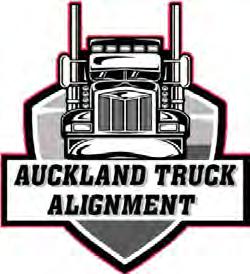
• Truck & Trailer Wheel Alignments
• Long wheel base vans / heavy vans and motorhome wheel alignments
• Tyre sales and fitting
• Induction heating and straightening of bent trailer axles and diff housings
• On & off truck wheel balancing
• Axle Camber Corrections

Group; Victor Carvalho, managing director Scania New Zealand, and Steve Koekemoer, chairman of the board for Hall’s Group.
strategy that Scania NZ has focused on in recent years.
“Growing our network of service centres and branches around New Zealand to a total now of 23, as well as an unrelenting prioritisation on after-sales parts and servicing, gives confidence to operators of large nationwide fleets like Hall’s Group,” Carvalho said.
“They need to know their vehicles can be serviced effectively and efficiently wherever they are around the
country. They have that surety with Scania.”
Scania NZ still has another service centre to come online this year in Hastings, with a further three or four more planned in the next three years, along with refurbishment plans for existing sites.
“We also hope to announce a strategic property acquisition soon, with an eye to futureproofing our service centre network even more,” he said.
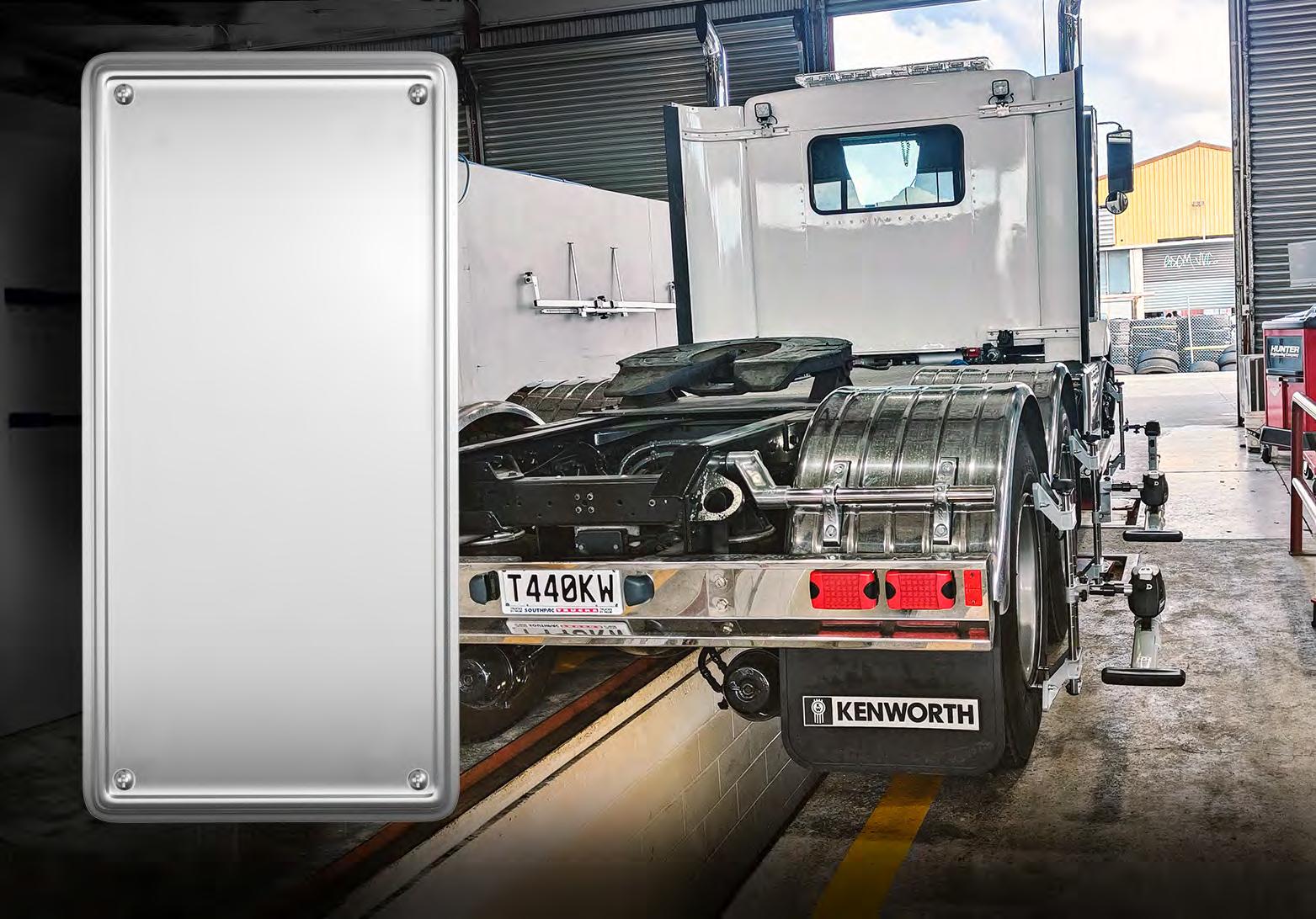
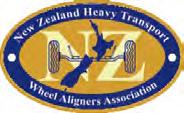
The Government has unveiled the next three years of transport projects, worth $32.9 billion.
Of that, $23.6 billion will come from the National Land Transport Fund, $5.8 billion from councils’ rates, and additional Crown investment.
The plan was developed by the NZ Transport Agency Waka Kotahi in line with the Government Policy Statement on Land Transport finalised in June.
Transport Minister Simeon Brown said the National Land Transport Programme will create a more reliable and efficient transport network that boosts economic growth and productivity.
The programme has four key priorities:
• Delivers on the coalition
agreements to reintroduce the successful Roads of National Significance (RoNS) programme, with a pipeline of 17 RoNS across the country
• Gets back to basics, focusing on maintenance and pothole prevention to reduce the number of potholes on our roads
• Supports reliable public transport services and delivers four new major public transport projects to increase travel choices in our main cities
• Ensures councils are doing the basics brilliantly, with increased pothole prevention, reduced funds for cycleways, and no funds for speed bumps.
Walking and cycling
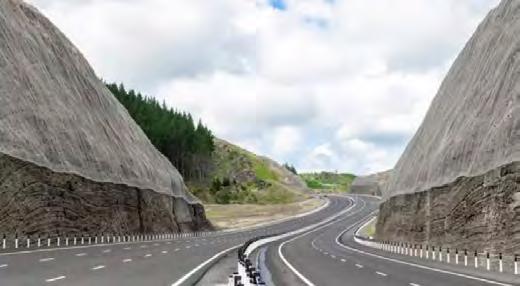
improvements, which goes towards helping councils build new cycleways, has been almost halved from $910 million in the 2021-2024 programme to $460 million – a large cut when factoring in inflation that has occurred in that time. Rail has also been cut from $1.3 billion in the last plan to $1 billion in this one.
Auckland is a big winner, getting about a quarter of the funding at $8.4 billion. The plan will see $7 billion going towards building additions to the state highway network, including the 17 new Roads of National Significance (RoNS) promised by the National Party during its election campaign.

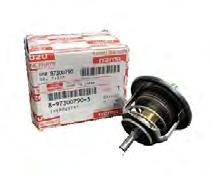

Roadrunner Manufacturing is marking its 50th anniversary this year.
Founded in late 1974 in Bulls, Roadrunner Manufacturing has come a long way from its humble beginnings. Today, it has expanded its offerings from standard diesel tanks and aluminium toolboxes to a comprehensive range of products and services, including air tanks, hydraulic oil tanks, and highly specialised custom projects.
The company’s success is attributed to its commitment to quality, a broad base of valued customers, and an exceptional team of skilled professionals.
General manager Nick Webster credits the dedication of Roadrunner’s team of 25 staff, including welder fabricators, water jet technicians, and sales personnel, for the company’s sustained success.
“They have definitely helped us through all the peaks and troughs of the last wee while,” Webster stated.
While the company prides itself on its historical achievements, it is also looking towards the future. A testament to Roadrunner’s commitment to innovation is the recent acquisition of a robotic welding system and the establishment of Precision Machine Technology
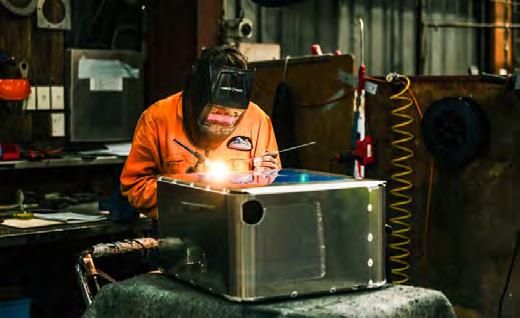
(PMT), a sister company born from Roadrunner’s distributorship of OMAX abrasive water jet systems.
“They thought we would saturate the market with about eight to 12 water jet systems,” Nick says. “But with New Zealand’s No.8 Wire tradition of ingenuity, we have just cracked over 100 machines that are now being operated by manufacturers, makers, designers, innovators, and thinkers across the country. It has been a massive success.”
This expansion signifies
Roadrunner’s push towards technological advancement to meet the evolving needs of the market.
As it celebrates its 50th anniversary, Roadrunner Manufacturing acknowledges the significant contributions of its former owners, shareholders, and the strong community around them. The company looks forward to continuing its legacy and ensuring Roadrunner remains a symbol of quality and reliability in New Zealand’s manufacturing landscape for years to come.

Our Low Rider chassis has been refined over many years with safety and stability in mind. With your load lower to the road, you can be assured your drivers are safer and loading is easier. Mills-Tui’s industry-leading, 5 years/1,000,000 km chassis warranty finishes the job off nicely. If you want a trailer that is innovative and built to last, call 0800 MILLS-TUI
Heavy Vehicle & Machinery Services (HVMS) has partnered with Canadian company Diesel Tech Industries to establish installation facilities for the Guardian Hydrogen Diesel System.
The initiative marks a significant step towards advancing sustainable solutions within New Zealand’s heavy transportation sector.
The Guardian Hydrogen Diesel System, developed by Diesel Tech Industries, is internationally recognised, and represents a cutting-edge dualfuel technology designed to lower emissions and enhance operational efficiency in dieselpowered vehicles.
HVMS will leverage its expertise in procurement, installation, and compliance to support New Zealand companies in transitioning to cleaner transport solutions through vehicle conversions and educational initiatives.
“Having the industry-leading Guardian Hydrogen Diesel System commercially available to our New Zealand and Australian customers is a game-changer, allowing fleet owners to continue to utilise their existing
diesel-powered assets whilst making solid steps towards decarbonisation,” said Mark Irving, business development manager at HVMS.
“Hundred per cent hydrogen OEM vehicles are still some years away with respect to suitable supply and affordability, making the Guardian Hydrogen Diesel System a viable and prudent dual-fuel product for today, helping cut diesel use and reduce emissions,” he said.
Scotty Hale, HVMS director, said the concept of dual fuel appears to be resonating the best with heavy fleet owners.
“With hydrogen now commercially available since May 2024, the timely emergence of the DTI hybrid solution throughout New Zealand will be a game-changer, offering affordable solutions for companies as they continue their important decarbonisation journey,” he said.
HVMS is poised to accelerate the adoption of the Guardian Hydrogen Diesel System through its comprehensive service offerings, encompassing installation, integration and training.


Trust Ixom and SCR for dependable AdBlue supply in NZ. Contact us at sales@scrsolutions. co.nz or 0800 145676 for all your bulk, packaged, and dispensing equipment needs. Reliable, secure solutions when you need them 24/7.
UD Trucks has appointed Zane Erwee as its new retail sales manager.
Joining the team in mid-2024, Erwee’s role focuses on the growth of the UD Trucks retail business and leading the UD Truck sales team operating in the North Island.
Starting his career in 2007 in South Africa, he has sold trucks and managed sales teams over the past 17 years. He has been a sales manager for both Fuso Trucks and Freightliner, and then moved to the South African UD Trucks dealership, under the Imperial group.
Zane relocated to New Zealand with his wife and two daughters in 2019 and worked
for NZ Trucks. Most recently, he has been working for a leasing company, managing truck and equipment maintenance and aftersales.
“We are very pleased to welcome Zane to the UD Trucks team. His extensive experience and knowledge of the product will add immense value to our loyal customers and to the rest of the team,” said Colin Muir, UD Trucks general manager.
“I chose this role,” says Zane, “not only because of my experience with UD Trucks, but also because the product is fantastic. I can easily stand behind its capability and performance. UD is a brand that I am passionate about.”


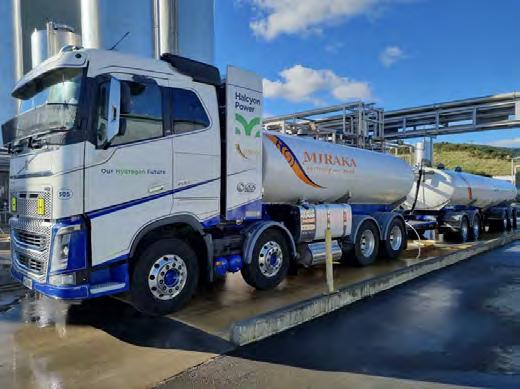
Taupō-based dairy processing company
Miraka has launched New Zealand’s first green hydrogen dual-fuel milk collection tanker.
The initiative is part of the company’s kaitiakitanga objectives and is expected to achieve a significant reduction in milk collection transport CO2 emissions – a key goal for the dairy company. The Miraka dairy plant already has one of the world’s lowest manufacturing carbon emissions footprints, emitting 92% less CO2 than traditional coal-fired dairy factories.
The FH16 700 Volvo green hydrogen-diesel dual-fuel milk collection tanker is the first of its kind for milk collection here. It will cover approximately 165,000km annually and has the capacity to haul 58 metric tonnes and requires two hydrogen refills daily.
Chair of Miraka, Bruce Scott, said the truck’s introduction marked another significant milestone for the company.
“This new vehicle aligns with our founders’ kaitiakitanga vision and values and our commitment to environmental care, supporting Aotearoa New Zealand’s transition to a


ENTER NOW TO BE IN TO WIN A PAIR OF PETERSON’S SUN GLASSES


low-carbon future,” he said.
Miraka CEO, Karl Gradon said although hydrogen-powered vehicles were still an emerging technology, Miraka believed green hydrogen represented the most environmentally appropriate energy source for heavy freight.
“Our green hydrogen dualfuel tanker is designed to reduce milk collection CO2 emissions by approximately 35% per vehicle, benefitting te taiao, the environment and our community,” he said.
Miraka, Central Transport and Halcyon Power entered into a partnership a year ago, establishing a rural hydrogen hub, which Gradon said one day could be expanded nationwide.
Tūaropaki Trust, a cornerstone shareholder in Miraka, provides geothermal energy and steam for the Miraka dairy plant through its Mokai Power Station. Under a joint venture partnership with Japan’s Obayashi Corporation, Tūaropaki established Halcyon Power, Aotearoa’s first commercial-scale green hydrogen plant. Halcyon will supply the green hydrogen for the new tanker from its facility, adjacent to the Miraka dairy plant.
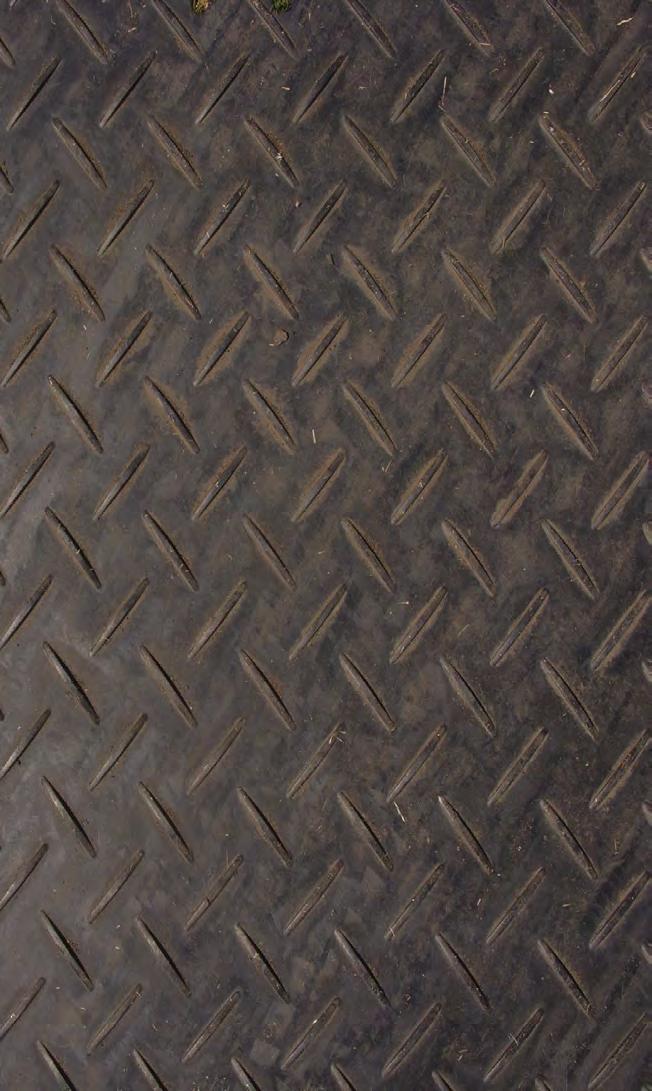
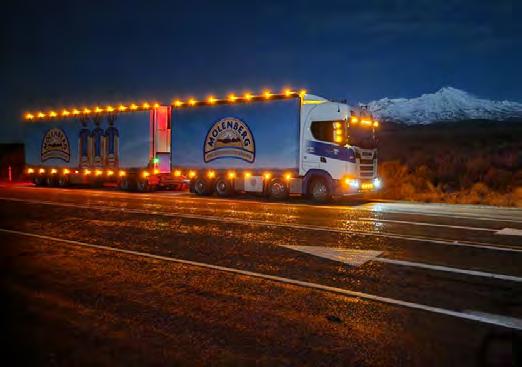
Our winning photo this month is from Josh Piggott who snapped this beaut 2023 Scania 770 on the desert road at a chilling -1 degree night for Douch Transport Ltd, based in Rotorua. It carts bulk groceries from Auckland to Palmerston North for Progressive, then loads milk from Longburn to Tauranga 6 days a week. Nice shot Josh.
Send your best night bling photo as well as contact details into nightmoves@nztrucking.co.nz to enter

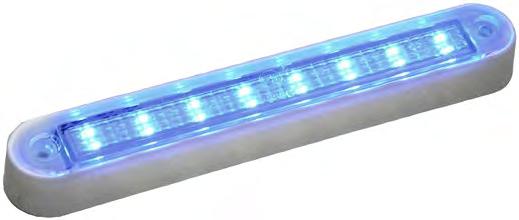
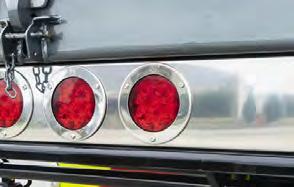



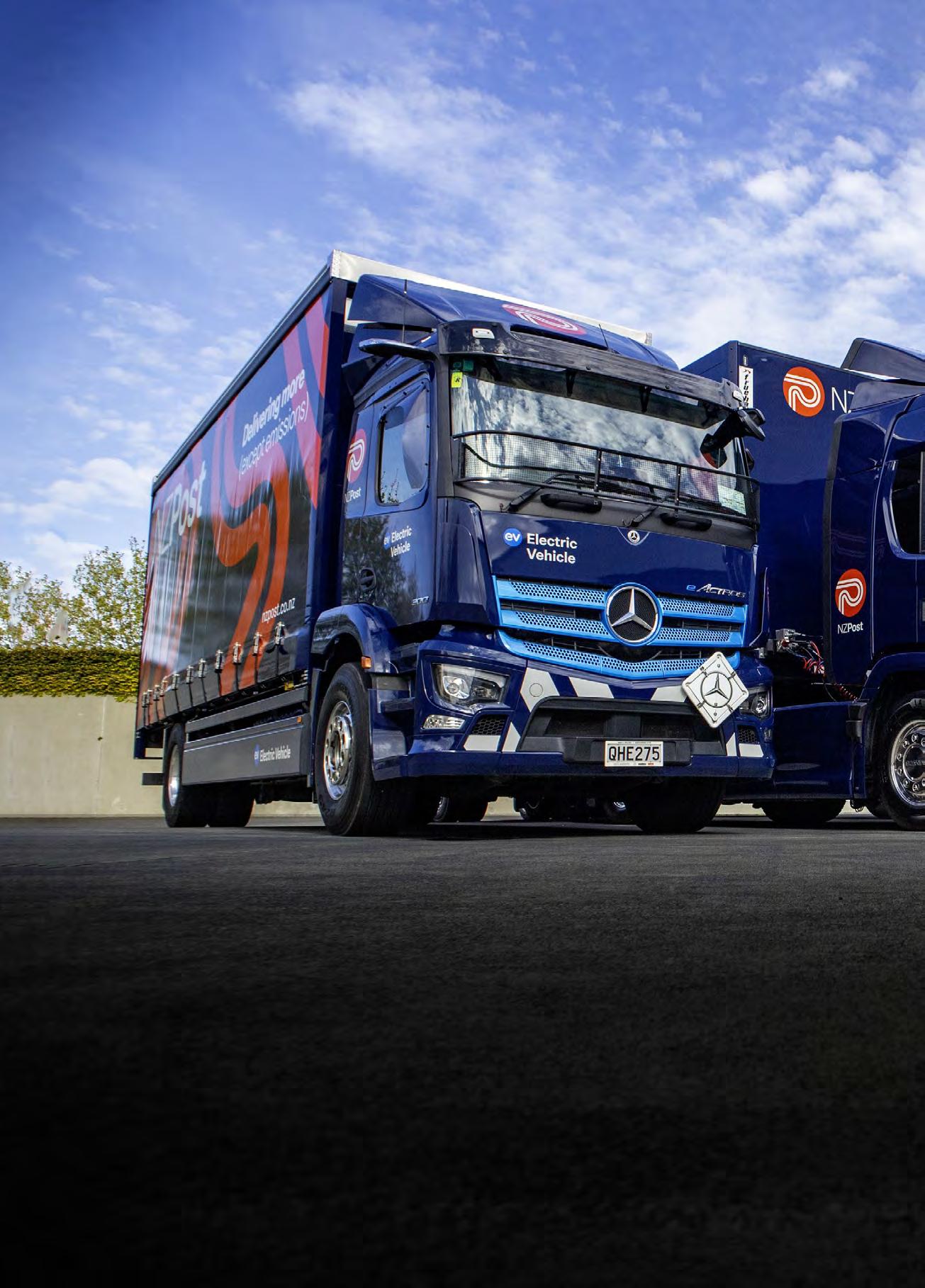
NZ Post is among the country’s leading companies when it comes to operating alternativepower vehicles. From motorcycles to vans, it has long focused on electrifying its vehicle fleet. It was among the first locally to start operating electric trucks and the first to operate a hydrogen fuel-cell electric vehicle.
With the NZ Post programme running for a few years, and with five heavy EVs and one heavy FCEV in operation, we were welcomed to document the journey so far. The result is a New Zealand Trucking cover feature unlike any before, comprising three different trucks from three different OEMs – not to compare them, but to see how each is being put to work moving the nation’s post and parcels with zero tailpipe emissions.
Story by Gavin Myers
by Dave McCoid, Earl Edwards and Gavin Myers
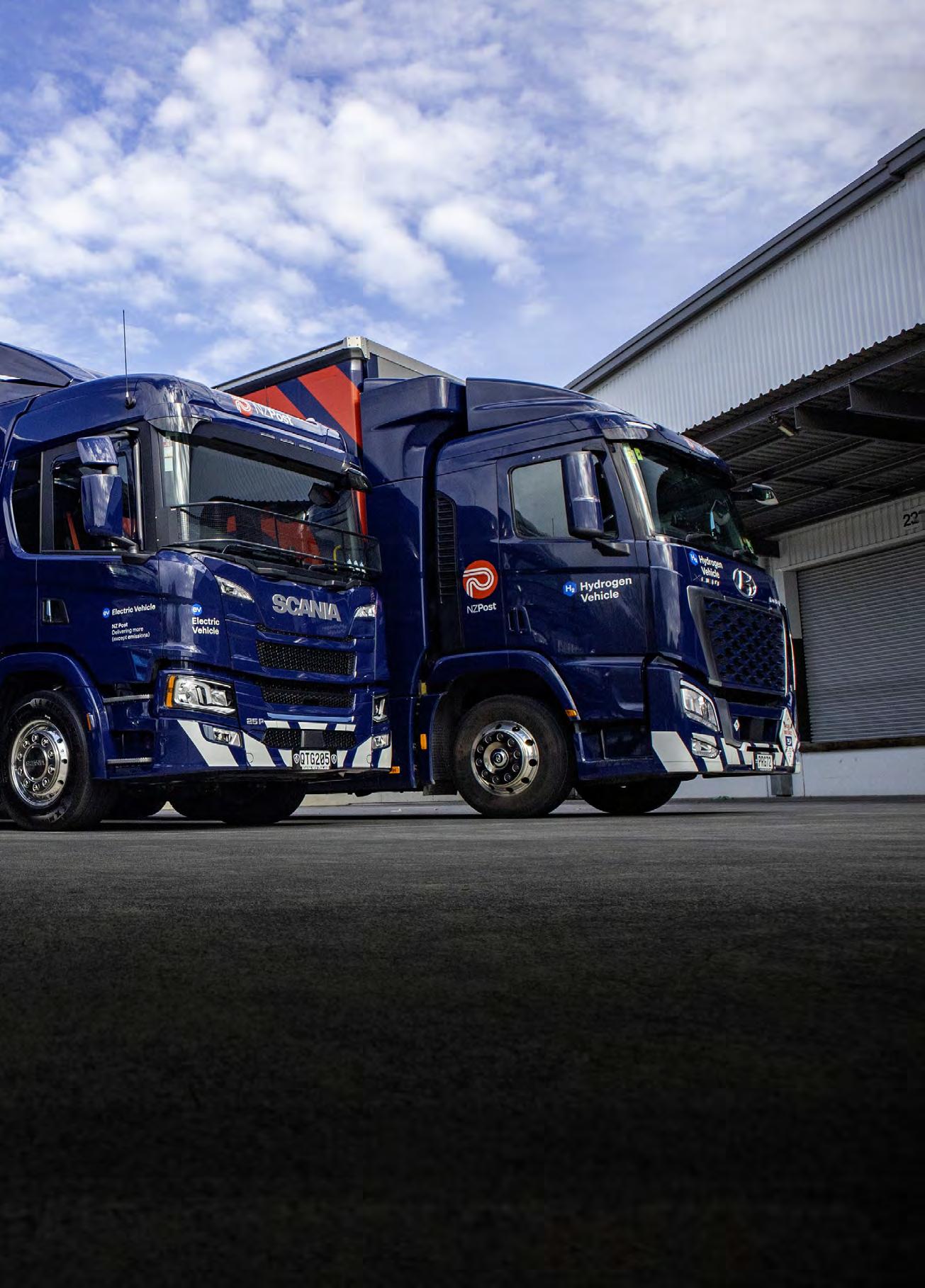

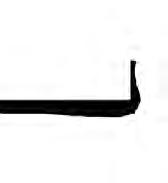
Save for a few who have thrown themselves headfirst into the future of alternative propulsion, it would probably be a fair bet many of us don’t realise how much activity is going on in the background among New Zealand’s transport operators. As they go about their daily business, many are acutely aware that times are changing, and that they need to – at the very least – start thinking about the future makeup of their fleet.
Featuring Reliance Transport’s Scania 25P electric trucks on the cover of the February 2023 issue was a milestone for New Zealand Trucking. We decided years ago we wouldn’t feature an alternatively fuelled truck on
card – just like any other in the fleet – much has happened in the heavy-truck space in the 21 months since they went on the road. Each year, industry conferences and events place a greater focus on alternative propulsion, with increased discussion on the topic and more of a showcase by OEMs, distributors and associated suppliers. New models are becoming available at a faster rate. Once, words like ‘electric’ and ‘hydrogen’ might have been either uttered in a hushed tone with a glance over the shoulder or accompanied by an eyeroll or two. Today, the industry is noticeably sitting up with interest. The amount of space our own publication dedicates to the topic increases consistently. PART I
the cover of the magazine unless it were in operation on par with its ICE peers – doing the daily grind for an operator who had taken the plunge and put its money where its mouth is. That’s to say, not merely ‘on trial’. In the early stages of the EV story, expectations of return on investment would come second to the upfront cost of getting going – and the knowledge and experience gained in this ‘brave new world’. With its two Scania 25Ps and company-wide Project Switch programme, Reliance Transport had set itself up as a Kiwi frontrunner in the operation of heavy electric vehicles.
While those two trucks continue to operate with a no-news-is-good-news report

But rewind another year to February 2022, and we reported on Hyundai New Zealand’s launch of its Xcient FCEV, which took place towards the end of the previous year. Billed as New Zealand’s first hydrogen-powered truck, it was the first of five the company planned to introduce to New Zealand. As a hydrogen fuel-cell electric vehicle, it utilises compressed hydrogen gas to produce electricity by way of a chemical reaction in an onboard hydrogen fuel cell that powers its electric drivetrain.
By July 2022, an Xcient FCEV had entered service with NZ Post, the first of its kind to be put into commercial operation in New Zealand. In July this year, that truck clocked over 100,000km. The milestone coincided with NZ Post adding a Mercedes-Benz eActros 300 and three Scania 25P tractor units to the fleet. Now is perfect timing, then, to find out about the company’s alternative propulsion journey and see the trucks in operation.
At this point in history, companies setting and committing to achieving climate
targets are nothing new. From the biggest corporates to the smallest sole operators, whether government-mandated, customer-initiated or done just because it’s the right thing to do, the drive to be environmentally conscious in as many areas of business as possible has experienced an increasing groundswell year on year.
For a corporate the size of NZ Post, all the above applies. The government has set its targets over the years, customers are becoming more attuned to how their parcels are delivered, and the company knows it’s the right thing to do.
“Our sustainability division set science-based targets for our emissions, and with the road fleet being the biggest emitter in the business, I had a bit of responsibility around that,” explains Ryan Beale, national road operations manager, as we sit down to discuss the journey so far.
Conor Keane, sustainability programme manager, elaborates: “In 2018, NZ Post committed to reducing its scope 1, 2 and 3 greenhouse gas (GHG)
emissions by 32% by 2030 from the 2018 base, and committed to being carbon neutral by 2030. That was best practice at the time, but we updated our science-based commitment in 2023 to be a net-zero emissions operation by 2050 and reduce our GHGs by 42% by 2030 and 90% by 2050. It’s a more ambitious target, due to the changing science and increasing urgency.”
Conor says that the company is currently recognised as committed to net zero by science-based targets, but to become verified, it is exploring the individual transport mode pathways within the business, and what technology and investment will be required to meet that 42% reduction.
“A number of assumptions underpin these pathways, so from heavy freight, that means exploring the technology of trucks, charging, dual fuel and things we haven’t even considered yet.”
As Ryan alluded, transport is the biggest emitter in the business – accounting for 97% of emissions. International air freight is the highest emitter,
followed by road freight and domestic air freight. “A sizeable portion is from heavy road freight,” says Conor. “To date, we’ve prioritised the decarbonisation of our vans, cars, forklifts and motorbikes, and then we have electric Paxters alongside the last-mile delivery contractor fleet.
“In tandem, we’ve been trialling a number of heavy freight options with the intention of reducing the emissions that come from our heavy freight by around 15% of the 42% reduction we require by 2030 – a sizeable amount.”
Currently, the company has set out to understand the TCO (Total Cost of Ownership) of the different technologies and – here’s a term most readers probably wouldn’t have encountered yet – the margin abatement cost (the cost to remove one tonne of CO2 over a vehicle’s lifetime).
“We then start to get a picture of viability, combined with their operational suitability, and what the infrastructure we’d need to install is to facilitate different routes for these trucks. The more and varied environments
we can put the trucks in, the more confidence we can have in them,” Conor explains.
The race to meet ambitious targets can be daunting for any organisation, even one the size of NZ Post. However, size does have its advantages, creating options and flexibility with how to best ‘feel out the waters’, and repeatability and direct comparisons when it comes time to crunch the numbers. It also means that somewhere in the mix are loyal and dedicated operators who get the big picture and are willing to accept any challenges in putting the trucks to work early on.
“Around 28 years ago, NZ Post shifted to a contract model. Several existing employees shifted to that model, including Neil Dennett, Ramesh Lal and Greg Carley. They’ve all been with us for quite a while,” says Ryan.
Each is the custodian of a different vehicle in different use cases – Neil’s Shea Transport operates the Xcient, Ramesh’s Lal’s Transport the eActros (and
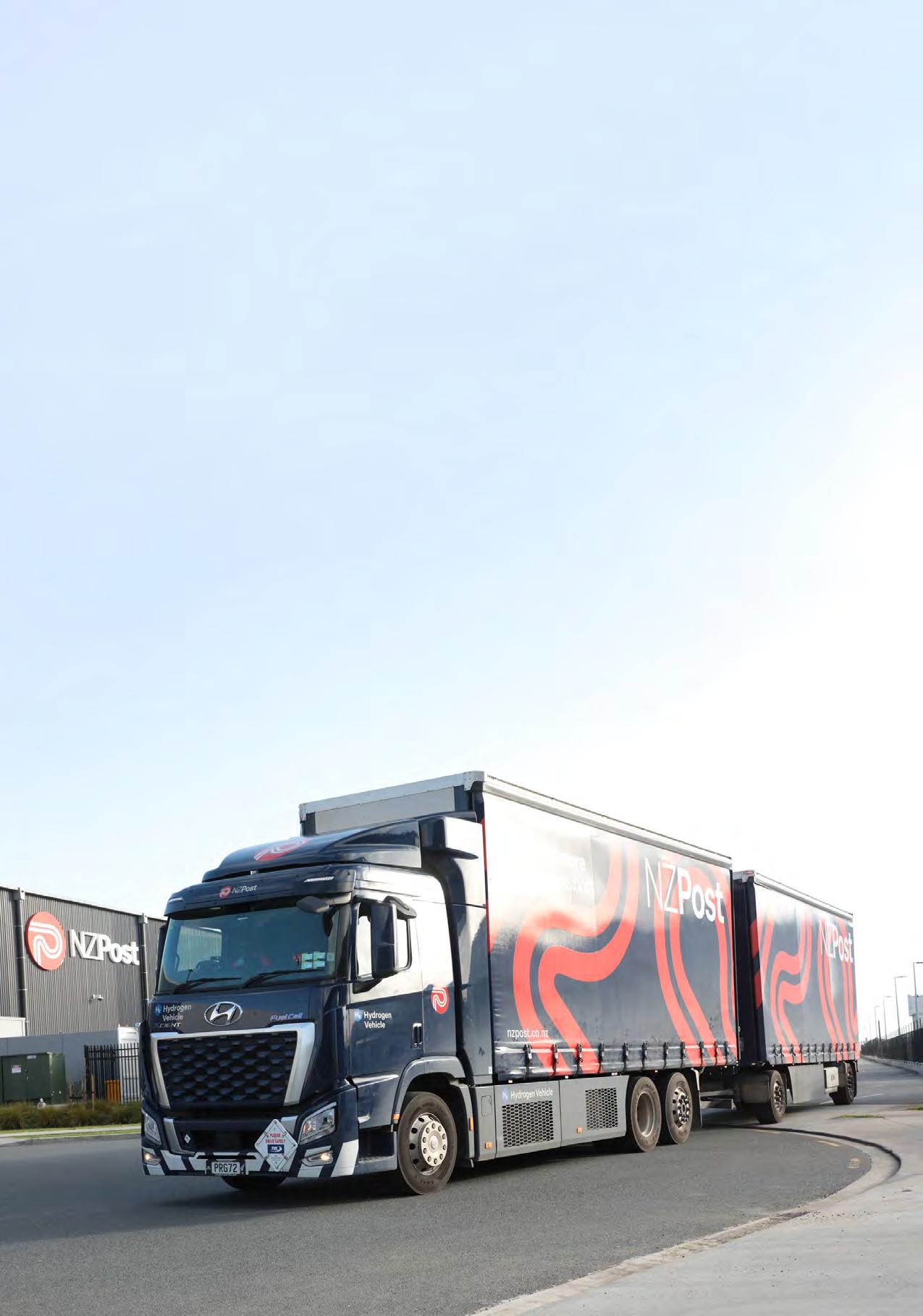
The Xcient FCEV leaves the APC, in the reality of midwinter operation – looking like the real-world, double-shifted working truck it is.
earlier, a Fuso eCanter) and Greg’s Greg Carley Transport the Scanias. “The benefit we have is the fact we design our network to fit our requirements from a customer perspective. The luxury there is we have enough routes to pick from to put the vehicles somewhere they could work. The trucks are doing the Ks, and we’re enjoying it,” Ryan says.
But let’s not get ahead of ourselves … Once group sustainability manager Dawn Baggaley had set the targets, work had to be done to actually get the vehicles on the road.
The team looked at the options available with insight from consultancy firm DETA.
“Early on, we looked at the eCanter when Keith Andrews’ demonstrator came in,” says Ryan. (We drove it for our May 2020 issue – Ed.) “It was cool, but our typical truck would start at about 18 tonne, and the eCanter was a lot smaller, so we were a bit apprehensive.” The roller cages NZ Post uses are designed to maximise the dimensions of truck bodies in New Zealand and accommodate as many as possible in each vehicle.
Eager to see how an electric truck would fare, by the end of 2022, an eCanter had nonetheless been fitted with as large a body as possible and was put into service with Lal’s Transport, running between the North Shore depot and Hibiscus Coast Operations Centre in Silverdale. Having completed 100,000km, that unit has now been shifted to a Wellington-based operator who was able to put a smaller vehicle to work and keen to see how an EV would do. This will yield valuable insight, too, as in his care, the truck will cover more distance each day but move less volume.
Ryan says the eCanter has been very dependable. “It did go to Keith Andrews for a bit of work at one stage, which they addressed. But for the run, the only limitation was the capacity of the unit. Once we knew what the parameters were and worked within it, there were no concerns.”
Naturally, putting a heavy EV to work requires supporting infrastructure, and there were early lessons regarding charging. Ryan explains that NZ
Post does not want its vehicles to contest with public charging and has worked with Aucklandbased commercial electrical services company Trilect to install YHI chargers. “We learnt quickly that the charging has to fit for it to work,” he says.
Needing to keep pace with volume growth in the North Shore region, and specifically the Hibiscus area this vehicle supports, the eCanter was replaced by the eActros in July. It was a natural progression and immediately doubled vehicle capacity and more than doubled on range.
As we said earlier, the Xcient was, in fact, the first alternatively propelled heavy EV to go to work for NZ Post in mid-2022.
“That was a long path,” says Ryan. “Two years earlier, we were approached by Hyundai and told about the vehicles that had been pitched to Europe; they wanted to bring some to New Zealand. With the targets set for us to understand how to fulfil our requirement, we needed to start dabbling. We got in behind
it to make it work with Neil. He operates 15 contracted runs for our business, so we found a similarly matched vehicle on similar work that he was comfortable to replace with the Xcient.
“By 2021, we had concrete direction; we were going to go there. Neil understands technology is changing and we approached him because we thought his run was the best fit. We chatted about different options and how it would work. He and another contractor were involved in some of the design aspects. The path was troublesome for Hyundai, which had to bring the vehicle in and change it to right-hand drive, and Grant [Doull, national manager, hydrogen and eco commercial vehicles] spent a lot of time working around
accommodating a European configuration within VDAM and applying for permits to get it on the road in 2022.”
“But,” says Ryan, “it was all of a sudden on the road and at work.” And, with little battery weight impacting the load, it could also tow a trailer and haul a load over the Bombays to Hamilton without much concern.
“Clocking 100,000km shows it’s just been there to turn up and work. There hasn’t been much issue with the gear, the tech works,” Ryan says. “Neil knew to the decimal what diesel he was using on the same route.
The TCO is what we’re really interested in, and knowing what goes wrong over 1,000,000km with those trucks. With diesel, we’ve become accustomed to replacing certain parts
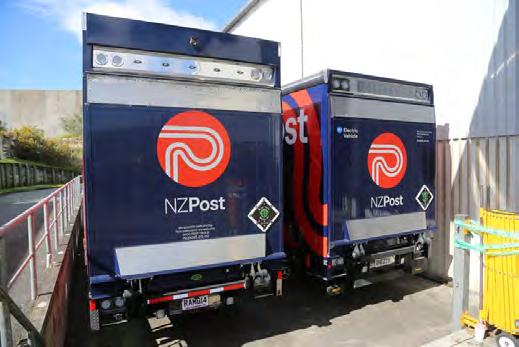
eventually, but this truck is a bit different. During our lease time, we hope there will be a supporting network so that we can look at expansion. It’s as simple to operate as a diesel equivalent, and that’s what Neil was looking for. But, in six years, batteries could change significantly as well…” Ryan says.
Until recently, the only sticking point has been refuelling with hydrogen. However, determined to keep the truck working, Hyundai stood up an interim refuelling solution while Hiringa was getting its network online with Waitomo. “It was a chicken and egg situation,” says Ryan.
“It’s been interesting. One of the first things you’d hear was, ‘Do you want to drive around with a big gas tank on your back?’ But now the guys are
used to it. Having Neil operate it, he can talk to other contractors, take them for a drive, show them the platform is workable.
“I can’t complain about it at all, and from a refuel perspective, 10 minutes is what the drivers are used to. Initially, hydrogen is a bit different, but once they know how it works the concern goes away.”
Earlier this year, NZ Post moved into its new Auckland Processing Centre (APC) in Wiri. The new 30,000m2 hub can process more than 30,000 parcels per hour at peak capacity. Significantly, it brings together NZ Post, Customs and MPI for national and international processing on one site. This meant Customs’ air cans (the vessel in which airmail
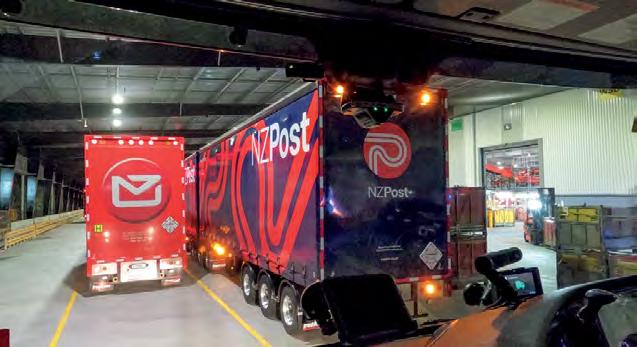
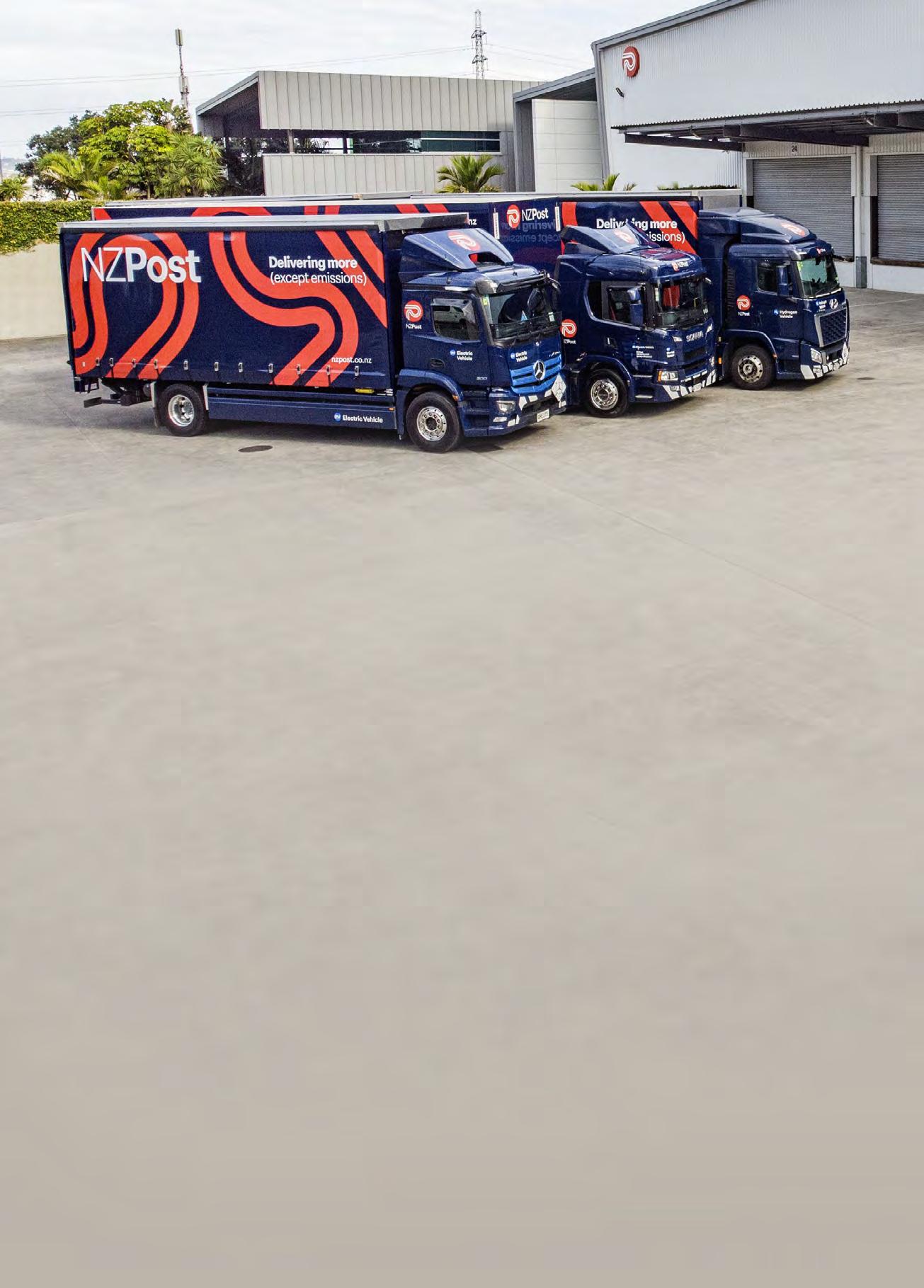
is stored for transport) would need to be transported to and from the site and the airport –and that meant more scope for new vehicles.
The timing being as great as it was, our initial visit coincided with the handover of three new electric Scania 25P 4x2 tractor units and their specialised 10m hard-side Fruehauf trailers with automated roller decks for loading and unloading of customs cans. Unlike the Xcient and eActros, both on six-year lease arrangements with TR Group, the Scanias have been taken on by NZ Post directly.
“We had a couple of 4x2s with 10m trailers in the fleet already and knew the configuration would be viable,” Ryan says.
“Greg previously operated diesel trucks in a different configuration for our domestic
air cans. When we said the new operation to transport international cans from the airport would be a great fit for electric trucks, he was comfortable with relinquishing some gear to take these on board.”
The Scanias’ operation will be of low mileage but high utilisation. Their docks at the APC have been equipped with two dual-gun chargers, so that they can top up every time they offload.
Conor says: “We’re confident the Scanias will be quite replicative of a lot of the trucks in our fleet. We’re comfy with the range; it’s more the operation, charging, loading and unloading where we need the assurance. Strategically, it could make sense to build out the network from one hub
to leverage the infrastructure between the different Post hubs and lower the ratio of capital investment costs for charging. That’s the next step. Once we’ve decided on technology, we can decide how to leverage existing routes and sites to build that network as best as possible.
“We envisage these trucks would run longer than a typical ICE equivalent due to lower maintenance. Residual cost is still a variable due to the likes of battery degradation, but residual costs for a diesel will be, too, as we begin to transition. So, there’s uncertainty all round. It’s an industry challenge, but these trials will give us an understanding.”
Ryan echoes Conor’s sentiments: “The Scanias will be a great
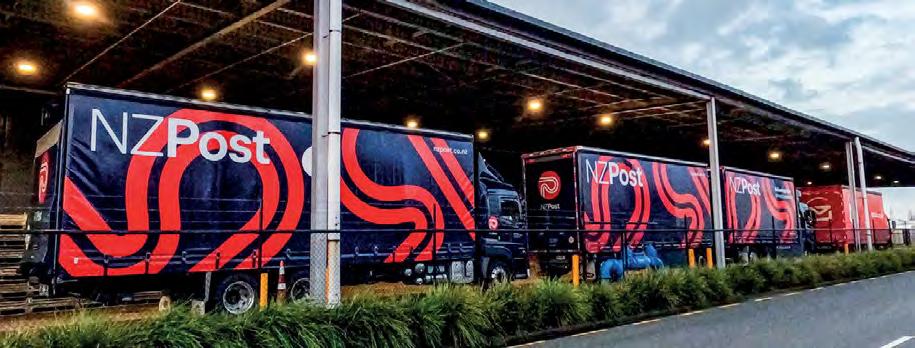


• Approximately 140 contracted heavy vehicles move the country’s post –these range from three-axle 18-tonne units up to full longhaul B-trains. Euro-5 is the current mandated emissions standard for new vehicles, with a move to Euro6 set for March 2025.
• A concerted effort to move to electric and plug-in hybrid light vehicles has been made, with 585 such vans and cars in the fleet. Mercedes-Benz eVitos were allocated to depots requiring a van, and the company has recently kicked off a new cascade deal to reduce the cost for operators to get into an eVito.
• The company aims for 100% of its owned vehicle fleet to be electric by the end of 2025, with motorbikes and forklifts the last two vehicle types to be fully converted.
• A project to put a US-made Beta Alia e-cargo plane in operation between Wellington and Blenheim has just kicked off with Air New Zealand. “Air New Zealand feels the Cook Strait would be the ideal place to test it. Using it for cargo increases the strength and resilience that may be needed. We’re in the early phase of understanding the operational constraints before going operational in 2026. It will be the first battery electric domestic flight,” says Conor Keane, sustainability programme manager.
• Regarding domestic air cargo, the company has procured three new planes that offer greater fuel efficiency and reduced carbon emissions.
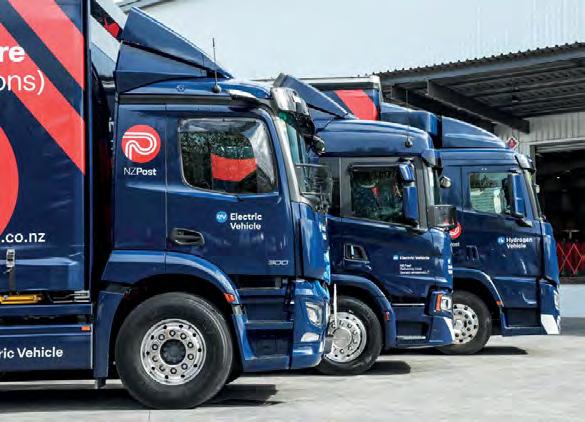
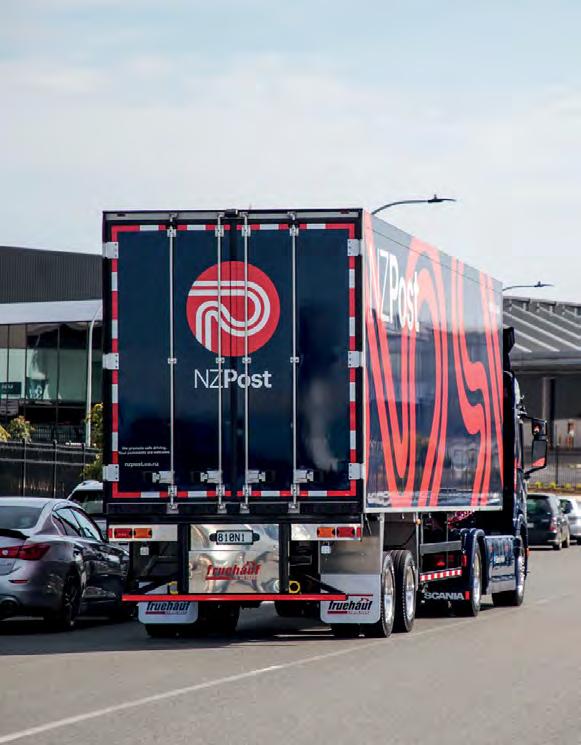
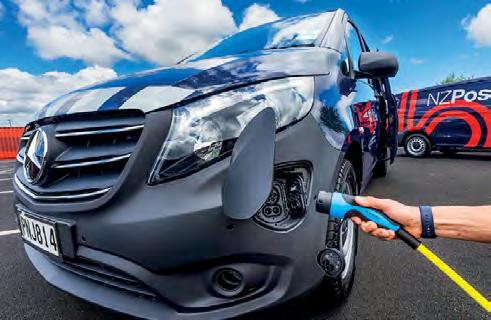
validation, allowing many contractors to see how it works and allowing us to understand where we’ll require the charging infrastructure. The trucks are all tangible; people can come drive them and see the benefits.
“In Auckland, we run a huband-spoke model. The Wiri APC and Highbrook AOC (Auckland Operations Centre) are our two main hubs sending freight out to the extremities of the greater Auckland region. So, this will allow us to determine where we can say, ‘The next vehicles with these contractors may need to be something similar.’ I feel, especially within Auckland, BEV will be holistically beneficial – for example, a truck sitting on Puhinui Road for half an hour idling is burning diesel for nothing.
“For the further-out sites, where we don’t need full truck-and-trailer spec yet, we’ll be range-testing and understanding that viability, getting that TCO and making the operators aware of what they’d be in for, and what we’d require around charging. Longer distance linehaul … we’re waiting to see what comes from the OEMs. Our Auckland-Wellington run leaves here at 8.30pm to be at the depot at 5am to present to the couriers before 9am. We can’t lose half an hour charging. But increased charging rates could be a gamechanger … Look how we’ve gone from 50kW to 200-plus in the last few years. Refuelling or charging stations in the National Park would be ideal,” Ryan says.
None of that’s to say contractors are limited to the existing options. Dual-fuel conversions, such as those the likes of HW Richardson is
pursuing, could also be a mid-term option for some contractors.
“Every time we’re presented with a new truck, we are starting to question what the best fit is. Because we own the network, we can specify the requirement and ensure we’re making the right decisions. The contractors so far have been involved and dedicated to making it work. I reckon 90% of our contracting fleet would be onboard with change if it were ready. Of course, we can’t charge our customers an extra 50% because we’ve gone zero emissions,” he says.
“We’ll continue to progress, and my belief is the market will continue to change. At the moment, these are quite earlygeneration trucks. The truck has to fit – and if we select a run, will it still fit in three to five years? We have to be open-minded, too. If we have to change the way we move the freight, then we may need to do that.”
Naturally, few operators have the benefits at hand that NZ Post is lucky to have, such as its size or ability to select from a pool of fixed routes. But what that does afford the rest of the industry is insight into how the vehicles can be expected to operate, what infrastructure is required and how it fits into the picture, and what needs to be done now to meet future expectations.
On that note, Ryan concludes: “If we want to advance this, the industry has to work together. New Zealand is remote, and it’s not easy to compete with scale. VDAM is also an issue. As a country, we all need to jump into it.”
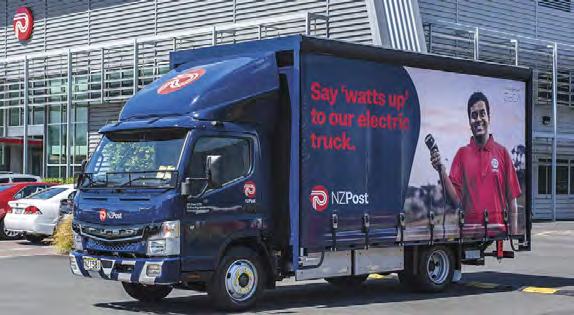


You might be forgiven for not even noticing the eActros, Xcient FCEV or the Scania 25Ps in their smart blue and red NZ Post livery next to their peers. Only when you get up close do you notice their respective ‘Electric Vehicle’ and ‘Hydrogen Vehicle’ decals and the script ‘Delivering more (except emissions)’ on their curtains.
However, the keen-eyed bloke who pulled up his Honda Accord next to the eActros while we were waiting at the lights on Auckland’s Greville Road offramp certainly did. Maybe it was the branding or the lack of diesel-engine clatter that got his attention – either way, he made

full use of his time stopped, craning his neck out the window to have a good look.
“People actually do look at it in traffic and on the motorway. Someone even took a picture of it!” says driver Ajay Kumar. “Other drivers have asked about it too, taken it for a drive. They also like it,” he adds as we pull away smoothly and silently.
We’re on our way back to the North Shore depot from the Hibiscus Coast operations centre in Silverdale. Ajay completes five of these 46km cycles Monday to Friday and ends with an evening run to the APC and back. In the mornings, another driver kicks off the day with an early run between Ellerslie and the North
Shore, and pops the truck back on its charger to top up for Ajay. That’s approximately 390km altogether, and Ajay is able to complete his shift on one charge before the eActros is parked at its charger at the North Shore depot and left to rejuvenate until work starts again at 3am the following morning.
This range capacity from the truck’s three 336kWh lithium-ion battery packs has been a gamechanger compared with the eCanter Ajay was on previously, which had to be plugged in and topped up at each stop. Average economy over truck’s life so far is 93.9kWh/100km.
“This run has grown a lot and become busy with everything
moving north,” says 51-year-old Ajay, who has been with NZ Post for 17 years and driven for Lal’s Transport for 14 years.
Being a much larger vehicle, it’s also doubled the carrying capacity to 12 NZ Post roller cages. This being our heaviest load of the day so far, we’re carrying 11 cages, which equate to about 4.4 tonnes. The weight is barely noticeable compared with when Ajay is returning empty cages to Silverdale. Whether we’re threading through traffic or keeping pace on the motorway, the eActros acquits itself with minimal fuss, accelerating smoothly and easily, with the two-speed transmission shifting at 30km/h, and its
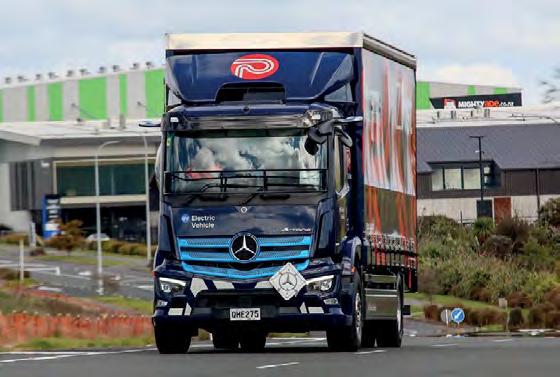


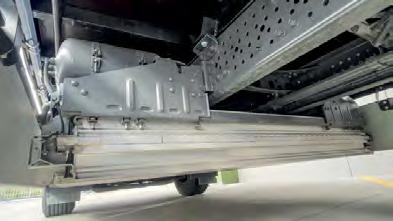


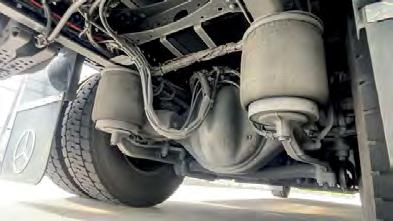
electric torque carrying us on from there.
Ajay has five stages of regenerative braking at his disposal, operating as any conventional retarder would, with the added benefit of adding a bit of charge back to the batteries.
“It is soft, easy, very smooth, quiet … Very different, but very good,” says Ajay about working an electric truck. The sound meter returns a perfectly acceptable 70dB at 90km/h, marginally quieter than a diesel Arocs in numbers but noticeably so in the cab.

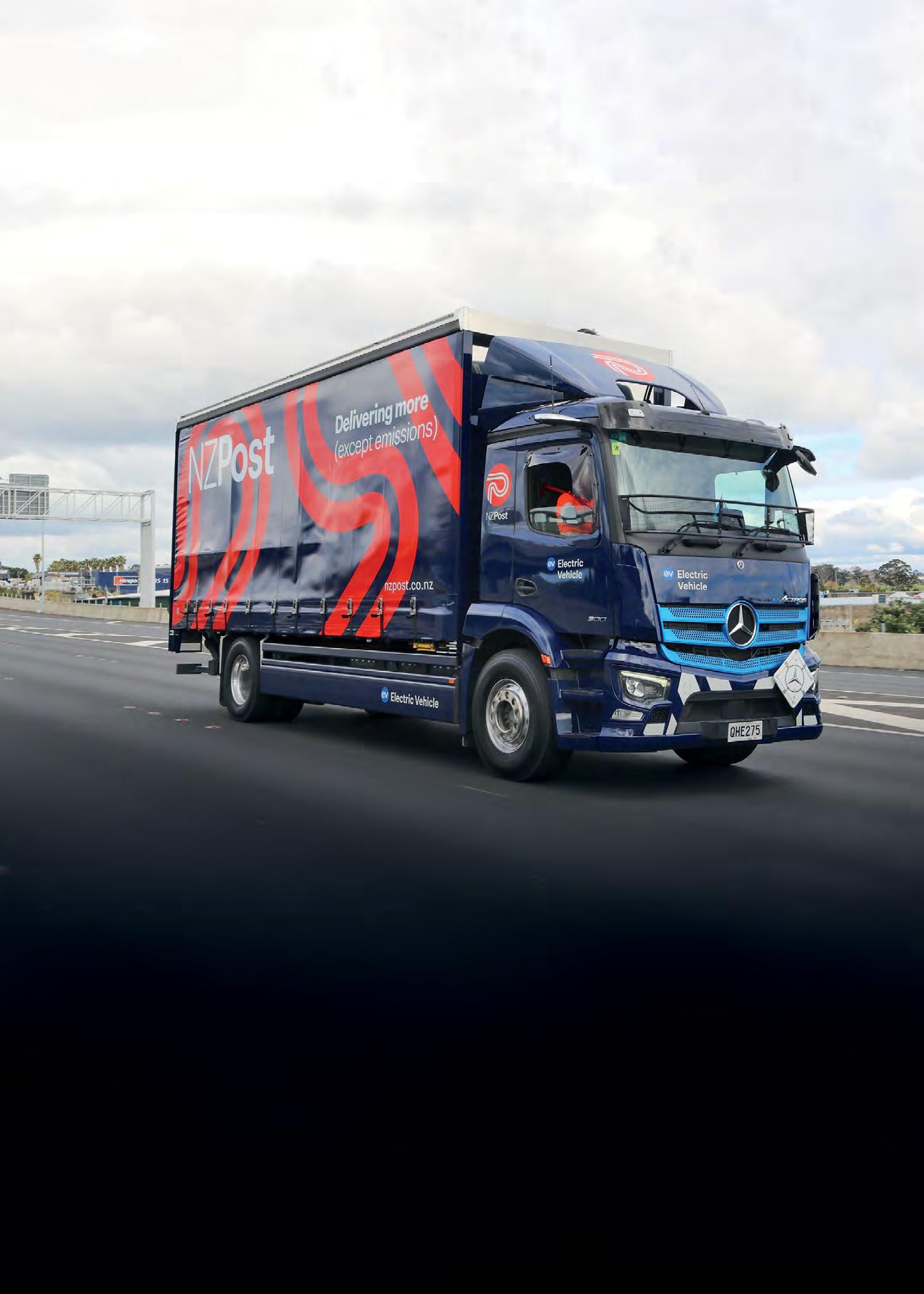
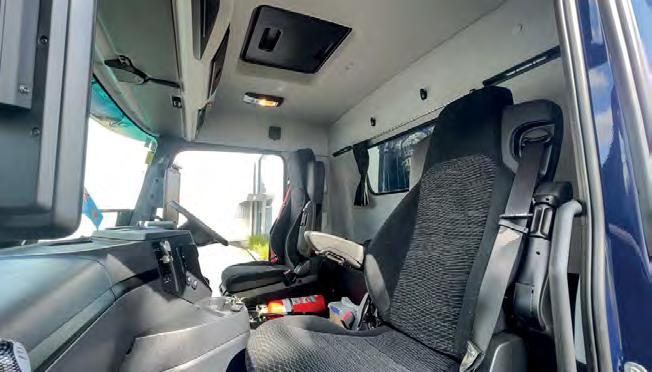

An ideal day cab, the M Cab ClassicSpace offers the driver a good amount of space and comfort and easily accessible storage. Ajay enjoys the full benefits of Mercedes-Benz Actros tech, with the brand’s MultiMedia Cockpit and MirrorCam options we’re now quite familiar with.
“The MirrorCams are good. They work well, fine with reversing and at night, and great in the rain,” Ajay reckons. Of course, the full suite of active safety systems is present and correct, too.
“I think they’re good trucks for the future, and I’m grateful NZ Post gave me the opportunity to
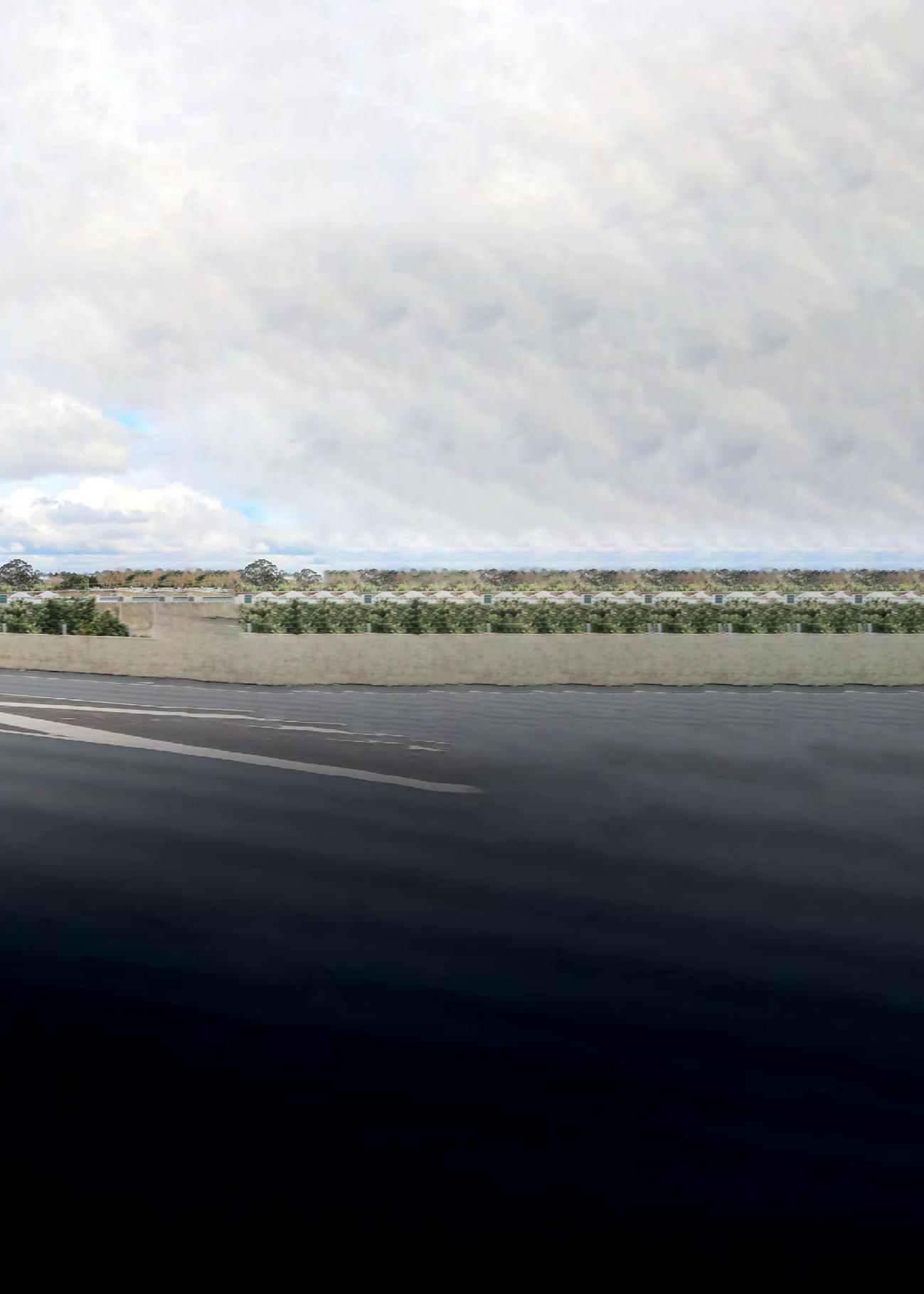
try it out as a brand-new truck,” says Ajay.
The owner of Lal’s Transport is Ramesh Lal, who has a 30-year history with NZ Post and currently runs 14 Post trucks on the North Shore and one in Hamilton.
He says other than an issue with the power steering pump, which was solved quickly by Keith Andrews Trucks, the eActros hasn’t put a foot wrong in 11,000km so far. “Keith Andrews has been great, and so far, the truck has been good. It’s great for the new generation and I fully recommend other
Tare: 10,450kg (load cert)
GVM: 19,000kg (load cert)
GCM: 19,000kg (load cert)
Wheelbase: 5500mm
Electric motor: eAxle with two integrated liquid-cooled motors
Power: Max - 400kW (536hp), continuous330kW (443hp)
Torque: Undisclosed
Emissions: BEV
Transmission: Two-speed internal
Clutch: N/A
Front axle: Offset
Front-axle rating: 8000kg (load cert)
Front suspension: Air suspension
Rear axle: Mercedes-Benz e-axle
Rear-axle rating: 11,500kg (load cert)
Rear suspension: Air suspension
Brakes: Disk. EBS with ABS and ASR
Auxiliary braking: Five-stage regenerative braking
Additional safety: Acoustic vehicle alert system. Secondgen MirrorCam. Active Brake Assist 6 with pedestrian detection and radar/ camera-activated advanced emergency braking system. Active side guard assist 2. Stability control assist, lane keeping assist, proximity control assist, attention assist, roll control assist. Electric park brake. Tyre pressure monitoring. Light and rain sensors. Driver airbag
Additional productivity: FMS fleet management system. Truck Data Center 8
Batteries: Three lithium-ion battery packs
Battery capacity: 336kWh
Charging: CCS Type-2
Estimated charge time: 75 minutes (20% to 80% at 150kW)
Maximum quoted range: 300km
Wheels: Alcoa Alloys
Tyres: 315/70 R22.5
Electrical: 24V
contractors to look into it. Fully loaded, it does the same job at the same speed as any other truck.”
The eActros is one of two eActros 300 4x2 rigid units and two 4x2 tractor units Keith Andrews Trucks initially brought into the country. Matt Gillatt, product planning and alternative fuels transition manager, says the company is monitoring the truck to gain meaningful data on its operation. “It’s fitted with the Mercedes-Benz telematics
platform, so we’re keeping an eye on it month by month. All is going well at this early stage, though. Our stated range is a conservative number and NZ Post is able to achieve good range due to weight and the driver’s ability to create range with the regenerative braking.
“NZ Post has done an amazing job taking on the eCanter and now the eActros. They are really setting up their contractors to succeed.”
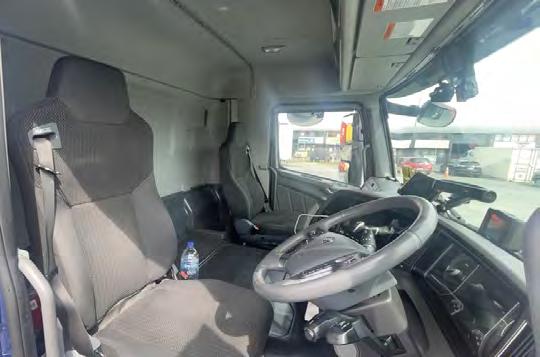
Xcient FCEV cruises by emitting just water.


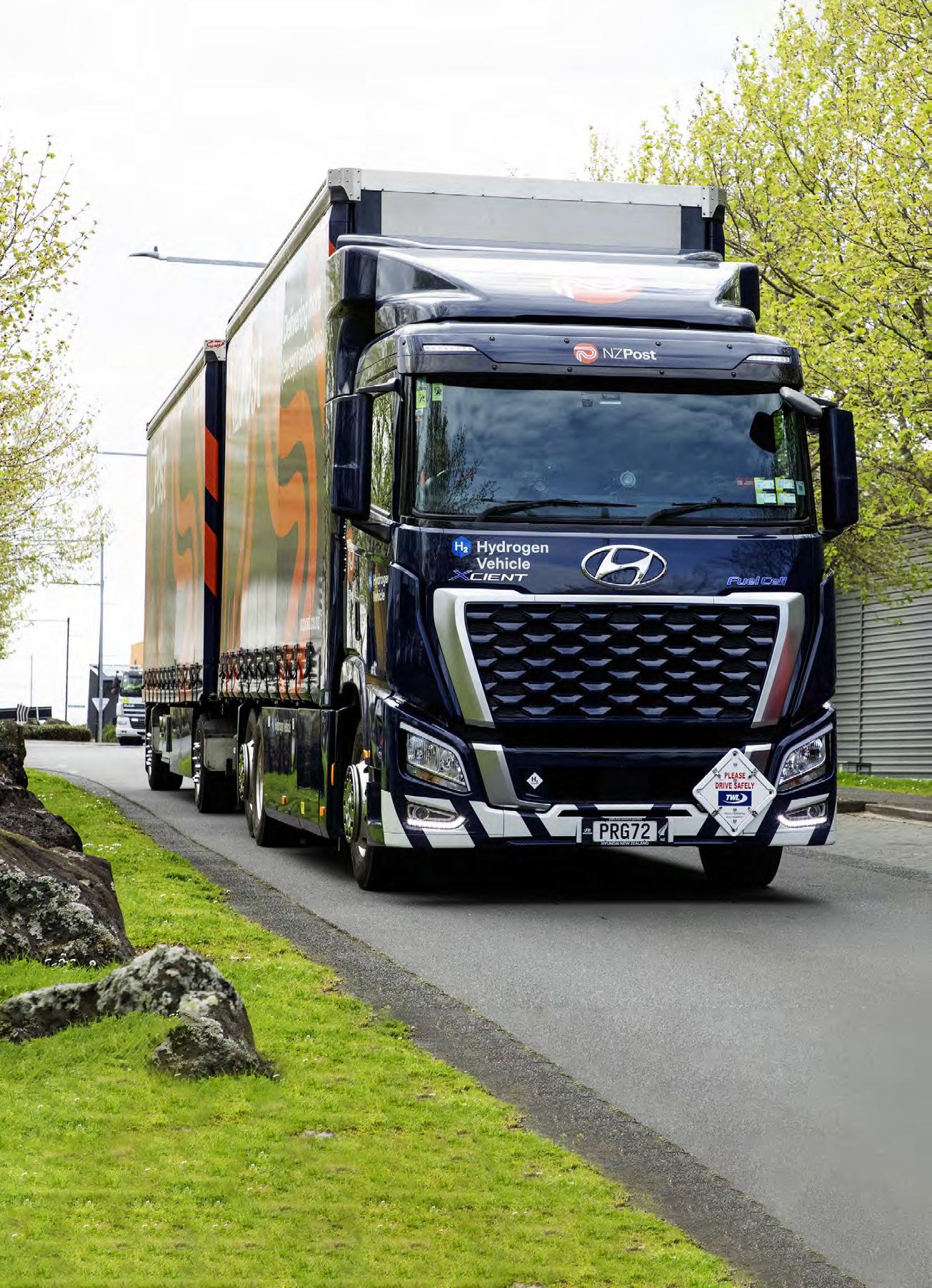
It’s quite amazing to see the number of trucks streaming down Langley Road, Wiri, and into the APC in the early evening. We’d been following the Xcient’s day-shift driver, Dev Narayan, for the past few hours, and now, at about 6pm, we are in the cab with him, sitting in a queue of truck and trailer units coming to collect their evening transfers. As the trucks file in and out and more continually join the queue, the team of forklift drivers shuttle their Maxi bins to the docks and into their respective trucks. It’s one of those scenes that look outwardly chaotic but is, in fact, amazingly slick.
Dev typically runs two loads between the Onehunga Courier Depot (OCD) and APC and two between the South Hub depot and the APC each day before loading up and refuelling for night driver Gurdit Dhillon.
Thirty-five-year-old Dev has been driving for Shea Transport since 2020 and came off a Volvo FH truck and trailer to take over the day shift on the Xcient in May. “It was a different feeling at first; I was so used to driving a diesel. On a diesel, you can feel the revs, the clutch engagement, that something’s happening … In this, you just hit the accelerator. But I’m used to it now; it’s smoother, quieter,” he says with a laugh.
As Dev’s been slightly delayed today, Gurdit is waiting to take over outside the APC. His first stop is the Hiringa
hydrogen refueler at Waitomo on Roscommon Road. He pulls in and turns around to align the left-hand refuelling nozzle with the bowser. Interestingly, the first thing that strikes us is how manoeuvrable the 6x2 Xcient is with its steering tag axle (which locks at 40km/h) and two-axle trailer. Gurdit makes a typically wide turn, but the unit’s about-turn in the space of a forecourt is impressive. (Later, we’re told that reversing is slightly trickier, as the two-axle trailer is very quick to respond to steering inputs.)
The fuel level reads 47% at the end of Dev’s day shift. The drivers need to power down the truck completely to unlock its refuelling nozzle. It’s the moment we’ve been waiting for – to see the Xcient FCEV refuelling with hydrogen! He jumps out and connects the dispensing nozzle to the truck, swipes the truck’s RFID tag, hits the green button … and that’s it. The pumps start to fill the tanks, as anyone who’s ever refuelled a vehicle would be used to, and in about eight minutes, 15.92kg of hydrogen is dispensed. The dispenser shuts off, Gurdit disconnects the nozzle, jumps back in the cab, and sets off to collect the rest of his load from the Highbrook AMC for his nightly run to the Te Rapa Waikato depot north of Hamilton. As novel as it is, it’s all a bit anti-climactic. It’s just like refuelling as we know it – simpler, even.
“The Waitomo station is really convenient. Refuelling takes on average 10 minutes, up to about 16,” says Gurdit, adding an interesting observation:
“It’s nice not to have the greasy diesel. Diesel trucks always have a residue on the curtains and touchpoints, you don’t have that on this.” In a typical night shift running to the AMC, Te Rapa, back to the APC and over to Fliway Onehunga, the Xcient will cover approximately 300km and use most of its 31kg of hydrogen. Maximum range is quoted at 400km. The current average hydrogen consumption is 12.5km/kg.
We have a full load of 14 Maxis on the truck and 16 on the trailer bound for Te Rapa, and although he didn’t pass over the scales before leaving, Gurdit says it feels slightly heavier than usual, too. Not that you could tell from the passenger seat … The 2237Nm of torque (with a full 3000Nm available when climbing hills or overtaking, for example) driving through the Allison six-speed automatic transmission allows it to gain and maintain speed incredibly easily. That electric motor and Allison autobox combination is interesting –the shifts are there, but you really have to be paying attention to detect them.
Shea Transport asks the drivers to keep the Xcient to a maximum of 85km/h to maximise range and fuel economy. From the moment he enters the motorway, Gurdit sets the truck’s

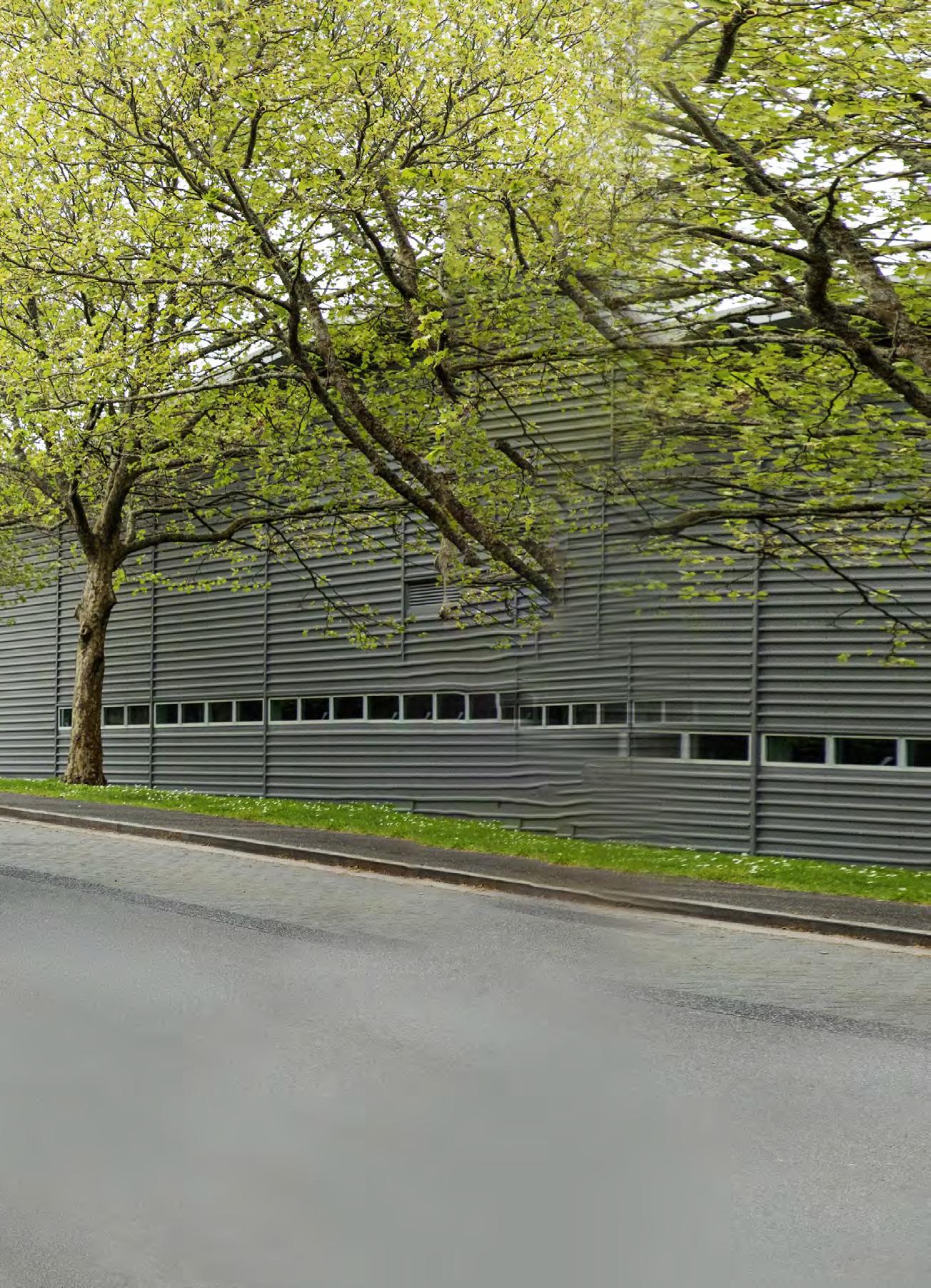
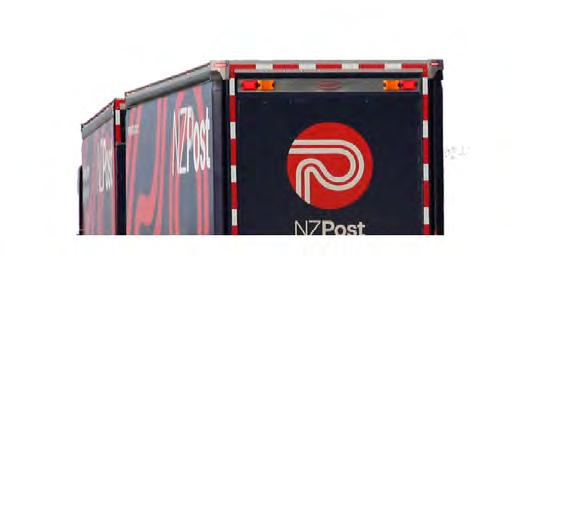


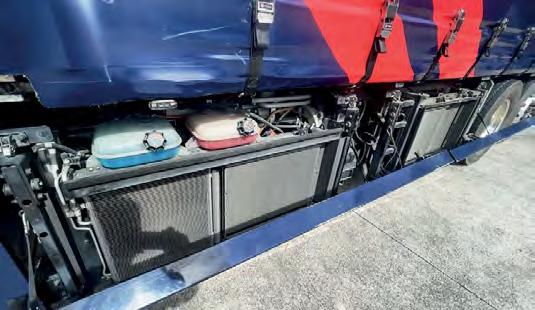
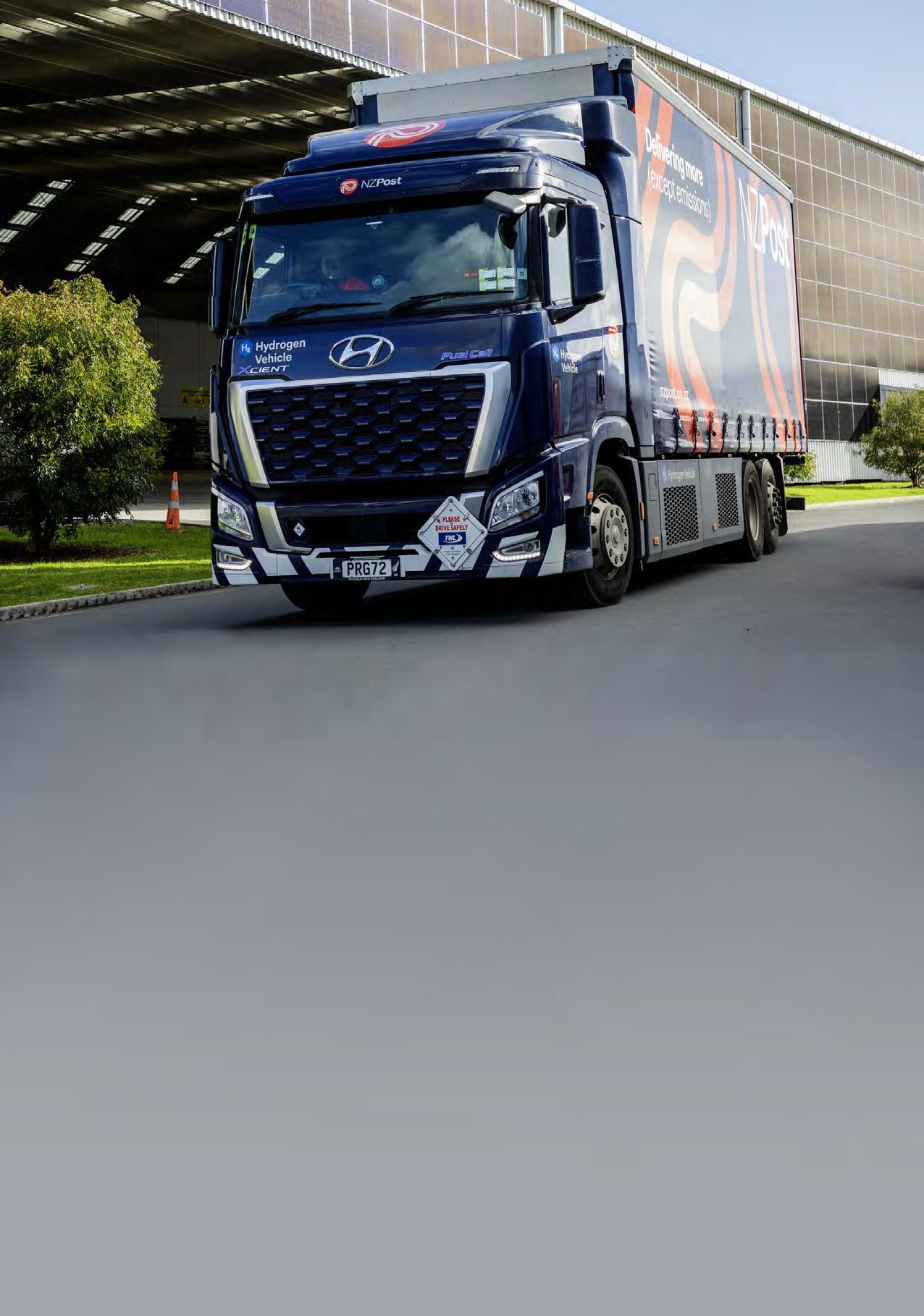
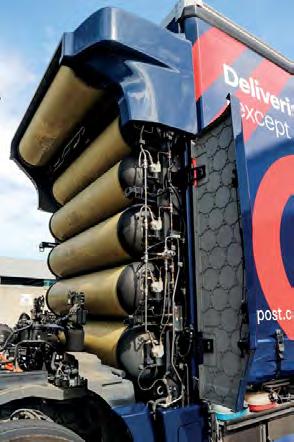
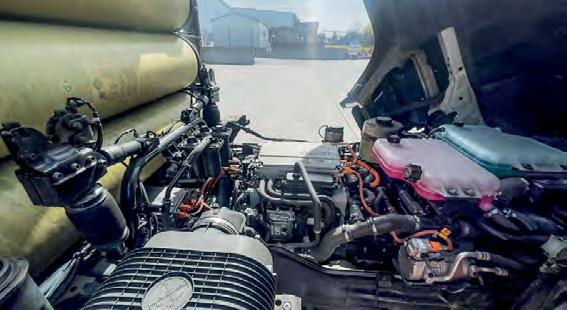
adaptive cruise control. As we approach the Bombays, the truck applies nearly full power and maintains its speed easily. The adaptive cruise locks onto a truck ahead and slows to about 70km/h. “It’ll easily maintain 85 all the way,” says Gurdit.
Heading down the Bombays, he sets the Allison’s fourstage retarder to stage three, maintaining 85 and adding 4km to his range. Later, stage two is strong enough to hold the truck back down the Huntly Bypass.
“Because the fuel-cell system only needs 72kWh battery capacity for accumulating regen energy on descents and boosting power when needed climbing hills or overtaking, a transmission retarder acts as a safeguard against traditional battery electric regeneration, which loses effectiveness as the batteries replenish,” explains Grant Doull, national manager, hydrogen and eco vehicles at Hyundai NZ.
Thirty-six-year-old Gurdit began driving for NZ Post about three-and-a-half years ago, and transferred to Shea Transport earlier this year. “I drive it slightly differently to the diesels I was on before. You don’t push the torque in this. I’m easy on the truck compared to a diesel; the same load would feel heavy in one of the diesels. I can’t feel it pulling the load.”
The Xcient FCEV is impressively quiet, returning an average sound meter reading of 65dB at 80km/h, with just a bit of whistle around the nearside mirrors. At slower speed, one can detect the fuel-cell system emit a gentle whir now and then as it creates the energy to power the battery pack supplying the drive energy to the electric motor, which emits a higher-pitched whine than we’re generally used to with full BEVs. Cab space and quality are on par with similar European trucks.
Neil Dennett owns Shea Transport and has a 30-year relationship with NZ Post. Today, he operates about 30 units on Post duties. The Xcient entered the fleet as a replacement for a typical 540hp, eight-axle 18m
truck-and-trailer unit. Fitted with a 7m body and 10m trailer, it loses a metre on the truck. “It operates slightly under capacity because that was the only configuration Hyundai could bring in at the time,” Neil says. However, that’s been the only gripe to report as far as the machine is concerned. Neil says it’s been easy enough to understand running a FCEV and it’s impressed him. “I think it’s a great bit of kit, and it’ll be interesting to see how it continues to perform,” he says.
Neil adds some drivers were reluctant at first. “We were concerned at the beginning about getting drivers to buy in and drive it, but now it’s just another truck in the fleet, and we treat it that way. It was a princess when it arrived, but it’s really just another truck –we need that flexibility, and it’s what Hyundai NZ wanted from it, too. They’ve been great; helpful and enthusiastic. I take my hat off to them for getting behind this.”
In 2022, it was estimated that the Xcient FCEV would save about 50t CO2 over 80,000km. According to Grant, with calculations based off the 2.4km/L average consumption of the 540hp, eight-axle unit it’s replaced, the Xcient has saved 41,667L diesel and 111t CO2 over 100,000km.
“We’ve proven a lot and demonstrated what we needed to. The Xcient FCEV works and can be a good solution for a wide segment of the market. Another is planned to go on the road later this year,” Grant says.
“What’s made the programme a success is that NZ Post kept a flexible, open-minded approach to how we solve problems and go down the road. That has been extraordinarily important and is a huge credit to NZ Post.
“Hyundai has been monitoring it to see how we can better make it fit in New Zealand. What are the peculiarities? New Zealand is not in a position to dictate, though. We need to figure out how to adopt configurations from higher volume markets,” he concludes.

Tare: 13,500kg (load cert)
GVM: 28,500kg (load cert)
GCM: 42,000kg (load cert)
Wheelbase: 5420mm
Electric motor: Siemens
Fuel Cell: 90kW x2
Power: Max - 350kW (470hp/476ps equivalent)
Torque: 2237Nm
Emissions: H2O
Transmission: Six-speed Allison 4500 automatic
Clutch: N/A
Chassis: Undisclosed
Front axle: Undisclosed
Front-axle rating: 8000kg (load cert)
Front suspension: Two-bag air
Rear axle: Rear steering tax axle. 4,875:1
Rear-axle rating: 20,500kg (load cert)
Rear suspension: Four-bag air
Brakes: Disk
Auxiliary braking: Four-stage retarder plus regenerative braking
Additional safety: Vehicle dynamic control, forward collision-avoidance assist, lane departure warning, smart cruise control, easy hill-start system, rearfacing camera, driver airbag, vehicle-on warning
Additional productivity: Energy-saving utility mode
Batteries: Lithium-ion - Akasol
Battery capacity: 72kWh
Charging: Self-charging by hydrogen fuel cell
Fuel: 31kg hydrogen at 350 bar
Estimated refuel time: Eight to 20 minutes, depending on pump
Maximum quoted range: 400km
Wheels: Alcoa Alloy
Tyres: 315/70 R22.5
Electrical:
Low voltage - 12V and 24V High voltage - 630V
It’s highly unusual for a cover feature to showcase a truck that’s barely turned a wheel in operation. However, given the three Scania 25Ps arrived when we were meeting with NZ Post to construct this story, not including them wouldn’t have done justice to what the company is trying to achieve. Yes, it’s early days, and that means there’s still a lot of fine-tuning going on around processes, drivers and schedules, but the Scanias were straight to work, and so we thought we’d give them a week to settle in and come back to check them out.
Once everything is fully set up and ironed out, six drivers will double-shift the three

trucks. Greg Carley of Greg Carley Transport is contracted to manage the operation of the Scanias for NZ Post. He’s worked for NZ Post for 41 years and started operating Post trucks 26 years ago. “I’ve seen some changes along the way!” he quips as we walk around the 25P.
They are the first dedicated semi-trailer tractor BEVs Scania New Zealand has supplied, and the company claims the 25Ps offer up to 20 hours of operation on a single charge. Fully charged, the truck we sample shows a max range of 223km, and so far, it is averaging 169.6kWh/100km.
They run a dedicated route from the APC up Roscommon
Road, alongside the motorway and down Puhinui Road to the airport, a 16km round trip at a max speed of 60km/h. In a full shift, they’ll clock up to 160km –so range or power consumption is not a worry. Greg uses the example of one of the night driver’s runs. “He plugged in to charge at 1am during his break. That added 20% to the batteries. He was only down to around 55%, but it was more of a caution thing. At every decent opportunity the drivers get, they’ll put them on charge.”
Greg says charging has been very easy to adapt to and simple with the YHI chargers positioned at the APC’s customs docks.
While on the subject, this area of the APC is entirely
mechanised, with the air cans moving in and out of the facility on a roller floor system. With the trucks butted up to the loading docks, the cans are easily transferred to or from the 10m Fruehauf FBR trailers. These are fitted with the Joloda Hydraroll powered cargo roller floor system, designed for loading and unloading air cargo containers. A series of powered and free rollers pneumatically rise from the floor and the driver moves the cans along with the remote control. Flip-up stoppers safeguard against rollaways and there are cross bars to secure light loads if needed. The trailers hold six 4.4m3 AKE air containers at about a tonne each, or three bigger 11m3 AAY containers of
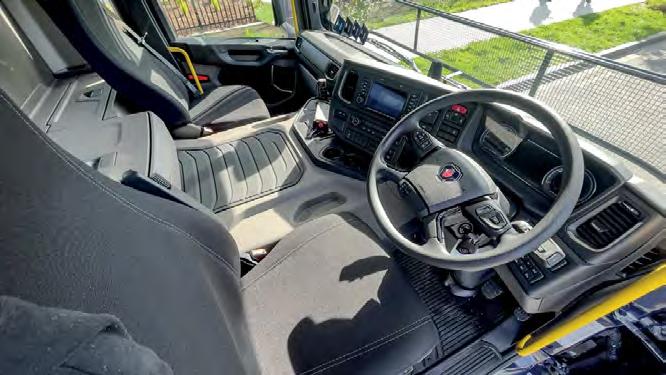
P-cab as comfortable as any other Scania.
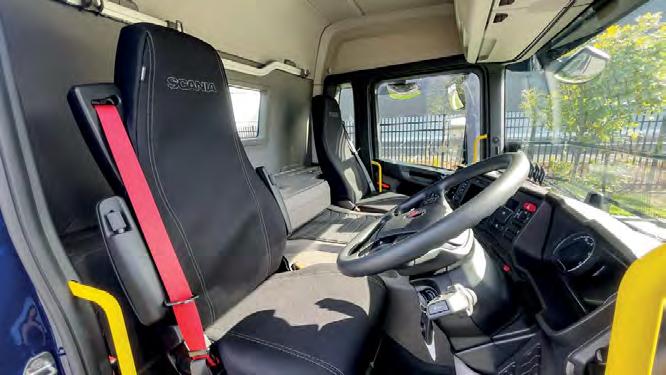
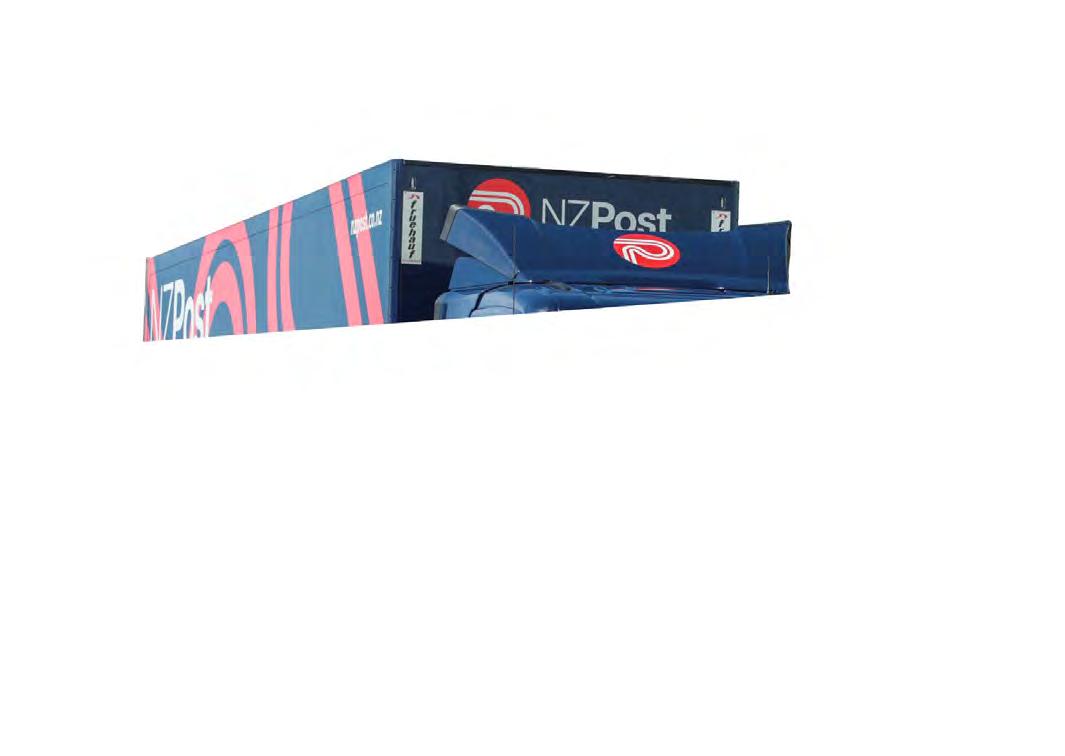
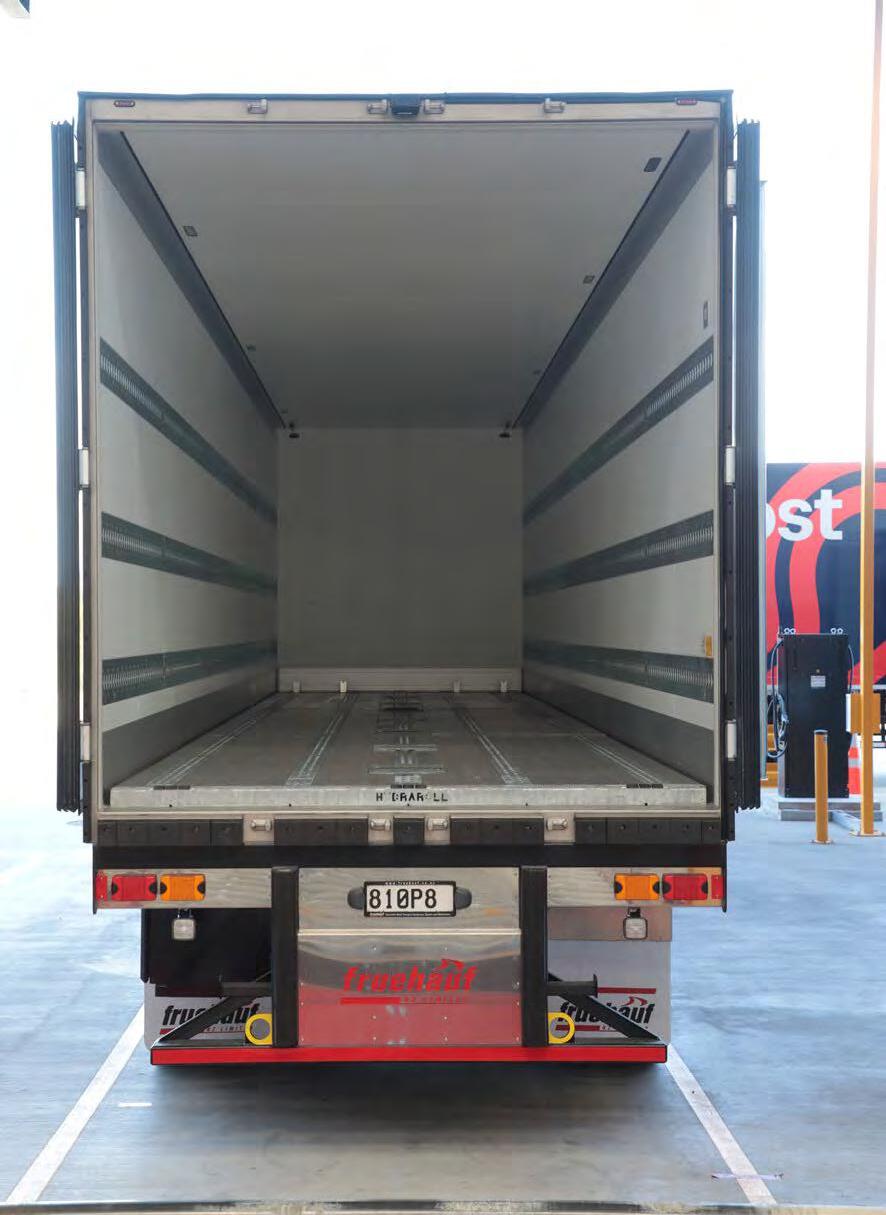
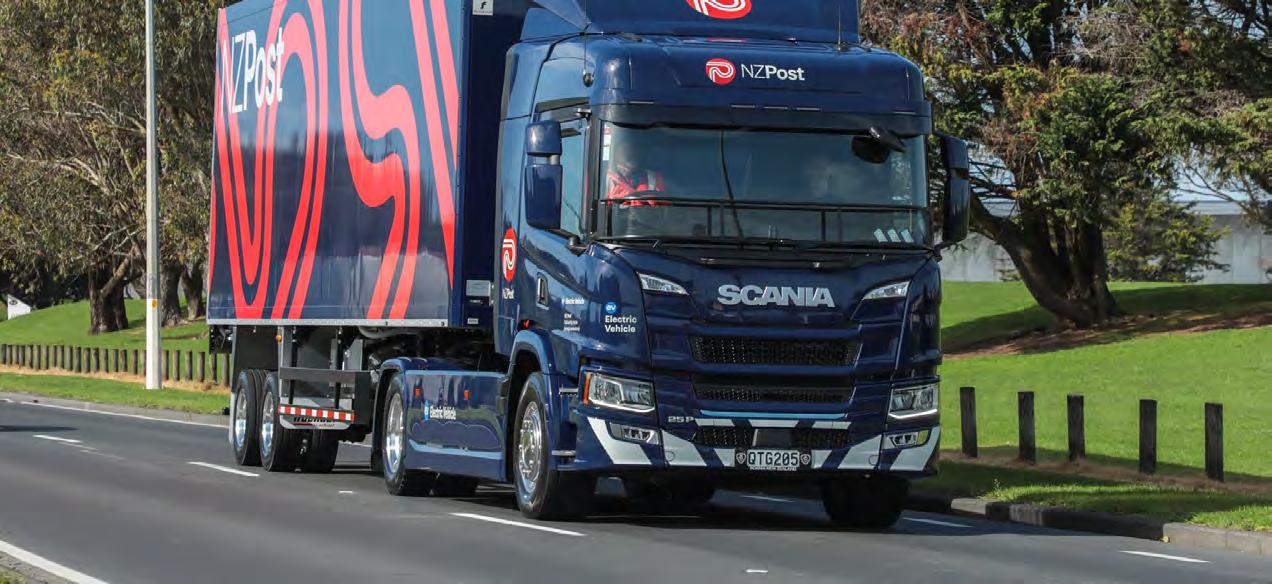


between two and three tonnes.
“So far, I’m really impressed, they’re just a pleasure to drive,” Greg comments as we head along Roscommon Road for the airport. “I had a few hours of training with Alfons [Reitsma – Scania New Zealand senior product engineer, E-Mobility], which I passed on to my drivers. There’s not a lot on it that we need to touch. So far, so good, really.”
The Scania’s 230kW (310hp) of continuous power and 2200Nm torque is more than sufficient for the task. Get up and go is plentiful, with a smooth shift at about 30km/h by the twospeed internal transmission. The
two-axle truck, two-axle trailer semi combination is responsive to turn in, almost overly, says Greg.
“With the distance between the rear wheels of the tractor unit and the front of the trailer unit, it doesn’t take much of a spin on the wheel to turn the trailer. Especially reversing … it’s taken a bit of getting used to, and particularly, because the steering is so light. Nice and easy is the way!” he says.
“The trucks are going well and are in full swing with no issues to date – except that Greg struggles to get the drivers out of them!” says Alfons of their operation so far.
Wow! This must be one of the most ambitious, complicated, involved cover stories in New Zealand Trucking’s history, and we couldn’t have done it without the gracious input, time and effort of all involved.
From the side of NZ Post, a huge, warm thank you to Sarah Jarvis, Ryan Beale and Conor Keane for your time, sharing insight into your incredible organisation, and helping to coordinate some very busy trucks.
To Neil Dennett, Ramesh Lal and Greg Carley, thank you for making your respective trucks available, and providing critical info about their operation. And to drivers Dev Narayan, Gurdit Dhillon and Ajay Kumar, thank you for having us along for the ride.
Finally, thank you to Grant Doull of Hyundai New Zealand, Matt Gillatt from Keith Andrews Trucks and Alfons Reitsma from Scania New Zealand for sharing insight into these amazing machines and for your ongoing support of New Zealand Trucking Media.
Tare: 9000kg (load cert)
GVM: 19,500kg (load cert)
GCM: 29,000kg (load cert)
Wheelbase: 44350mm
Electric motor: Permanent magnet electric motor with oil spray cooling
Power: Max - 295kW (395hp), continuous230kW (310hp)
Torque: 2200Nm
Emissions: BEV
Transmission: Two-speed internal
Clutch: N/A
Chassis: Undisclosed
Front axle: Scania
Front-axle rating: 8000kg (load cert)
Front suspension: Scania air, fast level adjustment speed
Rear axle: Scania
Rear-axle rating: 11,500kg (load cert)
Rear suspension: Scania air, fast level adjustment speed
Brakes: Disk. ABS, EBS
Auxiliary braking: Five-stage regeneration
Additional safety: Scania ADAS package, ESP. Driver airbag
Batteries: Nine x 33kWh
Battery capacity: 297kWh (total installed)
Charging: CCS2 at 200A (130kW)
Estimated charge time: 100 min
Maximum quoted range: 250km
Wheels: Alloy
Tyres: 385/55 R22.5 (f) 275/70 R22.5 (r)
Electrical: 24V
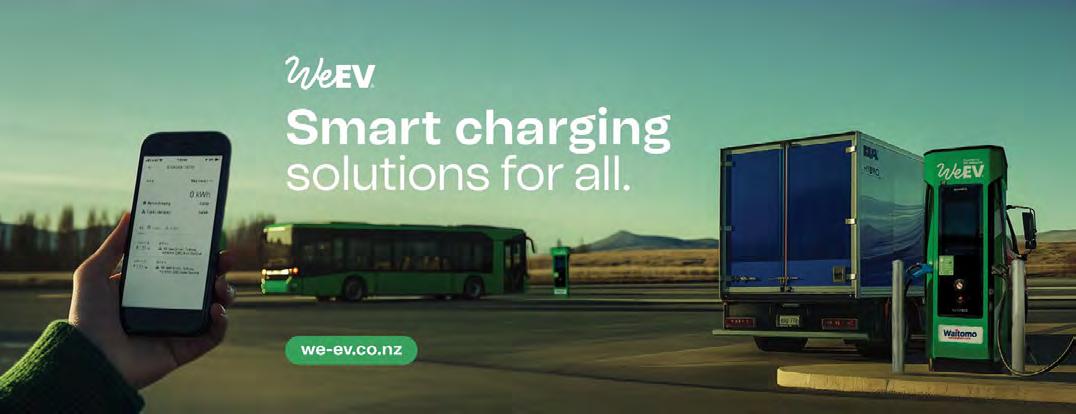
From light to heavy-duty trucks and everything in between, there is a Hyundai Truck for your every business need.

MIGHTY
• 6-speed Allison Automatic
• Range of bodies built from the factory for your specific needs, or sold as cab chassis
• Short delivery lead time
• Licence type Class 1 or Class 2
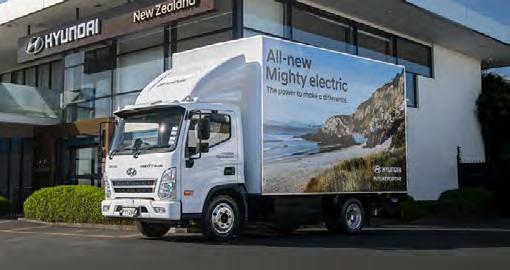
MIGHTY EV
•Introducing our new zero-emissions truck(1)*
• NZ tested range of over 200km, while loaded to 5,995kg, on a single charge
• Fitted with the latest in-cab design, technology, and safety features
• Forward collision avoidance and lane departure warning
•Licence type Class 1 or Class 2
(1) Tailpipe emissions

PAVISE
• Full automatic transmission
• Range of chassis and wheelbase options
• Range of bodies built from the factory for your specific needs, or sold as cab chassis
• Forward collision avoidance and lane departure warning
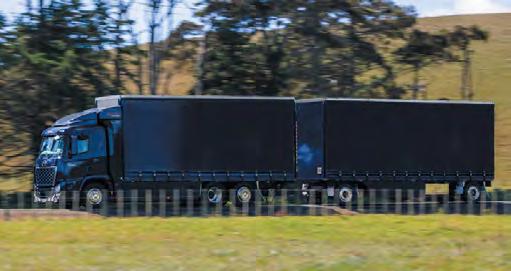
XCIENT Hydrogen
• New Zealand’s first hydrogen powered truck
• 42,000 GCW, 400km range between refueling, emits only water(1)*
• 15 Min refuel through Hiringa’s high-capacity network
• Replacing one heavy diesel truck can eliminate 200 tonnes(2) CO2 P/A
(1) Tailpipe emissions (2) Based on 180,000km @ 2.4km/ltr diesel Call 0800 HYUNDAI (498 632) or visit hyundai.co.nz to find your local dealer today hyundai.co.nz/trucks

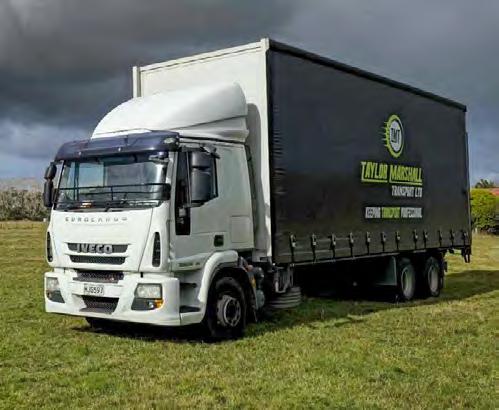
Taylor Marshall Transport has owned the Eurocargo for 13 months and put it to work on Auckland’s North Shore.
Currently owned by: Taylor Marshall Transport
Current odo reading: 372,016km
Mechanical work: New curtains and fixing wiring problems that caused fault codes
Current work profile: Palleted and general freight
Currently driven by: Anthony Bartlett
Basic original spec: Iveco Tector F4A E28 at 205kW (279hp), ZF 9S-110, Meritor MS-10164, 4.1:1
What we said in 2014: “The Iveco is full of European traditions, such as comfort and visual appeal. The outstanding feature is the truck’s quietness, the decibel meter indicates the cab noise matches that of a car.”

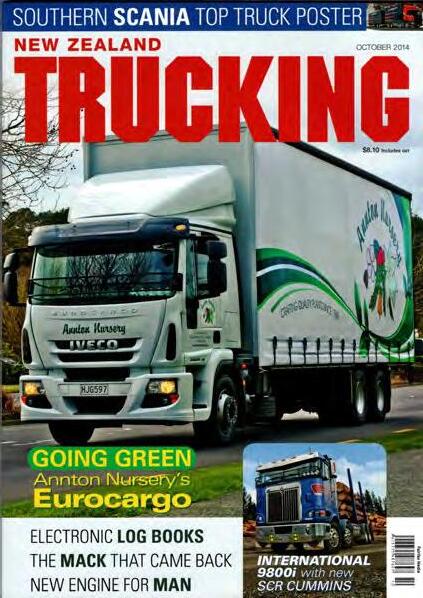
The Eurocargo was originally used for plant transport by Annton Nursery of Cambridge.





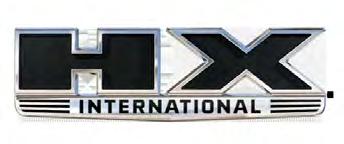
AN OUTSTANDING PRESENCE IN THE TOUGHEST OF JOBS. LEADING SF AXLE at 760mm LOWEST TARE Classic Style Truck.
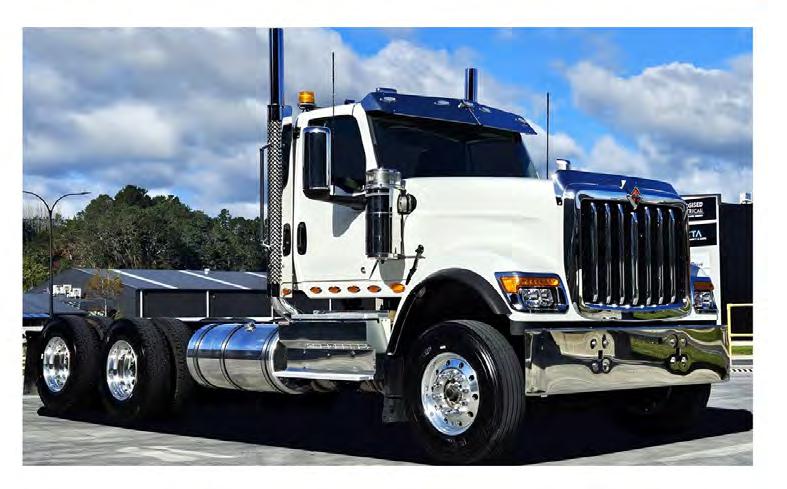
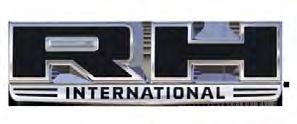
R8-BT 8080kg (Tipper spec) C&C, less fuel, photo displays options

T8-LX+ 8450kg ! 56T GCM Rigged & Fuelled (as shown)
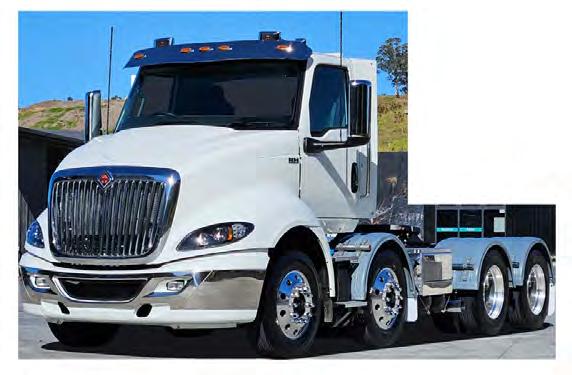
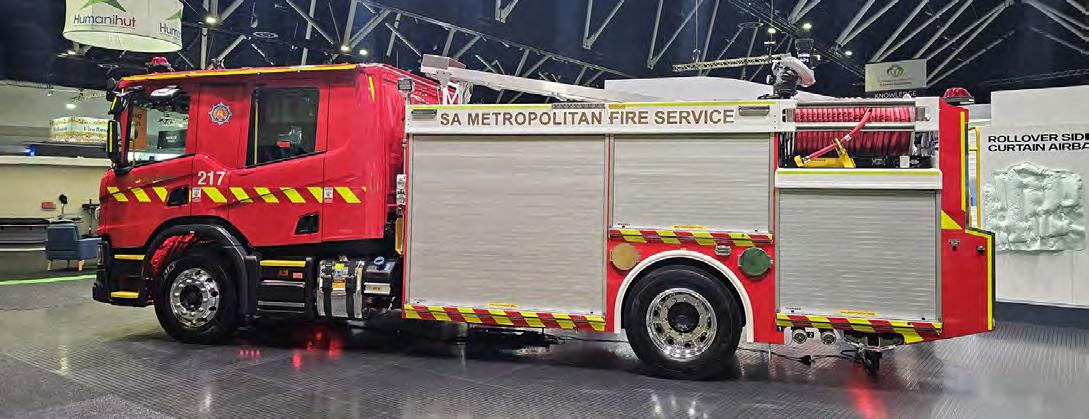
Story by Faye Lougher
Photos: Fraser Fire and Rescue
JZealand, and John Fraser taught me all about engineering. He taught me everything I know –but it was a small percentage of what he knew.”


ohn Fraser established J J Fraser Engineering as a production engineering company in the 1950s. Now known as Fraser Engineering Group (which comprises J J Fraser Engineering, Fraser Fire and Rescue, and Fraser Fire and Rescue Australia), it is one of the world’s leading providers of emergency firefighting vehicles. More than 1100 are currently in service in Australia, New
Zealand and the Pacific.
Following John’s death in 2022, the company continues to be run by director and general manager Martin Simpson and company director Raewyn Fraser, John’s daughter.
Martin was an underwater weapons specialist in the Australian Navy, with plans to start up an adventure tourism operation in North Queensland, when fate brought him to New Zealand in 1987. “I came to New Fire appliances are a common sight on our roads, but few people are aware that most of them are built by Fraser Fire and Rescue in Lower Hutt.
When Martin joined the company, it manufactured components for JF Hargreaves and New Zealand Railways, and undertook large jobs for Maud Kirk Couplings, Formway and Marine Air Systems.
“In 1987, we had the Stock Market Crash and then the government of the day, in all its wisdom, decided to outsource most of the manufacturing,” he says. “That was the start of where the government lost its way with the importance of manufacturing, and that continues to this day.”
In 2000, he heard that fire appliance manufacturer Lowe’s
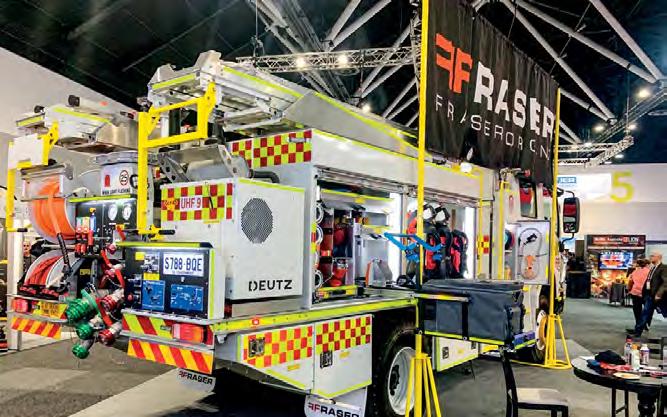
A display of the amazing kit Fraser Engineering builds into its units.
Industries was in financial trouble and had been put into receivership.
“At that time we were manufacturing hose couplings and other components that went onto those fire appliances for Lowe’s, and also supplying the fire service with various components.
“I was just passing their doors one day when they were in receivership. The receivers were trying to trade out when they got into trouble. When I turned up, they had just virtually laid off all the staff and the company was going to completely disappear. I met the receiver, and then did a deal to try and turn it around. I went back to the engineering workshop and said to Raewyn that we should
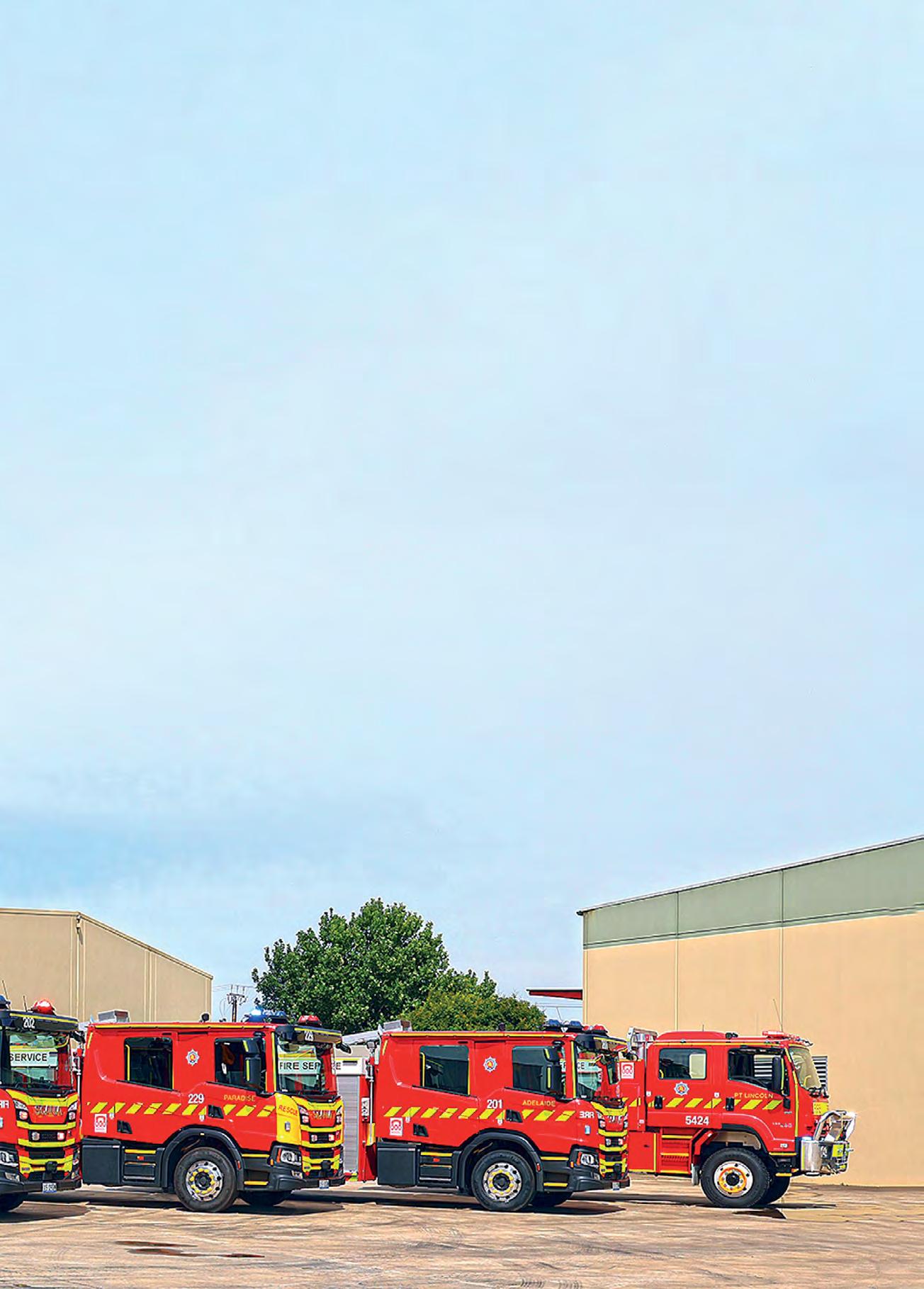
buy them. And to my surprise, she said, ‘What a good idea’.”
Martin, Raewyn and John retained the remaining 10 staff to ensure their knowledge wasn’t lost.
“When I took them over, we had no work. I told the staff that if they were prepared to work in Frasers and do whatever we required, we would try and pull out work and see what we could come up with.”
He says it took a good six months before he secured that work.
“I think it was for police doghandling vehicles. That was one of the first jobs we got. Then we tried to get work with the New Zealand Fire Service but to our surprise, they were not cooperative. The first order I
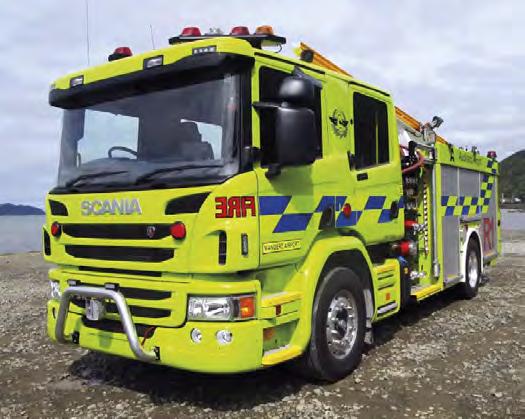
managed to secure was for one type 3 heavy pumper for the Australian Capital Territories.”
Martin says they had to complete and deliver the vehicle before they were paid for it. The process was complicated further because the order was for a truck that was caught up in the receivership.
Once that order was completed, they convinced the South Australia Metropolitan Fire Service to allow them to get one of their chassis out of receivership too, and built a truck for them as well.
“Both authorities were so happy with the vehicles that South Australia then gave me the rest of the order for about another 10. And then eventually we won a contract with the New
Zealand Fire Service.”
After taking over Lowe’s Industries, they concentrated on doing as much of the manufacturing and fabrication as possible in-house.
“Now we are probably the most advanced company in the world for what they call vertical integration, where we have our own foundry, electroplating, powder coating, CNC sheet metal, CNC machine shop, and then we have aluminium fabrication, stainless steel fabrication, steel fabrication, and then a full electrical department. We also have a huge design capability utilising SolidWorks design software. This significantly reduces our carbon footprint.”
Martin constantly strives to
be innovative and to improve everything they manufacture.
“For instance, we’ve developed our own compressed air foam system. Basically there are hundreds of things we make – we supply all the waterway and firefighting equipment for New Zealand, all the hose couplings and nozzles and landing valves – virtually anything that you can imagine that can be made, we can make it. There’s no limit on what we can make, the limit is on time and resource.”
While road regulations vary from country to country, the extremely harsh conditions in Australia and New Zealand must be taken into consideration when developing appliances for these markets. Martin says the bushfire vehicles they have developed in collaboration with the South Australia Country Fire Service are believed to be the most advanced and safest products on the market.
“The vehicles 20 years ago were relatively basic, whereas today they are far more complex, containing far more electrical systems, communication systems and lighting systems. They’re also required to carry as much equipment as they possibly can, so we’ve developed stowage systems that are easy to access. And of course, on all trucks, crew protection is at the forefront.
“They are fitted with a system called a deluge halo that provides full crew protection around the cab – all the tyres are protected, and all the electrical systems that can stop the truck from running are fire lagged and insulated. We’ve also developed a remote-controlled water cannon that can be operated from inside the cab. And they have thermal dropdown curtains inside the cab to stop the thermal shock, because the rapid temperature increase can cause the windows to blow out.”
He says it’s a two-way street and a lot of ongoing interaction goes on between the two countries.
“Certainly in Australia we
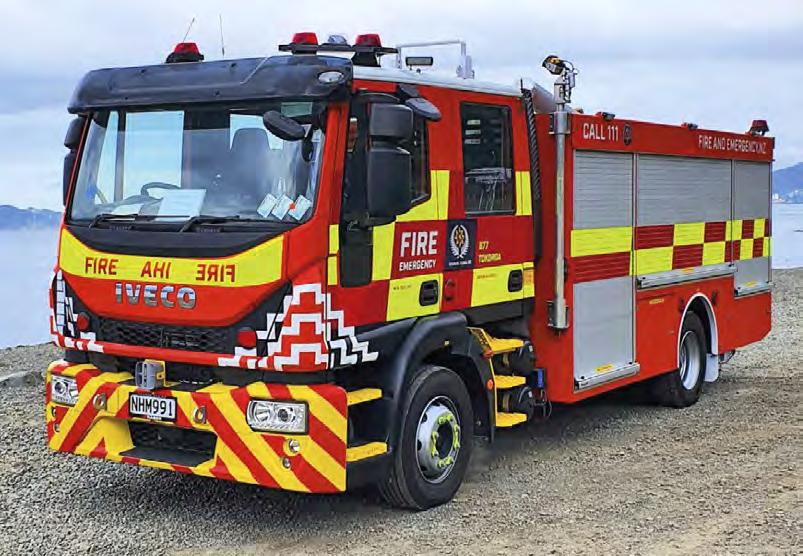
have very technically capable teams that collaborate with our design teams and come up with new and evolving solutions to problems. We learn from all the different road conditions and we look at and monitor the life and the performance of these vehicles over time. If we find, say, components in one vehicle are not lasting as well as in another vehicle, we then re-engineer it to suit the harshest conditions. We’re constantly involved in improving the quality of the vehicles, which is to the benefit of the end user.”
Fraser Fire and Rescue is currently building three type 1 4x4 appliances for Fire and Emergency New Zealand (FENZ, which the fire service was renamed in 2017). The type 1 makes up approximately 40% of the fleet. It carries up to six crew, 1000kg of equipment, and 2000L of water. It was also installing pumps, building the lockers and installing the emergency lighting and equipment on three type 5 medium aerial appliances for FENZ.
“We all know the flow-down effects of economic and social benefits to local industry and the local supply chain. When these vehicles are damaged, we can manufacture components
required and turn them around really quickly.”
In addition to New Zealand, Fraser Fire and Rescue builds vehicles for South Australia, the Northern Territory and ACT, as well as various agencies and mines throughout Australia. It has also supplied fire appliances to the New Zealand Defence Force, and airports in the Pacific Islands.
Fraser Engineering’s main site is in Wingate, Lower Hutt, and there is a large manufacturing operation in Adelaide that also does warranty support and servicing of the vehicles in Australia. Across the whole company there are about 140 staff, the majority in New Zealand. Some staff have been employed via a Ministry of Social Development programme.
“They give us people who are in the social welfare system with no engineering experience whatsoever. Currently we have about a 50% success rate with training them and finding out what they’re good at, giving them a purpose, and then giving them full employment. All of the people we’ve taken on add significant value into this company.”
Martin says with the current change in the economy, he is finding it a lot easier to find
quality staff in New Zealand.
“I think the attraction of working for us is our stability. People now realise there’s more of an advantage to having your wages guaranteed for years into the future. With the contracts we have now, we’re flat out for at least the next three years.”
Martin says he has been waiting since 1987 for a government that embraces manufacturing and recognises its value to the economy and the flow-down effects to all of society.
“We are a major exporter, and have the potential to create not just millions, but billions of dollars worth of exports – yet we don’t have the government’s full support. How could that even be possible in an economy that is so dependent upon export dollars? It’s just because we’re not trending; we’re not the movie industry, we’re not the wine industry. It’s not seen as a growth industry, and it’s not seen as something that provides heaps of jobs and heaps of money.”
He says there is a symbiotic relationship between the transport industry and the manufacturing industry.
“The flow-down effect from manufacturing is so massive, but it is not understood because our people in government often
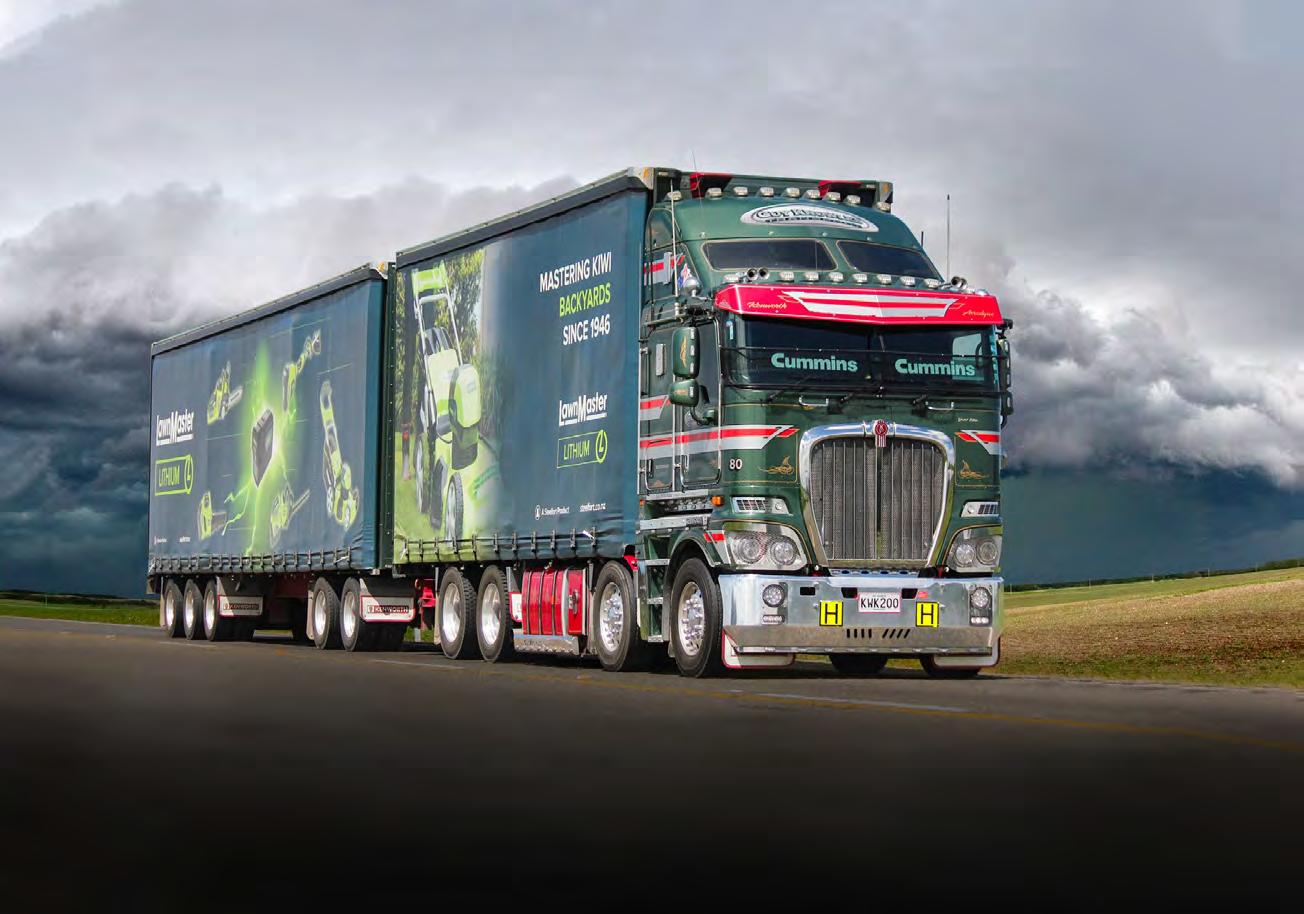

don’t have the fundamental experience of manufacturing or product development. In Australia it’s very, very different, and it appears that their politicians are far more in tune with the manufacturing side of things now than they’ve ever been before. There’s been a huge change, and they’re far more advanced than us.
“We have $30 million worth of the latest manufacturing technology and we can make anything here, but it can be a lot easier if you’ve got the will of your government.”
Martin says they have the potential to double their current output by streamlining and increasing their technology base. At present they are building a significant number of appliances for South Australia, both the Country Fire Service and the Metropolitan Fire Service, and also supplying some vehicles for the Northern Territory.
“We believe that our quality is second to none, and
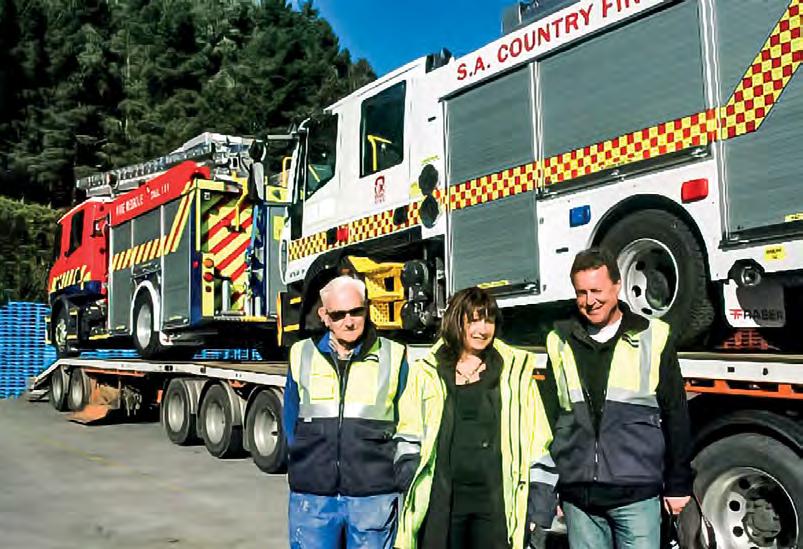
we are currently exploring the opportunity to set up a manufacturing facility in Brisbane and expanding our manufacturing facility in Adelaide. I believe that we’re in a very good position because of our reputation and our quality is
now being noticed throughout the other states. We certainly hope to be working with some of those states in the very near future.
“It’s all about partnerships and we believe that developing our partnerships in the

Australian market will open up significant growth opportunities for us, and that is driven by being able to deliver vehicles on time to the specification required and meeting their budgetary requirements.”



Story by Dave McCoid Photos as credited
Having mentors and role models to inspire and help navigate the challenges and potential traps in life’s journey is always a help. There’s no question for myself and many others, Yogi Kendall fits the role model bill. Boundless energy for the industry we all love, an advocate via his board membership of the National
Road Freighters Association (Aus), and one of the genuine faces of our industry in the hit series Outback Truckers. Yes, he’s all those things, but most importantly Yogi is a bloke who always has that minute of time a fan hopes he might, just for them.
However, I’m wondering if I’ve found my limit. The point where I can no longer attempt
His bull’s name was Curley –and as our hero sailed skyward at around the four-second mark, the look in Curley’s eyes was one of total satisfaction; another one gone, his feed and shelter for another day well secured. Interpreting Yogi’s musings in the moment was somewhat more difficult. On the one hand, he was sure he had secured the $60 wager with wife Amanda and the kids as to the length of time he would remain mounted on his allocated beast – 3.5 seconds was never going to be a challenge, and his time aboard had surely approached seven seconds at least. Yet at the same time, there appeared an undeniable apprehension. Having passed his VCE exams at high school (our UE), information long since filed deep in his cerebral archives on the laws of mass, gravity, speed and hard surfaces were all right there – front and centre. His parietal lobe must have resembled Einstein’s blackboard.
Then came the second that never ends, the one at the top of the curve – where Newton’s greatest discovery overcomes that which attempts to resist it. Even for me it was an eternity; God knows what it was like for him. “Sawdust is soft,” I thought, but then I thought hay should be too, yet my arse was plenty sore enough from an hour sitting on this straw bale.
Balance in the universe is critical, and as our mate approached terra firma, the ever-increasing acceleration associated with Yogi’s rapid loss of altitude was matched by the rate at which our eyes were opening and jaws were dropping.
to emulate his example. What’s brought me to this moment of contemplation is seeing my good mate ‘12ft’ above the bull that’s just dislodged him from its back.
Being the never-say-no man he is, our Yogi had signed up for the celebrity bull ride at the post Casino Truck Show, Buck’N’Trucks rodeo event in New South Wales in August.
Yogi’s beloved Amanda sat there with that “Really?” look on her face. At the same time she was quietly thankful for all the machines she’d loaded onto their big purple Kenworth and her own gear-changing capability. Would Venus need to make ends meet while Mars lay in traction? At least fronting the next series of Outback Truckers would allow her to cement the brand behind the brand.
Then the moment came. The impact, the splash-down, the re-entry … the thud – and from us … the gasp. Amanda, Collette, Craig, Rose, Mike, Anna and me – rabbits’ feet clutched, our fingers, legs, arms, all crossed. Another microeternity passed, and then, like a middle-aged, chunky trucker thrown from a bucking bull, he rolled, clambered and clawed, but did surely arise from his wood residue crater – fist aloft and victorious. To say he strode off is a stretch … but at least he was self-propelled, so in the parlance of the great man himself – “Winner, winner, chicken dinner!”
It’s the day after and we’re all at Craig and Collette’s place, having a game of spot the cripple. It wasn’t hard, believe me. Never before had our industry hero taken one for the team quite like this. Yet do it, he had. Why follow the leaders when you can lead the followers? Sadly, the likelihood he will always lead alone might be high on this one. Based on what we all witnessed, there are no followers.
For those of you who decide to wait with bated breath for Yogi’s memoirs, and his recounting of this brief fling with Curley the bull, allow me to pre-empt what would otherwise be certain disappointment.
“They opened the gates; I hit the ground, don’t remember a thing.”
Go you good thing! Doing us proud again.
1) Looking sharp, arm up. ‘I got this, eight seconds here I come.’ 2) Yeah, na, that’s not ideal. Newton’s laws on gravity, Einstein’s equations on mass and speed … ‘Terra firma here I come.’ 3) Yep, that also helps explain the bruising. Go you good thing! Thanks Yogi for doing us proud again. 4) “That’s done! Food and shelter secured for another week. Mind you, he was a bit heavier than the usual rag-dolls.”
Photos: Copper Donkey Photography.
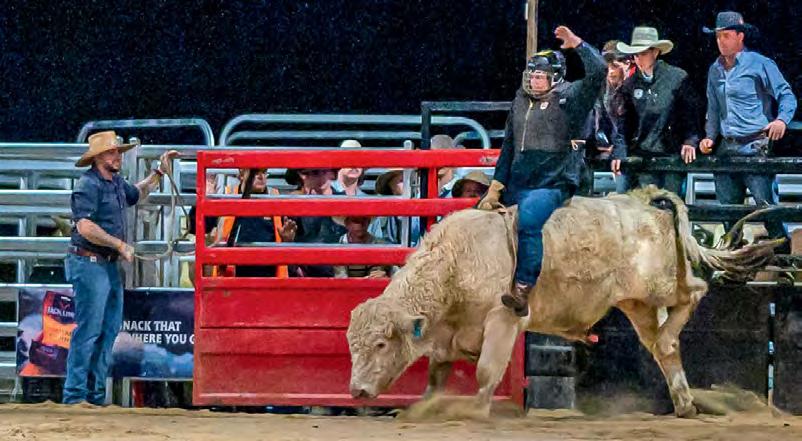
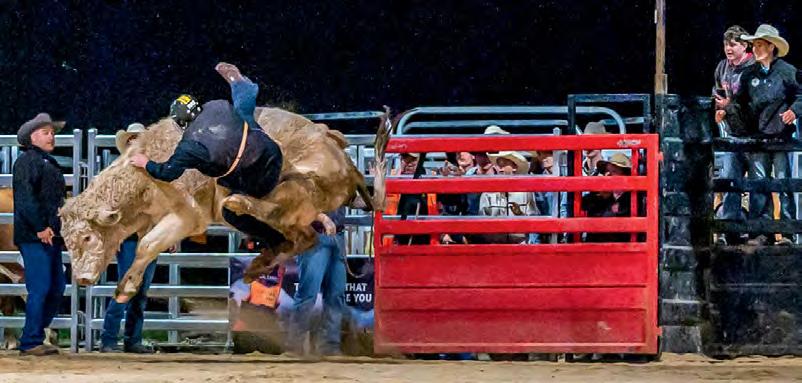

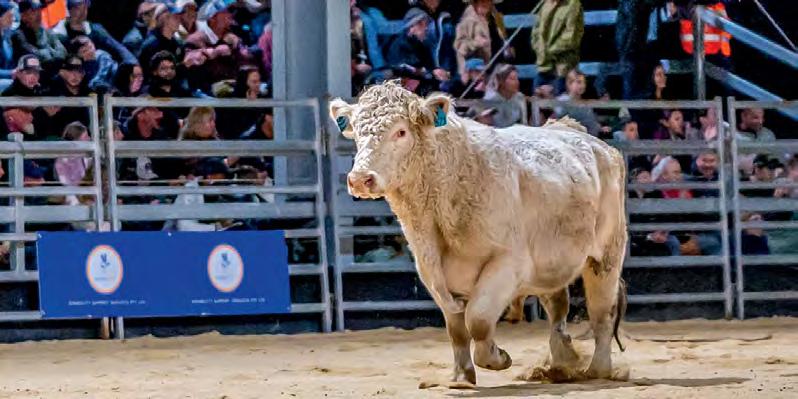
Mike Beaumont
Wire rope barriers have a lot to answer for – just ask every motorist forced to make a 30-minute detour via Shannon because the Manawatu bridge south of Foxton was closed once again for repairs to the safety barriers.
Mike Beaumont was grabbing his lunch in Shannon when Faye Lougher caught up with him. He’d travelled from Bulls that morning and was heading to the Port of Wellington with a load of logs.
Driving a 2022 Kenworth K200 with a Cummins 620 and 18-speed Roadranger for Foxpine, Mike says he has been driving trucks for 20-odd years.
“I’ve always loved trucks and driving them just goes hand-in-hand,” he says.
Mike enjoys his job and the fact he gets to see something different every day.
“It’s all about seeing the country and you get to meet some pretty all right people.”
The main issue he sees is that not enough people are coming into the industry and there isn’t the same camaraderie as there used to be.
Mike obviously hadn’t seen the documentary about a woman whose husband sabotaged her parachute in an attempt to kill her,
Stoia Alin
While travelling through Europe in a motorhome, Mike and Alison Verran would frequently stop at roadside truck stops to do a bit of truck spotting.
On their way to Aachen, in Germany, they saw Stoia Alin preparing vegetables for his dinner on a makeshift table made with pallets. They stopped to say hello and discovered Stoia is from Romania. His English is limited but he was more than willing to have a chat about his driving life. Alongside his pallet table, he had a portable gas cooker inside his pallet rack, with his dinner simmering away on the cooker. He was definitely well set up for life on the road.
Stoia drives for HZ Logistics, which is based in Maasdijk, The Netherlands. He drives a 2023 DAF XF, carting mainly flowers, but also fruit and vegetables at times. Stoia was proud to list the countries he covers … Romania, Hungary, Bulgaria, Slovakia, Czech Republic, Denmark, Netherlands, Belgium, Luxembourg, France, Italy, Spain, Portugal, Greece and Switzerland. He was sure there were more, but he couldn’t recall!
Stoia originally trained as a chef but became a truck driver in an unusual way. “I worked in Germany, for a travelling carnival,” tells Stoia, “My boss had a truck. I sat inside it one day and I loved it. I decided to go back to Romania and got a job as a truck driver.”
Stoia has now been driving for six years. When Mike and Alison chatted with him, he was heading to Hamburg, Germany, then on to Austria. His load was half flowers and half mozzarella cheese.
Stoia says he loves driving because he can be among nature. “I like to see the mountains, the sea and the different things in each country,” he says. There is certainly a lot to see with the number of countries he travels.
Being on the road for a month at a time comes with issues. “The biggest problem is the thieves. They mainly take our diesel,” he says.

because when faced with parachuting or scuba diving, he chose the former.
“I’ve always wanted to go parachuting,” he says.
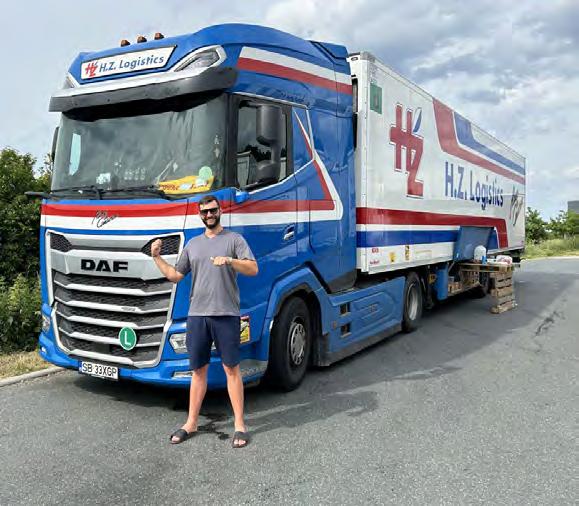
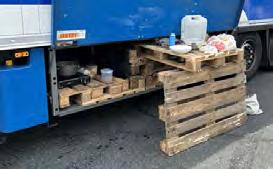
“After a month of travelling, I have two weeks off. Someone else drives my truck for those two weeks, but the truck stays in Romania.
“When I’m on the road, I like to cook my meals. I don’t like fast food! I make myself soup or something else. I am a chef; I know how to cook!” he says.
While chatting about food, it seemed appropriate to ask the vexing question: “White chocolate, milk chocolate or dark chocolate?” Stoia didn’t hesitate: “Dark chocolate. It’s not so sweet. I know it’s good for my brain. I like it with nuts in it.”




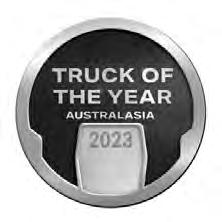
Dave McCoid
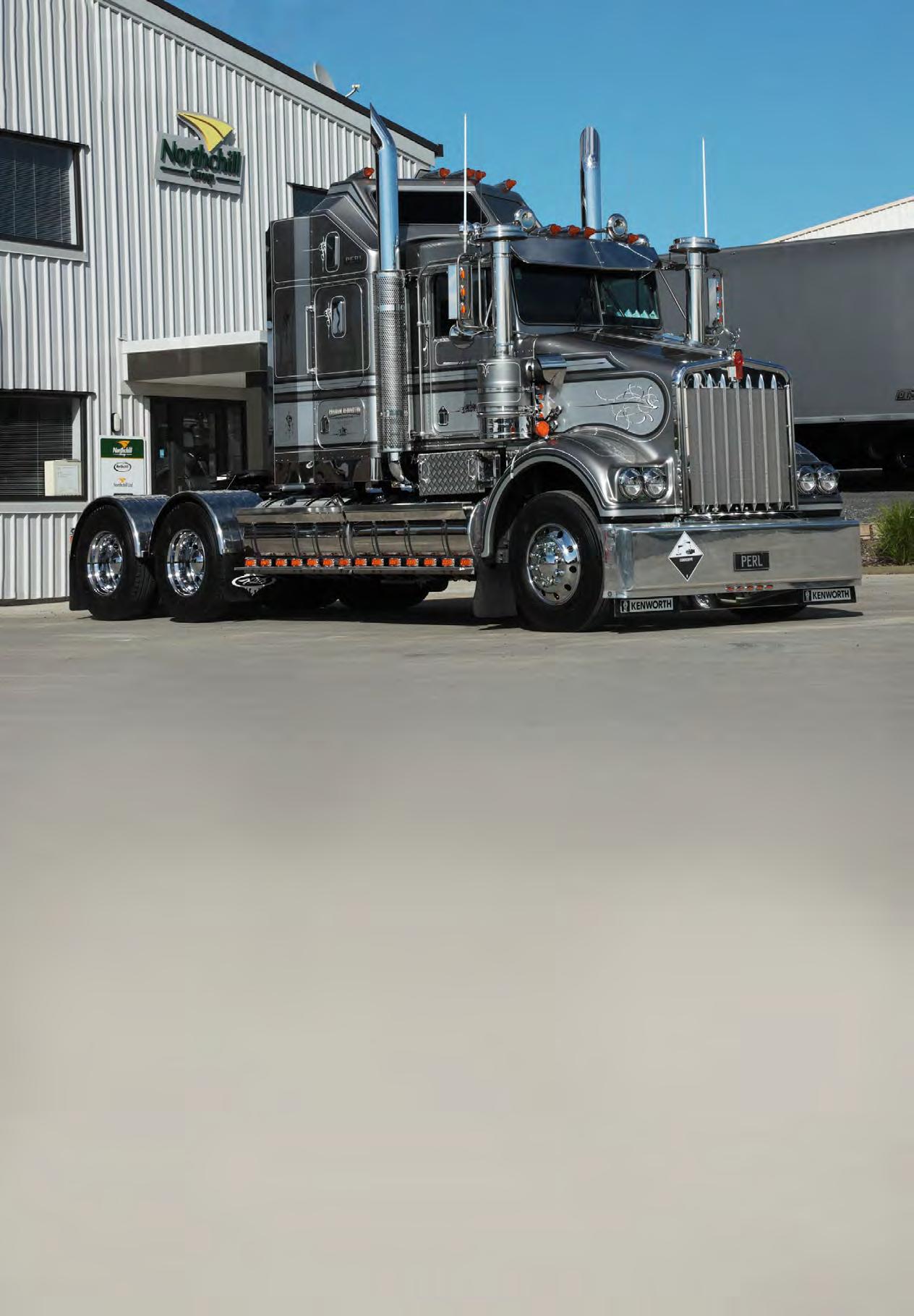
Nothing we humans can conjure up is ever as bizarre and inexplicable as life itself, and although this month’s top truck ticks all the boxes on the spec sheet, it’s the boxes it ticks in its driver’s heart that makes it all the more special.
Unicorns – the mythical horned horse too scared to board Noah’s Ark, according to the famous Irish Rovers song, The Unicorn. In modern parlance, it’s a label often assigned to something that simply shouldn’t have existed, yet does.
When Neil Powell arrives at work each morning and walks toward the Klos Custom Trucksembellished Legend Kenworth W900SAR he drives for Graham and Michelle Redington’s Northchill Group, he certainly has to pinch himself. What he’s walking towards shouldn’t exist. It simply shouldn’t be here in Pukekohe in 2024, waiting
for him to climb into the cab, waiting for him to turn the key and fire it up, to ease it into gear, and then together – man and machine – roll quietly out of the yard. But it does exist, it is here, and the sequence of events described above is Neil’s unbelievable reality every workday morning.
Neil (57) is a Rotorua-born third-generation truck driver who spent a good portion of his formative years in Australia following the decision of parents Doug and Elizabeth to pack up the family and head over the ditch in 1978. Doug drove and
owned trucks all over the east and south of the big land, and as a result, a young truck-mad Neil lived the maverick years of late 1970s early 1980s Aussie trucking right alongside his dad. Neil knows all about driving off ‘Aeroplane’ on the Hume Highway at speeds more aligned to aviation than trucking.
“I was there beside him every waking moment I could be. Mum said when I was home she’d turn on the vacuum cleaner in my room so it sounded like a truck engine, and then I’d be able to sleep.”
To put the Legend SAR he drives today into context, we have to go back to Adelaide

in 1983 and the Kenworth W900SAR Doug relief drove for his mate Bobby Fountain. With twin stacks, a 36in bunk and running a Detroit Diesel 8V92 and 15-speed Roadranger, Neil remembers looking at his father as the two-stroke Jimmy’s signature note filled the cab, and saying “What about this thing, Dad?” Those rides in the Fountain SAR sealed the deal – there was only one truck and there was only one model.
But history waits for no man, and it certainly didn’t wait for Neil. Kenworth ended the original W900SAR line just four years later, shattering our young hero’s dream. He figured by the time he became worthy of the SAR wheel he dreamed of, they’d all be long gone. “I was heartbroken,” he says with a laugh.
“We came back home in 1984. I only had one grandmother and she was aging rapidly. Dad said we’d missed out on spending time with her having been over in Aussie, and we should come home and make the most of it while she was still with us. We
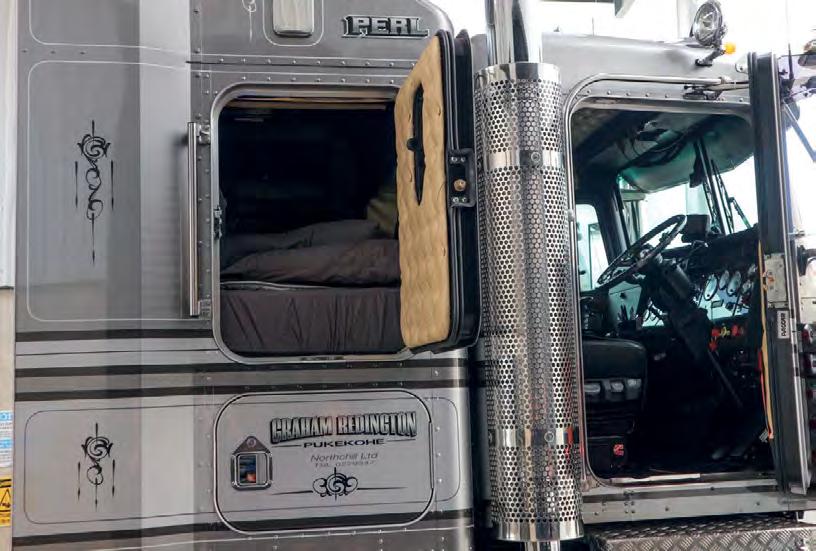
set up in Pukekohe. I was 16 at the time.”
Neil went to work at Ted Tyrell Engineering as a welder, but the call of the road was too strong and before long he was behind the wheel of his first truck – a Nissan Caball – at local firm Edwards Carriers, where Doug was also employed as a driver/ painter.
In the succeeding four decades, Neil has lived the trucking dream on both sides of the Tasman, working for some famous names, owning gear himself, driving and operating some spectacularly cool trucks. It was while driving for Auckland-based Nigel Livermore Trucking in the mid-1980s that he thought he’d ticked the
W900SAR box.
At the time, Nigel owned the ex-Barry Butterworth W924AR Black Bitch and the ex-Steve Gutschlag W900SAR (originally the Uhlenberg truck), running them on linehaul Turangi swap work, servicing his Feltex contract and general freight. Both units ran Detroit 8V92s with 13 and 15-speed
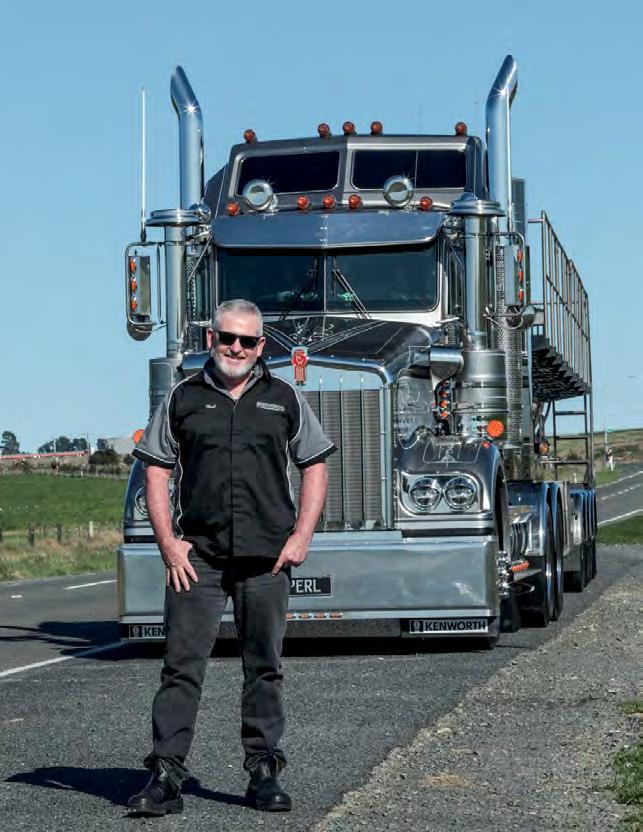
Roadrangers respectively, and prior to Nigel selling out, there were certainly shades of living the dream for Neil. As far as fulfilling destiny was concerned, little did he know that was just the warm-up.
Neil returned from a 12-year
There
are many who say, ‘It’s my dream truck’, but for Neil Powell, it really is the case.
stint over the ditch in 2013 working at Balle Brothers in Pukekohe for three and a half years prior to joining Graham and Michelle Redington’s Northchill Group in 2017. He started his time working in the controlled temperature

division before moving on to general work driving the Kenworth K200 Fat Cab DUKE For the past four years, he’s been in the tanker division delivering timber treatment product to various sawmills around the North Island.
It’s a comment we’ve had repeated to us every time we’ve encountered the Northchill operation: “It’s a great place to work. A great culture, and a real trucker’s trucking company.”
In 2020, Neil was handed the keys to a new Kenworth T659

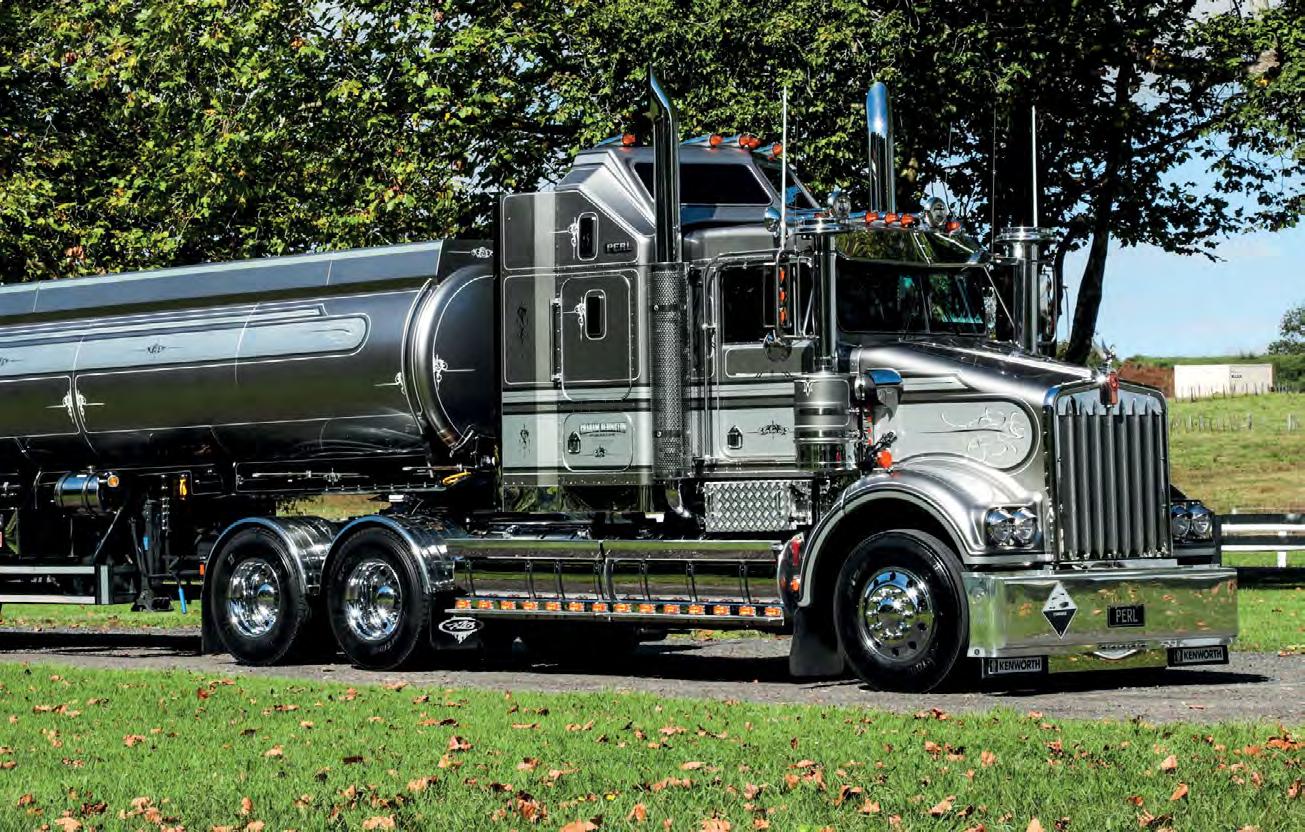
8x4 tractor with IT sleeper, a truck you could say is a bit of a unicorn in its own right, and a machine he rates right up there.
“That was – is – a great truck. I’ve got nothing bad to say about the 659 – I loved it, and still do.”
Following the release of Kenworth’s first two Heritage Series Legend models – the T950 and the T900 – news broke of a third Legend Kenworth timed to celebrate 50 years of Kenworth truck assembly in Australia. Of course it could only be one model; its most famous region-specific model, the W900SAR.
No Legend T950s made it to Aotearoa – the fixed production number set underestimated the tsunami of interest the concept garnered, but Graham and Michelle Redington did secure a T900 in the second release (New Zealand Trucking magazine, November 2019). He was also sure not to miss out on the W900SAR.
“They’re just really cool, and we needed to have one in the
fleet”, says Graham. That Graham felt the SAR was worthy of being named in honour of his mum, Perl, probably tells you all you need to know, and its build No.42 is the year of her birth.
Prior to the SAR’s arrival at its new home at 72 John Street, Pukekohe, a trip to Klos Custom Trucks North Geelong in Victoria, Australia, for the required accoutrements of class was necessary, as was a stop-off at Southpac Trucks on arrival in New Zealand for fifth wheel and engineering requirements. It’s a breathtaking sight to behold, with its 36in Aerodyne sleeper and decked out in the group’s grey livery plus the superb fouraxle Tanker Engineering semi on-hook – colour-matched to the tractor.
The only detail left to complete on this special machine was allocation of Kenworth Legend W900SAR No.42 to just the right driver – someone who ‘got it’, who ‘understood it’, and someone who would appreciate it. Maybe even someone whose own history was inextricably connected to it?
Engine: Cummins X-15
Capacity: 15L
Power: 448kW (600hp)
Torque: 2779Nm (2050lb/ft)
Emissions: Euro-5
Transmission: Eaton Roadranger RTLO22918B 18-speed manual
Rear axle: Meritor MT21-165GP with inter-axle lock and dual diff locks
Front suspension: Taper lead front suspension 7.2 tonne Rear suspension: Kenworth Airglide 460
Features / Extras: Kentweld polished front bumper with integrated marker lights in lower strip, lower bumper swing plate. Dual chrome exhaust pipes (7in). Highrise air intakes with mushroom top caps. Superchrome chrome wheels, Kenworth front mudflaps. Stainless-steel: drop visor, air-cleaner panels with marker lights, mirror panels with marker lights, rear of side skirts with marker lights, mudguards, wrapped tanks, rear bumper dress-up kit, tank panels with marker lights. Extra sleeper roof marker lights. Painted smooth alloy chassis covers and stripe work ... and, of course, the swan hood ornament.
And so, in 2024, some 37 years after the original model was discontinued, that’s the story of how the teenage boy who thundered up the Aussie
highways four decades ago sitting next to his dad in a Kenworth W900SAR, vowing that one day he would drive one for a living … did it!
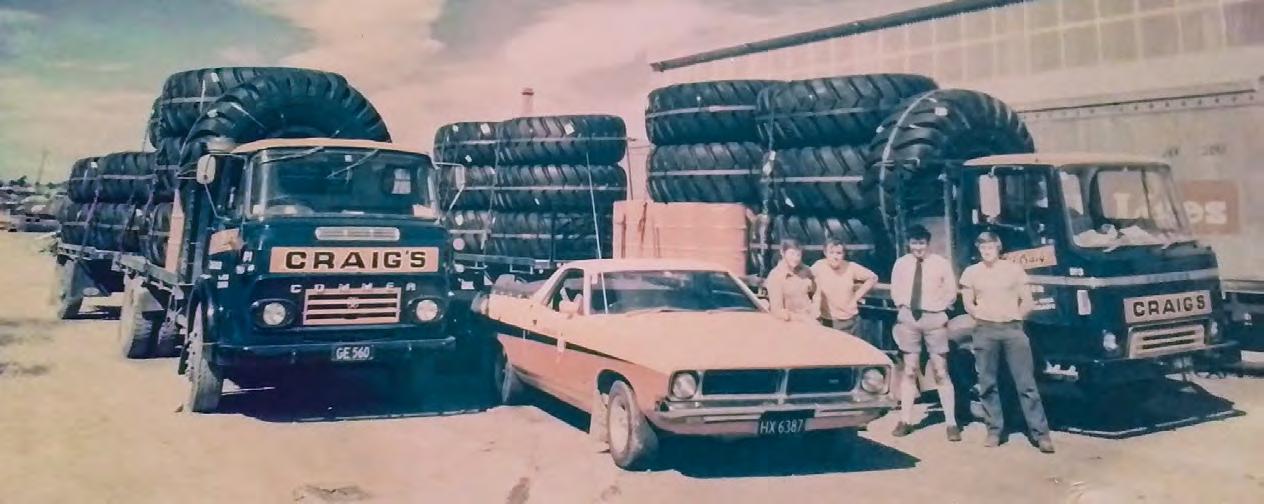
Reader Wayne Seelen sent in this gem, taken in 1977. Pictured is carrier Bill Craig and the Dunlop team at Tīmaru railway yards after loading earthmoving tyres bound for the Upper Waitaki power project at Twizel. The tyres were 33.5x33 Yokohamas and weighed approximately 810kg each. Wayne, ex-Dunlop and The Tyre General, was branch manager at Dunlop Tīimaru at the time. Now 80 years old, he shares his recollection of the time.
“Twelve of the tyres were on order for Higgins Earthmoving in Twizel, and the remaining 12 were for stock and made available to other contractors, like Bill Butson, Earthmovers Waikato, and others. The tyres sold at about $2900 each.
“In 1977, Dunlop had an earthmover repair section at its branch in Barnard Street,
Tīmaru, and gained a good reputation for repairing all sizes of earthmover tyres ex-Twizel. When Twizel finished, the repair section shut down.
“Bill Craig was our preferred carrier at this time. The Craig’s trucks were all Commers, from my memory. Bill had two trucks at this time, and I think he got to three, but I was transferred from
Tīmaru in 1978 and lost contact after that. I think he ended up with a courier business in Christchurch.
“I had 43 years in the New Zealand tyre industry, with both Dunlop and then The Tyre General group, but I can honestly say that the most rewarding time I had was during 1975 and 1978 when I spent
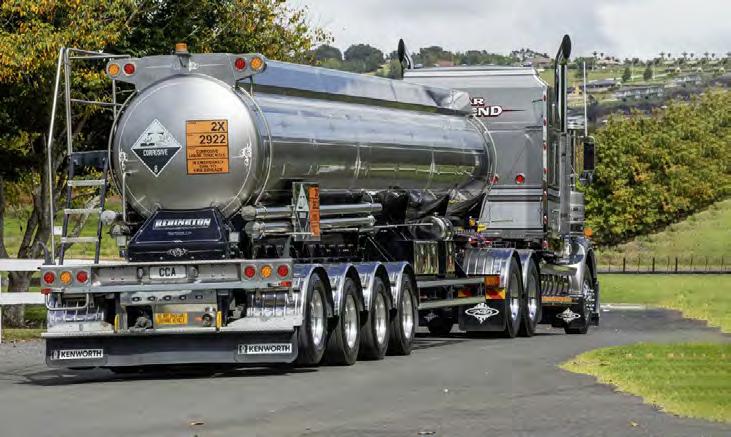
much time in Twizel – another story in itself.”
Thanks for sending that in, Wayne! If you have any memories you’d like to share, send them to editor@nztrucking.co.nz with a brief summary.


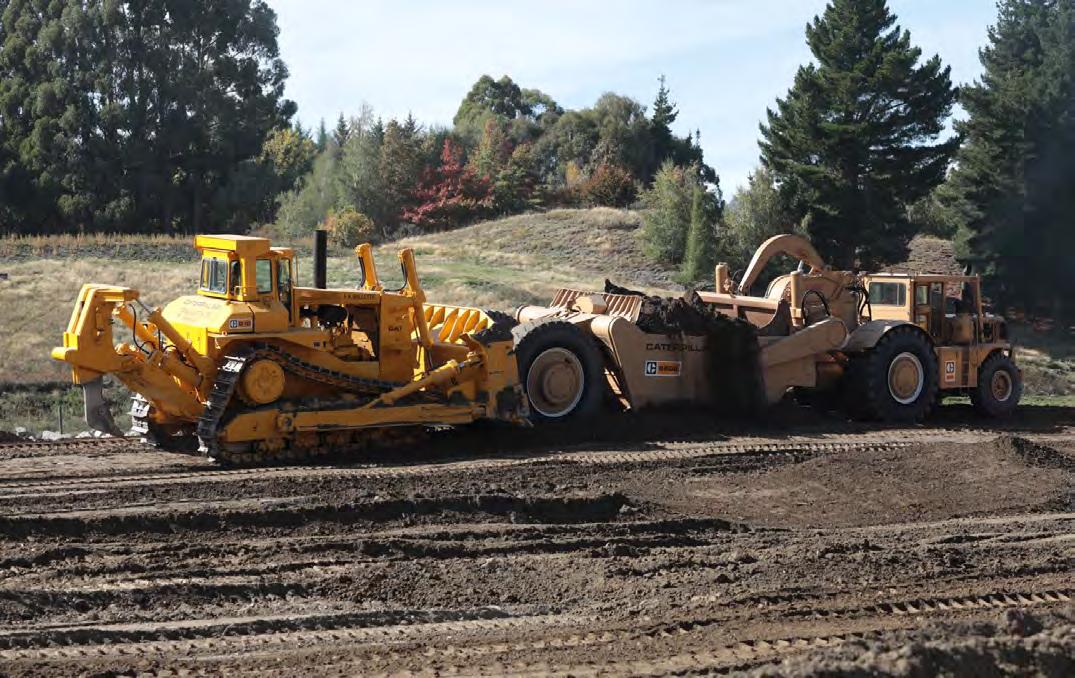
There’ll be plenty more wedding anniversaries, birthdays, graduations and all that ‘palaver’ - but Wheels at Wānaka 2025 is the end of an era you simply won’t want to miss.
We’re calling the photos for the next two months ‘push-perfect in yellow and green’. We’re starting with yellow, and a scene that was never witnessed in the New Zealand civil construction – a single stack Caterpillar D10 84W pushing a Caterpillar 660B motor scraper. Although we had the 84W in single stack version here, there were no 660 scrapers. They were a machine not suited for our task list – more your interstate motorway network builder. Both of these pieces are part of the Paul Clarke collection.
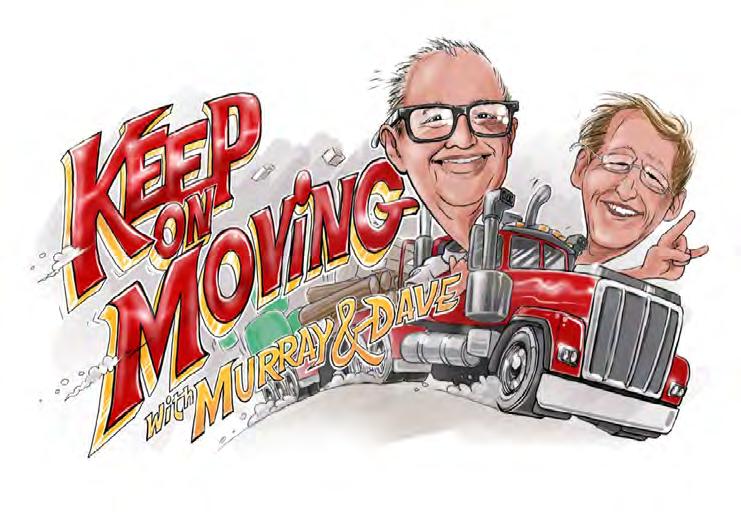








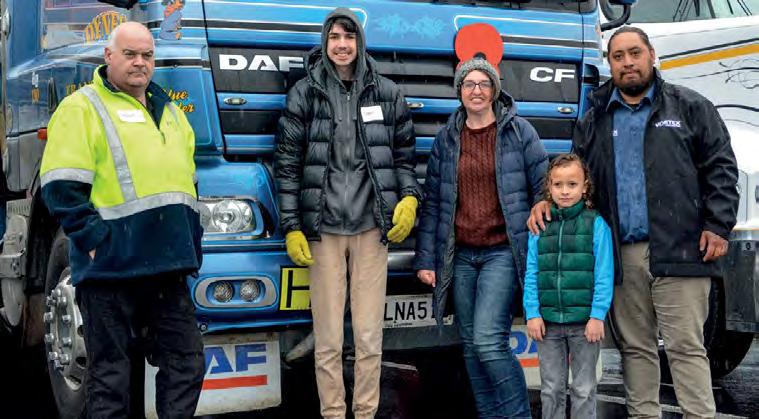
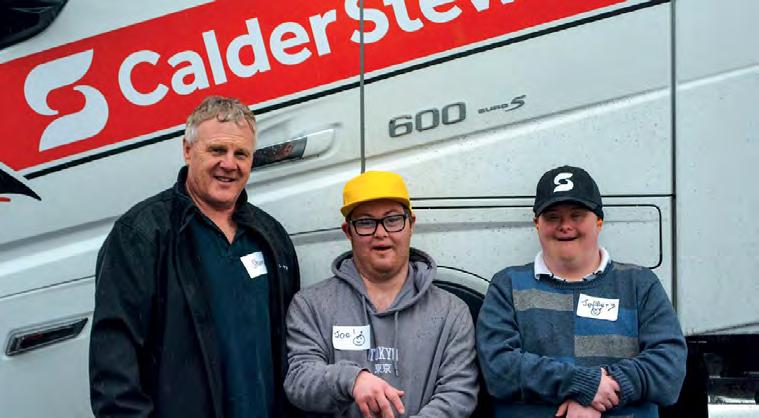
Taking kids for rides is what Dunedin’s Special Rigs for Special Kids is all about – and the 2024 event was as popular as ever.
It was a case of cold on the outside but warm on the inside as Special Rigs for Special Kids set off in its 31st year. On 25 August, about 240 vehicles trundled around the now familiar route from Dunedin out to Mosgiel and back again.
In attendance were primarily trucks, but there were also a few buses, an ambulance and a couple of police cars.
Mother Nature emptied out the bath again and left the fridge door open, but that didn’t stop large numbers of people from turning out and supporting the now-iconic event.
Organiser Greg Inch acknowledges the impressive turnout, considering how tough the current economic climate has been.
“We had a great turnout from local companies and drivers. We even had a driver come down from Auckland, who was blown away by the event’s atmosphere. Times are hard for the industry at the moment, but that hasn’t stopped the support for this event,” he says.
“We had a lot of drivers attend who have supported us from the beginning, but there’s a second generation of younger drivers coming in. It’s great to see the passion they’re putting in, how much they’re helping out, and taking pride in what the industry’s really about.”
Greg says 120 people volunteered this year, and he would like to thank everyone for their time and support.

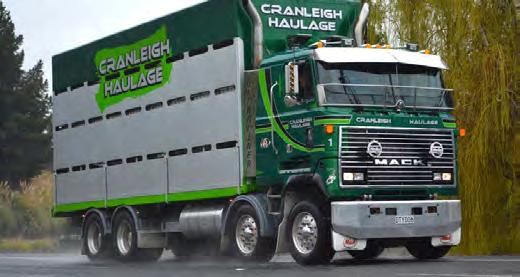
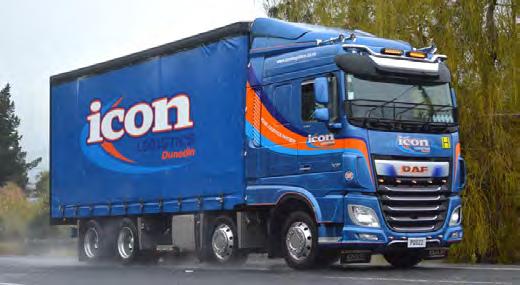
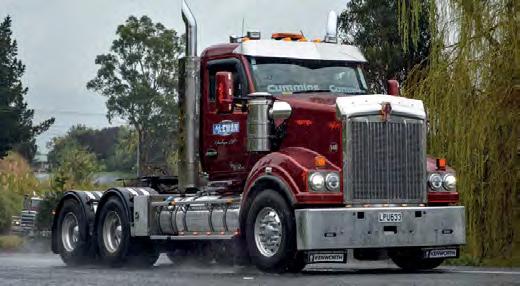

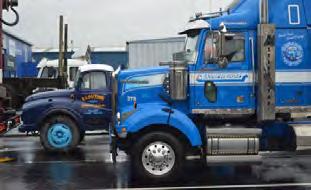
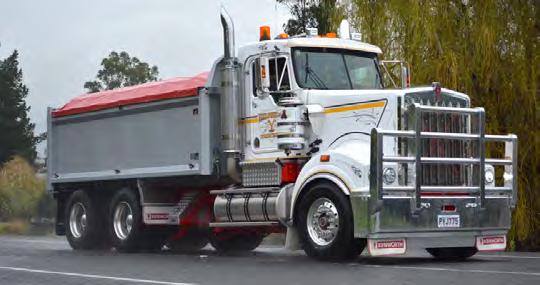

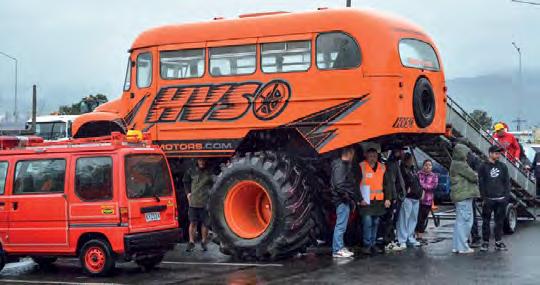







From wicked Western Stars to gleaming John Deeres and even polished Pontiacs, they all arrived en masse to support the 15th annual Hug A Rig day held at the Southern Field Days site near Waimumu. The sense of community spirit and resulting smiles on the recipients’ faces said it all.
Organised by Diane Elstob and husband Ian, the Hug A Rig day is all about providing youngsters facing lifelong medical conditions –both physical and intellectual – and their families with an opportunity to go for a ride in a cool rig, big or small.
This year’s event welcomed no fewer than 170 participants through the doors, and with 42 trucks, a blend of hot rods, classic cars and a couple of big farm tractors to boot, it sure kept the willing passengers busy jumping from one ride to the next.
Looking about the venue, you could not help but be extremely impressed with the level of organisation. Although the weather was mild and dry, the use of the Southern Field Days covered arena kept the guests protected from the
elements, and also made for an enjoyable area to enjoy the generous cuisine offerings that were available, as well as visit and interact with the various support organisations that were on display.
Diane praised the commitment of the public who get in behind the event every year. “It is a worry for me every year whether everyone will turn up – will there be enough trucks? – but then, on the day, they all start rolling in.
”It’s a great sight to see, everyone comes together and just gets in behind it and makes it run smoothly,” she says.
Representing the New Zealand Police, senior sergeant Gary Iddenten of the Gore station could not agree more. “It is fantastic joining in here and being a part of the Hug A Rig day. It is rewarding to see the commitment from the local
trucking companies and their drivers, giving up their time and providing the trucks, and it’s a fantastic opportunity for the public to interact with the trucks. You see the kids’ faces just light up. It is some quality time out for these families; they are faced with real challenges, and this event is also a little respite for those caregivers as well, because they really are the hidden saviours.”
The one-day event, held in early August, is a solid year in the planning. “As soon as we pack up this day, we take a breath and start planning the next one.
“It is a huge amount of work, the volunteers that come together to make it happen are all just amazing, but what makes it all worthwhile is when you see the smiles on the faces of the children and their families, that’s what it is all about,” says Diane.
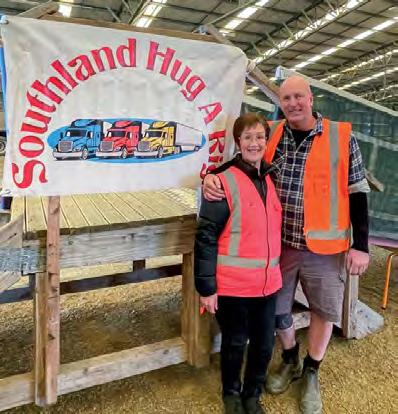


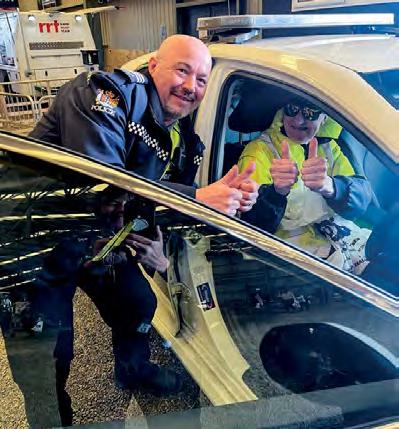
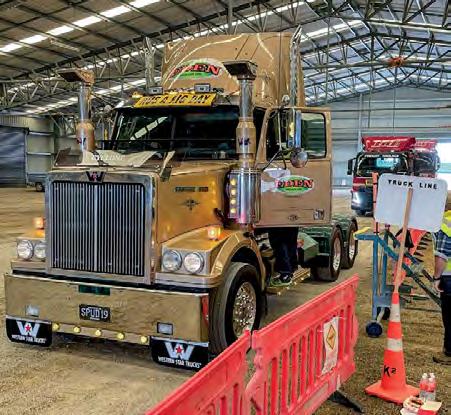

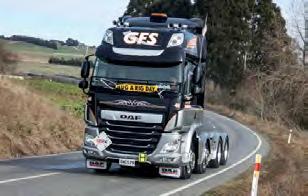
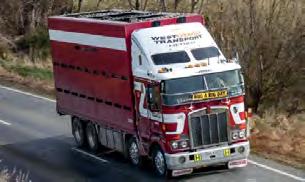


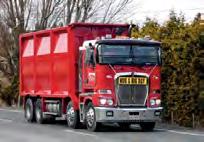


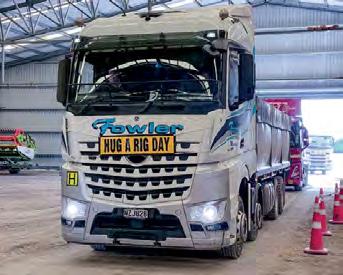

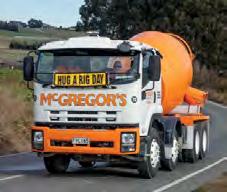

We wouldn’t have thought this one would be the stumper in a million years. We only got one correct answer, and that was from a cheeky staff member who will be taken out back for ‘a damn good thrashing’, as the proprietor of Fawlty Towers would have said … either that or it’s his shout next time we’re all together. It took three years, but at last, we’ve registered a win on our side of the scoreboard, and August 2024’s pic was certainly not the one we thought would do it. Our advice to you is the same as we’d give to Razor. Have an ice bath, drink a black coffee, go for a surf, do a Pilates class … reset yourself, and have a go at this one.
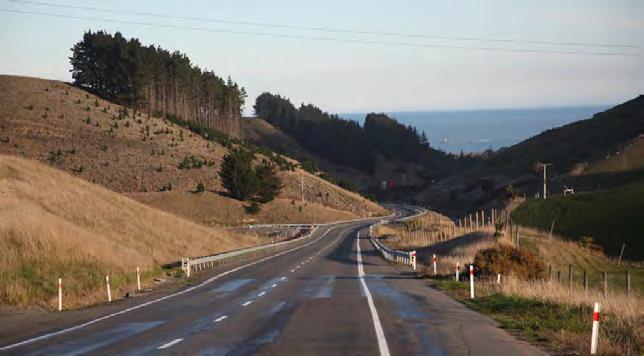
To enter, flick us an email at editor@nztrucking.co.nz
Subject line: Where’s that road? October 2024
Tell us your answer, and let us know your postal address.
Note: Please include the subject line above, or your entry might get lost in the pile. We’ll randomly pick a winner from the correct entries and see what’s in the prize basket. The competition closes at midnight on 31 October 2024.
NZ Trucking is New Zealand’s leading magazine for both the industry and the enthusiast, featuring the latest heavy truck and light commercial road tests, product news, and trucking personalities.
Subscribers will also get access to the digital magazine, meaning you can read it anywhere, at any time!
Pricing for subscriptions include postage and GST. Postage included.
So where was it?
The one that got away was, in fact, SH2, the Remutaka Range. Who would have thought you were going to miss this when you nailed a remote rural road in the Far North?
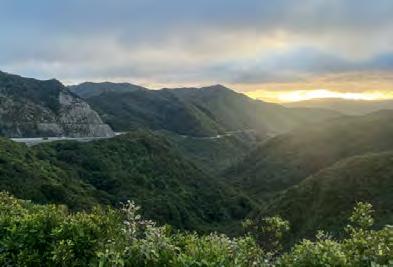
Phone: 0800 878 256 or visit: NZTrucking.co.nz/Shop
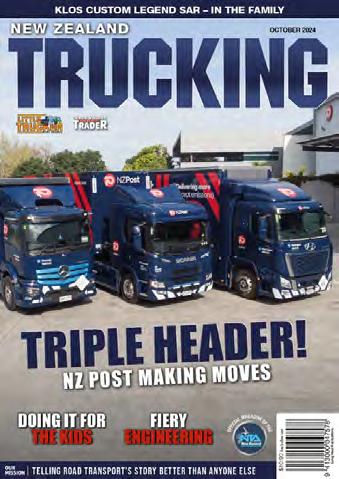

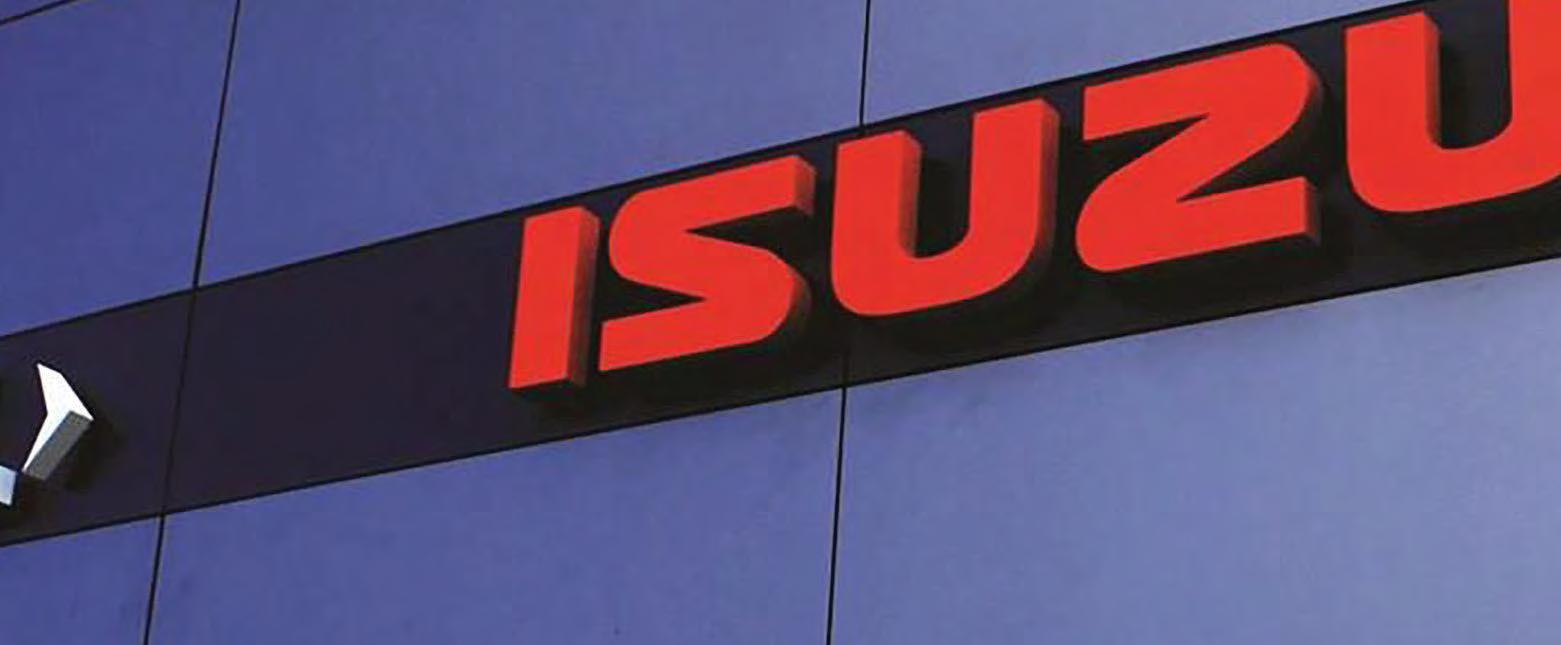


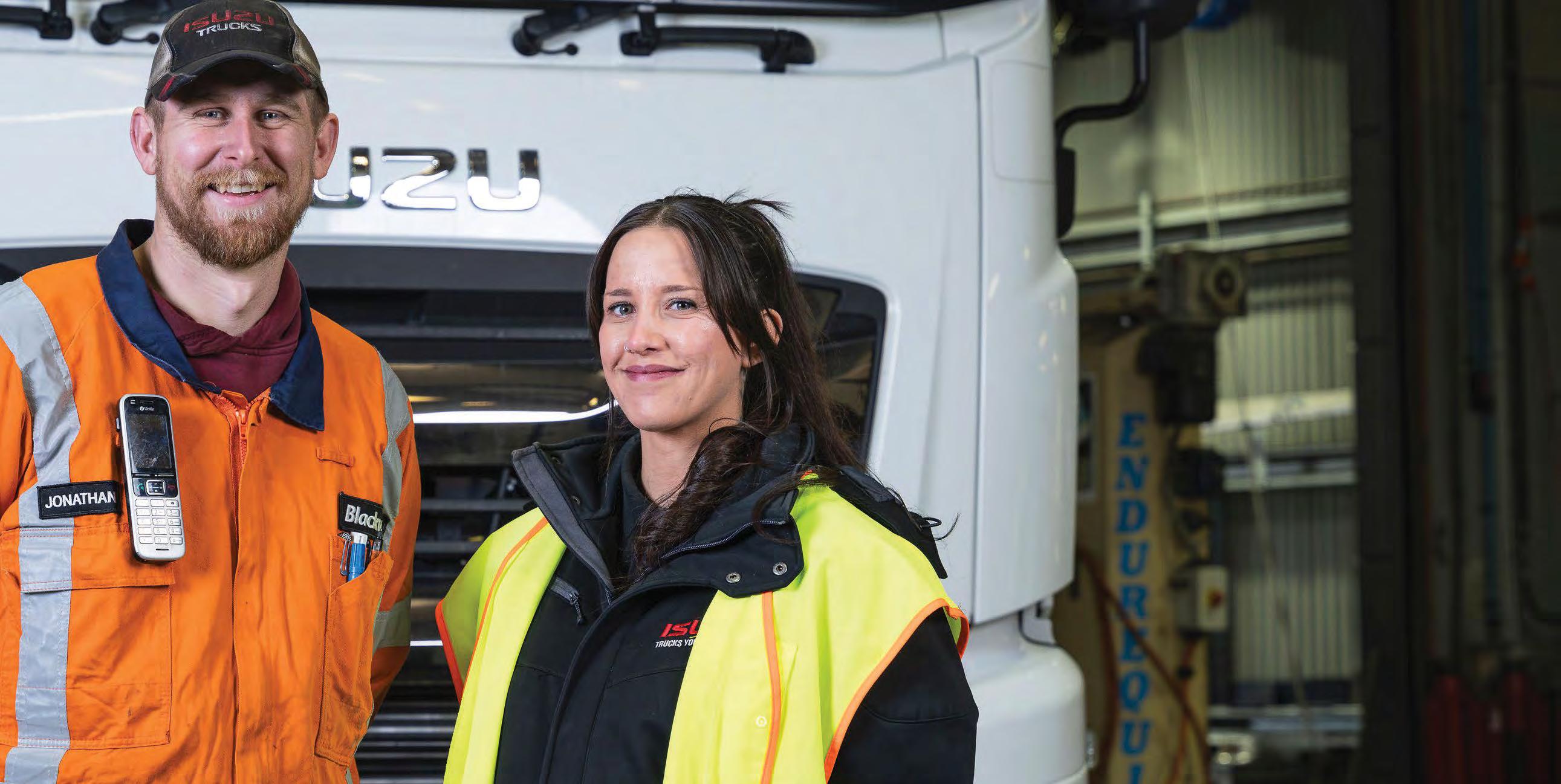





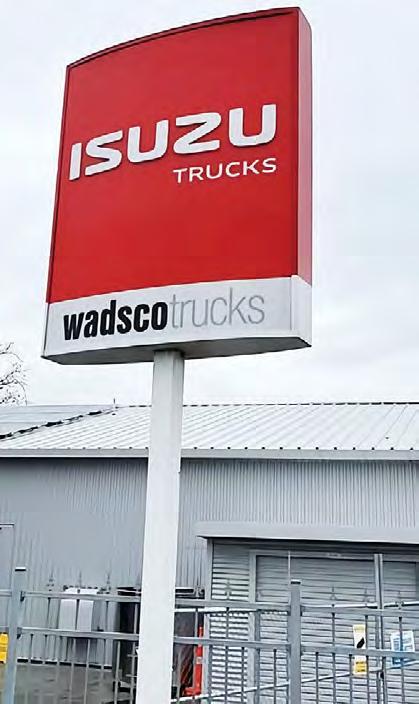







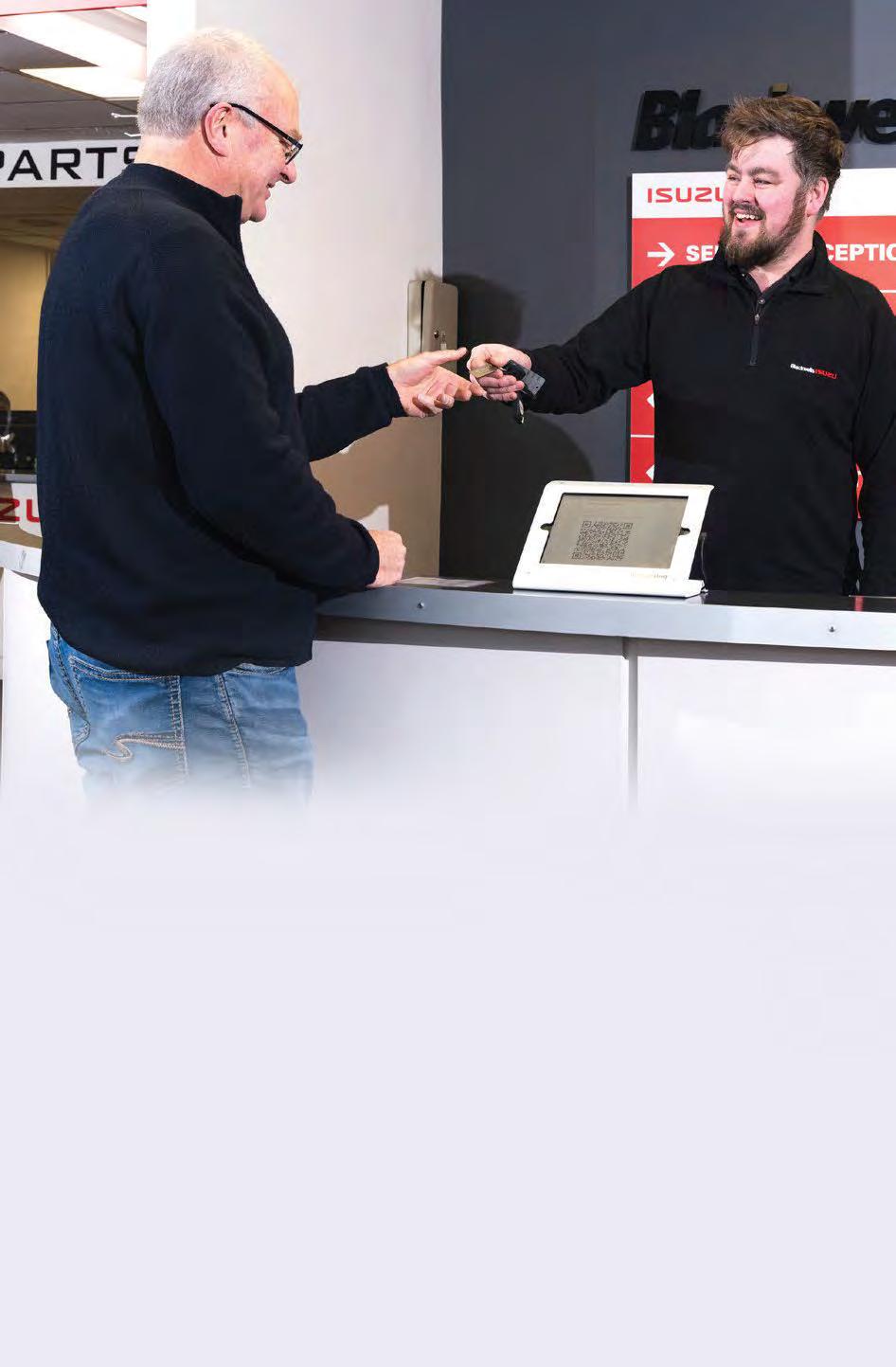





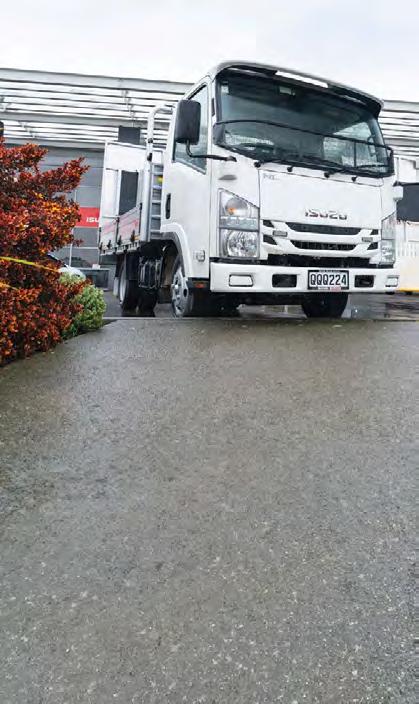
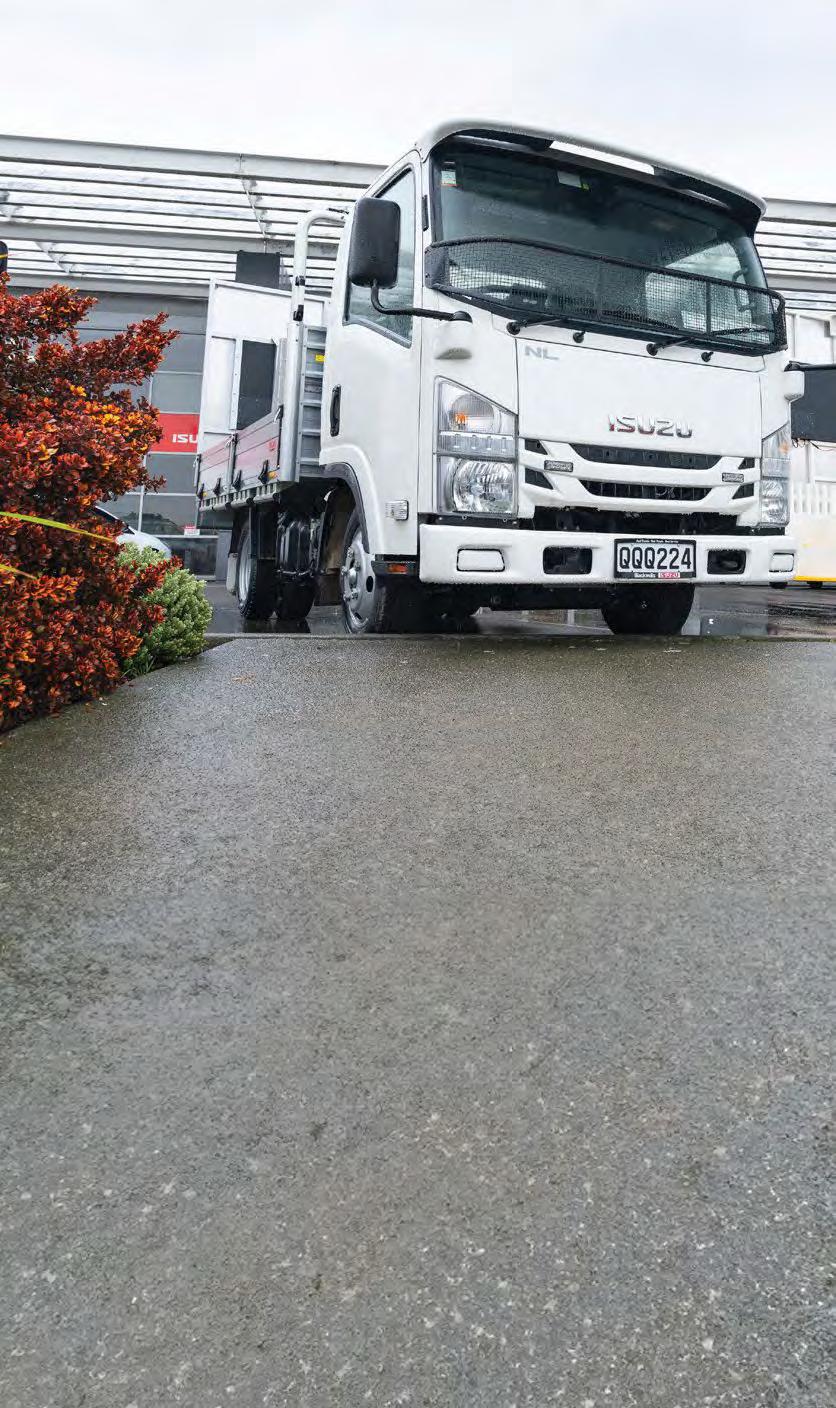

Supporting staff through their learning programmes creates a great sense of achievement not only for team members, but for the business as a whole, says Northern Linehaul’s Wendy Gatley.
Northern Linehaul has eight scholarship learners enrolled in MITO’s L4 Logs programme. Learners are powering through their programmes, having started in July this year.
One of those learners is one of the directors of the company.
“That’s been really good from a leadership point of view,” says Wendy. “It really encouraged our staff to go through the programme.”
Wendy says once staff overcame their initial hesitations, they really embraced the programme.
“The biggest struggle they had was actually working out how to do things in terms of using computers or doing it on phones and those sorts of things,” she says.
“But we just supported them through that early piece of getting them on onboarded and they’ve just taken to it. It’s been fantastic.”
Playing a support role also hasn’t affected Wendy’s workload in the business.
“They needed a bit of help at the start, but once they’re up and running, they’re pretty self-sufficient.”
She says she has loved supporting the staff through the programme.
“It’s part of our values – continuous improvement. We firmly believe that learning is key to having engaged and happy staff.”
Collaboration with MITO has also been smooth and straightforward.
“We’ve got a really good student mentor. Every time I ring, he immediately answers, and I’ve been connecting him up with the team and he’s been really supportive,” Wendy says.
Working with the staff through the programme has been a way for the company to connect as a team.
“Our drivers are all out in their trucks all of the time. It’s really nice to have that connection and build those relationships through a different aspect of work.”
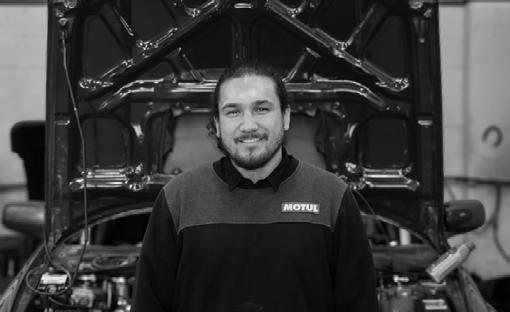
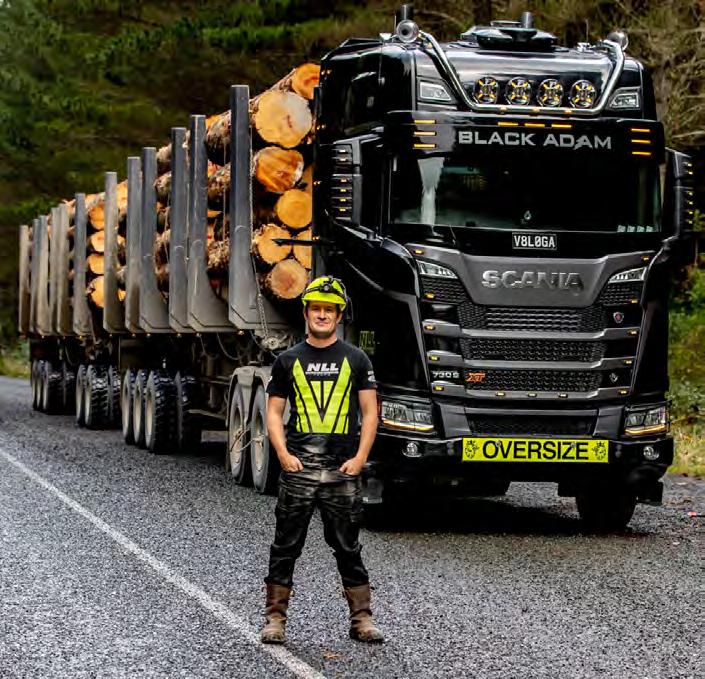
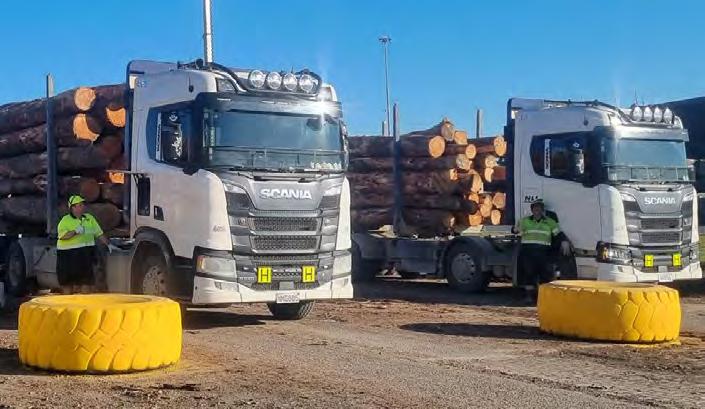
Wendy says training and continuous learning is critical for the transport industry.
“Our drivers are professional drivers anyway. But getting certifications and qualifications increases their competency, and provides them with a broader
understanding of the technical side of things.
“That means that they’re going to get less fines, they’ll get hurt less often, and they’re going to understand things better. And that’s great for business.”
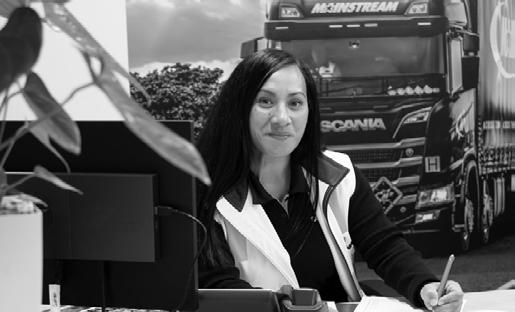





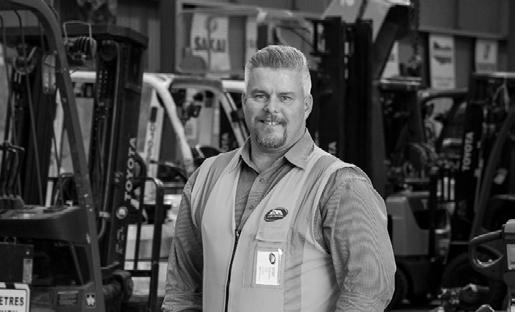
MITO Scholarships, in partnership with the Inspiring Futures Foundation, open for applications 7 October 2024. Scan the QR code or head to mito.nz/scholarships to apply.

OPERATOR: Kieran Oliver Contracting, Masterton
ENGINE: Volvo D16G 16L Euro-6 447kW (600hp)
2800Nm (2065lb/ft)
TRANSMISSION: Volvo ATO3112 I-Shift 12-speed
REAR AXLES: Volvo RTS2370B
REAR SUSPENSION: Volvo eight-bag air suspension
BRAKES: Disc. ABS, EBS
SAFETY: ESP, DAS, ACC, AEB, LCS, LKA, AB
BODY/TRAILER: Transport & General Transport Trailers
Hardox steel tipper body and matching four-axle trailer
FEATURES/EXTRAS: Cab fairings, additional LED marker lights, stone guard, CTI
PAINT: Total Truck Spray, Palmerston North
OPERATION: Supporting all areas of rural and civil earthmoving activities throughout the Wairarapa
DRIVER: Tony Mahupuku
SALES: Simon Wilson

Volvo FH750 Globetrotter 8x4 rigid
– sleeper cab
OPERATOR: Beale Trucking, Mangatainoka
ENGINE: Volvo D16G 16L Euro-5 551kW (750hp) 3550Nm (2618lb/ft)
TRANSMISSION: Volvo ATO3512 I-Shift 12-speed AMT
REAR AXLES: Volvo RTS2370B
REAR SUSPENSION: Volvo eight-bag air suspension
BRAKES: Disc, ABS, EBS
SAFETY: ESP, DAS, ACC, AEB, LCS, LKA, AB
BODY/TRAILER: Jackson Enterprises livestock deck, with matching Jackson Enterprises five-axle trailer currently under construction, Delta stock crates
FEATURES/EXTRAS: Globetrotter sleeper, fridge, microwave, TV, 24V shower, gas BBQ, stone guard
PAINT: Supreme Automotive Refinishers, Masterton
SIGNAGE: Speedy Signs, Palmerston North
OPERATION: Livestock haulage throughout New Zealand
DRIVER: Regan Taylor
SALES: Simon Wilson

OPERATOR: Stealth Logistics, Auckland
ENGINE: UD GH11TB 11L 298kW (400hp) 2000Nm (1475lb/ft)
TRANSMISSION: ESCOT-VI 12-speed AMT
REAR AXLES: UD hypoid with cross locks
REAR SUSPENSION: UD eight-bag ECAS air suspension
BRAKES: Disc. ABS, EBS
SAFETY: UD safety suite, ABS, EBS, TEBS, TECC, ESC, LCS, HSA, SGA
BODY/TRAILER: Fruehauf 16-pallet curtain sided body –
Structurflex curtains
FEATURES/EXTRAS: Full aero kit and cab skirts, stone guard, sun visor, polished alloy rims
PAINT: Factory
SIGNAGE: TCC Solutions, Auckland
OPERATION: Distribution Auckland to Palmerston North return

OPERATOR: Uhlenberg Haulage, Eltham
ENGINE: Cummins X-15 15L 410kW (550hp) 2508Nm (1850lb/ft)
TRANSMISSION: Roadranger RTLO20918B 18-speed manual
REAR AXLES: Meritor MT23-168GP with dual diff locks
REAR SUSPENSION: Hendrickson Primaax EX air suspension
BRAKES: Drum. ABS, EBS
SAFETY: ABS, EBS, blind spot camera system
BODY/TRAILER: Transfleet alloy tipper body and matching five-axle tipper trailer
FEATURES/EXTRAS: 131t GCM, raised under-mount exhaust for extra ground clearance, stainless steel drop visor, painted tanks, classic grille bars
PAINT: Factory
SIGNAGE: The Sign Shop, New Plymouth
OPERATION: Stock feed and fertiliser, as well aggregate cartage for roading and forestry track
construction
DRIVER: Justin Tito
SALES: Adam McIntosh
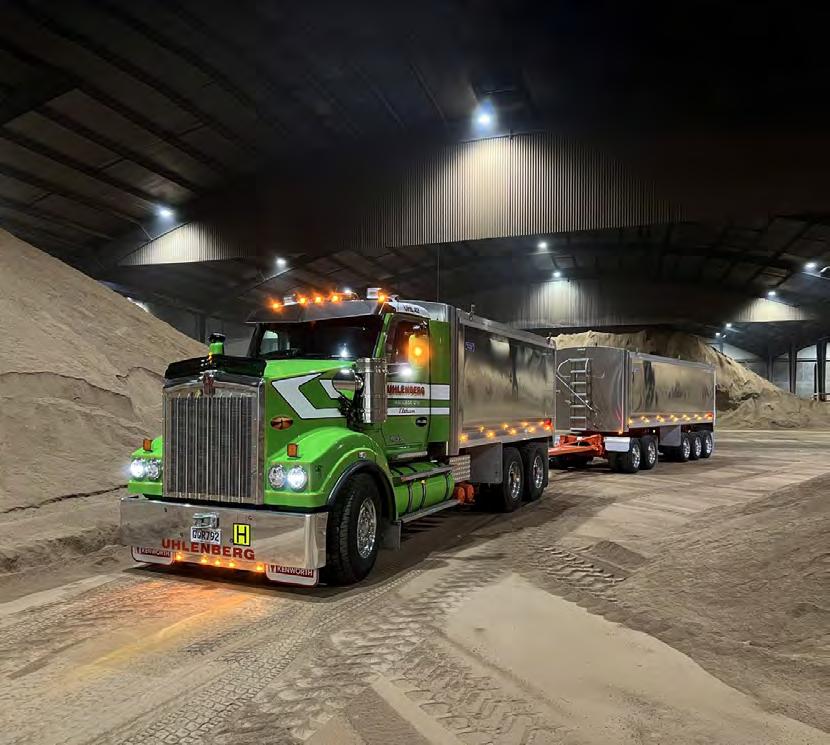

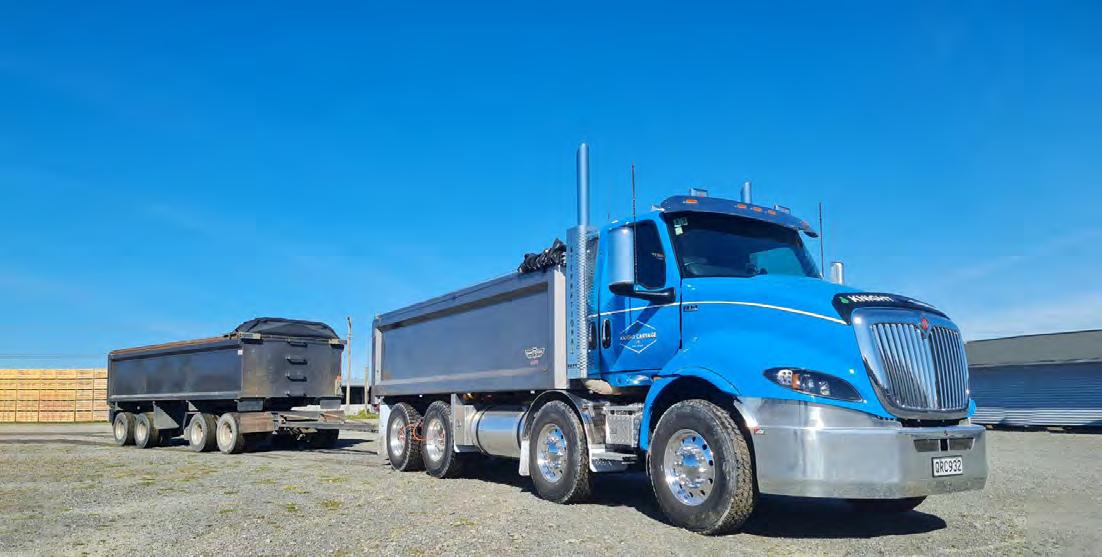
OPERATOR: Knight Cartage, Bayview
ENGINE: Cummins X-15 15L 459kW (615hp) 2779Nm (2050lb/ft)
TRANSMISSION: Roadranger RTLO20918B 18-speed manual
REAR AXLES: Meritor RT46-160GP with full cross locks
REAR SUSPENSION: International IROS
BRAKES: Disc. ABS, EBS
SAFETY: ABS, EBS
interior package, 9in offset Alcoa alloy wheels, LED beacon
PAINT: Factory
BODY/TRAILER: Transport & General Transport Trailers Hardox steel tipper body
FEATURES/EXTRAS: ECAS Suspension, CTI, Ali Arc Bumper, dual exhaust stacks, premium
OPERATOR: Bay Runner Transport, Whakatane
ENGINE: Paccar MX-13 13L Euro-6 390kW (530hp) 2600Nm (1920lb/ft)
TRANSMISSION: ZF TraXon 16TX2640 16-speed AMT
REAR AXLES: Paccar SR1364 with dual diff locks
REAR SUSPENSION: Paccar eight-bag air suspension
BRAKES: Disc. ABS, EBS
SAFETY: Full safety suite – ACC, AEB, LKA, DA
BODY/TRAILER: Curtains by Tauranga Canvas
FEATURES/EXTRAS: Double DIN touchscreen stereo, fridge, tinted windows, DAF badge backlight, Alcoa DuraBright alloy wheels, stone guard, LED light bar
PAINT: Cab – factory; Chassis – Fleet Image
SIGNAGE: Truck Signs, Mt Maunganui
OPERATION: Local BOP/Rotorua work during daylight hours, with a nightly run to Auckland
DRIVER: Gary Dunseath – days/Tracey Hunuhunu – nights
SALES: Tim Finlay
OPERATION: Bulk aggregate cartage throughout the North Island
DRIVER: Jimmy Tristram
SALES: Hugh Green
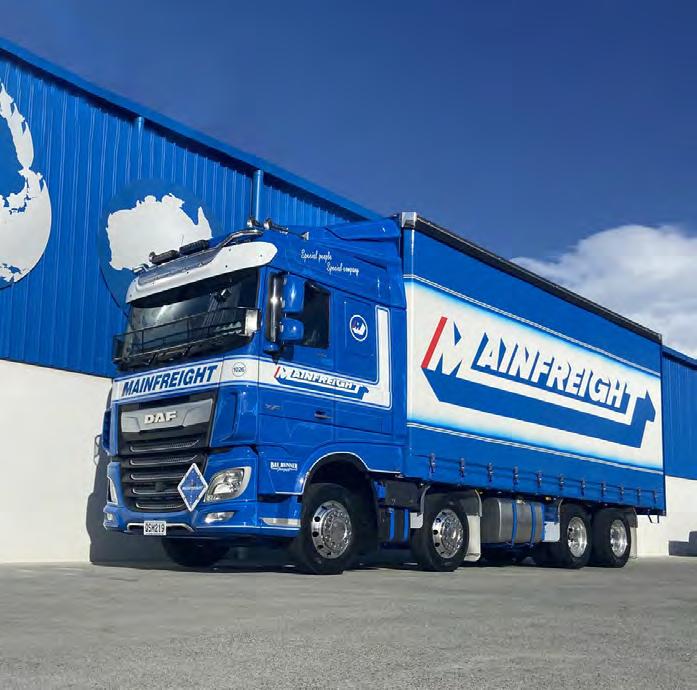
OPERATOR: Patetere Logging, Taupo
ENGINE: Mack MP10 511kW (685hp) 3120Nm (2300lb/ft)
TRANSMISSION: Mack M-drive 12-speed AMT
REAR AXLES: Meritor RT46-160GP
REAR SUSPENSION: Mack AP460 air suspension
BRAKES: Drum. ABS, EBS
SAFETY: ABS, EBS
BODY/TRAILER: Logging equipment and matching five-axle trailer by Patchell Industries
FEATURES/EXTRAS: Mack 50th anniversary package, King Bars ‘Texan’ custom alloy bumper, Alcoa Dura-Bright alloy rims, stainless steel sun visor, custom bug deflector, Red Dot air conditioning
PAINT: Factory
SIGNAGE: Caulfield Signs and Graphics, Rotorua
OPERATION: Working the forests of Central North Island and BOP
DRIVER: Kevin Wallace
SALES: Grant Moody
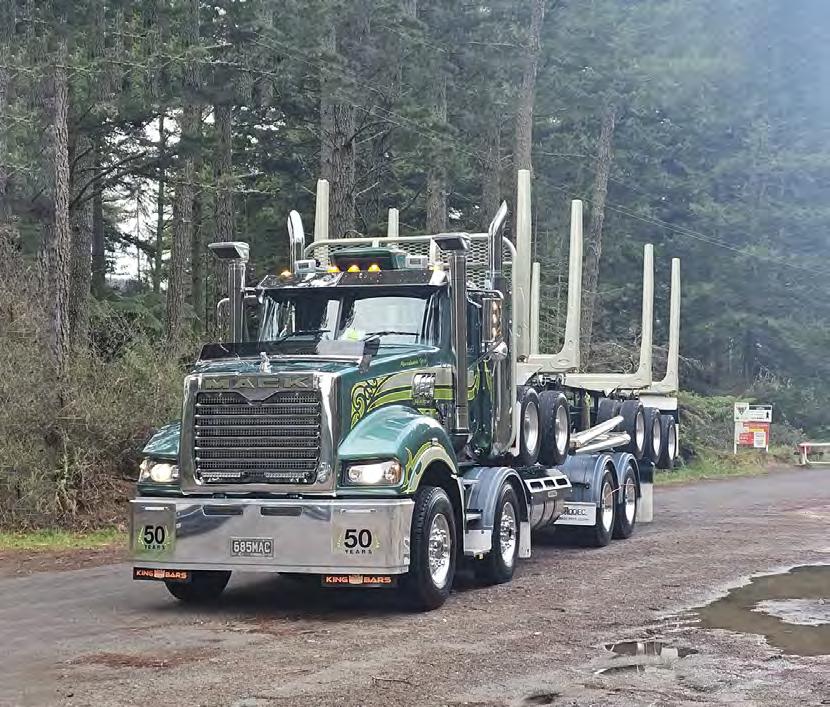
OPERATOR: Sant Boi, Palmerston North
ENGINE: MAN D26 Euro-6e 375kW (510hp) 2600Nm (1920lb/ft)
TRANSMISSION: MAN TipMatic 12 28 OD AMT
REAR AXLES: MAN HY Hypoid
REAR SUSPENSION: ECAS air suspension
BRAKES: Disc. ABS, EBS
SAFETY: ABS, EBS, ACC, LG, ABA
BODY/TRAILER: Quad-axle hard-side chiller trailer
FEATURES/EXTRAS: Alcoa alloy offset steerers, factory aero kit, factory guards
PAINT: Total Truck Spray, Palmerston North
OPERATION: Foodstuff’s distribution duties from its Palmerston North base
SALES: Darren Salt
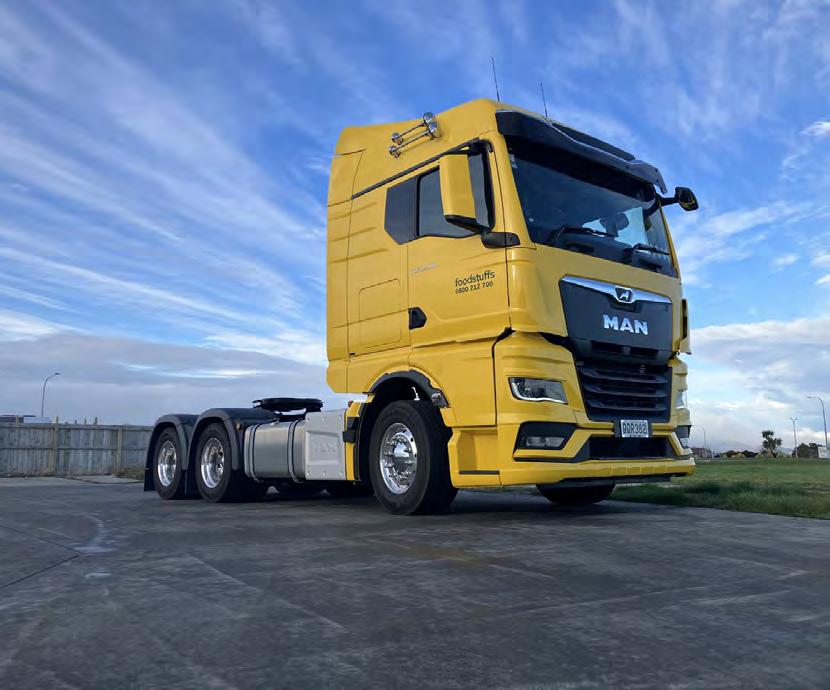
AB – Air Bag
ABS – Antilock Braking System
ACC – Adaptive Cruise Control
ABA – Active Brake Assist
AEB – Autonomous/Active Emergency Braking
AEBS – Advanced Emergency Braking System
ALA – Active Lane Assist
ASR – Anti Slip Regulation / Auto Slip Regulation
ATC – Automatic Traction Control
BAS – Brake Assistant System
BB – Brake Blending
CAB – Curtain Air Bag
DA – Driver Alert
DAS – Driver Assistant Support
DM – Driver Monitoring
DS – Driver Support
DTC – Drag Torque Control
EBA - Emergency Brake Assist
EBS – Electronic Braking System
EBSS – Electronic Braking
Safety System
ESC – Electronic Stability Control
ESP – Electronically Stability Programme
FCA – Forward Collision Avoidance
FCW – Forward Collision Warning FUPS – Front Under-run Protection System HH – Hill hold HSA – Hill Start Assist
IROS - International Ride Optimised Suspension
LCS – Lane Change Support
LDW – Lane Departure Warning
LG – Lane Guard
LKA – Lane Keep Assist
PCS – Pre Collision System
PD – Pedestrian Detection
RB – Reversing Buzzer
RM – Rocking Mode
RW – Reverse Warning
SAB – Side Air Bag
SC – Speed Control
SD – Side Detection
SGA – Side Guard Assist
TEBS – Traffic Eye Braking System
TECC – Traffic Eye Cruise Control
TPM – Tyre Pressure Monitoring
VSC – Vehicle Stability Control



New Zealand has a rich heritage of body and trailer building, and we’re proud to showcase recent examples of Kiwi craftsmanship every month. To feature on these pages, send a photo, features and the manufacturer’s name to carl@nztrucking.co.nz.
Looking for the correct tool for the job, McFall Fuel enlisted the assistance of Tanker Solutions in Porirua to design and build this striking nine-axle truckand-trailer tanker combination.

“We were looking for a unit to service smaller sites with smaller volumes, as well as various grades of fuel, so the tanks have been fitted with multiple compartments of both 5000L and 9000L,” says McFall Fuel transport manager Hayden Holmberg. “The rig is based out of the Whangārei site, covering Warkworth to Cape Reinga, so versatility was what was needed, and Tanker Solutions has definitely delivered that.”
Looking to fit out its new FH16 750 Volvo as a bulk tipper, Cromwell Bulk Distribution called upon the team at Transport Engineering Southland to work their magic again.
A longstanding working relationship between the two companies has seen no fewer than 10 bulk units built now, and the latest addition to the fleet is a standout. Both the truck and trailer alloy bins feature watertight auto-closing tail doors, with
FEATURES: SAF 19.5in
Intradisc air-suspended axle sets, Wabco EBS system, Ringfeder coupling.
Tanker Solutions, Porirua
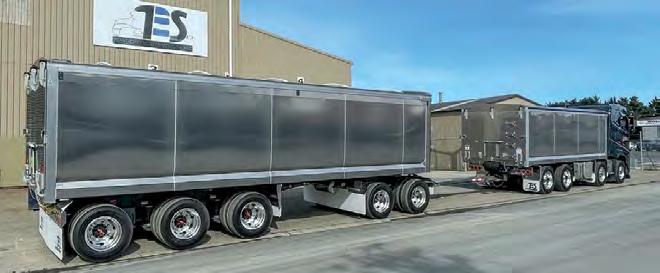
grape locks and Razor electric rollover covers.
Completing the build, the five-axle trailer runs SAF Intradisc air-suspended axle sets, with Tire Pilot inflation system.
Since 1953
FEATURES: Alcoa Dura-Bright polished alloy rims, SAF Intradisc Axles, SAF Tire Pilot, Wabco EBS.
Transport Engineering Southland (TES), Invercargill
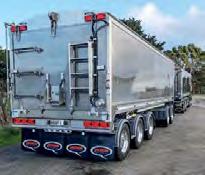

FEATURES: Hendrickson air-suspended axle sets, Wabco EBS, Hella lighting package, Walinga blower unit. Jackson Enterprises, Pahiatua
When Taranaki-based Rowlands Transport Group needed its two ex-KAM Transport 8x4 rigid Scanias repurposed into tractors, the team headed to GF Transport Services of Stratford.
Being a boutique operation, it’s not just new kit rolling out the door, they’re just as happy repurposing existing gear to the highest standard – where the transformation is undetectable from factory finish.

Fresh out of the Jackson Enterprises workshops in Pahiatua is this trick new build for the team at Beale Trucking. Based on a new K200 Kenworth, this blower unit is the epitome of versatility and is designed for ease of operation.
“The efficiency offered being able to deliver to farm-based silo storage direct from the port is what we are after for our customers,” says Regan Beale of Beale Trucking.
“This was not a standard build for the Jackson Enterprises team, but as usual they have put in 110%, and provided us a brilliant end product that everyone involved in its construction should be extremely proud of.”
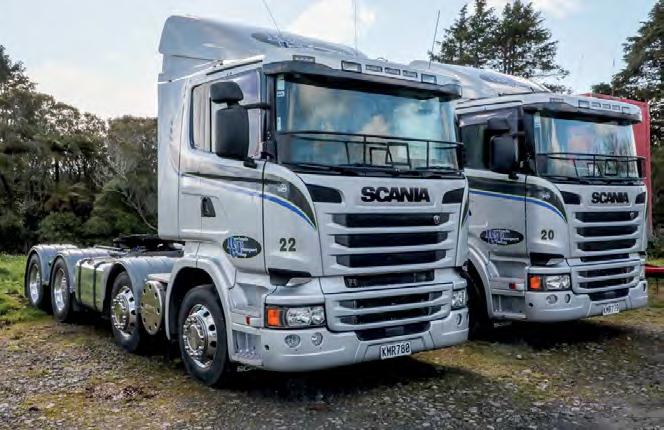
FEATURES: Diesel tanks shortened and lifted, DEF tanks relocated and lifted, chequer-plate chassis covers, closed and crafted chassis ends. Rhino guards and brackets. New Holland fifth wheels. Full coding and compliance certification. GF Transport Services, Stratford
The premier name in the world of truck and trailer wheels
Delivering the great professional look of a wheel in combination with significant weight saving benefits and the strength of a quality forged aluminium wheel makes ALCOA Wheels stand above the rest.

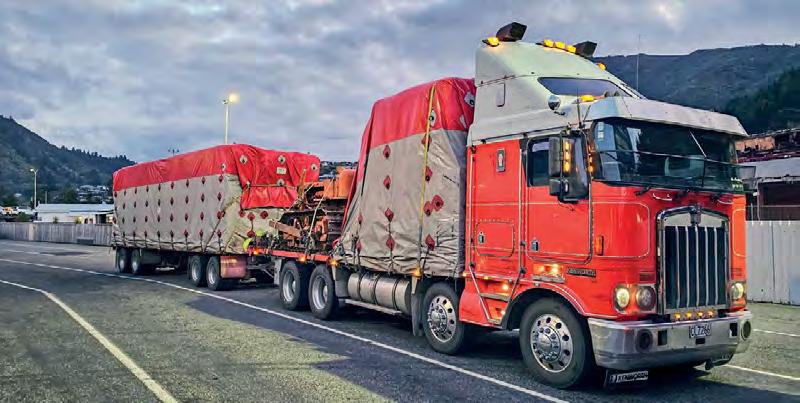
with its pedigree and heritage; however, it certainly added a level of prestige to the world of water carting.
ur first inductee to the Bridgestone Million Mile Club this month has a rather interesting past sporting some very distinctive fleet liveries throughout its history.
Starting out life new for Guy and Helen Knowles, the K104 was the first Kenworth for the Palmerston North-based fleet. According to Guy it was a solid performer for them while in their care. Built with a 620hp Cummins Gen2 Signature and 18-speed
Roadranger, Razor Sharp, as it was affectionately known then, was big gear in its day, and still is to be fair.
Six years later, and with a touch under 900,000km on the clock, the K104 found itself with a new coat of metallic blue paint, as it became a member of the Dynes Transport fleet of Tapanui. It was a good stint also in the blue, with about 800,000km added to the clock in just over seven years.
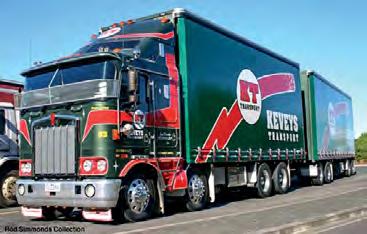
A move back north was next for the K104, to the East Coast with Farmers Transport, based out of Hastings. The curtainsider body was removed, and a new Jackson Enterprises stock deck and effluent tanks were fitted. According to the records, the K104 appears to have spent about three years at Farmers Transport. At some point in this tenure, the K104 surprisingly ended up on water cart duties. Not really a job befitting a truck
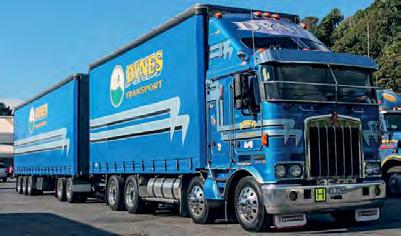
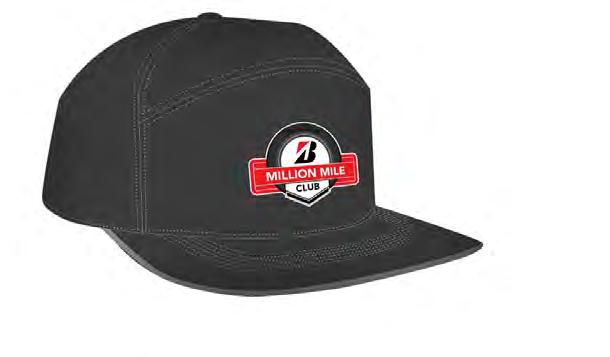
Midway through 2023, the truck was rescued from its water cart chores by the team at Eastland Transport of Hastings. Trent Taylor, who pilots the big K104 now, brings us up to speed. “We purchased the truck as it was found as a water cart. It really had been neglected. There was mud and dirt all through it, but with a bit of time and a bit of hard work we have brought it back to its former glory. The Cummins is running sweet, it just had a service last week and we found that it had used no oil at all since the last service, so yeah, very happy with that. We move a lot of baleage, so the Jackson Enterprises stock deck is still in place and works well for us.”
Trent says they pull a four-axle flat deck Jackson Enterprises trailer as well.
“She’s a good solid truck for us. In fact, I have just been right down south again with it, into Central Otago, and it didn’t miss a beat. We’re very happy with how well it’s doing the job; a good truck with good spec.” Yes, we definitely agree with you there Trent, built to be a solid performer, she truly has earned membership into the club.
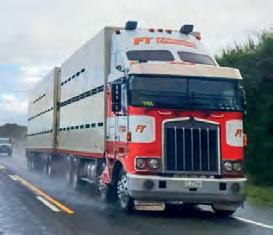
Starting out as a logger, our second inductee into the Bridgestone Million Mile Club holds mana akin to that cherished tomahawk in the woodshed – the one that’s had three new handles and a new head. Proudly standing in the Lindsay Taylor fleet of Ohakune, Toa has a meaningful presence that pays homage to guidance received from whānau past. Talking with Lindsay we learn that Toa was new in 1994 to Dave Hartley of Tokoroa, who worked it on logs. From what he understands, it was built as a 500hp V8, and set up as an 8x4 rigid pulling a three-axle trailer for Dave. Late in 1996, the rig was sold into the Sheldrake Haulage fleet where it spent the next three years. From here it was a stint with R Smith Logging of Taupō, where it worked for nigh on four years. A jump across the Cook Strait was next, where Southern Lakes Maintenance of Arrowtown put it to work as a drop-side tipper.
In 2009, Toa was again advertised for sale. R and L Duncan, a small fleet based near Thames, answered the call and acquired Toa. The Duncans initially operated the unit as a drop-side tipper, sporting the number plate DVSDOG. A little later they converted it to a log-deck setup complete with four-axle trailer. While in the care of the Duncans, the 500 was found to be tired and in need of rebuilding. However, a
donor 525 was found and the decision was made to fit that instead. Unfortunately, it was not long after this when the UltraLiner was involved in a forestry accident, the result of which found it sitting in a sorry state within Cavanagh’s Truck Spares yard near Te Puke, late in 2010.
In early 2011, Lindsay caught wind of the Ultra-Liner up for sale, in need of restoration. “I picked it up from Bill Cavanagh as a wreck; the cab was in real bad shape, so Bill threw in another cab for us that was in a lot better condition. We also purchased off Bill a complete air-ride Hendrickson suspension setup with Rockwell diffs, because we really wanted airride, and of course it also gave us a full cross-lock setup.”
Back at the workshop, it was stripped right back, new rails were slid into it to get the wheelbase he needed, and then the new rear end was rolled


under it, with a Voith retarder fitted at the same time.
“While it was all in bits, we gave the 525 a full rebuild. Then up front we changed that up, too. It was built with multi-leaf spring packs and load share, so that was all pulled out and we installed new parabolic springs to help improve handling and ride. Once all the work was done and she was all back together,
we sent it off to Fruehauf to have a new 7.4m curtainsider body built for it with container style doors at the rear,” says Lindsay. Toa is one of those trucks that has truly done the hard mahi and suffered some solid knocks along its journey. However, the depth of character it has earned from the stories it has to share qualify it as a warrior of substance. Toa, welcome to the club.

Toa, now the best part of 30 years old, has a real presence – a truck that has done, and continues to do, the mahi.
Bridgestone and New Zealand Trucking Media want to recognise trucks that have achieved this milestone in the act of carrying the nation on their backs. Each month, up to eight trucks will be selected, and will feature in the magazine, as well as on our social media.
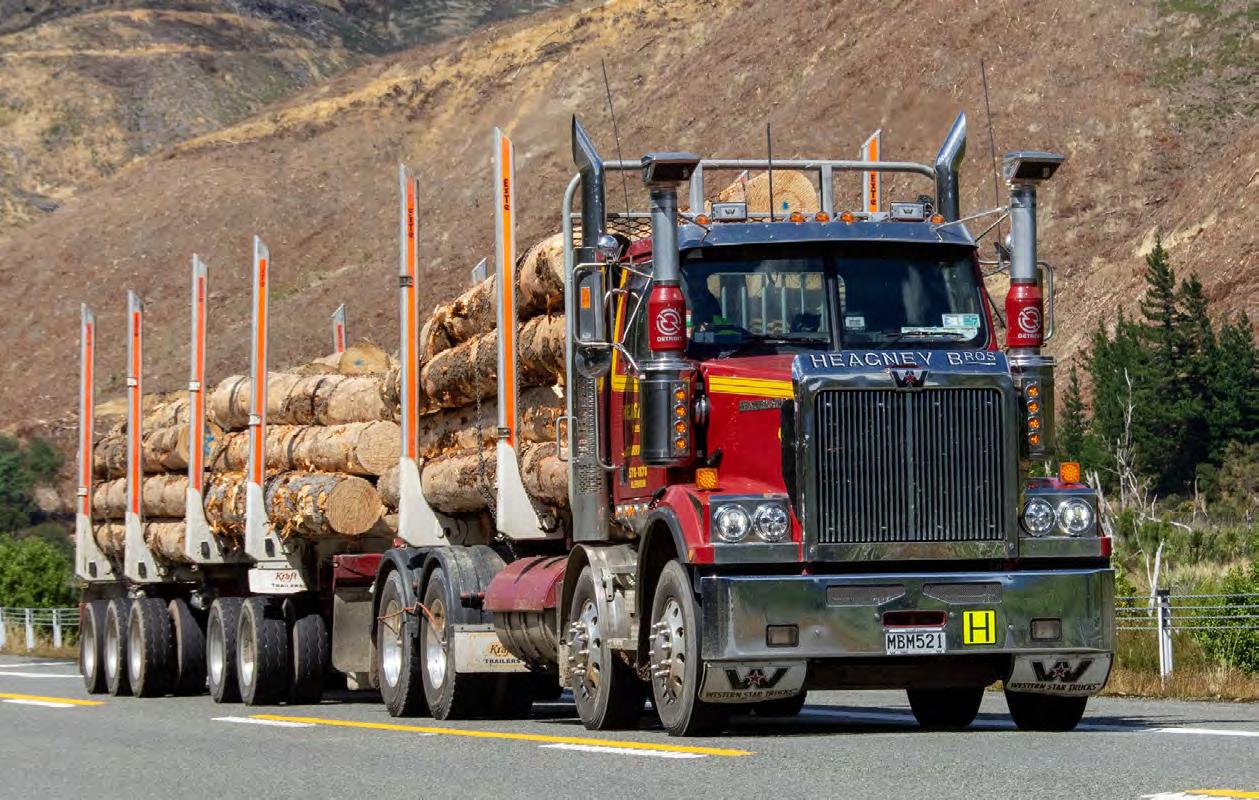
Heagney Bros has built a sizable transport operation servicing the Marlborough community. Log cartage occupies several trucks in the fleet including this Western Star 4884FXC, pictured passing through Koromiko.


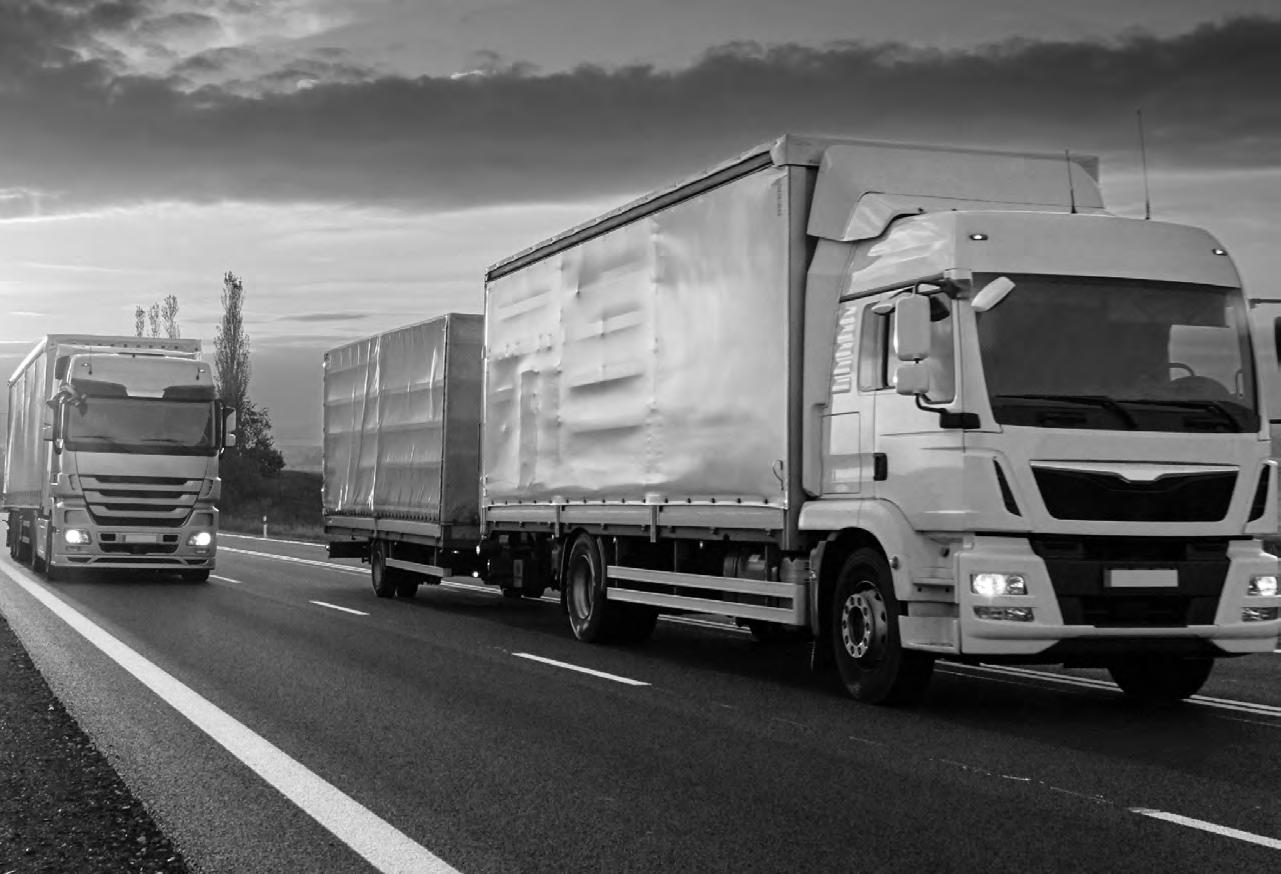


Story by Howard Shanks Photos by Mark Beutel
In the competitive world of road freight transport, fleet operators are constantly seeking innovative solutions to reduce costs and maximise payload capacity. It has led to increased pressure on trailer manufacturers to push the boundaries of design and offer solutions that meet these evolving requirements. One such groundbreaking innovation is FTE’s belly axle and tri-axle, 28-pallet van … commonly known as the split quad.
Driven by insatiable demand from fleet operators to maximise payload capacity within regulatory weight limits and motivated by increasing pressure to reduce the number of trips, fuel consumption and carbon footprint, increasing the load that fleets can transport per trip becomes crucial. The FTE split-quad configuration, a combined belly axle and triaxle setup, allows for increased payload.
But as FTE national sales director Jason Cunningham explains, it’s not simply a matter
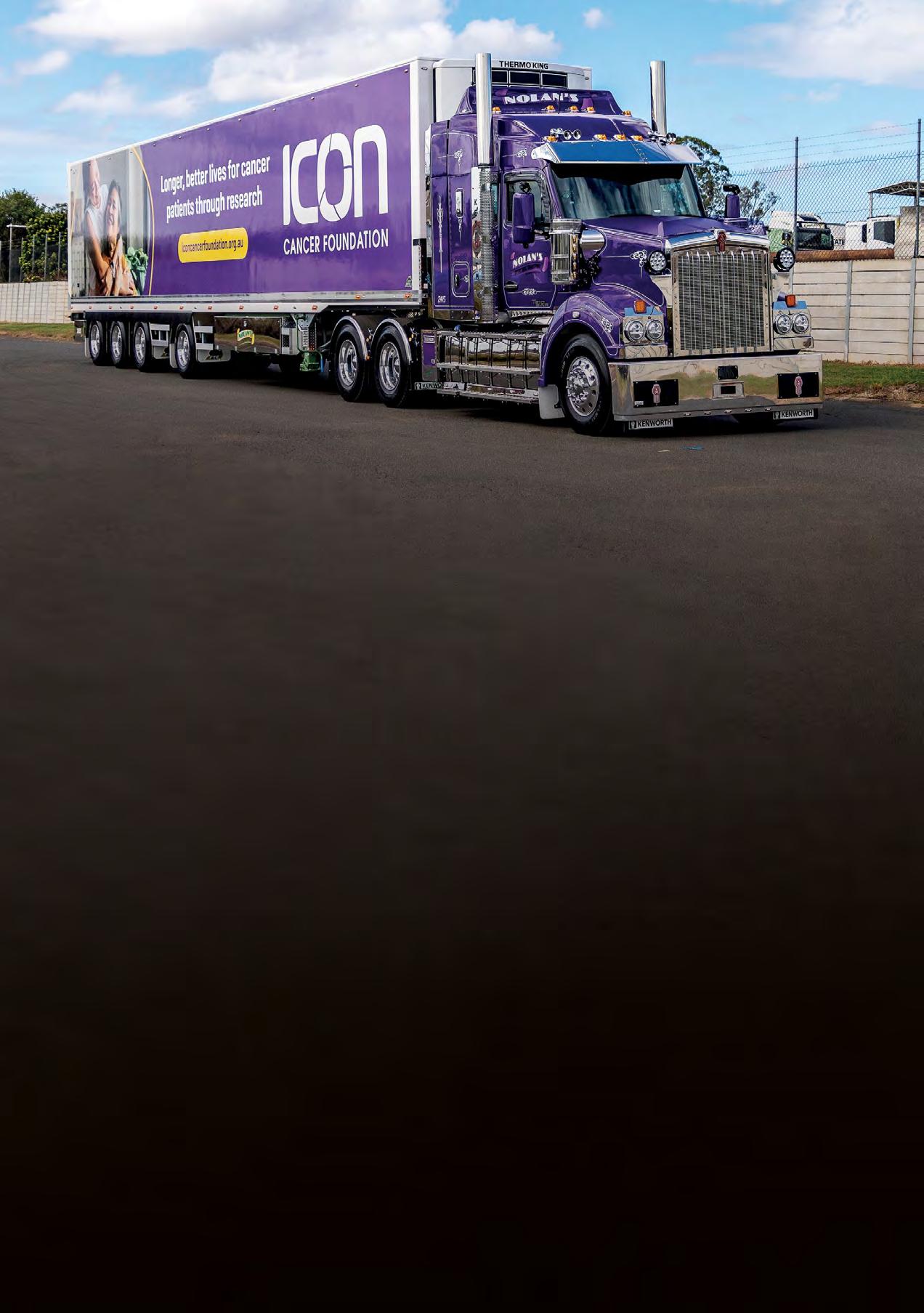
of adding an extra axle to a standard tri-axle trailer and making it a few metres longer. There is much more to the design.
“The split-quad concept is strictly a PBS [Performance Based Standards] vehicle,” Jason begins. “Split quads can only operate on the PBS network, so the payload advantage an operator will achieve above a conventional tri-axle trailer is based on the PBS route they operate.”
Despite this, the split quad offers other benefits, he adds. “They are perfect around
Sydney because of their sweptpath advantage, especially up narrow streets, and even more so when you compare them to a B-double. Drivers love them, too, because, unlike a B-double, there is no unhooking to make deliveries, and there is less chance of dropping trailers.”
“The way to describe the split quad is essentially two axle groups,” Jason explains. “The ‘belly axle’ refers to an axle placed centrally under the trailer, while the ’tri-axle group’ consists of the traditional three axles at the rear. The allowable mass over the tri-axle group is 22.5 tonnes with a further nine tonnes over the single belly axle to give a total of 31.5 tonnes over the trailer, in theory,” Jason says.
“We say ‘in theory’ because the final allowable weight depends on the PBS permit the operator obtains.”
To better understand the split-quad concept’s payload advantage, it’s worth noting that
a closed quad-axle group has a permissible mass allowance of 27 tonnes.
The BPW belly axle has its own height control valve. When running empty, it rises off the ground and automatically lowers when it senses a load. It is also steerable.
When the split-quad trailer takes a corner, the wheels of the self-steer axle turn in their natural direction of travel. This self-steering function ensures the wheels turn to follow the corner’s radius, enhancing manoeuvrability and reducing the risk of accidents. A compression spring is housed at the top of the steering knuckle, ensuring the wheels return into a straight line when travelling forward. At the bottom of the steering knuckle are two wave-pressure thrust washers. When the vehicle goes around a corner, these wave-pressure thrust washers open up and move along each other, thereby compressing the top-mounted compression spring. The BPW self-steer axle operates without
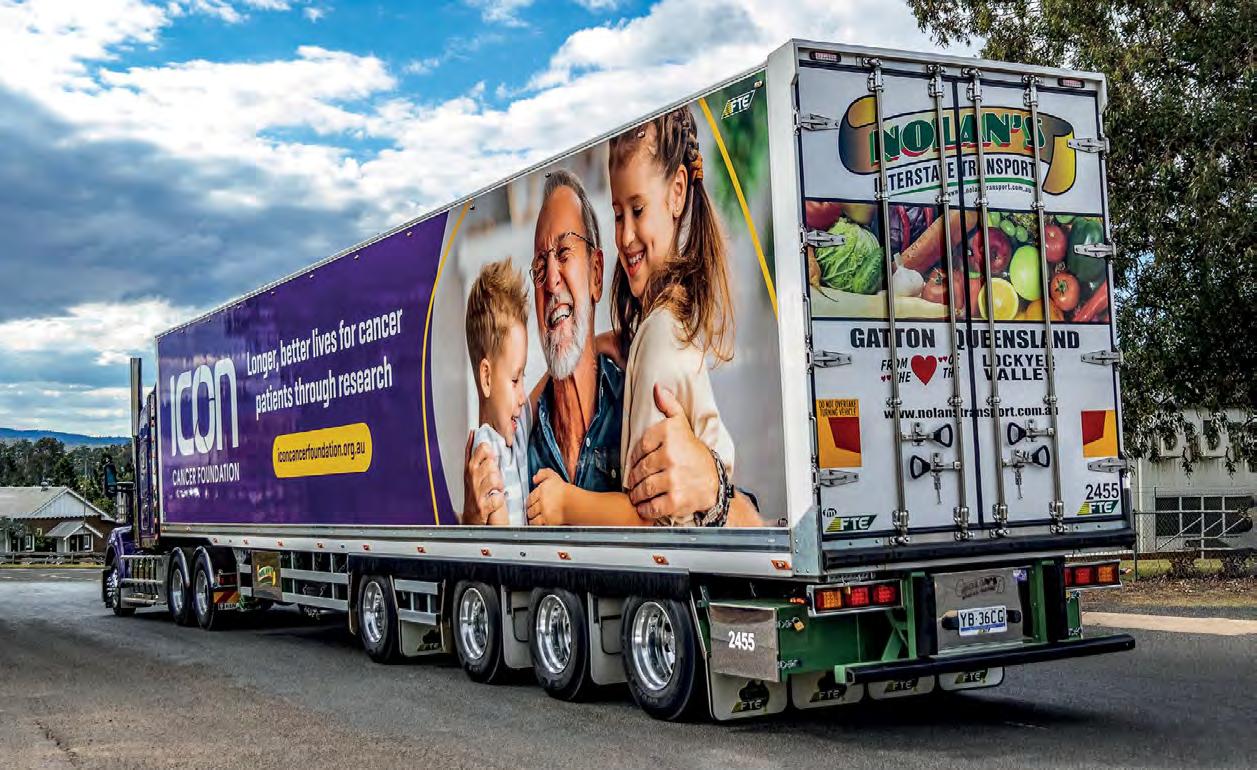
One of a dozen split-quad trailers improving productivity in the Nolan’s Interstate Transport fleet.
the need for power-assisted stabilisers. The steering angle is set according to the load and controlled mechanically.
Nolan’s Interstate Transport director, Adrian ‘Flea’ Nolan, cites the FTE split quads as exceptional performers for the company’s intended application.
“We’ve got a dozen of them now,” Flea says. They predominantly run from our Gatton and Brisbane depots into Sydney. They have a distinct manoeuvrability advantage over B-doubles around the narrow streets of Sydney. Turnaround times for loading and unloading split quads have also significantly improved. They’re eliminating our B-double movements around Sydney without compromising on tare weight, length and pallet spacing. But we send our larger roadtrain and B-double combinations on the longer hauls.
“One significant advantage we’ve found is that they help us retain our older drivers,” Flea


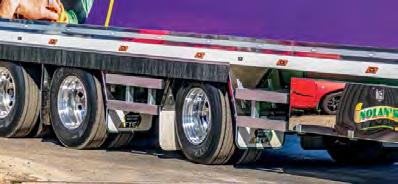
Self-steering belly axle raises payload capability and improves manoeuvrability.
adds. “B-doubles are a little harder on our older drivers; they prefer towing single trailers, which helps keep them on the road longer.”
Key to the T610SAR’s suitability for hauling PBS split-quad trailers is its set-forward front
axle. This feature improves weight distribution across the vehicle, enhancing stability and enabling higher payloads. Combined with the Kenworth eight-bag suspension systems, the T610SAR provides a smooth ride even under the strain of substantial loads. This capability is significant for operators of
PBS split-quad trailers, which can legally carry significantly heavier and longer loads than conventional configurations. What makes this truck tick and deliver exceptional fuel economy is the result of a joint venture between Cummins and Eaton, which they like to call the ‘SmartAdvantage’.
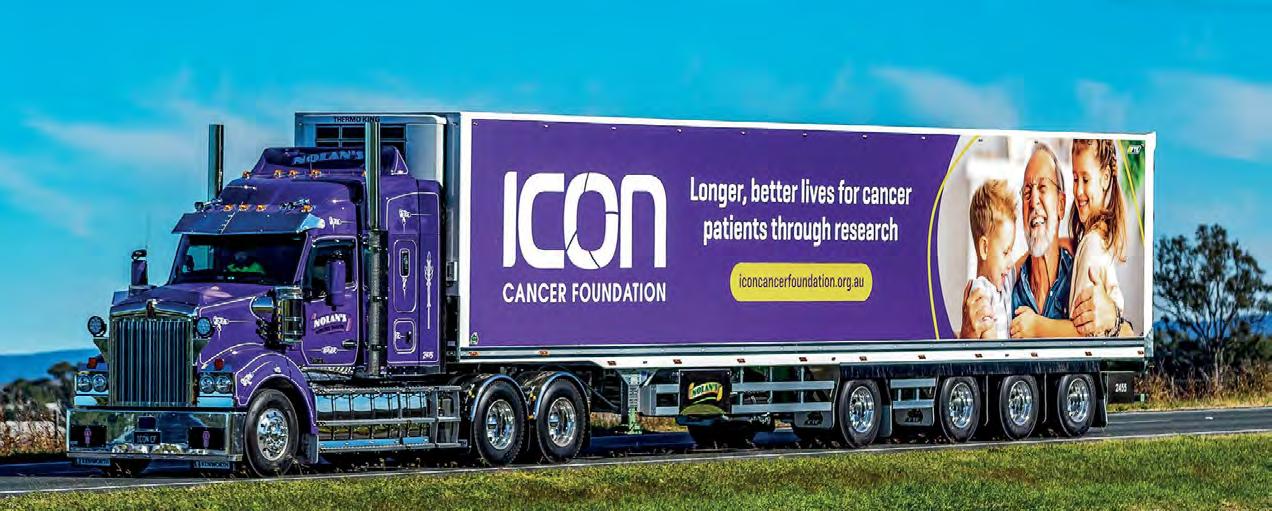
It’s a combination of the X-15 Cummins set at 447kW (600hp), delivering a peak torque of 2800Nm (2050lb/ ft) coupled to an 18-speed AMT. The ‘SmartAdvantage’ powertrain uses a small stepoverdrive transmission that allows fleets to choose the best ratio for their application, cruise speed and terrain.
But the new low-speed features make the Ultrashift Plus better suited for vocational applications like split-quad tasks, where lowspeed manoeuvrability around
tight urban streets is all part of the day’s work.
Until now, most AMTs on the market, regardless of brand, have been too aggressive at low speeds. Drivers have often had a hard time metering subtle inputs into the accelerator and found it hard to maintain a consistent, manageable low speed when backing to connect a trailer.
What’s now called the ’blended pedal’ system uses a new way of controlling the transmission to counter this problem. Traditionally, when
drivers depress the accelerator pedal, they boost the air-fuel mixture into the combustion chamber to increase horsepower. But now, with the new Ultrashift Plus, up to 50% of initial throttle input controls transmission clutch actuation. This allows drivers to fine-tune low speeds and easily maintain them to meet specific tasks.
Another big advantage for Nolan’s is the T610SAR’s versatility. It is rated up to 90 tonnes, which enables it to tow B-double and roadtrain combinations.

The fuchsia nebula paint scheme of the Icon Cancer Foundation stands out against Nolan’s regular fleet colours – and it’s all for a good cause.
The lavish fuchsia nebula paint scheme adorning the FTE split quad and Kenworth T610SAR is a mobile billboard for the Icon Cancer Foundation. The Nolan family knows all too well the devastating impact cancer can have. In 2014, then-owner and founder Terry Nolan lost his seven-year battle with renal cell cancer. After Terry’s passing, his sons, Darren and Adrian,
took over management roles.
Both Terry and Darren underwent treatment at Icon Cancer Centre. Terry was a research patient on a clinical trial during his treatment and was a generous supporter of the foundation. Now, Terry’s family is continuing that legacy.
“As a family, we wanted to give back to an organisation that has helped us and others.

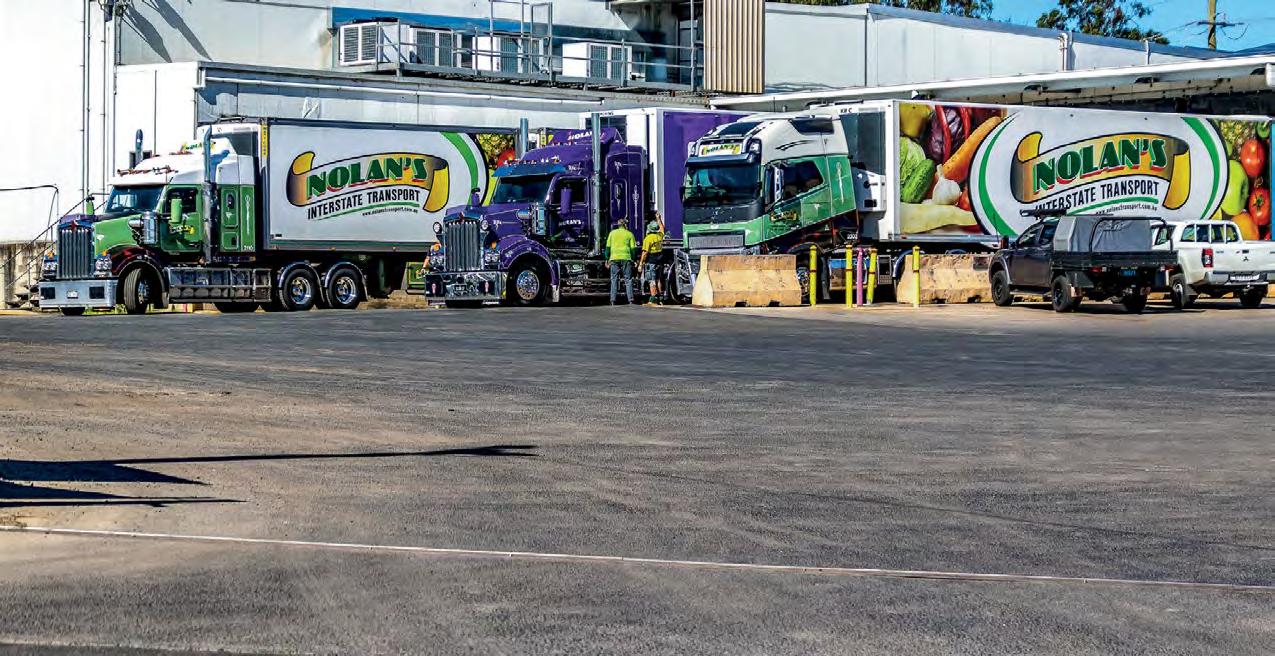

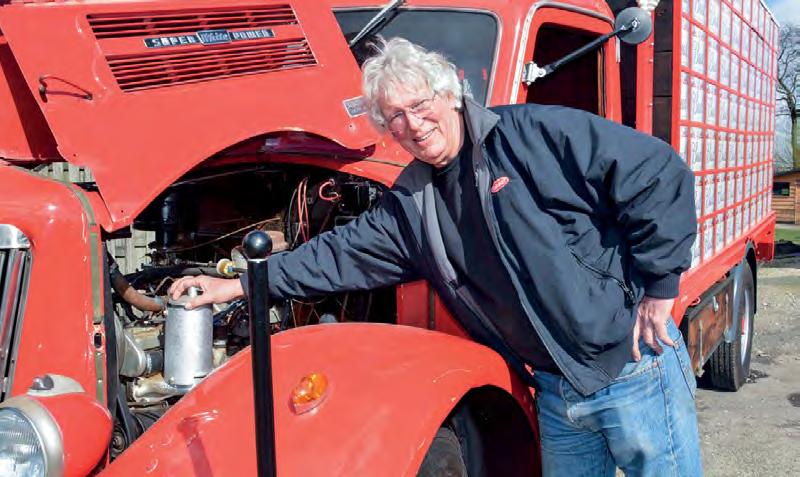
Story and photos by Niels Jansen
A European-spec, mid-century White WC16 Super Power flatbed made the perfect restoration project and addition to the collection of one Dutch enthusiast.
From the late 1930s on, the White Motor Company produced a range of gasoline-powered truck chassis that also became popular in Europe. In Belgium, Denmark and the Netherlands, notably, operators liked the powerful gasoline machines because they were also suitable for running on poorer fuel. After World War II, a
fair number of new White chassis in CKD form were imported by Messrs Albatros in Amsterdam. After assembly, these chassis were often fitted with a locally fabricated cab.
One such WC16 Super Power truck has stood the test of time and was recently restored by Dutchman Cees van Vliet of Woudenberg. The WB and
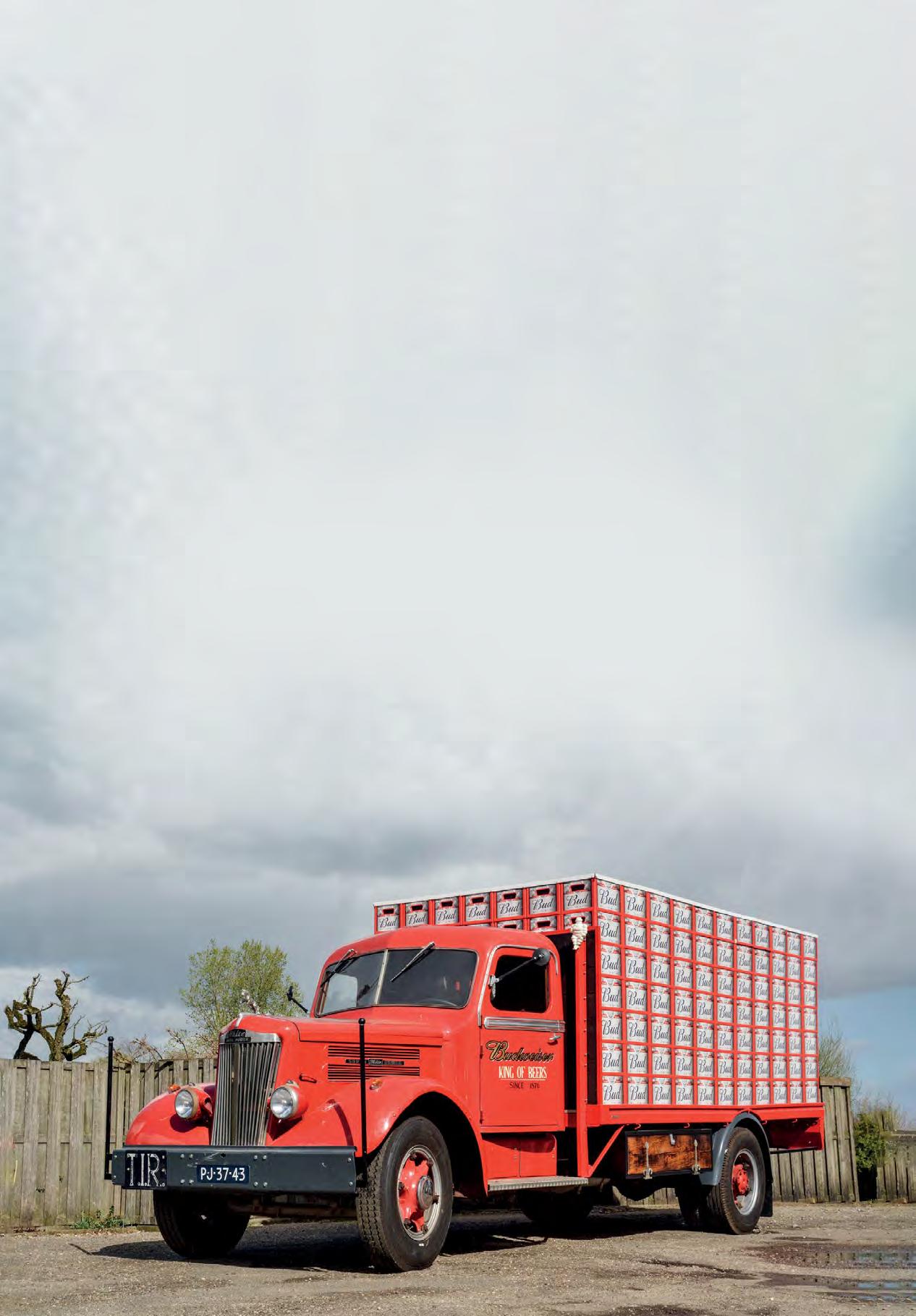
WC series from the 1950s had basically the styling from the 1930s conventional White. Its 3000 COE stablemate that came in 1949 was also a product that the competition looked at with envy. Incidentally, the very first White 3000 that left the Ohio factory was sold to the Bols Gin distillery in Amsterdam.
Cees van Vliet also owns two 3000s. He says: “From a young age, I have been interested in cars and trucks. That worked out well because when I started as a self-employed worker in the logging industry, transport was an important part of the business.”
When Cees reached retirement age, the firm was sold off. But sitting still was not his thing. So he started to spend much of his time and money on his old hobby, collecting everything about American road transport. In 2012, he bought his first pickup-truck and restored it with the help of some friends. Since then, he has flown many times over the ocean to buy more typical American things that were mostly related to road transport. In 2017, the first White cabover was added to his collection.
“That was a nice moment,” he says. “It has been on my wish-list for a long time. We have rebuilt it thoroughly and converted it to LPG gas because it was not
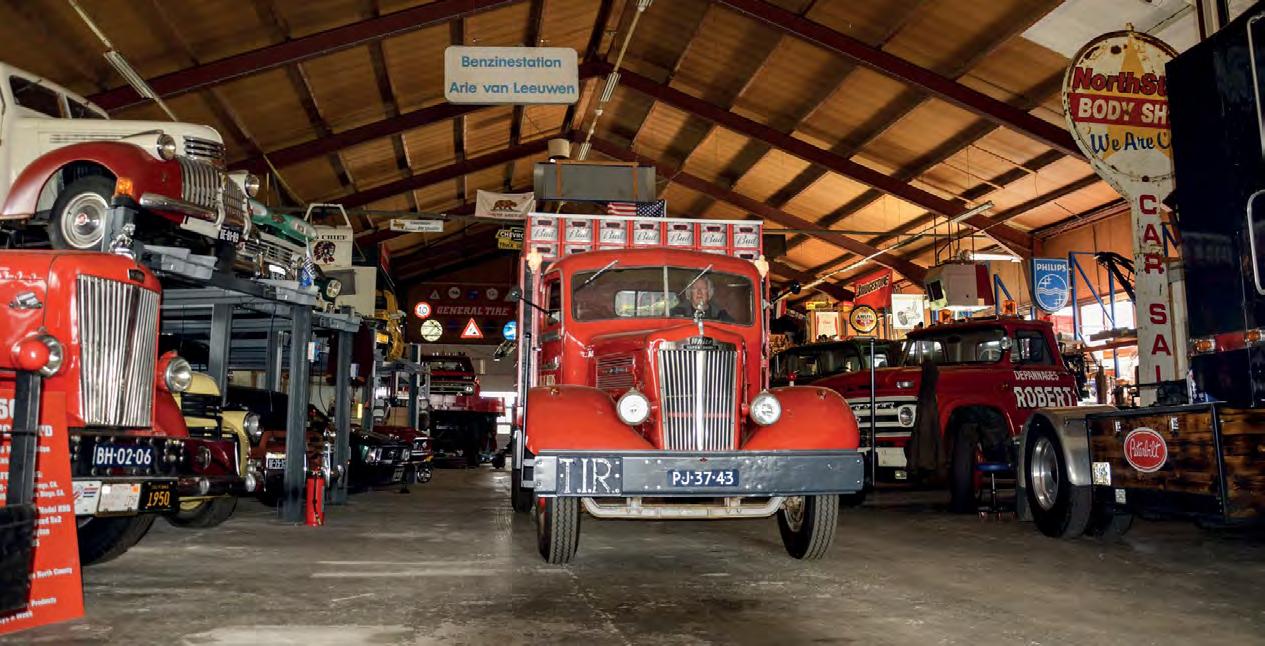
exactly frugal. We also wanted to transport classic cars to meetings with it.”
Although Cees had collected quite a few American vehicles, he also wanted to have a heavier truck. That opportunity arose in 2022 when haulage operator D.G. vd Nadort in Dordrecht offered him a rare 1956 White WC16 Super Power flatbed. The truck was already partly rebuilt.
The first owner in the 1950s had been a factory in Rotterdam that processed split peas. Later, it was sold to a local collector of vintage vehicles, before haulage operator vd Nadort became the third owner in 1990.
In 1956, White importer CV Albatros in Amsterdam had assembled the chassis. In Holland, the two-axle chassis received a custom-built cab that consisted of a wooden frame with metal panels, fabricated by body builder Kees Mulder in Rijnsburg.
“For its age, the cab was still in a surprisingly good condition,” says Cees, who continues:
“We know that second owner Kees de Rijke had done some bodywork on it but, for 75%, it is original. We have no plans to bring it back to showroom condition. I like it as it is with some little dents and wear spots. However, it must be mechanically good, because I
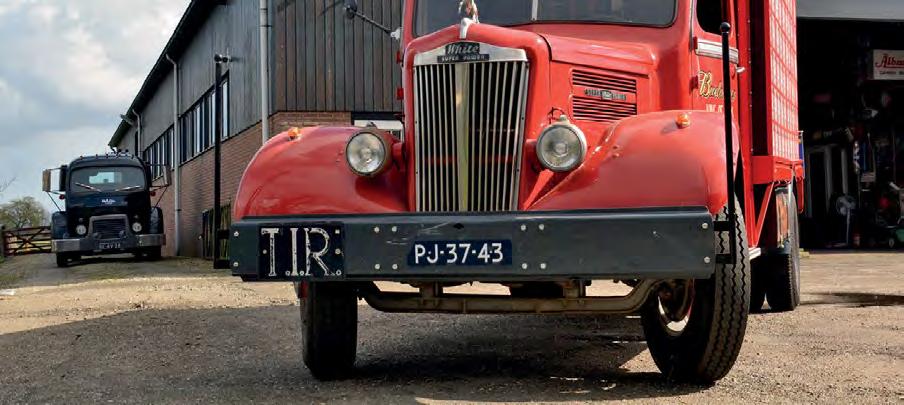
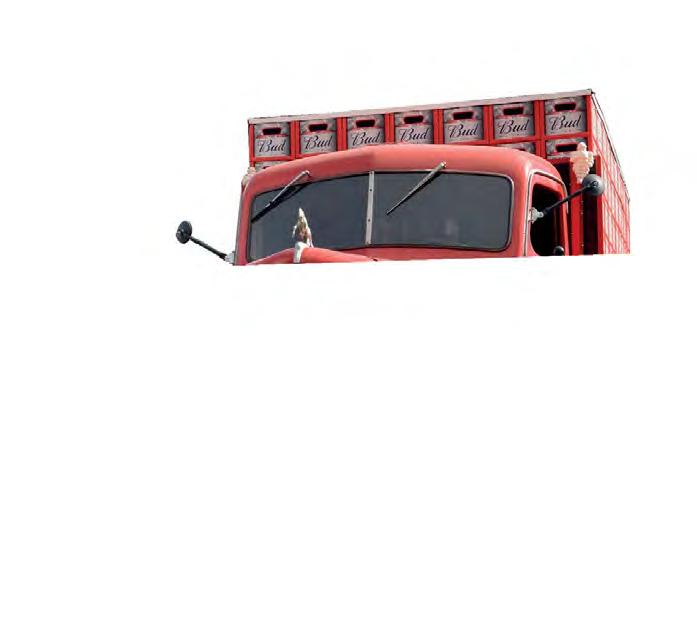
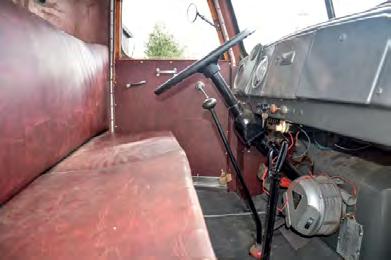
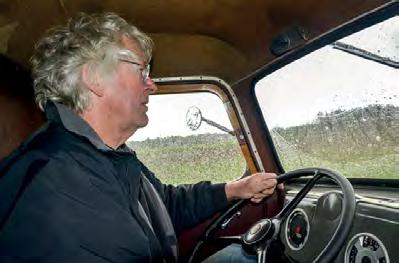
also want to drive it on the road now and then.”
When Cees acquired the White two years ago, it had 213,000km on the odometer.
Although the Mustang sixcylinder, side-valve engine initially looked okay, it did not want to start after 24 years.
“So the first thing we did was to tackle the driveline. Because spare parts are hard to find for
such an old White, I bought a second chassis that Nadort still had on his property. Actually, it was nothing more than a pile of scrap. The original engine was overhauled by a specialist, as well as the water pump and the radiator. Most of the other engine work we did ourselves. We found new gaskets via Ebay in the US. Luckily, the gearbox and clutch were still in good
order. The brake system was also overhauled and partially replaced. The electrical system needed quite a bit of work too. In retrospect, the state the White was in was disappointing,” Cees says.
Remarkably, the wooden and steel cab was in better condition. The flatbed is also original. The White is equipped with large Trilex wheels that have received
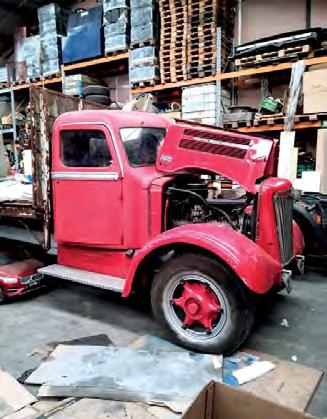



six used-but-young 8.25x20 tyres. They give the 6.5-ton truck a sturdy look.
Cees explains: “Between the 1930s and 50s, a lot of American truck chassis arrived on the Continent without a cab, because it was much cheaper that way to ship them. A lot of hauliers had a cab mounted that was made by a local body builder. These were more spacious, better finished and generally cheaper. The nice thing about my White is that the cab is still completely original.”
Of course, the flatbed was also completely restored. Cees says: “But with a nice load, it would look even better. So I tried to find something with a link to America. Partly inspired by the Budweiser beer I often drank
in the US, a bright idea came up one night when I could not sleep – placing a nice load of empty beer crates on the bed of the White. After some roaming on the internet I managed to obtain 160 plastic Budweiser crates. I have placed them on the flatdeck and tied the lot together with glue and screws. It looks great and fits the truck perfectly!”
You don’t expect it, but the ‘superstructure’ is hollow inside. So Cees can sleep in it when he attends a classic vehicle weekend.
In total, Cees now owns, apart from several cars and motorcycles, seven vintage American trucks. He concludes: “I still have some space left in my ‘museum’, so I might catch a plane to the US again one of these days!”
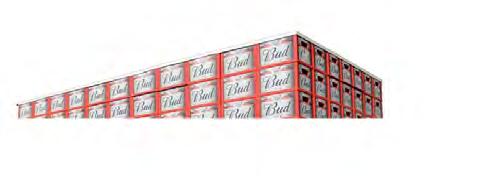

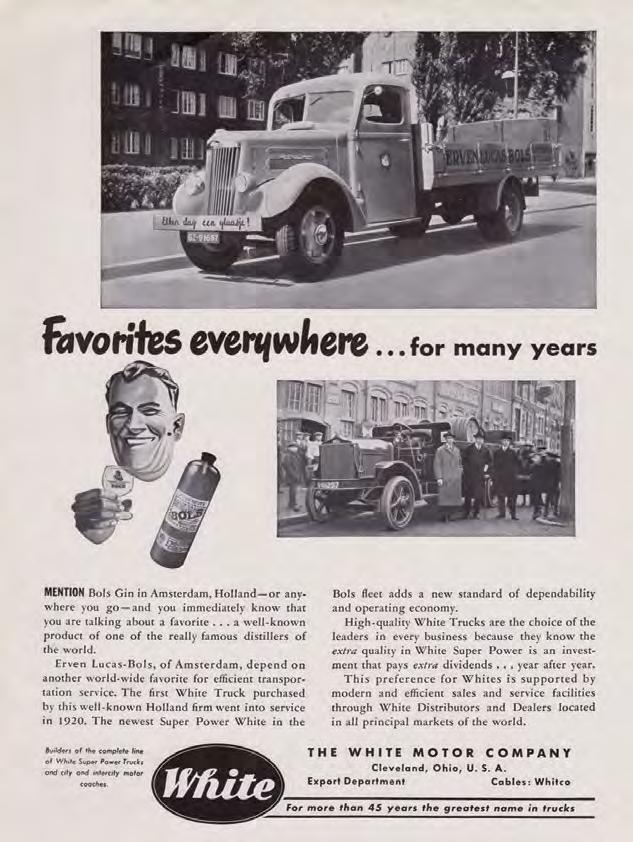

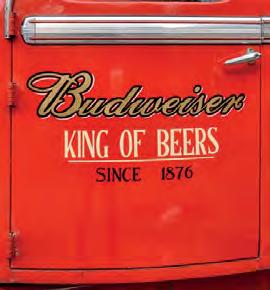

The Mustang gasoline engine received a thorough overhaul.




GCA8
Superior sidewall cut resistance. Long tread life, exceptional casing durability.
GCA8
Enhanced stability and riding comfort.






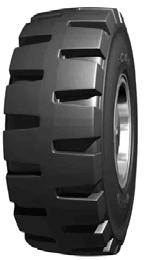
• Superior sidewall cut resistance.
The extra-deep tread pattern is specially designed for loaders.
• Long tread life, exceptional casing durability.
Excellent performance on extremely rocky surfaces, in open pits, quarries, and underground mines.
• Enhanced stability and riding comfort.
Non-directional deep tread pattern designed for muddy and soft surfaces.
Excellent traction and floatation offer comfortable handling.
• Excellent performance on extremely rocky surfaces, in open pits, quarries, and underground mines.
Superior long tread life and excellent puncture resistance.
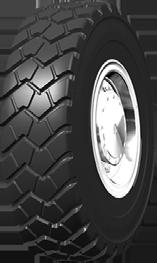
Low rolling resistance and fuel economy
GCB5
• Articulated dumpers, rigid dumpers, loaders, graders.
• With excellent traction and buoyancy performance.
• Outstanding stability and operating comfort, with large pattern plate and long service life.


GCA3
• Unique non-directional traction patterns ensure optimum traction and prolongs tread life.
• Superior sidewall cut resistance.
• Good self-cleaning with groove stone ejector
• The extra-deep tread pattern is specially designed for loaders.
• Applications: Articulated dumper, dozer, loader, and graders.
• This deep tread is particularly suitable for loaders and dump trucks operating in quarries or mining.
• Non-directional traction and standard tread depth pattern design.
• Applications: Articulated dumper, dozer, loader, and graders.

• Excellent performance supported with heat resistant compounds.
• Non-directional traction and standard tread depth pattern design.
• Primarily designed for mining, off the road, and muddy surfaces.






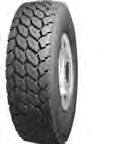
• Primarily designed for mining, off the road, and muddy surfaces. GCA7

• Excellent performance supported with heat resistant compounds.
GCA2
• Non-directional deep tread pattern designed for muddy and soft surfaces.
• Excellent traction and floatation offer comfortable handling.
• Superior long tread life and excellent puncture resistance.
• Low rolling resistance and fuel economy.








Built exclusively in Canada, the LW model Kenworth had a distinctive and rugged look. Designed to conquer the worst Canadian winters could dish out, it earned itself a strong following with both owners and drivers. While visiting the Brooks, Oregon, truck show, we caught up with Kenworth enthusiast Bill Ziesel and had a look over his immaculately restored LW.
Story by Carl Kirkbeck
Born and raised on a farm in Central Alberta, Bill Ziesel’s formative years couldn’t have been more removed from his future life as a professional transport operator.
“It was the early 1970s, and I guess I was just a black sheep or something, I really didn’t want to farm like my brothers, so instead I went truckin’. I started driving a gravel truck for a friend of mine. After a while I thought, ‘If I’m going to do this, I might as well do it for myself’. I had heard from a couple of guys that had moved to Fort McMurray in Northern Alberta that there was plenty of truckin’ going on up there in amongst the oil sands industry.
They said they were doing okay, so that was me; I thought, ‘I’ll go up there and give it a whirl.’ Forty years later, I packed up and left, so I guess you could say it worked out okay,” Bill says with a laugh.
The weapon of choice for Bill throughout his driving career has been Kenworth, so his connection to the marque is well established.
“In Fort McMurray, there really was a lot going on, gravel, logging, oilfield work, general freight, and also being McMurray with all of its oilfield industry, there was a great deal of heavy haul about. This meant there was a large selection of heavy-duty trucks in the area. It is here where I first
Bill Ziesel, an avid Kenworth enthusiast, with a real penchant for the bold lines of the Canadianbuilt
worked around an LW Kenworth. I liked it a whole lot right away. Built heavy, and it looked great with that on- and off-road style, just a good, strong-looking truck,” he says. “I had moved on from hauling gravel, did a few years of logging and oilfield, then it was 25 years of heavy-haul lowboy work. Unfortunately, life got in the way of getting an LW of my own when they were available. It was the early 2000s, and the LW model had been discontinued by then. I was looking for a truck to take me to retirement, so I decided to buy an older LW and rebuild it, instead of buying just another new Kenworth.”
Bill says the old LWs were all well-used
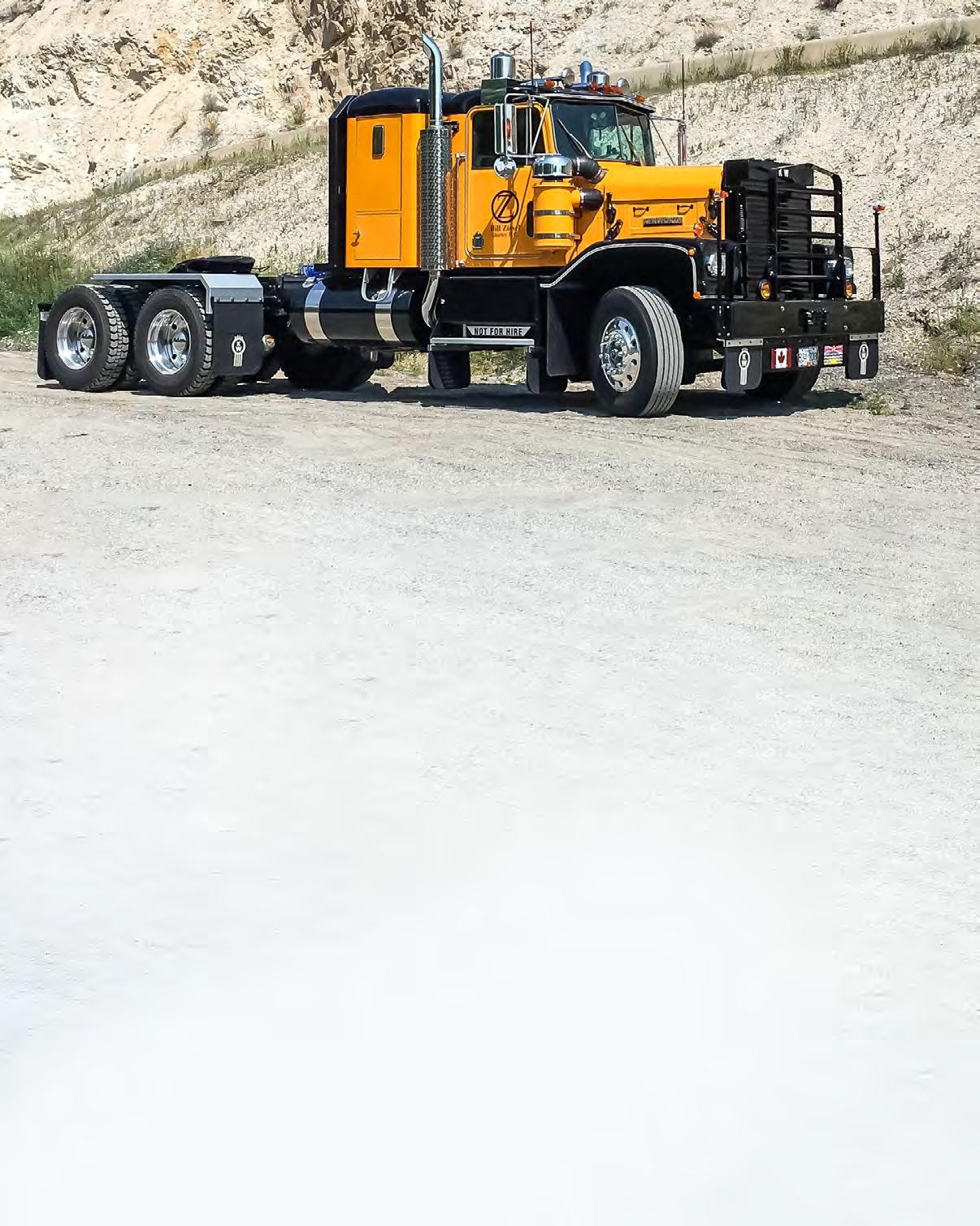
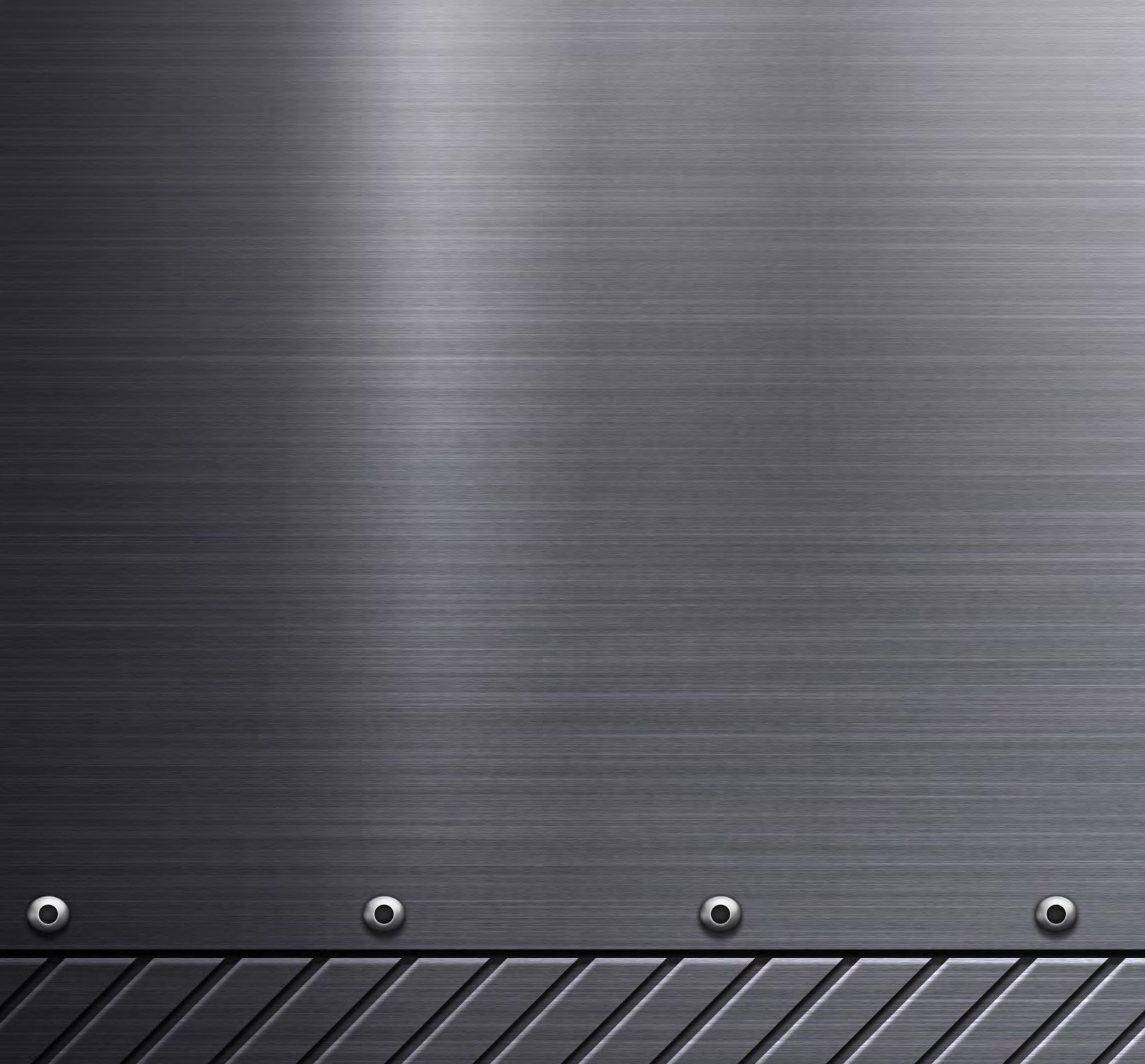
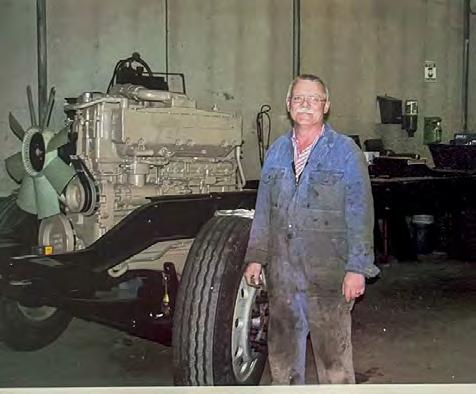
Below: The 1978 LW parked up at the 2023 Brooks Truck Show. Its robust looks made it a standout against the backdrop of your typical highway-pounding Peterbilts.
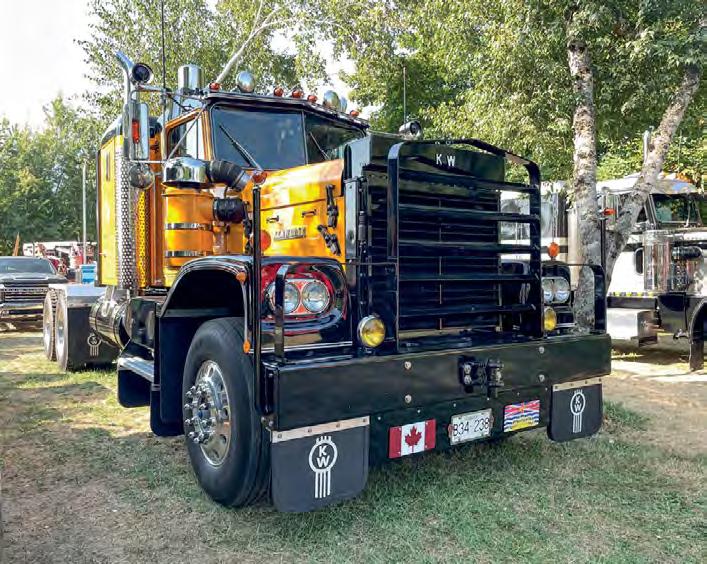
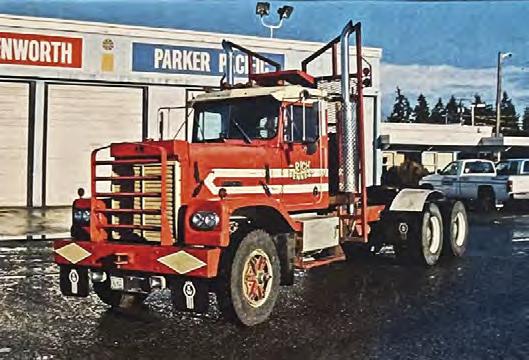
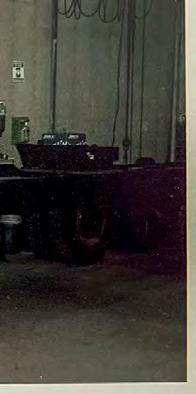
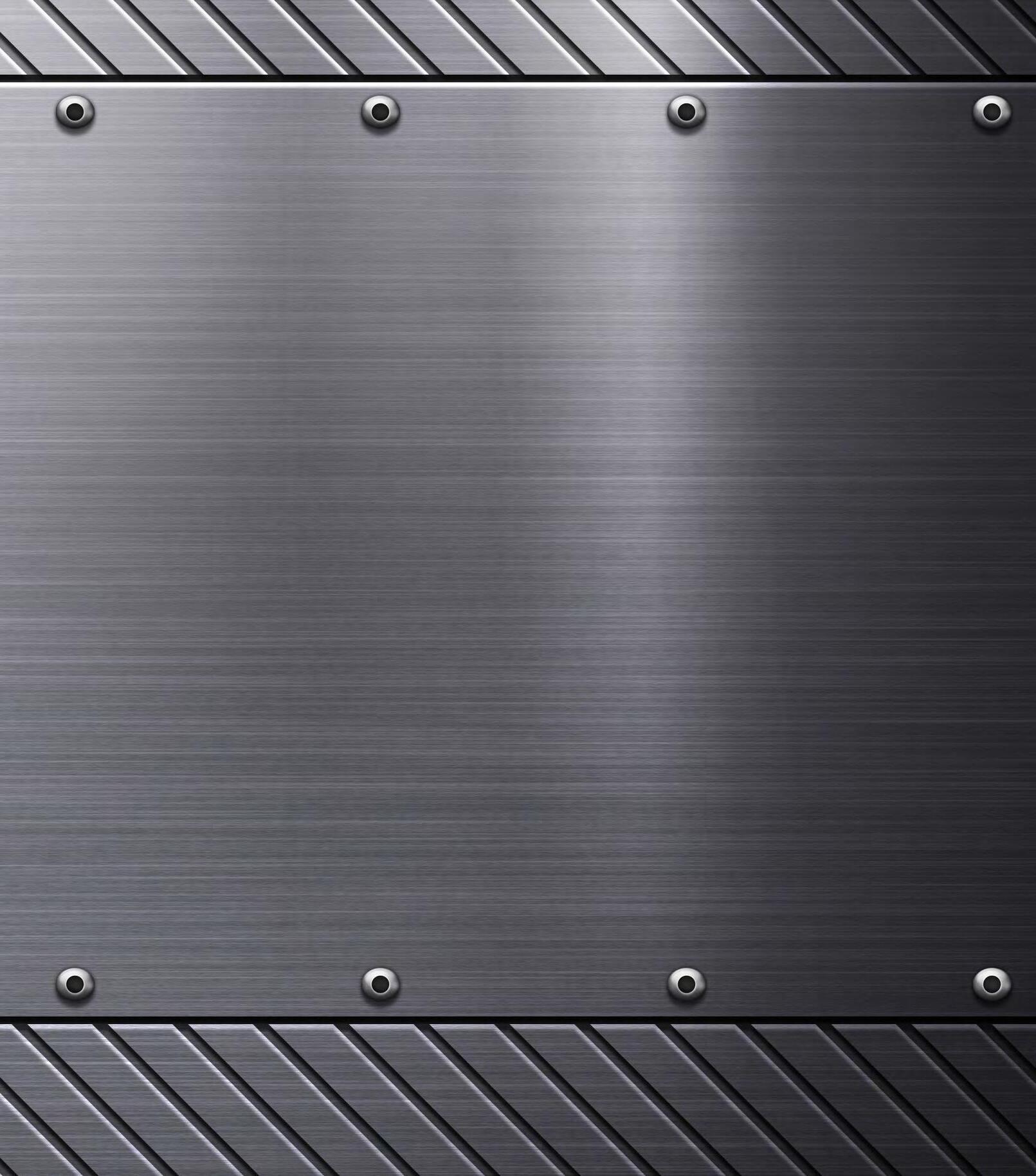

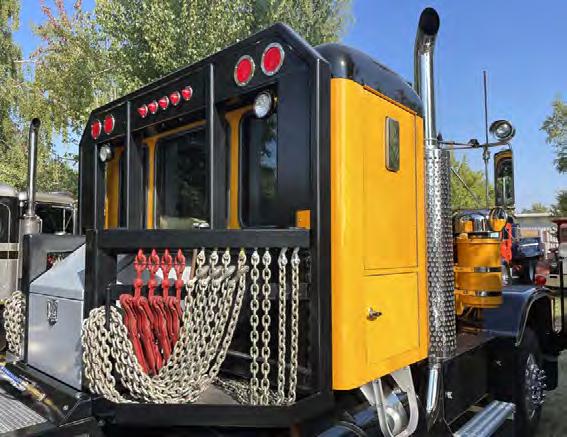

by that stage, and it was hard finding what he wanted.
On a trip to Vancouver Island in 2004, Bill found one he liked. “It’s a 1978 model with an outboard radiator. Built back in the day at the Kenworth plant in Burnaby BC, it was a typical BC log truck. Not many extras, but a tough work truck. I purchased it, and had it sent back home to Alberta, and as soon as it arrived the restoration began.”
The first job was to strip it down and see what he had. “Right from the get-go, the frame rails didn’t look all that good, so a new set of rails were ordered from Kenworth. I was going to work the truck,

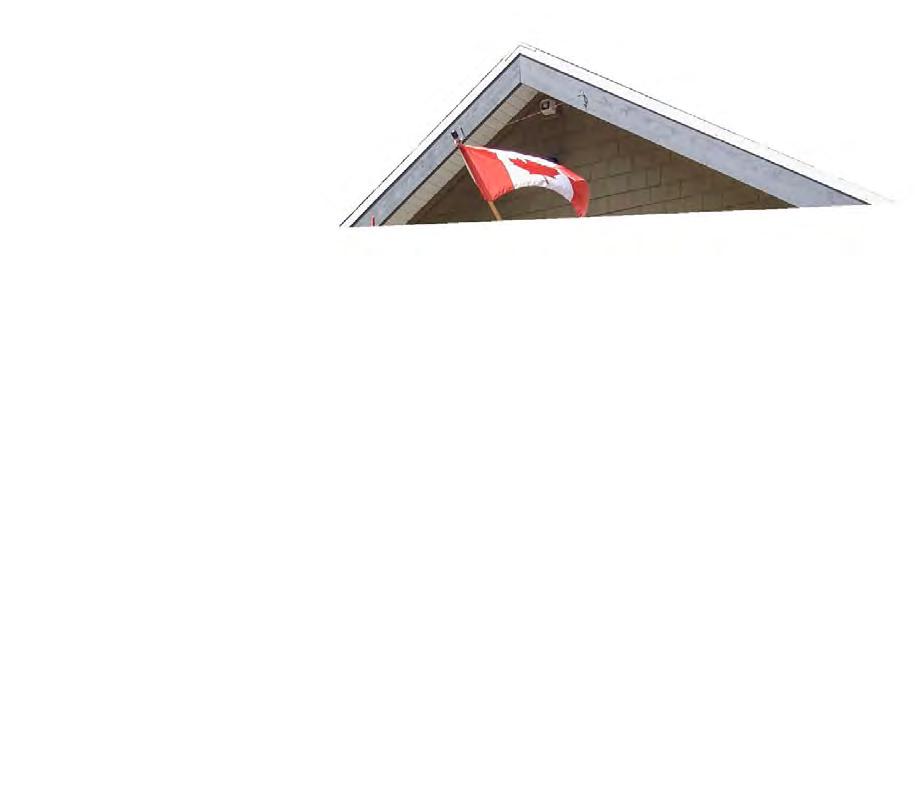
so I wanted to rework the specification to best suit the work I was doing. I wanted to stay with a Cummins engine, so I replaced the small-cam 350 with a big-cam 475. This gave me the largest engine I could work without having to change out the cooling system. I also had the Roadranger 12513 swapped out for an 18918, same with the rear end, still Rockwell 44s but 456s instead of 529s.”
The cab also needed to be fully stripped back and refurbished. “I added twin air cleaners, rather than the single it used to have, and they are set out with the cold-air intakes as well, where the air is taken from under the hood. I also found and fitted
a 36in sleeper with the three inspection windows in the back panel. These windows are used to look through by using mirrors, so you can see the winch when it is being operated without leaving the driver’s seat.”
Slowly, but surely, all the parts were cleaned, painted and reassembled. Finally, it looked like a truck again.
“As you can imagine, the project spanned years, way longer than I ever anticipated. And once it was completed, I had already retired, and my wife and I had moved west to our current home in Sooke, Vancouver Island, BC. So I brought the truck to our new home, and I finished off all the small stuff there – headache
rack, fifth wheel, fenders and the personal touches.”
The truck is all legal again now, but not as a work truck, instead as a classic on collector plates.
“Yes, that’s correct, it has never been back to work; it only goes to truck shows now. It gets a lot of attention, especially in the USA, as this model was only built in Canada specifically for the Canadian market, so it is an unusual sight for them.
“It definitely was a fun and interesting build, I had some great people working with me every step of the way, but now it’s done, I wouldn’t want to do it again!” he says with a laugh.
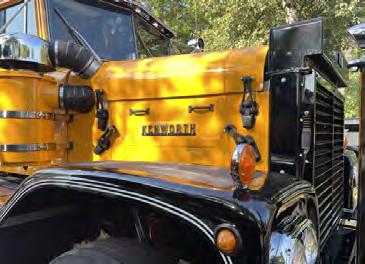
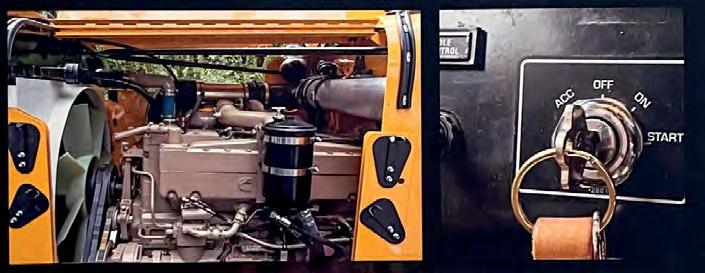
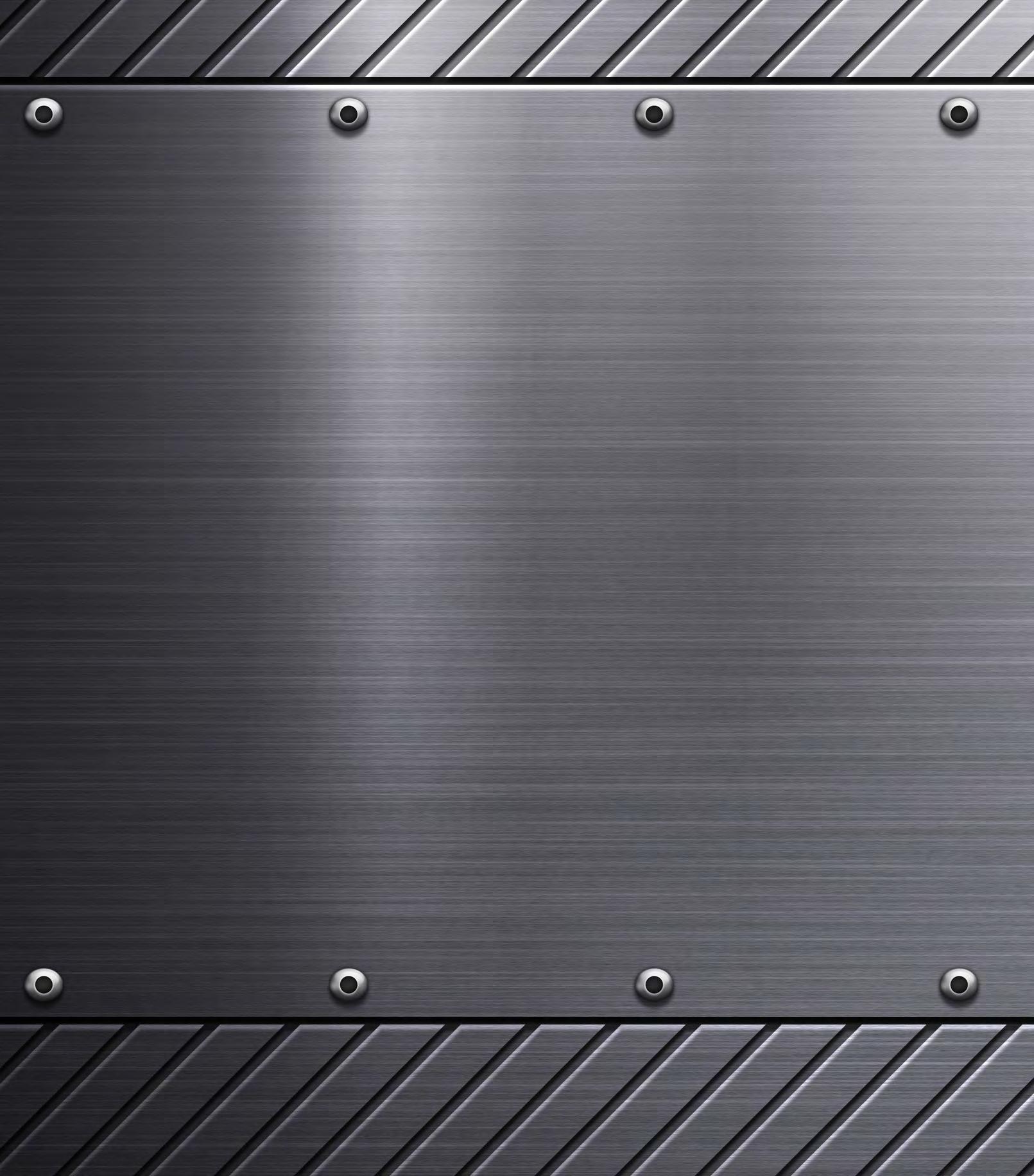

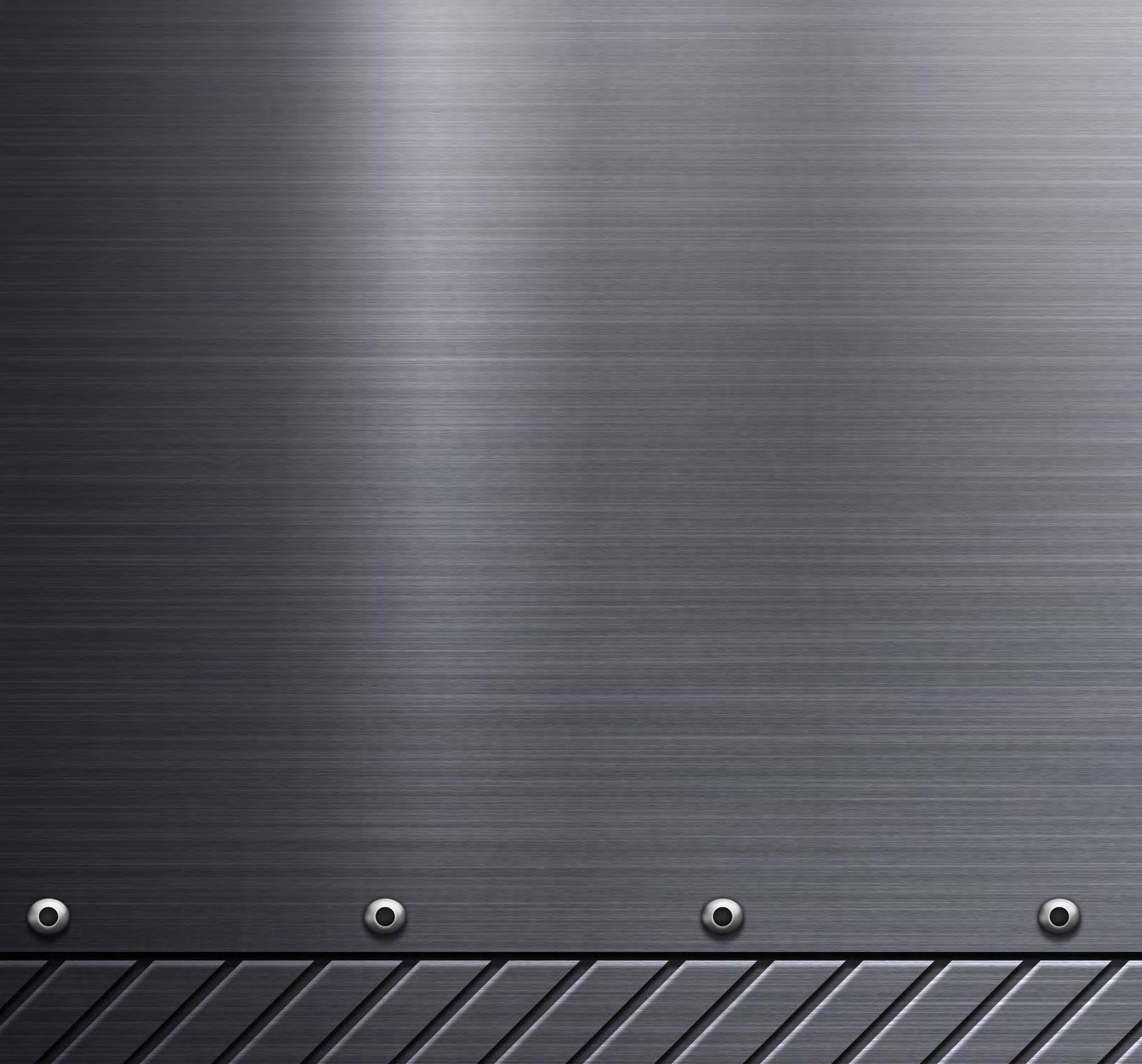


We’re incredibly proud to be voted #1 in safety in NZ Trucking magazine 2023 national trucking survey. From stronger cabs, to smart emergency brakes, to side-detection alerts, our focus is always on the best possible protection for our drivers and fellow road users.






The inspiration, Progress Transport fleet No.5, seen here back in the day with a load of woolly passengers.

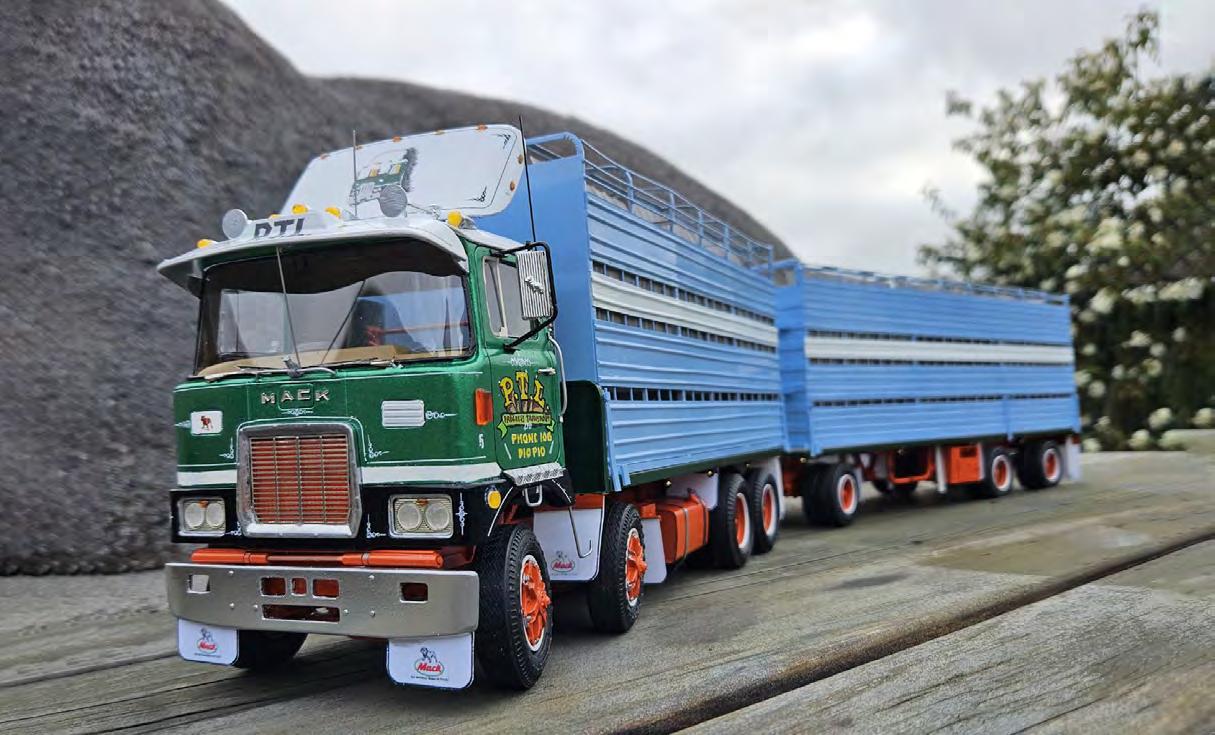
By Carl Kirkbeck Photos: Lance Warren collection
We all have a fond childhood memory or two; they’ll raise a smile when we find ourselves in a daydream, reminiscing. This month, we take a look at Lance Warren’s threedimensional memories that most definitely produce a multitude of smiles.
As a youngster growing up in the heart of the King Country, truck-mad Lance Warren’s backyard was the Progress Transport depot on Huia Street, in his hometown of Piopio.
The connection to the PTL fleet was only strengthened with Dad, Rex Warren, employed as a career driver with the company for more than 35 years. The many hours spent in and around the yard with his father is embedded in Lance’s mind.
“I would head on down there whenever possible. I would go out with Dad in his truck for a ride, as well as with the other drivers.”
According to Lance, they were great times with a great bunch of characters, all of whom have guided Lance throughout his own driving career.
“The time spent in and around the fleet back then sure has given me plenty of inspiration for model truck projects now. I have built three replica model trucks from the PTL fleet now. The first was the V8 Detroit Diesel-powered R-model Mack, the second the Isuzu that Dad drove for some time, fleet No.4 – Moonlight Stroller. And now, fleet No.5, one of the FR Macks. This truck for me was one that I spent quite a bit of time in, both with owner-driver Keith Young, and also Dad, who drove it from time to time when needed.”
The FR Mack project started with the AMT ERTL ‘Mack R685ST’ kitset. Then Lance placed an order with our mates at Auslowe for the slimline
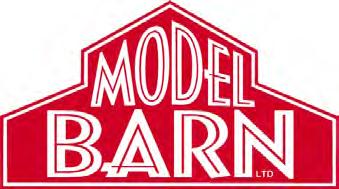
day cab conversion, as well as wheel rims, air cleaners and plumbing, various suspension parts, air tanks and assorted finishing details. Next Lance decided to use Evergreen plastic extrusions to form his own chassis rather than use the one from the kit, this way achieving the correct wheelbase, as well as a little more rigidity. The trailer is virtually all scratch built, again using Evergreen product, and suspension items from Auslowe.
Painting of the model has mostly been achieved by using Tamiya aerosol spray cans, except for the blue on the crates. A close-enough match was unavailable in the Tamiya lineup, so the real paint was used, and applied with an airbrush. Where Lance has really topped off the build

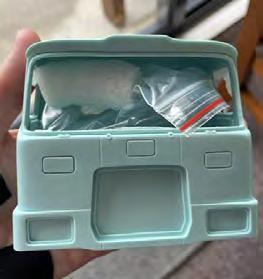
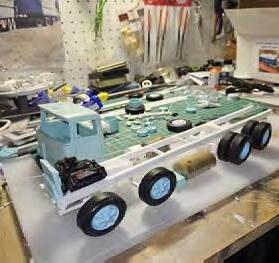

is with the signwriting. Most of us would now jump to the computer, grab a photo of the door, screenshot the lettering, digitally print it on transfer paper, and apply. However this is not the case for Lance; instead, he has taken a leaf out of the oldskool sign writers’ instruction manual and applied enamel paint via a brush, and it looks absolutely superb. The likes of Peter Green and Tony Hill would most definitely approve of Lance’s approach to the artform. What Lance has captured here, with his attention to the smallest of details, is one of those trucks that perfectly depicts the New Zealand trucking scene throughout the late 1970s and early 1980s – some would say the heart of the glamour era. Here at New Zealand Trucking magazine, we salute you Lance for an extremely well-executed build. As for Lance’s parting comment: “Watch this space, there is more of the fleet to be built yet.” All we can say is stay in touch, mate. We can’t wait to see which one is next.
“A special thank you to my very good mate, Keith Young, for all his input into this build of ol’ No.5. Lots of great memories tied up in this truck, mate. I truly appreciate all the assistance you gave on the phone to make sure I had everything just right.”

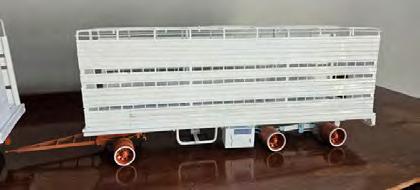
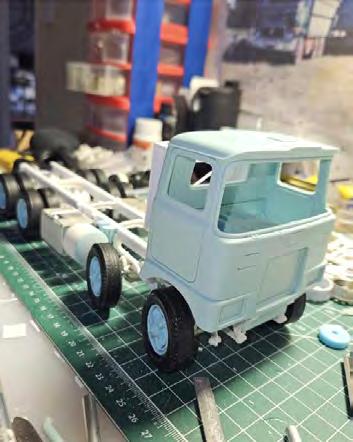



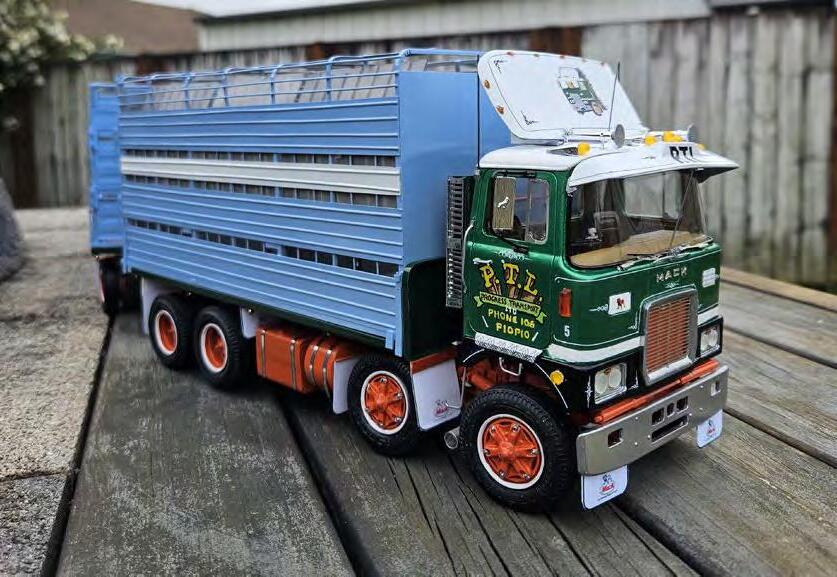
Show organisers
Please send your event details, at least eight weeks in advance, to: editor@nztrucking.co.nz for a free listing on this page.
Mitre 10 Ride in a Truck Day
Saturday, 12 October 2024
A&P Showgrounds, Hastings
Contact: Facebook – Mitre 10 Mega Ride in a Truck Day
2024 South Island Long Lap 14-26 October 2024
Redwood Hotel, Christchurch
Contact: Donna Hardie 027 451 8585, siclassictrucks@gmail.com
Southland Transport Invercargill Truck Parade
Sunday 27 October 2024
Corner of Bill Richardson Drive and Fox Street
Contact: Facebook – Southland Transport Invercargill Truck Parade
All scheduled events may be subject to change, depending on weather conditions, etc. Please check websites for updates before setting out.
Dave Carr Memorial Run
Saturday 2 November 2024
Highway Inn Truckstop, Sawyers Arms Road, Christchurch
Contact: Facebook – Dave Carr Memorial Run 2024, Skoda 027 323 8665, Cam 021 104 0599
Gisborne East Coast Truck Show
Saturday 9 November 2024
Gisborne Speedway, Awapuni Road
Contact: gizzy.truckshow@gmail.com
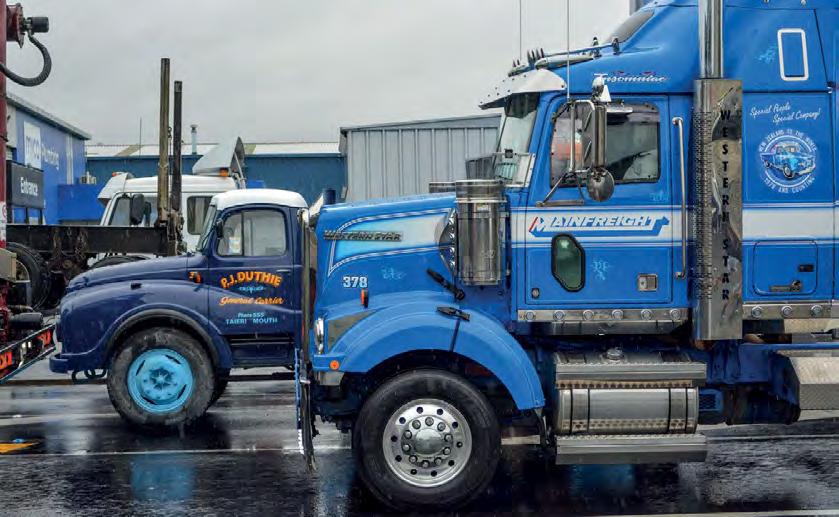
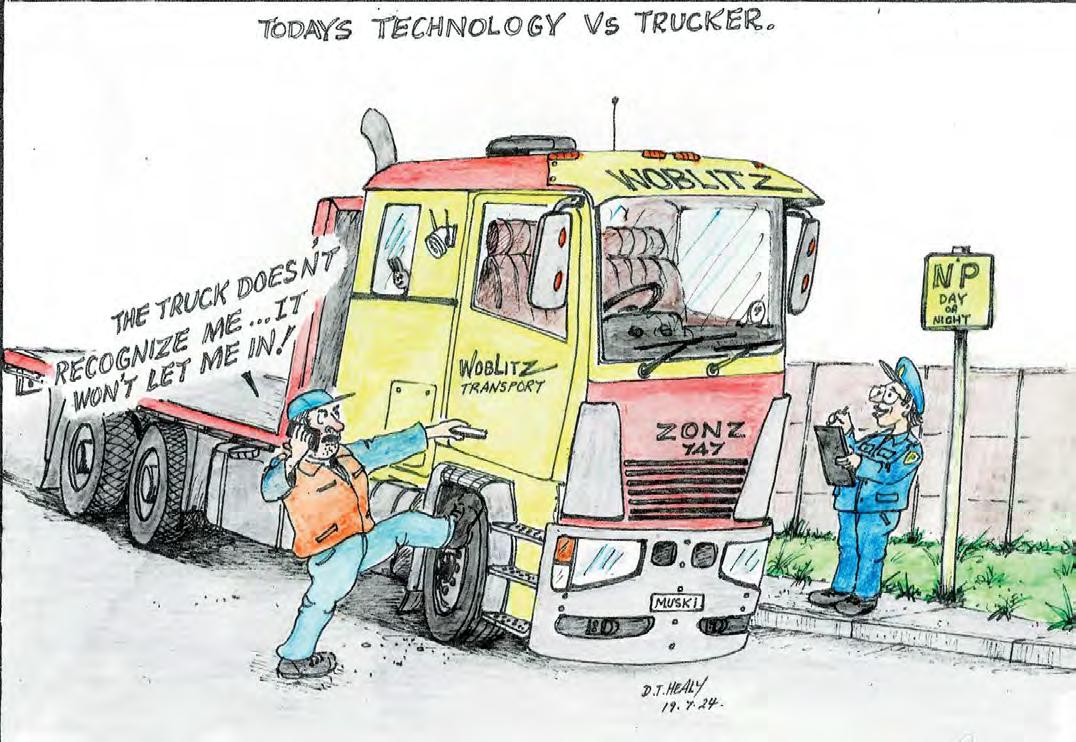

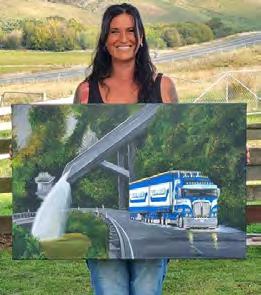

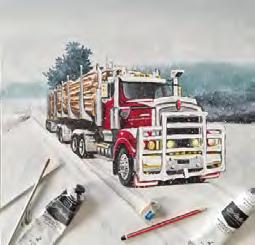


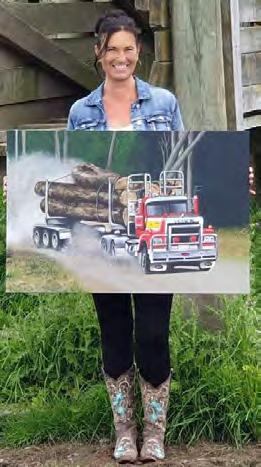
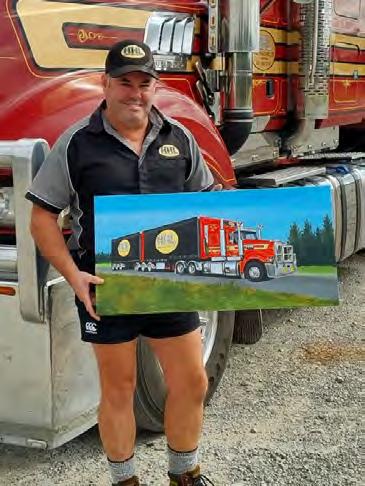
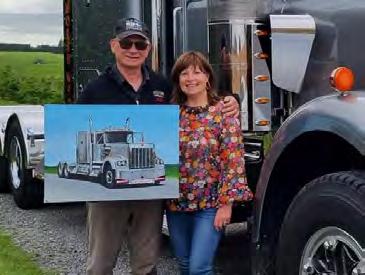
You could simply upgrade with your current provider, or you could take the opportunity to do future you a favour and implement a comprehensive fleet management solution with future-proofed 4G technology that will make your life easier as your business grows.
• Advanced metrics and insights you can reduce costs and vehicle downtime
• Digitise your manual processes to improve driver safety and boost productivity
• Stay ahead of your competition with a comprehensive solution
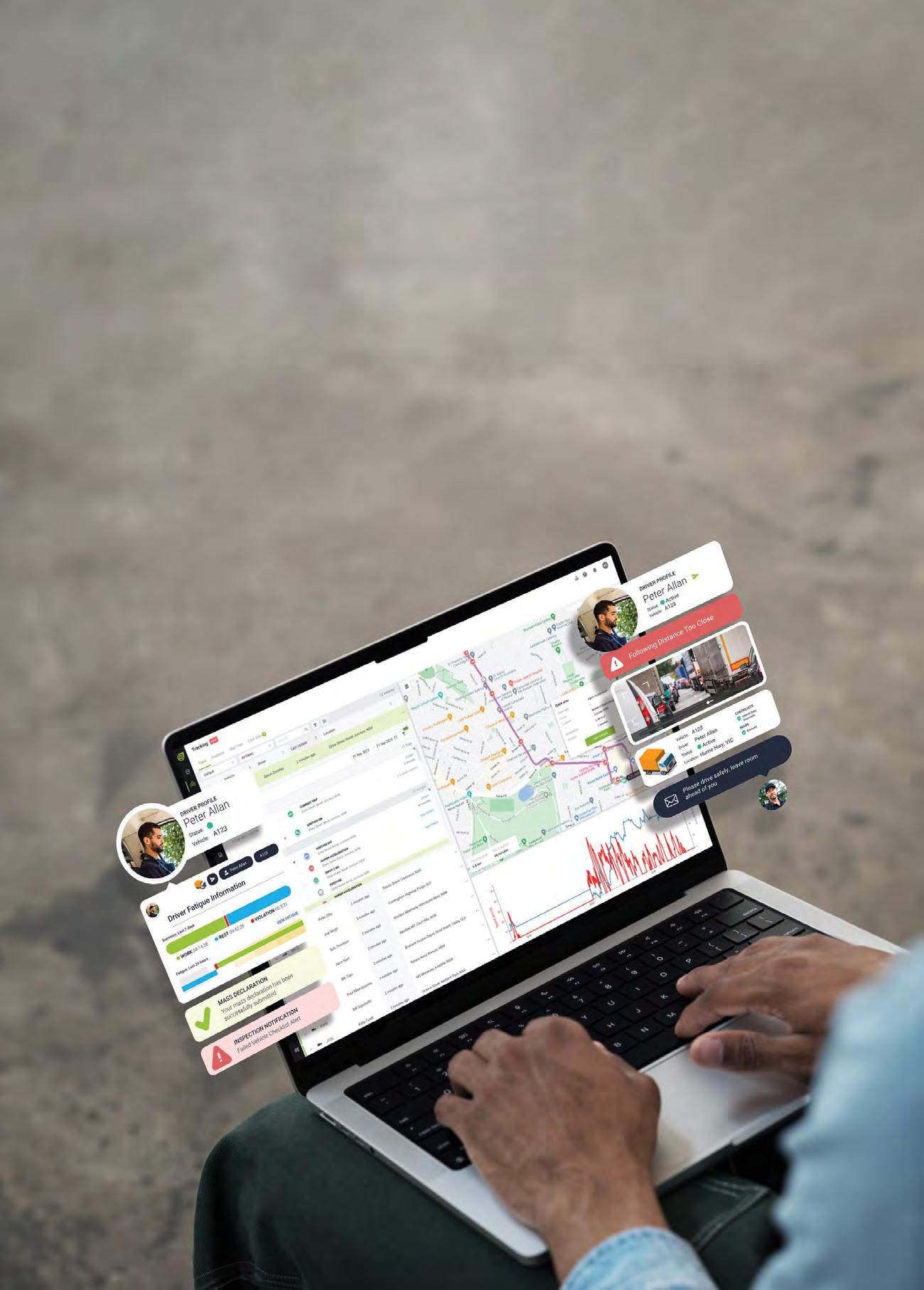

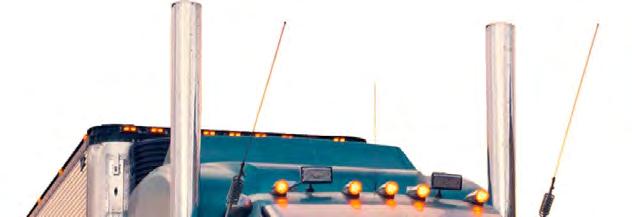
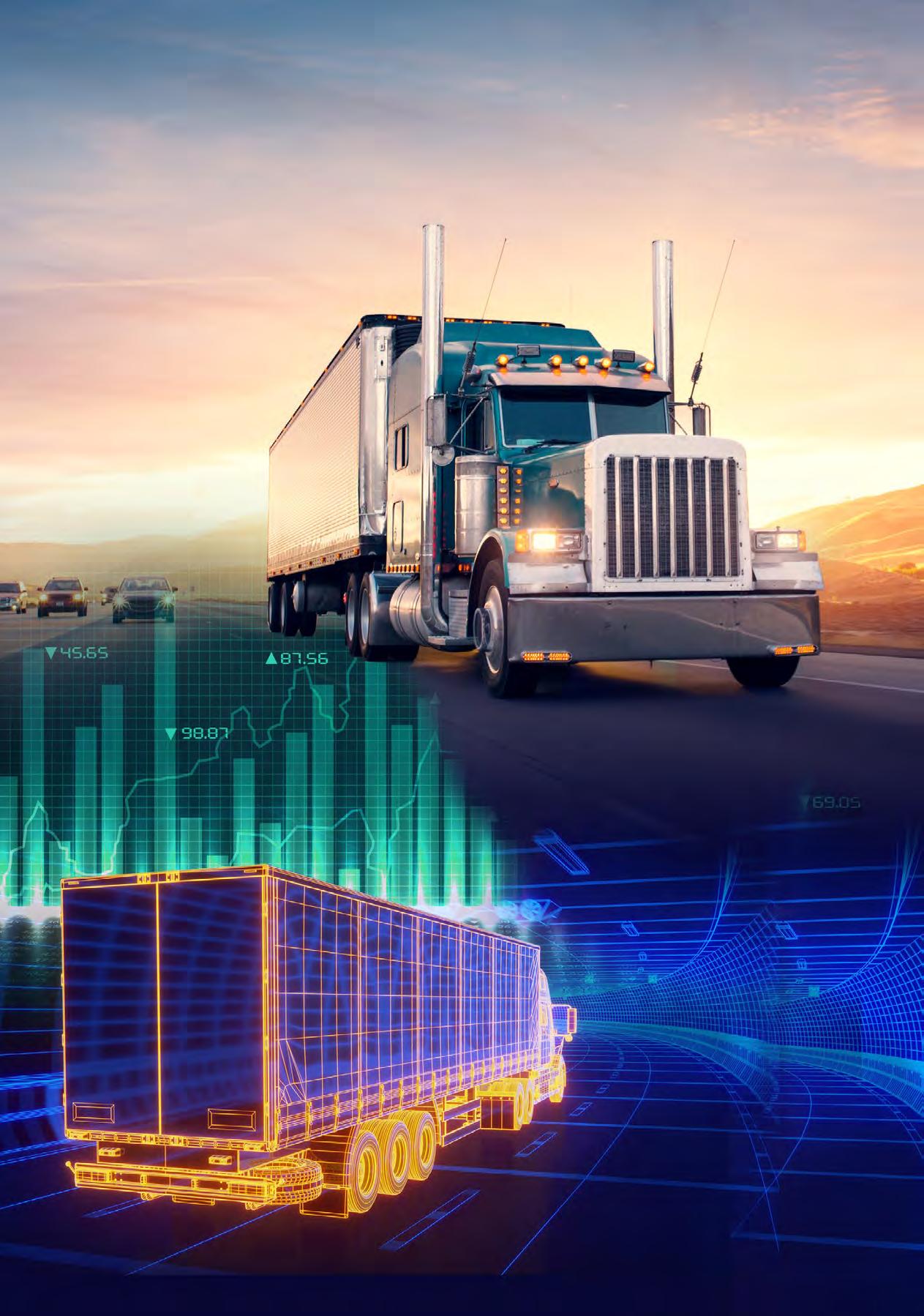


New Zealand Trucking reveals how the economy is travelling via key metrics from the road transport industry.
This information is compiled by Russell Walsh from information provided by the NZ Transport Agency statistical analysis team and through the Open Data Portal.
The data used in this information reflects any amendments to the data previously reported.
This summary includes data from two heavy-truck classes and one heavy-trailer class.
A goods vehicle is a motor vehicle that:
(a) is constructed primarily for the carriage of goods; and (b) either:
(i) has at least four wheels; or (ii) has three wheels and a gross vehicle mass exceeding one tonne.
Note: Vehicle classes are not the same as RUC vehicle types or driver licence classes.

Vehicle class Description
NB
(medium-goods vehicle)
NC
(heavy-goods vehicle)
TD (heavy trailer)
A table of all vehicle classes is in Table A of the Land Transport Rule Vehicle Dimensions and Mass 2016 Rule 41001/2016 https://www.nzta.govt.nz/assets/ resources/rules/docs/vehicledimensions-and-mass-2016-asat-1-October-2019.pdf
A goods vehicle that has a gross vehicle mass exceeding 3.5 tonnes but not exceeding 12 tonnes.
A goods vehicle that has a gross vehicle mass exceeding 12 tonnes.
A trailer that has a gross vehicle mass exceeding 10 tonnes.
First registration of NB, NC and TD class vehicles year on year, to date
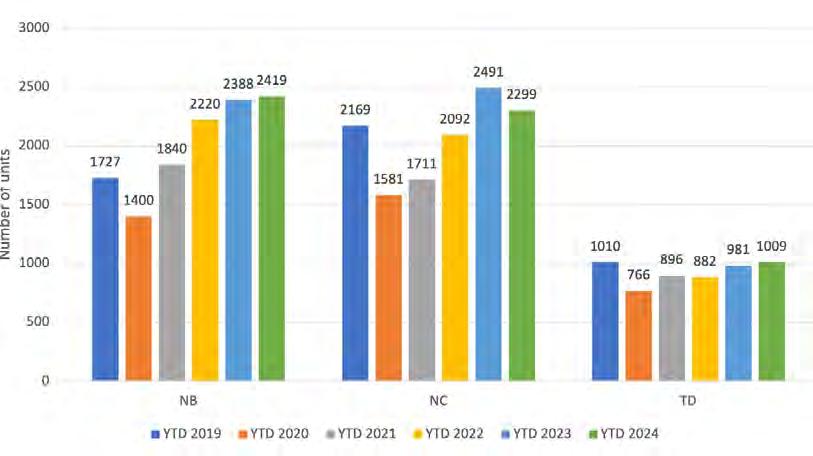
First registration of TD class heavy trailers for August, year on year by major manufacturer
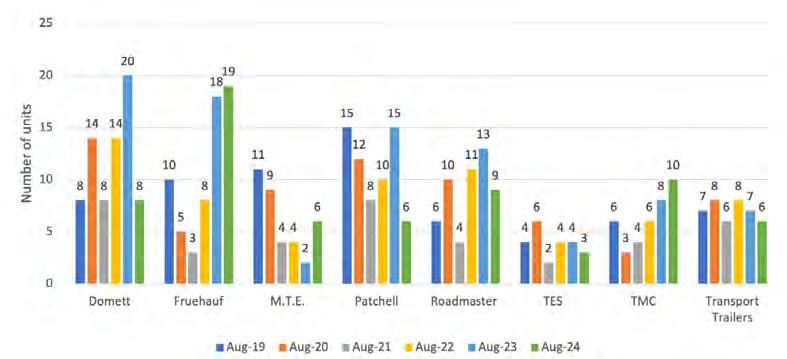
Other suppliers of class TD heavy trailers not included in above
First registration of NB and NC class vehicles for August, by major manufacturer
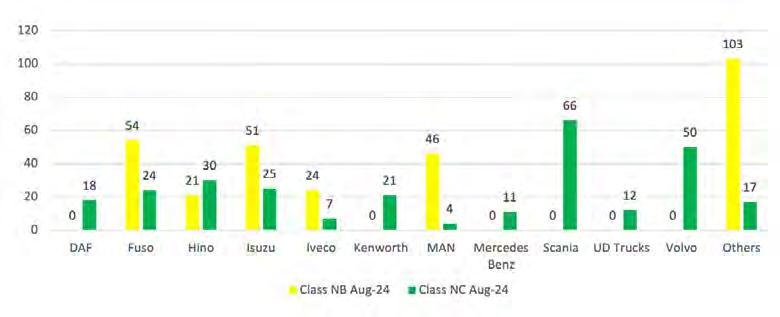
First registration of NB, NC and TD class vehicles for August, year on year

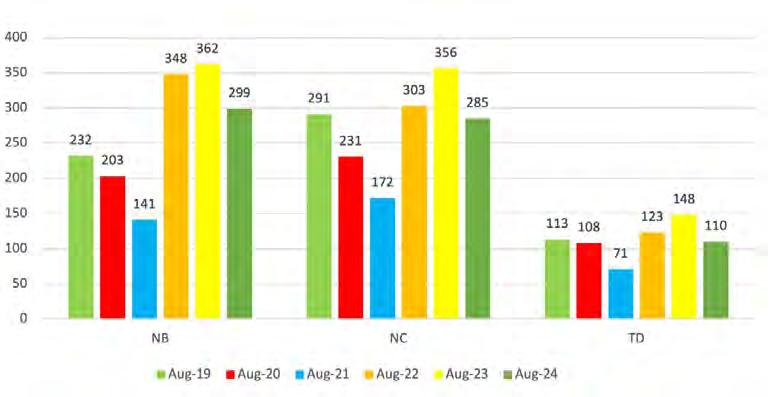
First registration of NC class vehicles year to date 2019 –2024, by major manufacturer

First registration of TD class heavy trailers year to date 2019 –2024, by major manufacturer
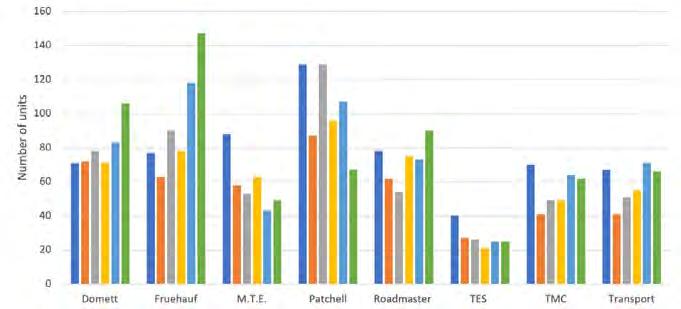
Due to a change in process, the presentation of RUC data will now lag by two months. It is compiled from information provided by the NZ Transport Agency via an Official Information Request.
New Zealand Trucking magazine acknowledges the assistance of the media team at NZTA for providing this information to us.

Total value and distance of road user charges purchased per year and year to date
Summary of RUC transactions for July 2024
Number of individual RUC licences issued for month 314,000
Total kilometre RUC distance purchased (All types) 1,409,003,224
Total value of all RUC purchases (All types) $186,552,100
1 Jan 2019 – 31 Dec 201916,166,434,103 $2,041,939,272 1 Jan 2020 – 31 Dec 202015,421,400,378 $2,069,615,049 1 Jan 2021 – 31 Dec 202116,204,803,262 $2,249,341,814
1 Jan 2022 – 31 Dec 202217,683,361,155 $1,710,831,998
1
1 Jan 2022 – 31 Dec 2022 13,375,038,937 1,114,586,578
1 Jan 2023 – 31 Dec 2023 12,029,164,087 1,002,430,341
1
RUC type 1 vehicles are powered vehicles with two axles (except type 2 or type 299 vehicles. Type 299 are mobile cranes). Cars, vans and light trucks that use fuel not taxed at source (i.e. diesel fuel) are generally in this RUC type.
1 Jan 2023 – 31 Dec 202316,687,053,002 $1,655,078,736 1 Jan 2024 – 31 Jul 20249,793,203,857 $1,284,861,731 The top nine RUC type purchases, other than type 1, in descending order RUC distance purchased for RUC type 1 vehicles
RUC type Description
2Powered vehicles with one single-tyred spaced axle and one twin-tyred spaced axle
6Powered vehicles with three axles, (except type 308, 309, 311, 399 or 413 vehicles)
43Unpowered vehicles with four axles
14Powered vehicles with four axles (except type 408, 414 or type 499 vehicles)
33Unpowered vehicles with three twin-tyred, or single largetyred, close axles (except vehicle type 939)
408Towing vehicles with four axles that are part of a combination vehicle with a total of at least 8 axles
951Unpowered vehicles with five or more axles
H94Towing vehicle that is part of an overweight combination vehicle consisting of a type 14 RUC vehicle towing a type 951 RUC vehicle with a permit weight of not more than 50,000kg.
H95Towing vehicle that is part of an overweight combination vehicle consisting of a type 14 RUC vehicle towing a type 951 RUC vehicle with a permit weight of 50,001kg - 54,000kg
RUC distance purchased year-to-date July for selected RUC types

A description of RUC vehicle types is available at https://www.nzta.govt.nz/vehicles/licensingrego/road-user-charges/ruc-rates-and-transaction-fees/ Please note data may differ slightly from that reported for the same period previously due to adjustments being made to the base data.
RUC purchases (All RUC types)



Average monthly RUC purchases for year (All RUC types)
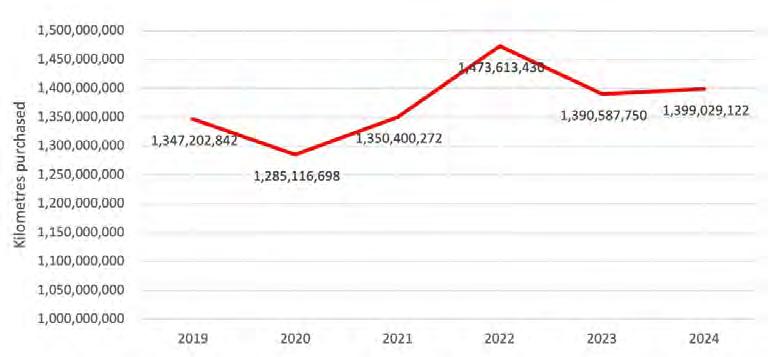
RUC purchases during July for selected types



Total licences issued for rolling year to date – 3,793,585
Total number RUC licences issued for month (All RUC types)
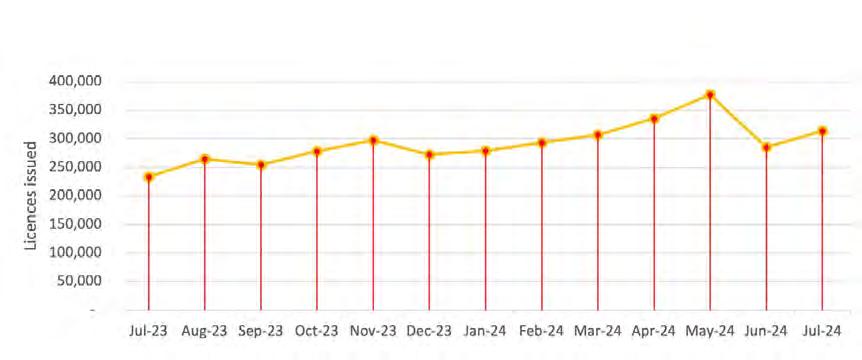
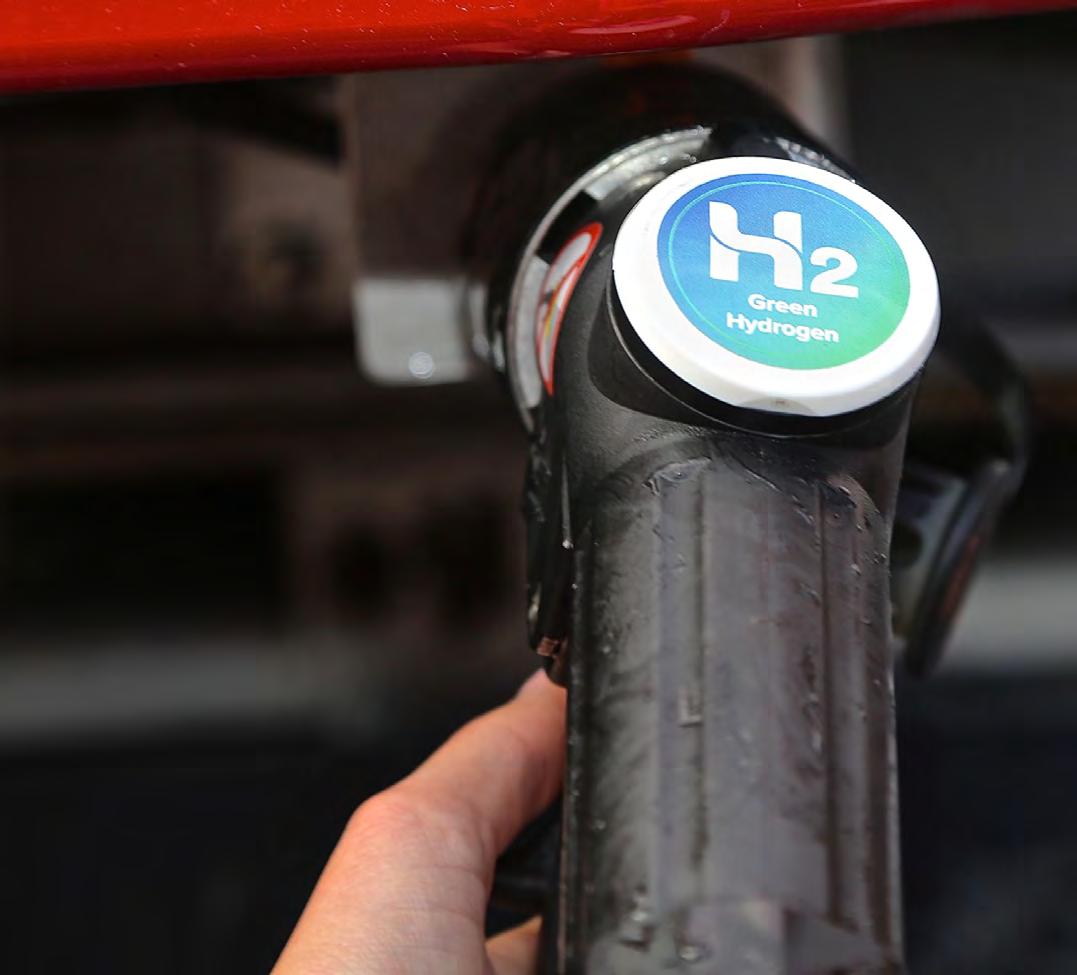
With the opening of Hiringa’s Hydrogen refuelling network, here’s what drivers should know about hydrogen refuelling.
Operating a hydrogen truck is comparable to a diesel equivalent, especially when it comes to refuelling. But there are some subtle differences.
Hiringa Energy’s HSEQ manager Emily Hilton talks through two notable aspects that drivers should know about: the refuelling process and the approach to safety.
Refuelling a hydrogen truck is designed to be fast – around 15 minutes from empty – so
you can get back on the road quickly.
Refuelling stations are uncrewed, with digital point of sale (POS) terminals on the dispenser.
All drivers need to do is connect the nozzle to the truck, wave a card over the paywave terminal and press a button to activate the pump. The process stops automatically when the vehicle is full. It’s effectively refuelling as you know it.
Although simple, the subtle differences in process and equipment from refuelling with diesel mean that drivers are required to undergo some simple training before
refuelling with hydrogen. This involves watching a basic four-minute video and completing a driver training registration form.
At many overseas hydrogen refuelling stations, the refuelling time increases between each back-to-back fill. However, the Hiringa system has been specially engineered to maintain pressure for fast back-to-back-to-back fills, so you’re waiting no longer than you would at a diesel stop.
In the same way that thousands of people around New Zealand fill their vehicles with liquid fuel every day without thinking twice about it, refuelling a hydrogen truck is an unremarkable event.
As you’d expect, Hiringa refuelling stations
adhere to the highest standards of safety, from the production of green hydrogen to the compression, storage and vehicle refuelling equipment.
From the very outset, Hiringa has been committed to not only meeting, but exceeding safety standards in all aspects.
• The equipment is designed and certified to international hydrogen and pressure equipment standards.
• Independent experts have modelled and approved the safety profile of equipment, even after it’s been certified.
• Third parties have carried out risk assessments that have been peerreviewed and accepted as extensive.
• Hiringa’s overall approach to health, safety, environment and quality processes has been voluntarily audited, and all recommendations have been addressed and signed off by the auditor.
In this day and age, regulators and certifiers have zero tolerance for signing
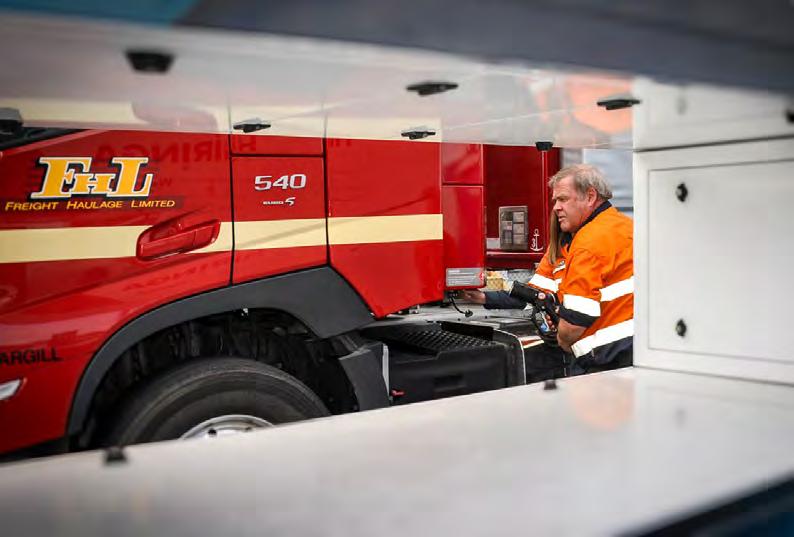
off on technology that presents an unacceptable level of safety risk to the public.
There are more than a few myths regarding hydrogen safety going around, but

these myths have been busted or addressed over time through advances in technology, sharing lessons learned in industry and applying a thorough risk management approach.
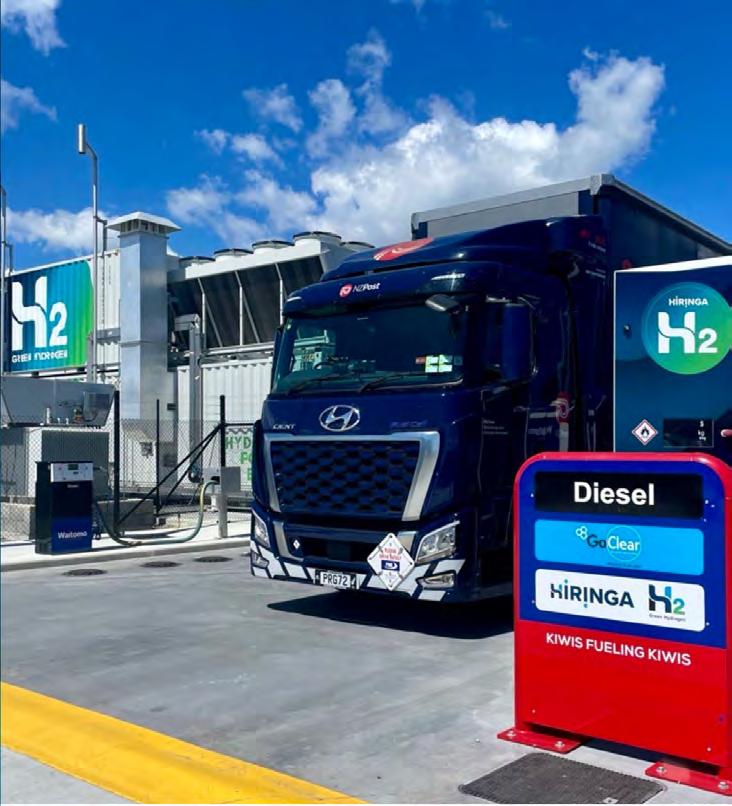





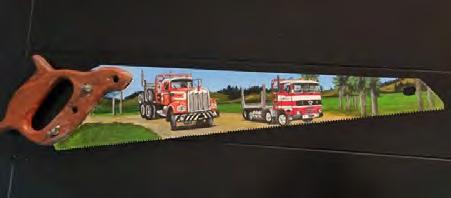
Rochelle Thomas, the creative force behind Auto Art by Rochelle, has carved out a niche in the New Zealand trucking industry with her custom truck painting commissions.
Ipainted my first picture 13 years ago,” she says. “I just always looked at paintings and admired them, and then one day I decided to give it a go myself, and I went and bought some paint and brushes.”
Initially, her art wasn’t focused on trucks. “I’ve always thought trucks are cool, but my first paintings weren’t trucks. They were more personal projects, like a small shed.” However, her interest in vehicles naturally led her to incorporate cars into her art.
“After painting a few cars, a friend of a friend asked me to
paint his Kenworth. That’s how my truck painting started.”
Rochelle says the custom truck paintings have gained in popularity due to their personal touch and the pride truck owners feel in their vehicles.
“They’re proud of their trucks. A lot of money and time goes into them,” she says.
Her work is not only a favourite with truck enthusiasts but also makes for memorable gifts. “A lot of people find the paintings are perfect gift ideas. I see a good mix of commissions for both personal and gift purposes, it’s about 50/50 at the moment.”
Rochelle says one of her favourite recent pieces is one she completed for ZAR Logistics.
“I just finished an International truck painting for ZAR Logistics. It features an airplane and the Fiji Islands because they’ve got a contract with Fiji Airways,” she says. “It was really cool because
of the angle – it’s from the back end – and it’s really vibrant and unique.”
Each painting can take anywhere from 20 to 50 hours, depending on size and detail. Rochelle says she has honed her skills over the years through self-teaching and constructive criticism.
“If you ever look back on my first paintings, you’ll see how
far I’ve come. I’ve had a lot of critique, and that’s just made me strive to be better,” she says.
The most rewarding aspect of her work, Rochelle shares, is the emotional impact her paintings have on clients. “It feels so good. I’ve had a few videos of people gifting the paintings, and their reactions have brought tears to their eyes. It’s really heartwarming.”

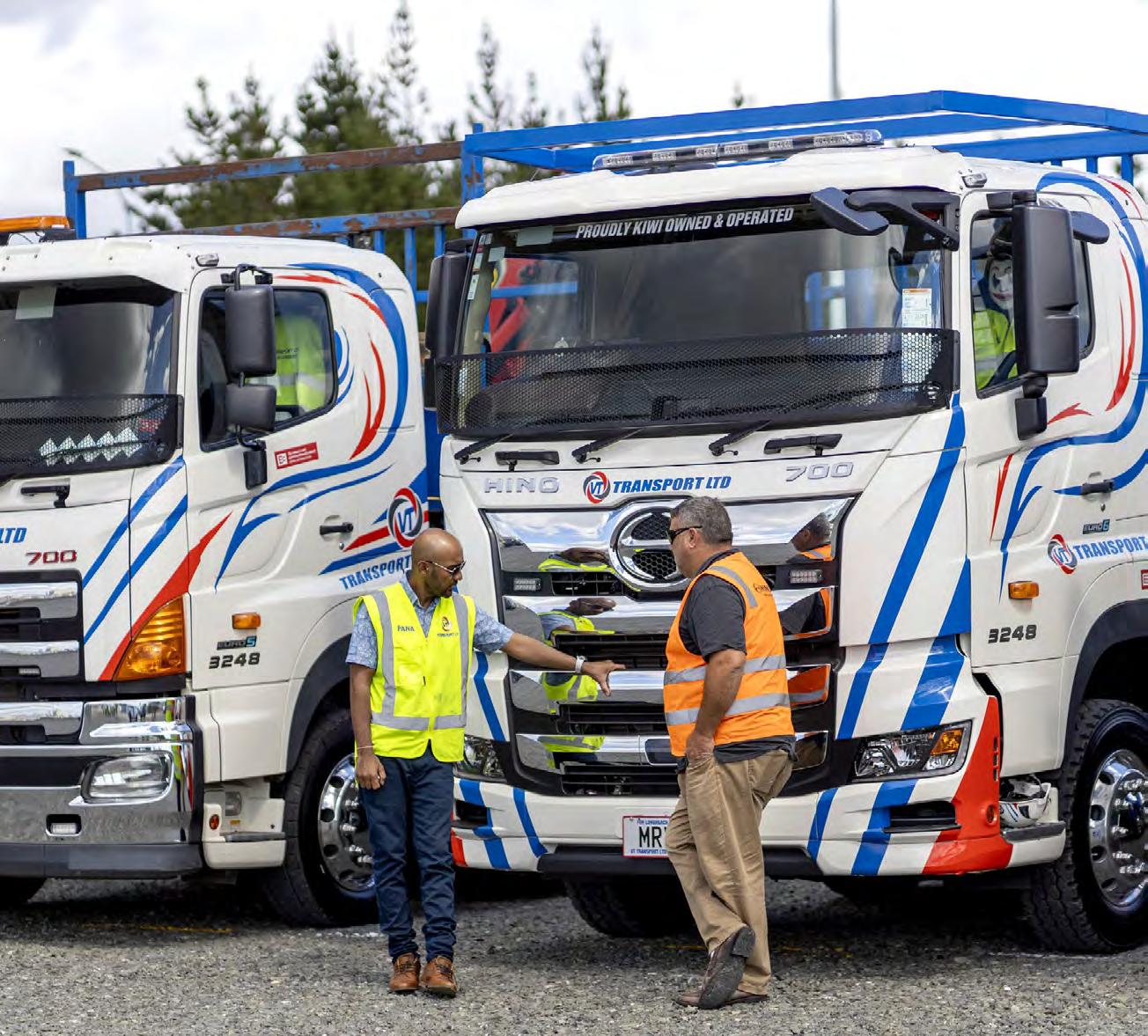

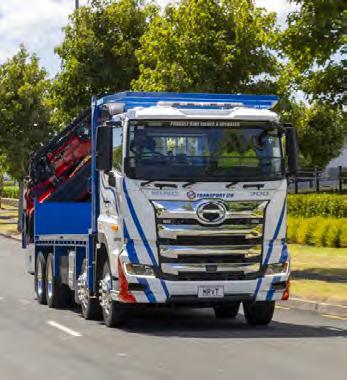

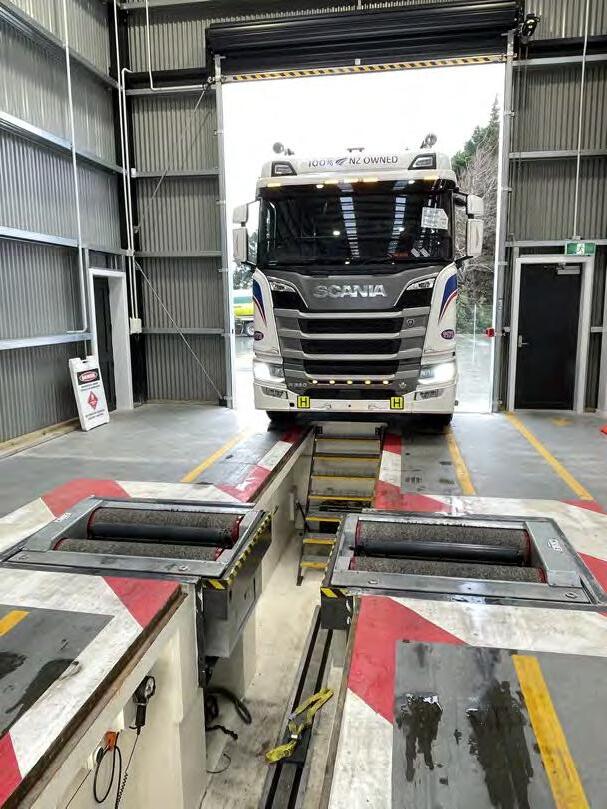
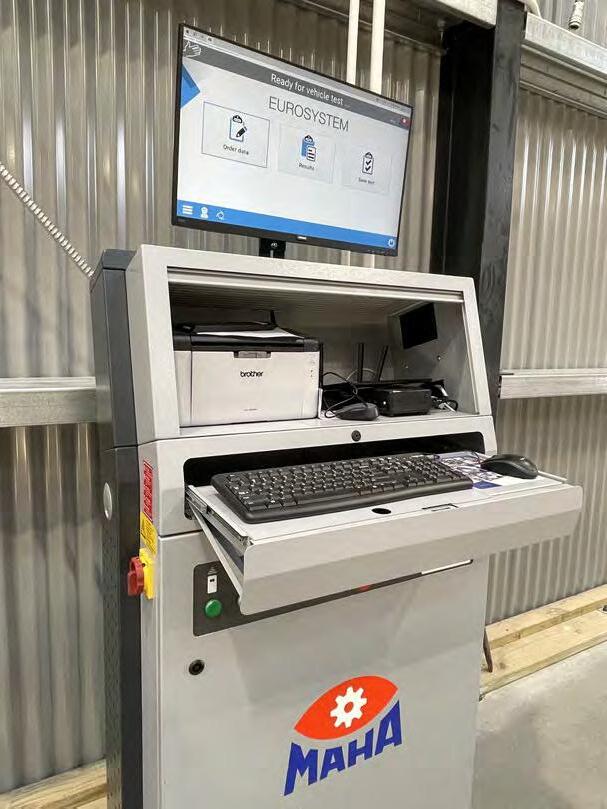
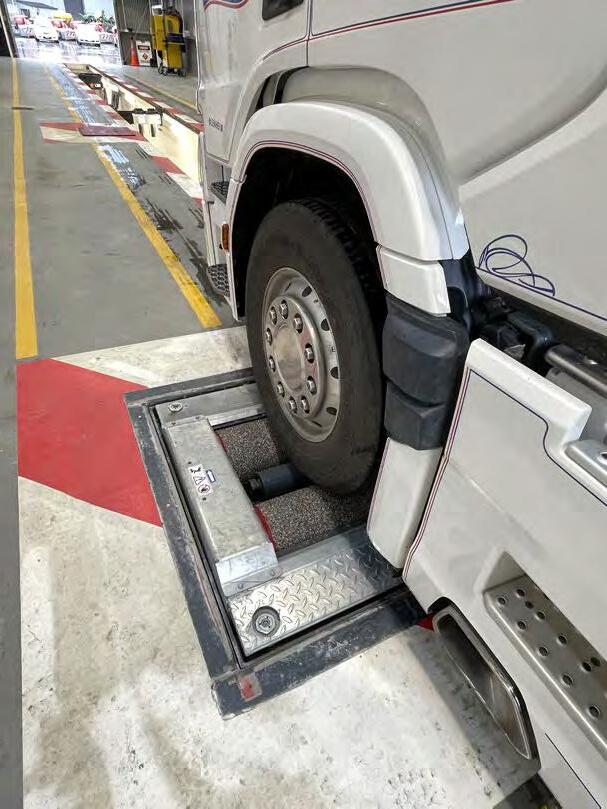
A successful collaboration between MAHA and Scania New Zealand led to the completion of a major equipment installation at Scania’s new Invercargill facility.
Scania New Zealand opened the new service centre mid-June, as it looked to support its growing southern customer base. Demand for servicing and repairing trucks in the region has increased dramatically as Scania fleet sizes have increased.
The new branch, located at 20 Wallacetown Lorneville Highway, Invercargill, has a 10-bay drive-through capacity with the ability to accommodate 15 technicians, replacing the previous four-bay drive-through workshop that housed 10 technicians.
The new workshop includes a certificate of fitness-compliant lane, full brake-roller testing and shaker-plate capabilities, along with a certified dangerous goods pit suitable for fuel tanker work and other DG vehicles, as well as full air-conditioning servicing and re-gassing.
The Invercargill site services the area between Queenstown to Dunedin and south to Bluff. It is Scania’s first purpose-built facility in New Zealand.
“We wanted to be able to check any vehicle and carry out any diagnostics on brake and suspension systems, and also we want to be COF-certified to give us the ability to do COF inspections at that facility,” says Kelly Henshaw, Scania dealer director –South
“The goal is to be able to efficiently and accurately diagnose any braking faults, any suspension faults, and also to have the ability to do onsite COF.”
Henshaw says Scania had the option to run with any configuration and brand it wanted for the Invercargill facility.
“We’ve got a number of different companies we can deal with, but we like to deal with MAHA because of the quality of the equipment and the reputation that it has in the industry,” he says.
Henshaw says the relationship with MAHA goes back a long way.
“I’ve had a lot of dealings with the local MAHA team, and also the Australian team, and the communication is good, the feedback loop is good, the pricing is accurate. I think they’re a great bunch of people to deal with.”
He says MAHA was involved in the build of the equipment every step of the way.
“They checked everything was correct before the floor was laid. Then they came back when the equipment was up and running, and then carried out the training as well.
“They didn’t just sell the equipment and wish us all the best. They were there throughout the journey to advise on any issues the builders and the developers had. They were integral with that communication loop, and they were physically on site to make sure that the equipment was in the right location and correctly installed.”
Mick Lauster, managing director of MAHA, says the collaborative nature of the project was evident from the outset.
“It’s a really collaborative operation between us and Scania. We are heavily involved right from the planning stage,” he says.
“We consulted on the architectural plans, ensuring that the design accommodated the sophisticated equipment required for Scania’s operations. We continued to provide support as construction progressed, overseeing the implementation of their equipment into the building’s infrastructure.
“Once the physical construction was completed, our role transitioned to equipment installation and staff training, ensuring that Scania’s team was fully equipped to utilise the new technology effectively.”

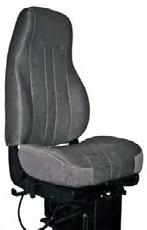

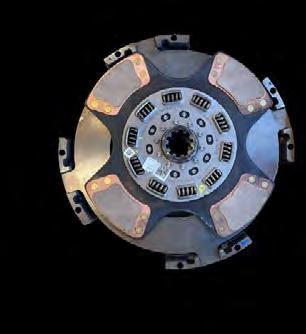
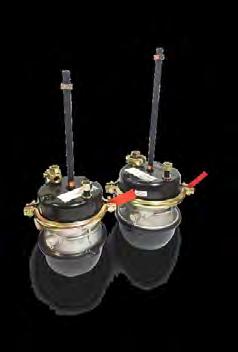
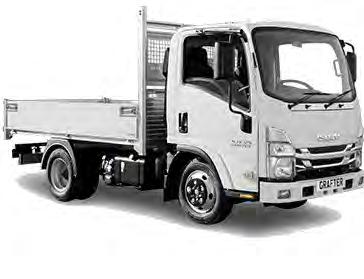



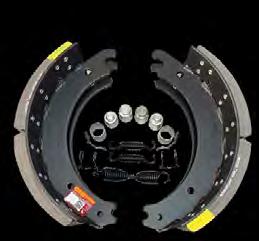
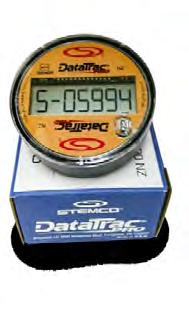













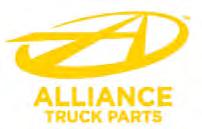
Automotive supplier Genuine Parts Company (GPC) – better known locally as Repco, NAPA, SAS and Sulco – has unveiled its new specialist vehicle training centre in Penrose.
Uniquely positioned with both local and international insights, GPC has invested in a solution to fill the immediate and long-term training gap brought about by rapidly changing technology.
New Zealand’s vehicles are changing rapidly, with circa 50% of arrivals being electrified (hybrid and EV) – currently acccounting for 9% of the overal car parc. Workshops are about to see one in every 10 cars on their hoists being EV or hybrid. That provides a significant opportunity for the industry to grow with these changes.
“GPC’s training centre is set up to provide a springboard to help workshops negotiate the vehicle technology changes they’re seeing in their workshops,” says Jonathon Maddren, executive general manager GPC NZ.
“GPC’s investment in the Future Technology Training Centre will support our workshop partners in developing their team’s skills for the new future of servicing and repairs.”
It’s not just electric vehicles driving these changes, it is also predicted that up to 50% of the country’s fleet will have advanced driver assistance systems (ADAS) as standard features by 2030. These advanced systems introduce a new level of complexity to maintain their safety characteristics. For example, replacing the windscreen can affect distance perception, and so with windscreen replacements, sensor recalibration will become an increasingly crucial step for trained technicians to maintain vehicle safety and function. Similarly, changes to wheel alignment may have potential consequences for lane assist function.
“GPC sees its role as a supply partner who can source global and national knowledge to share with the New Zealand workshop owners and technicians,” says Maddren.
“We want to help to ensure the information relating to future technology vehicle servicing and repairs is easily accessible for New Zealand workshops.“
Upskilling independent workshops has an additional benefit for the industry, with drivers of EV and hybrid vehicles likely to appreciate workshops that have formal accreditations or training specific to their cars.
Aligning with New Zealand tertiary studies provider Unitec, GPC has not only created a state-of-the-art training location, but will also collaborate and provide latest trends and practical insights to support Unitec’s curriculum – creating the ultimate hybrid solution. GPC training will be available for both current trade technicians, bridging the knowledge gap in the short-term, and of course, providing the

practical know-how for the next generation.
“We are excited to be partnering with GPC and acknowledge their significant investment into the new training centre to support the New Zealand automotive industry,” academic programme manager for Unitec trades and service, Bryan Davis says.
“Moving forward, GPC and Unitec trades and services are working to leverage their academic programme development and delivery expertise, world-class facilities, and experienced industry staff to co-develop and co-deliver industry-relevant programmes.”
GPC launches a purpose-built 350m2 training facility this month, welcoming air conditioning trainer Grant Hand with in-depth workshops covering automotive, earthmoving and agricultural equipment training.
It will offer a range of formats in this multipurpose space that cater for hands-on practical training for small groups through to a 150-person auditorium setting. Training will span all industry sectors – mechanical, auto electrical, air conditioning, EV, hybrid, ADAS and commercial.
GPC has built the training centre alongside its new Technical Centre of Excellence – an expert call centre team of highly qualified technicians dedicated to sourcing EV, hybrid and ADAS parts and products, and any other future tech advancements that come their way.
For more trade details on training opportunities, contact your local NAPA, REPCO, SAS, or SULCO representative.

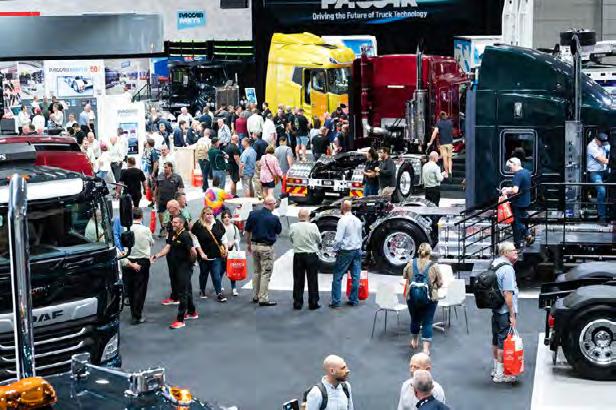
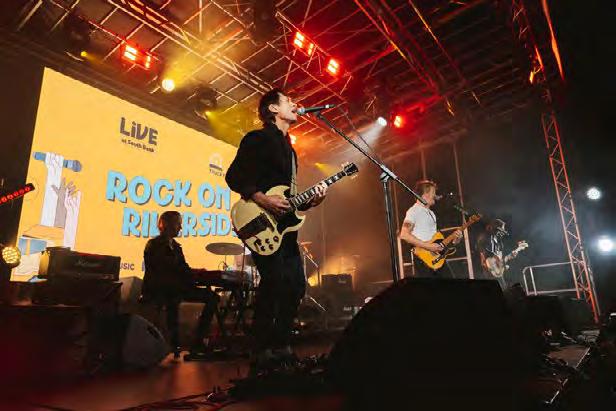
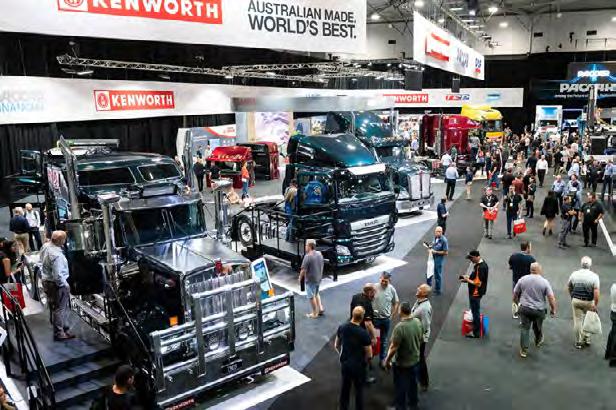
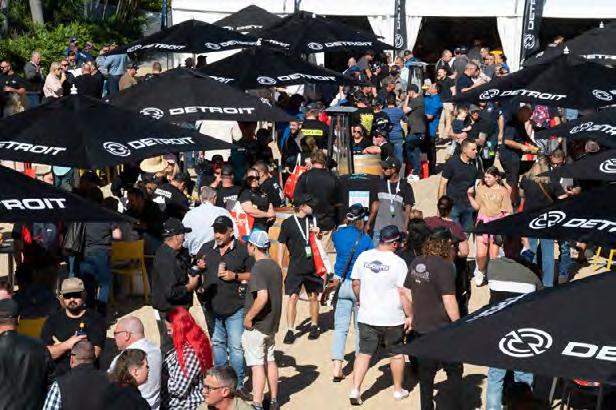

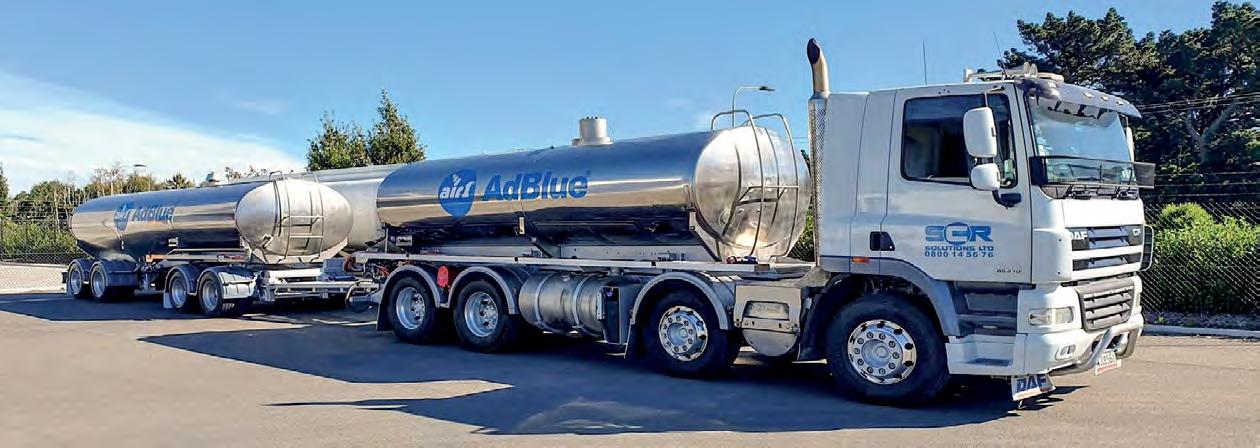
In the transport industry, the availability of AdBlue is more than a logistical necessity – it’s a critical factor in maintaining operational efficiency and compliance with environmental regulations.
SCR Solutions, part of IXOM, plays a pivotal role in ensuring a steady supply of AdBlue across New Zealand. Bruce Winter, sales manager for SCR, sheds light on the importance of reliable AdBlue supply and the company’s strategies to meet this demand.
With its two manufacturing plants on New Zealand’s North and South Islands, SCR Solutions has been at the forefront of AdBlue production since its inception 16 years ago. AdBlue, a solution used in diesel exhaust after-treatment to reduce emissions, is essential for meeting stringent environmental standards.
“AdBlue is not a complicated product, but the key thing is having really good quality and good quality control around how you manufacture it,” he says.
Winter says the acquisition of SCR Solutions by IXOM two years ago bolstered the company’s capabilities, enabling it to offer a comprehensive range of services. In addition to producing and distributing AdBlue via bulk trucks, SCR provides a full-service solution that includes packaged product, dispensing equipment, installation and the maintenance of bulk tanks.
installing and maintaining bulk tanks,” Winter says.
One of SCR’s strategic advantages is its exclusive supply relationship with Ballance, the sole manufacturer of 100% New Zealand-made AdBlue. “In the current environmentally conscious world, carbon footprints are increasingly scrutinised,” Winter says.
“Being able to make the product in New Zealand and avoid importing urea helps us
highlighted the importance of having local supply points. Our ability to produce AdBlue locally reassures our customers that we are not vulnerable to international supply disruptions.”
SCR’s resilience and reliability are underscored by its multiple supply points across New Zealand, which provide stability and continuity.
“Having that local supply here is good for us to be able to reassure our customer base that we’re not having those shortages. We’ve got multiple supply points, which is really critical in our view, and really gives us some good resilience around supplying the market,” Winter says.
Despite some fluctuations in demand due to economic conditions, the market for AdBlue continues to grow. “We’re still seeing demand for our product increase as more vehicles requiring AdBlue come onto the market,” Winter says.

reduce our carbon footprint and ensures a more secure supply.”
“We have a full-service solution for our customers, from dispensing equipment to
This local production capability was particularly valuable during a significant AdBlue shortage a few years ago. “There was a shortage in Australia when China, a major exporter of automotive-grade urea, stopped exports,” Winter says. “This situation
“Our optimism for continued growth is strong, especially as new vehicles with SCR technology introduce additional demand for AdBlue.”
As the transport industry evolves and more vehicles adopt emissions-reducing technologies, SCR Solutions remains committed to meeting the increasing demand for AdBlue. Through local production, strategic partnerships and a robust supply network, SCR is well-positioned to support the industry’s needs and contribute to a cleaner, more sustainable future.




It’s hard to think of many sectors other than transport that are so reliant and built upon a band of dedicated contractors that form the basis of the workforce, writes Transcon’s Blake Noble.
If ever there were a public barometer for just how tough the going is out there right now, then the recent release of the full-year results for NZX-listed MOVe Logistics shone a pretty bright light on it. No one wishes for any business to make losses in the tens of millions, but that was the stark reality for MOVe shareholders and investors in the year to June 2024.
Sitting within the organisation aren’t just the shareholders and employees – the latter of whom I‘m sure will be working tirelessly to get the organisation back onto firmer footing – but a raft of owner-drivers and subcontractors, their own livelihoods derived from the fortune of the parent company to whom they contract their capacity and services.
It’s hard to think of many sectors other than transport that are so reliant and built upon a band of dedicated contractors that form the basis of the workforce, and who take on immense risk as big as purchasing a dedicated asset or assets in the hundreds of thousands of dollars, to be a part of it. The subcontractors and owner-drivers place a huge amount of trust and faith into the company with which they’re aligning. The success of the parent company is dependent on the ability of the
owner-drivers and contractors to operate in the most efficient manner and provide an offering of (hopefully) greater efficiency than the company might be able to do so itself. Reciprocally, the owner-driver is reliant on the drive of the parent company to provide adequate workload and earning ability to make their business viable; the owner-driver does not have alternative sources of revenue in the way that the parent company may do – they have to succeed from this relationship. Within the courier space in particular, and across all of the large nationwide brands, there are myriad examples of some large owner-driver/contractor companies that have formed within the shadows of the parent companies, leaving them to get on with what they’re best at, and conversely allowing the subcontractors to play to their strengths. This is surely the absolute definition of the symbiotic relationship on which the concept was originally focused around and should provide the benchmark for such arrangements.
A recent – and ongoing – court case taken against Uber in New Zealand has shone a different light on the legal scenario that may be applicable to such ownerdrivers and subcontractors and looks to have the potential to alter the landscape for good if the initial decision is upheld.

At stake is whether subcontractors, working on a relatively permanent basis, are entitled to the same employment conditions as a conventional employee of the parent company. This may sound like a relatively simple equation, but what it has the potential to do is threaten the economic viability and attractiveness of such arrangements when additional costs are applied. I’m not going to get into an argument about the virtues of such arrangements either way, other than to say that both parties go into such arrangements of their own free will. One thing’s for sure, you can guarantee that plenty of energy is being applied from both sides to maintain/ challenge this ruling, and we’ll watch with bated breath as to the precedent that emerges from it.
In an environment that’s already bringing more than its fair share of challenges, adding costs to this relationship could well force a major reassessment as to the viability of such a structure and place greater weighting back on the favour of internally resourcing such capacity. Equally, one hopes that a degree of pragmatism will prevail should the tables need to turn somewhat, and the big guys hold onto the memory that it may have been the little guys who got them to where they are.

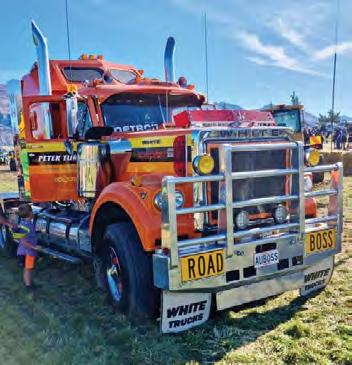
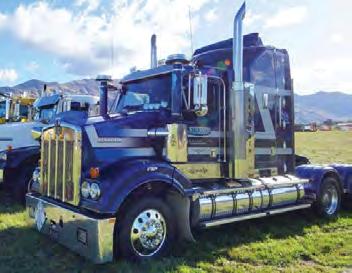

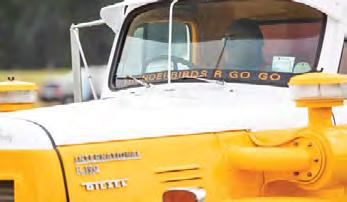

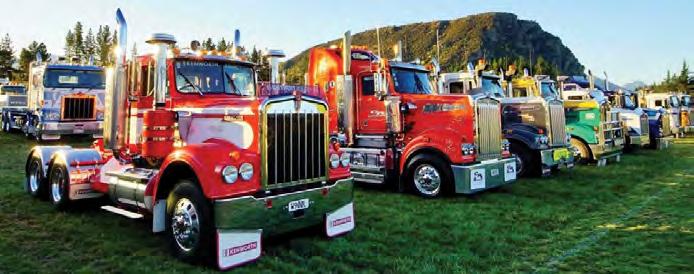


What can we do to set ourselves up for an enjoyable and healthy summer as we hit the warmer weather of spring? Health and fitness guru Laura Hulley has the answer.
I’m not trying to instil panic or wish the year away, but with only a few months left of 2024, how can we best harness the time to level up and be the best versions of ourselves for 2025? Here are some straightforward and easy ways to feel our best coming into the New Year.
If you are currently not active whatsoever, that is absolutely okay. You just need to start from the ground up and build from there. For example, start with aiming for one exercise session each week for the first two weeks. This could be a morning walk, a bike ride, a sports game, a gym class or absolutely anything where you’re getting your heart rate up and being active. If you’ve successfully added an exercise session to your routine, aim for the next two weeks to build that to two sessions per week and so on and so forth until you feel as though you’ve found a happy balance of active time throughout your week.
For some people, three exercise sessions a week is achievable and enough to make them feel good and see progress toward their goal. I would personally suggest three as an absolute minimum. If you are already doing three or more sessions a week – well done, keep it up!
I personally am an absolute shocker with my hydration and know I need to do a lot better. It is so easy to go through the day without one glass of water. I often find myself panic drinking water at 8pm, feeling dehydrated. This is obviously not ideal. If you are similar to me, then let’s work on this together. I have actually bought myself a new drink bottle that shows water targets for the different times of the day, which keeps me aware of how much water I should consume throughout my day.
Health guidelines suggest that women should aim for around 2L and men 2.7L of water a day. If you are active or sweating
a lot, you will need to drink more water to replace that. This is also where your electrolytes can come in handy to replenish the lost salt/sweat throughout your day.
If you are currently drinking the bare minimum amount of water, try to slowly build this up. Aim to have a glass when you wake up, a glass with morning tea, lunch, afternoon tea, dinner, and a glass before bed. That would bring you to seven glasses of water a day, which is a bit below the recommended guideline. I find basing my water intake around meals helps to remind me to drink throughout the day and boosts my overall intake.
I understand that as a trucker, your hours can be long, varied and unpredictable. But it is so important to get in a good sleeping routine to the best of your ability. If you can go to bed and get up at similar times of the day each day, your body gets into a nice rhythm and isn’t woken in fight or flight mode or getting confused with such varying amounts of sleep on a daily/nightly basis.
What you do around bedtime is also important. If you are nose-deep in a screen right up to the moment you shut your eyes for sleep, you are going to still be stimulated and possibly struggle to drift off to sleep. It’s so important that you give your eyes, body and brain a break from screen time before you go to bed. If you can, aim for one hour screen-free before bedtime. I think you would benefit hugely and hopefully see an improvement in the time it takes you to fall asleep at night.
Similarly, when you wake, if the first thing your eyes and brain see is a bright blue screen, you are starting your day with an abrupt panic. Give yourself half an hour to wake up, make yourself a hot drink and try to take things slowly – your body will start the day in a more relaxed way.
Now this one is obviously a lot easier said than done and is the biggest challenge for
90% of my clients. There is so much to it and so much confusion around it. Exercise takes up maybe one hour of your day, five days a week. But nutrition is 24 hours a day. Every moment that you are awake, your nutrition is a priority. Life throws us all sorts of unexpected moments and events, so it’s no wonder we cannot keep our nutrition on track at all times – nor should we aim to. It’s important to throw out the window the ‘all or nothing’ or ‘perfection’ mentality around our nutrition. If we can aim to eat well 80% of the time and enjoy ‘treat’ foods 20% of the time, then we are doing absolutely fine.
Our eating regime is similar to our sleep and exercise routine – we need to find a rhythm that suits us. If we can be creatures of habit and eat at similar times each day and include similar elements in each meal, then it will make it a lot easier on ourselves.
It is also helpful if we aim to incorporate our main macros or food groups in each meal. At breakfast, lunch and dinner we want to try and include a carbohydrate, a healthy fat, and a protein. For example, breakfast could be toast, avocado and eggs, lunch could be rice, mayonnaise and chicken, and dinner could be potatoes, mince and sour cream. And don’t forget a truckload of fruit and vegetables!
It doesn’t mean we have to eat the same foods every day, it just means the structure of our meals are similar. If you do find it easy to repeat the same meals a lot, then go for it – I know I do!
Laura Hulley Personal trainer

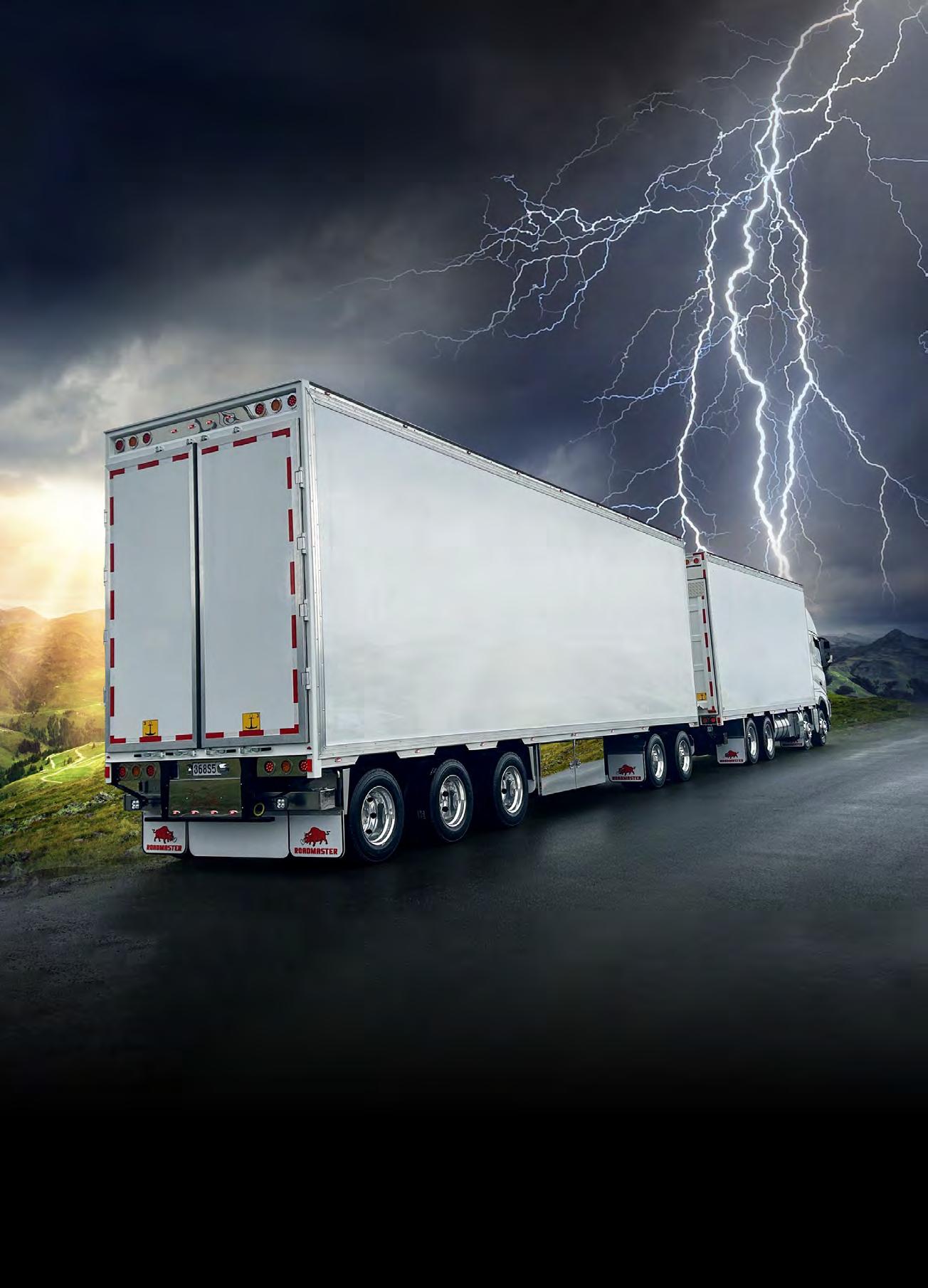


Custom build for: EG & MJ Williams, Timaru
Hardsider
10.6m 5 axle
8.5m Truck body with Tail lift

It is imperative to ensure equipment is safe and complies with current regulations, writes Safewise consultant Kaye Byrn.
Everyone appreciates a good deal, an opportunity to acquire an item at a lower price than what it would cost if purchased new – be it a cherished piece of equipment, clothing or a vehicle we will value indefinitely. While it may not possess the allure of being brand new, it remains functional, and we are reluctant to part with it. Whether the equipment was acquired at a discount or has served us faithfully over the years, it is imperative to ensure that it is safe and complies with current regulations.
Regrettably, the reasoning of “it has always been this way; it was the best model available when I purchased it” is insufficient if an issue arises. Similarly, the statement, “I am the only one who uses it; I would never allow anyone else to handle it”, does not provide adequate justification. Regardless of the initial bargain or the longevity of the item, business equipment must adhere to contemporary standards. This may involve considerations such as safety measures, emissions control, fire resistance, reflectivity

or various other factors.
How can we stay informed about changes in these standards? To begin with, if you encounter a deal that seems too good to be true, it is crucial to inquire about the reasons behind it. When an organisation is offering something for sale to facilitate an upgrade, it often indicates that standards have evolved. Similarly, if you have maintained a longstanding relationship with an item or service, it is likely that standards have progressed as well.
WorkSafe site will direct you accordingly. For a more immediate solution, consider consulting your health and safety consultant. While they may not be familiar with every specific guideline or code, they should know how to locate and interpret the necessary information. You may not need to part ways with your beloved bargain or the longtime companion, but it may be essential to update it to align with current standards.
Kaye Byrne is a health and safety consultant who works for Safewise, a health and safety consultancy organisation.

A straightforward method to ascertain these changes or to understand the current standards is to visit the WorkSafe New Zealand website (worksafe.govt.nz), which provides a comprehensive list of the latest guidelines and approved codes of practice. Some of this information may also be available on the website of the relevant industry association, and typically, the
Kaye has been in the health and safety field in one way or another for the past 10 years, most recently as a consultant. Kaye has experience working with many different industries and people. She holds a New Zealand Diploma in Workplace Health and Safety Management (level 6) and is a member of the New Zealand Institute of Safety Management.

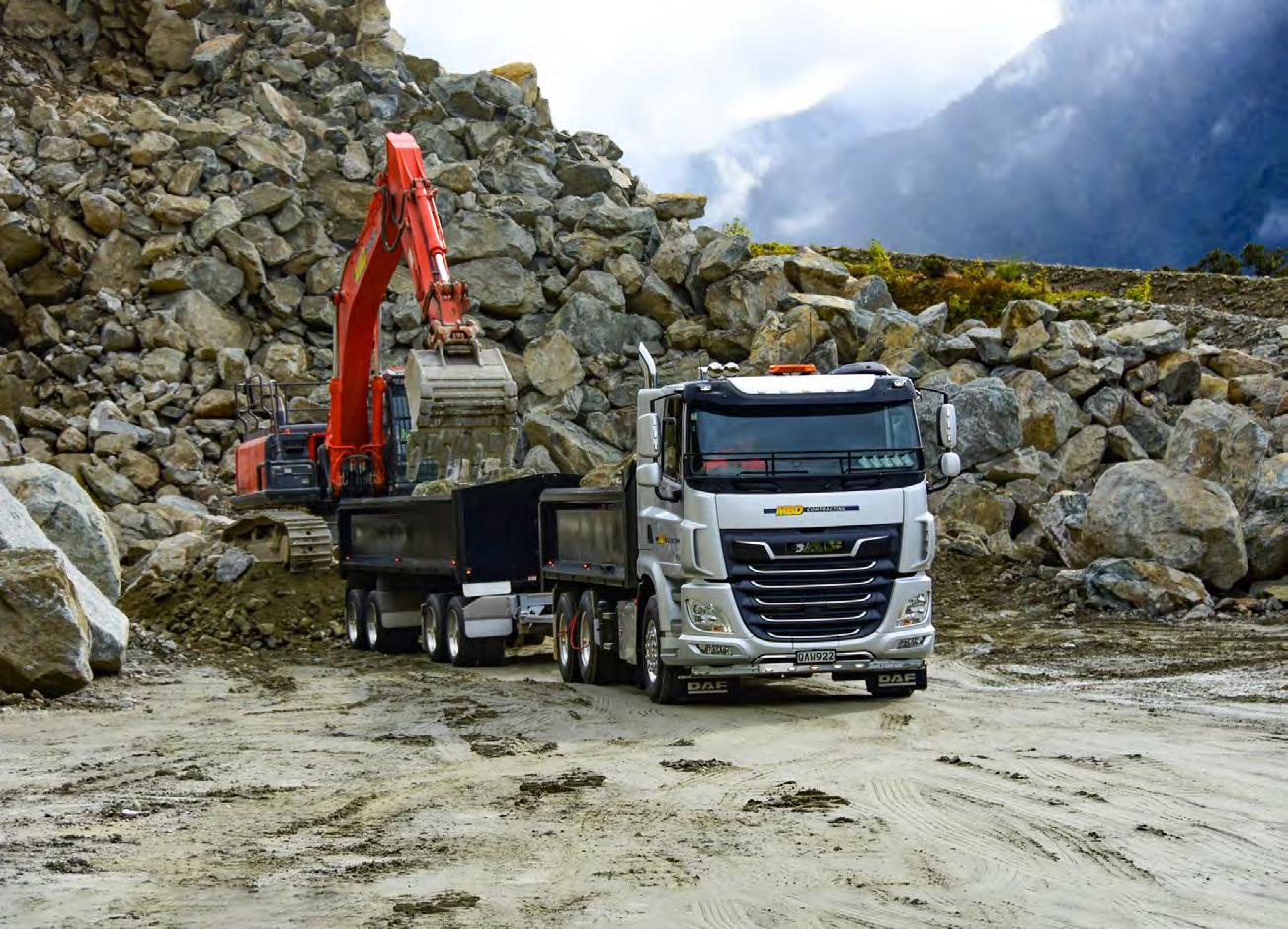



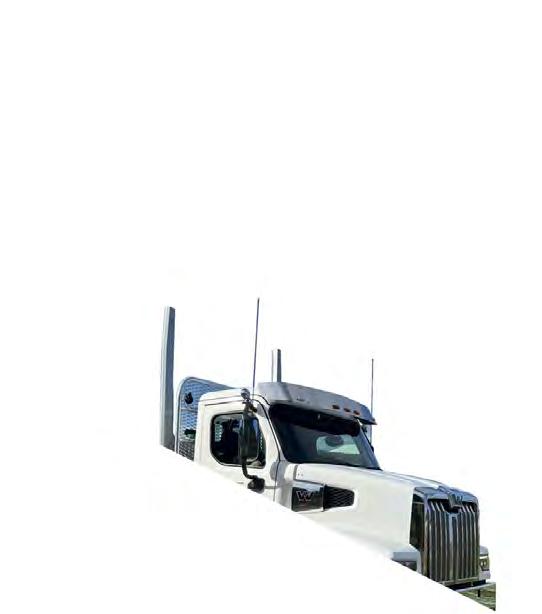



In a decisive move to tackle the issue of drug-impaired driving, Parliament has introduced the Land Transport (Drug Driving) Amendment Bill (“the bill”), which includes amendments to enhance drug testing accuracy and imposes more precise and more stringent penalties for drug-related driving offences. While the aim to make our roads safer is clear, the proposed changes significantly affect New Zealand citizens’ fundamental rights and freedoms.
The Land Transport (Drug Driving) Amendment Act 2022 introduced a random roadside oral-fluid testing regime to enable police officers to test drivers for the presence of the highest-risk illicit and prescription drugs that impair driving. Existing legislative settings have, however, prevented the implementation of roadside oral-fluid testing for drugs as there is no oral-fluid testing device that meets the current requirements for approval.
This bill would amend the Land Transport Act 1998 to resolve issues with the current oral-fluid testing regime and enable the rollout of random roadside oral-fluid screening tests to better detect and deter drug-impaired drivers at checkpoints or during routine traffic stops.
Unlike the current drug testing regime, which requires officers to have “good cause” to suspect drug use before conducting tests, the bill allows officers to require oralfluid tests without any cause of suspicion of impairment. Officers can mandate a compulsory blood test if an oral-fluid test is positive or further confirmation is needed. Additional changes include stricter penalties for failing to undergo or refusing an oral-fluid test, with fines of $1000. Drivers

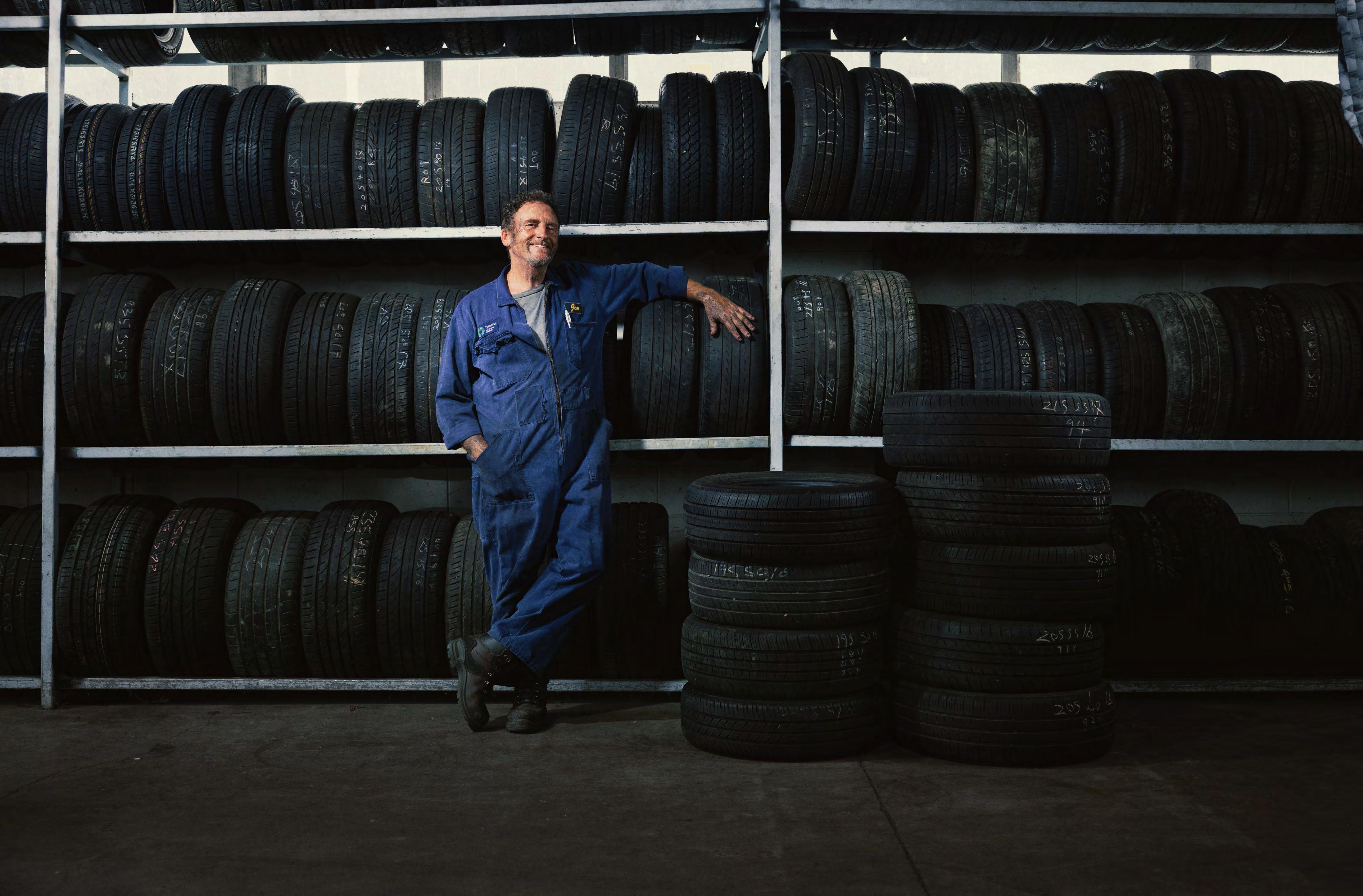




In the first of two articles, Lindsay Wood delves into the energy cost of energy.
We think of fuel efficiency as how far we drive on each litre of diesel, petrol, or whatever. But is the energy needed to get the energy to the bowser or EV charger in the first place a big deal or not?
After our last Clear the Air podcast segment, New Zealand Trucking editorial director Dave McCoid suggested I explore the supply chains of different energy sources. Maybe he knew his suggestion was aimed at the invisible elephant in the energy room because I glanced at it in the column Energy is Everything in the April 2024 issue.
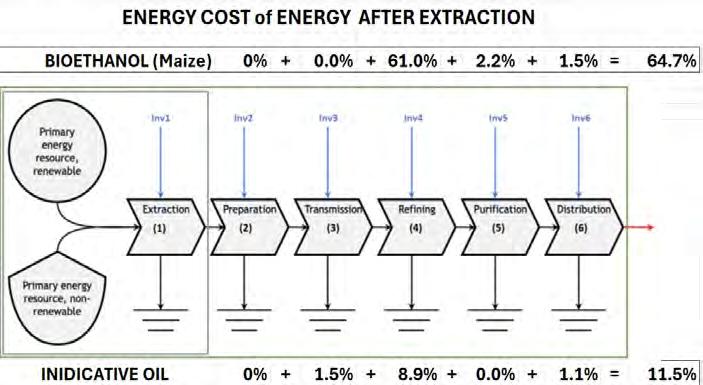
The elephant goes under several names, and ‘energy cost of energy’, or ECoE, fits for today: the energy needed to get energy from wind or water or down the oil well to the wheels.
It’s important to track the process from the start right to the point of application, and that’s not as obvious as it might seem: values for oil are often given ’at the wellhead’, and early analysts were surprised to learn just how much downstream energy was needed for processing. “Estimates at the point of extraction,” highlights researcher David Murphy, “can be wildly misleading.” For example, the energy to access shale gas rises more than tenfold between extraction and point of use.
To defuse the huge variability of oil extraction, Murphy showed processing oil ‘beyond extraction’ typically consumes 11.5% of the original energy, and some bioethanol an incredible 64% (leaving only one-third for other uses, like using two-thirds of a tank of gas to get to the bowser and back.) Happily, some renewables fare better.
The World Resources Institute compared growing the best biofuel crops on 1ha, with photovoltaics (PVs) on another hectare. At the point of use (delivering energy to the vehicle), PVs yielded some 100 times as much energy.
Factor in that EVs are some three times as energy-efficient as combustion engines, and PVs powering EVs can be an astonishing 300 times as energy-efficient as vegetation powering biofuel vehicles.
It makes no sense to grow crops for biofuel. However, the equation changes for biofuel from waste (tallow or used cooking oil in New Zealand), and that could play a valuable, if small, part in a lowemissions future, especially in transitioning off fossil fuels.
Now, briefly, to get geekier: in economies like ours, centred on burning fossil fuels, we need an ECoE well below 10% to do the sort of stuff we like (good food and housing, well-functioning essential

services, lots of lifestyle).
But Murphy tells us fossil fuels now have an overall ECoE averaging above 20%, so our energy system already struggles to support our society. That’s a big factor behind falling prosperity, weakening public services and struggling infrastructure.
Heard that discussed? Of course not – it’s the invisible elephant!
But the elephant has a silver lining. The more we electrify, from transport to milk treatment to home heating, the closer we get to an economy two or three times as energy-efficient as one based on combustion. Then, if we play our cards right, things might work better.
Next month, we’ll check that out further, plus some energy sources and real examples.

Lindsay Wood, MNZM, runs climate strategy company Resilienz Ltd. He is active in policy, and on IT tools for decarbonisation, and speaks, writes and broadcasts widely on climate issues. In 2024 he was made a Member of the New Zealand Order of Merit for services to climate awareness and environmental sustainability.


LIFETIME EXCELLENCE

For over 50 years, PALFINGER Tail Lifts have been making truck and vehicle loading safer and more efficient, with lift capacities ranging from 500 to 4,000 kg. Renowned for their operational efficiency, flexibility, and user-friendly design, PALFINGER Tail Lifts offer unmatched performance. With our extensive service network, you can count on a reliable, long-lasting solution for your business.



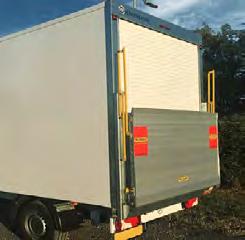
For industry leading solutions - talk to our team today.
LIFETIME EXCELLENCE is our promise. Delivering exceptional performance in the most delicate of situations, Palfinger provides economical, reliable and innovative lifting solutions supported by a national network of professional service partners - there for the lifetime of the product.
PALFINGER NEW ZEALAND
Corner Langley & Mayo Roads, Wiri, Auckland & Service Partners Nationwide
0800 725 346 | PALFINGER.CO.NZ

NZ Trucking Association can be contacted on 0800 338 338 or info@nztruckingassn.co.nz
Carol McGeady general manager
Rob Taylor has stepped down from his role as chair of the New Zealand Trucking Association after eight years in the role. Ken Winsloe has been appointed the association’s new president.
Rob’s tenure has been marked by a deep commitment to road safety and the growth of the industry. Following the sale of his business, he devoted his time to the association, playing a pivotal role in launching the Road Safety Truck. His passion for the project was evident as he enthusiastically drove the truck to schools and towns across New Zealand, engaging with communities and educating the next generation on road safety.
Reflecting on his time with the Road Safety Truck, Rob says, “Some of the best moments of my life have come from driving that truck.”
“The excitement on the kids’ faces, the comments they’d make – they’d leave me smiling all day. I’d come home feeling like I was on cloud nine. Rina [Rob’s wife] would have to tell me to calm down.
“It’s been one of the best things I’ve ever done, giving back to an industry that’s been wonderful to me,” he adds.
“The friendships I’ve made over the years are lifelong.”
Rob will remain connected to the trucking community. He still owns a truck and plans to join tours with fellow truck enthusiasts, continuing his journey in an industry he loves.
Ken Winsloe has been named the new association president.
Ken, who recently retired, brings extensive business acumen and health and safety experience to the role. He is eager to work closely with the team to further the
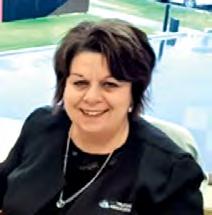
association’s mission of enhancing safety and supporting the transport industry.
Joining Ken on the executive board are two new members: Leeanne Anderson, who has spent her entire life in the trucking industry and is the HR and administration manager at Opeezland, and Tyler Forsyth, who is the general manager, fleet and group operations, at Corde.
“The NZ Trucking Association looks forward to the future with this new leadership, confident in the continued growth and success of the organisation under Ken Winsloe’s guidance,” says David Boyce CEO, NZ Trucking Association.
“It’s fantastic to have such a proactive and engaged executive board as the association leads several major health and safety initiatives along with the major event, the TMC Trailers Trucking Industry Show in March 2025.”
Check weather updates and traffic reports
Map out your journey
Identify locations with increased risk
Perform a pre-start vehicle safety check
Plan for breaks and refuelling stops
Maintain regular communication
Factor additional time for unexpected delays

Have a post incident response strategy
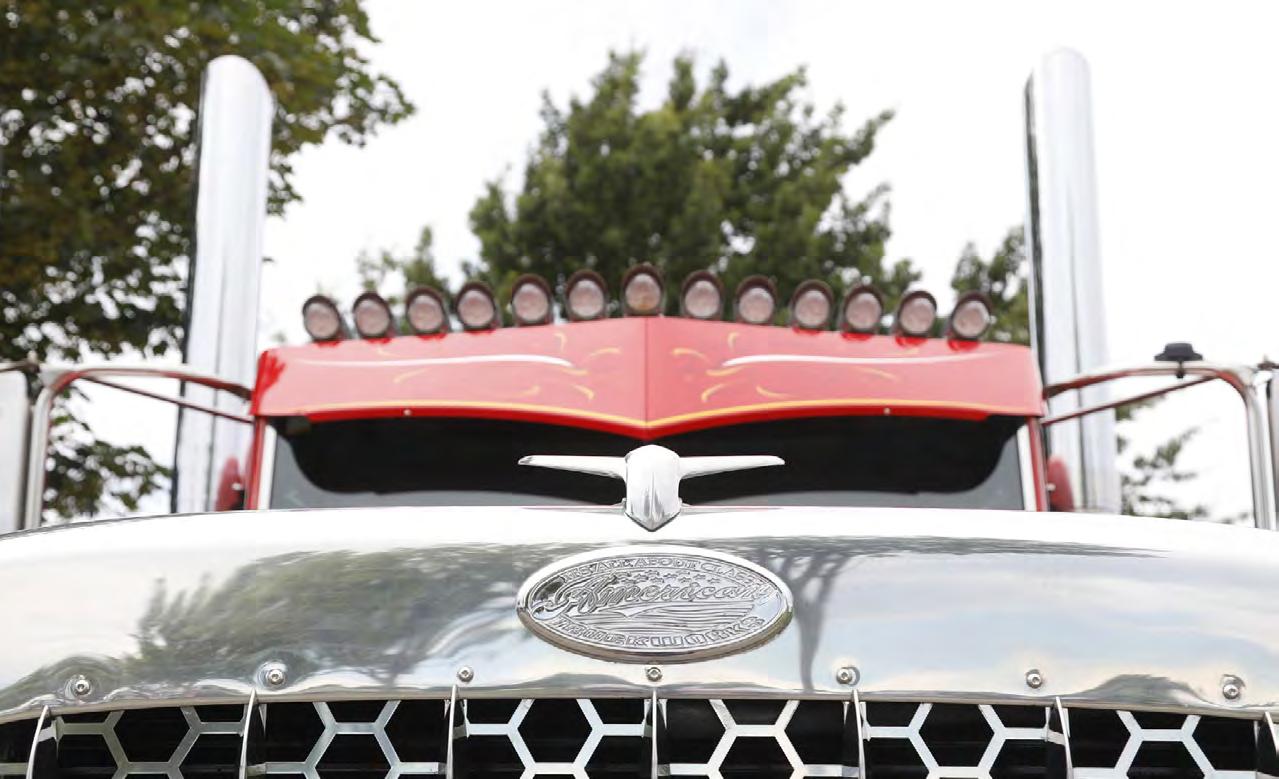























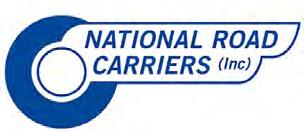
National Road Carriers Association can be contacted on 0800 686 777 or enquiries@natroad.co.nz
Justin Tighe-Umbers CEO

The Reserve Bank’s August OCR rate cut, the first in more than four years, triggered the largest two-day surge in shares seen in two years, with the market bouncing back more than 10% from recent lows. But the announcement was not without controversy, with many economists and commentators questioning how the RBNZ could make such a U-turn on previous predictions that it would hike the rate, when cuts were not planned until August 2025.
I’m not an economist, so speculation over whether the RBNZ misread the sad state of the economy or was simply trying to talk down inflation isn’t really my wheelhouse. But what I can comment on is the universal sigh of relief as I watched the flow-on effects of the banks beginning to cut their interest rates. Mortgage holders and business owners alike have deferred spending and investment plans, with belts being tightened across the board.
Some economists have voiced concern that there is a risk of economic activity bouncing back more strongly than anticipated on the back of interest rate cuts. Most economists believe that with retail spending sliding for a second quarter, there is no question our economy has suffered a significant contraction, and we are potentially in for a ‘triple-dip’ recession.
The transport sector is generally accepted as a lead indicator for how the economy is tracking; when consumers stop buying, the flow of goods through the economy slows and truck journeys reduce. I have spoken to several well-established operators who made it through the GFC and now find themselves with trucks parked up. There is no question it is tough out there.
But light might just be showing at the end of the tunnel. Perhaps the unrecognised benefit of being the canary in the coal mine in terms of how the economy is tracking is that we should also have the advantage of being at the front of the line when things
start to pick up. If the economists are correct, August’s OCR cut is the first of many – it is the green shoot we have been hanging out for.
NRC’s advice to operators is that now is the time to sow the seeds ahead of the economic pick-up. Make sure your house is in order; are you across your costs? Have you tapped into the NRC Cost Modelling Tool? Do you have the right people in place should you need to scale up quickly? Have you sought specialist financial advice to ensure you are getting the most out of your existing investments? And do you know who to turn to when the economic winds change? If not, then reach out to the NRC team for a steer in the right direction.
Looking further afield and at aspects affecting the wider transport sector, there are signs of a few more green shoots. There has been recognition from the coalition government that freight and supply chain are key enablers of the economy. It has been coupled with a clear drive from policymakers to prioritise investment in roading infrastructure.
Recent comments from Transport and Energy Minister Simeon Brown regarding how the previous Labour government’s oil and gas exploration ban has raised New Zealand’s sovereign risk is a stark warning to other sectors.
Long-term planning and surety of investment is crucial if we are to attract the talent and investment required to deliver on a cohesive infrastructure plan that will see New Zealand flourish into the future. Roading companies need to believe that if they invest in the technology and expertise required to deliver these large-scale projects that the pipeline is stable, and their investment will not be wasted.
All business sectors, not just transport, are looking to the government for long-term commitments on infrastructure investment, the pipeline and future policy direction.
Overseas investors understandably get nervous at the thought of a political flipflop when there is a change of government. Dramatic policy shifts frighten investors, especially when the investment requires a 40-year payback time frame.
It is my view that the time has come – in fact many would say it’s long overdue – for there to be a policy framework created with cross-party support that protects the planning and delivery of New Zealand’s critical infrastructure. There are plenty of sectors that play a vital role in every New Zealander’s life that would benefit from this approach, but instead we are faced with rising energy costs, a crumbling healthcare system, bursting water pipes and more potholes than you can shake a stick at.
NRC has repeatedly called for a 50-year plan for roading infrastructure investment, one that is out of the hands of government and not exposed to the three-year election cycle. The establishment of the National Infrastructure Agency and a push forward on the roads of national and regional significance suggests the government is listening.
Like most Kiwis, I will be hoping for further rate cuts from the RBNZ come October, but in the short term, I hope we continue to see business and consumer confidence increase as the economy slowly starts to turn a corner. In the meantime, we are more focused than ever on advocating for the industry with policymakers. We are making it clear that any initiatives that increase costs, such as time-of-use charging, or future transport fuels, need to be carefully thought through to avoid unnecessary pressure on the industry and ultimately consumers. We are advocating hard for coherent freight and supply chain policies because we know how critical it is to deliver efficiencies that will improve productivity and grow economic success.

Contacts:


Transporting New Zealand can be contacted on (04) 472 3877 or info@transporting.nz
Dom Kalasih interim chief executive

How refreshing! The coalition government has pulled off the unexpected and done exactly what makes sense! If only all our governments could try that path!
The 2024-2027 National Land Transport Programme is steering $18.4 billion into roading projects, maintenance and upgrades over the next three years. And that’s not including the extra $2.4 billion earmarked for storm repairs and resilience improvements, which also includes the rail system.
It’s a hefty sum, but with NZTA Waka Kotahi forecasting $13.7 billion in revenue from RUC, fuel taxes and vehicle registrations, the numbers don’t feel too far off the mark.
Some fans of rail are decrying there is ‘only’ $1 billion earmarked for the rail network, while the $460 million planned for footpath and cycleway improvements isn’t winning over the cycling fraternity. But rail contributed $60 million in track user charges to the fund, so having $1 billion in investment is a pretty good return.
Public transport is also getting $6.4 billion of investment, so relative to road investment, the public shouldn’t have too much to complain about. Hopefully this will help free up the road networks a bit too.
This NLTP is a plan for the must-haves, and the nice-to-haves might have to wait till things are fixed. We also like the steer that the minister has given about no frills and value for money.
The truth is our roading infrastructure is just not robust enough for what our economy currently is, and what we want it to be.
This NLTP work programme will provide a major boost to productivity, and ensure our transport system is moving people efficiently and safely.
But what I really like about it is it’s great to
see freight being recognised for its vital role in delivering prosperity.
When 93% of all freight is being delivered by road, good roading is essential. This country is facing grim economic times. Improving our infrastructure will help drive real growth now and in the future.
Now I don’t want to say that Transporting New Zealand put the idea of this road spending focus in the mind of the transport minister. Simeon Brown said at our conference last year that big plans were afoot should the election go to plan for National.
But in our briefing to the incoming minister of transport, compiled by our policy and advocacy lead Billy Clemens, we had a wish list of transport priorities that we wanted the government to focus on.
They were:
1 Rewrite GPS24 to prioritise road maintenance, network resilience and strategic roading investments.
2 Confirm the commencement date and funding sources of the government’s 13 new Roads of National Significance and four major public transport upgrades.
3 Commence an urgent review of the heavy
vehicle permitting system to identify and remove barriers to the uptake of more productive trucks.
4 Urgently progress amendments to the Land Transport Act 1998 to fix the stalled roadside drug testing regime.
5 Accelerate the Ministry of Transport’s policy work removing regulatory barriers to Zero Emission Heavy Vehicles, currently scheduled for completion in 2025.
There are a lot of ticks there, so that’s why we’re happy, even on some of the things that aren’t in the here and now. Our role in the Green Compact is to get lower emission vehicles on the roads. More resilient roads will mean more efficient, higher productivity vehicles and heavy battery-electric trucks can be used to achieve this goal.
A key thing to note is that everything that gets done to make our roads better benefits all drivers of every make and model. Trucks are a minority of road users overall but better roads are great for all. Car drivers can thank us later!
As part of our advocacy work, we met up with some of the fine folks from NZTA last month to discuss the plans for the Melling interchange in the Hutt Valley.
It’s kind of a Wellington issue, but the message we had applies to all the projects that are being done. And that is, whatever the scheme, the traffic management system has to be based on actual risk, not a dogmatic figure that doesn’t fit the situation.
If works require drivers to go at 30km/h to keep everyone safe, great. If 50km/h does the same thing, super. If there are no workers there and 80km/h is acceptable, then that’s what it should be.
My gears get well and truly ground when I drive through works that go for ages at 30km/h when there’s not a worker in sight. And don’t start me on the supposed magical abilities of road cones to keep non-existent workers safe!
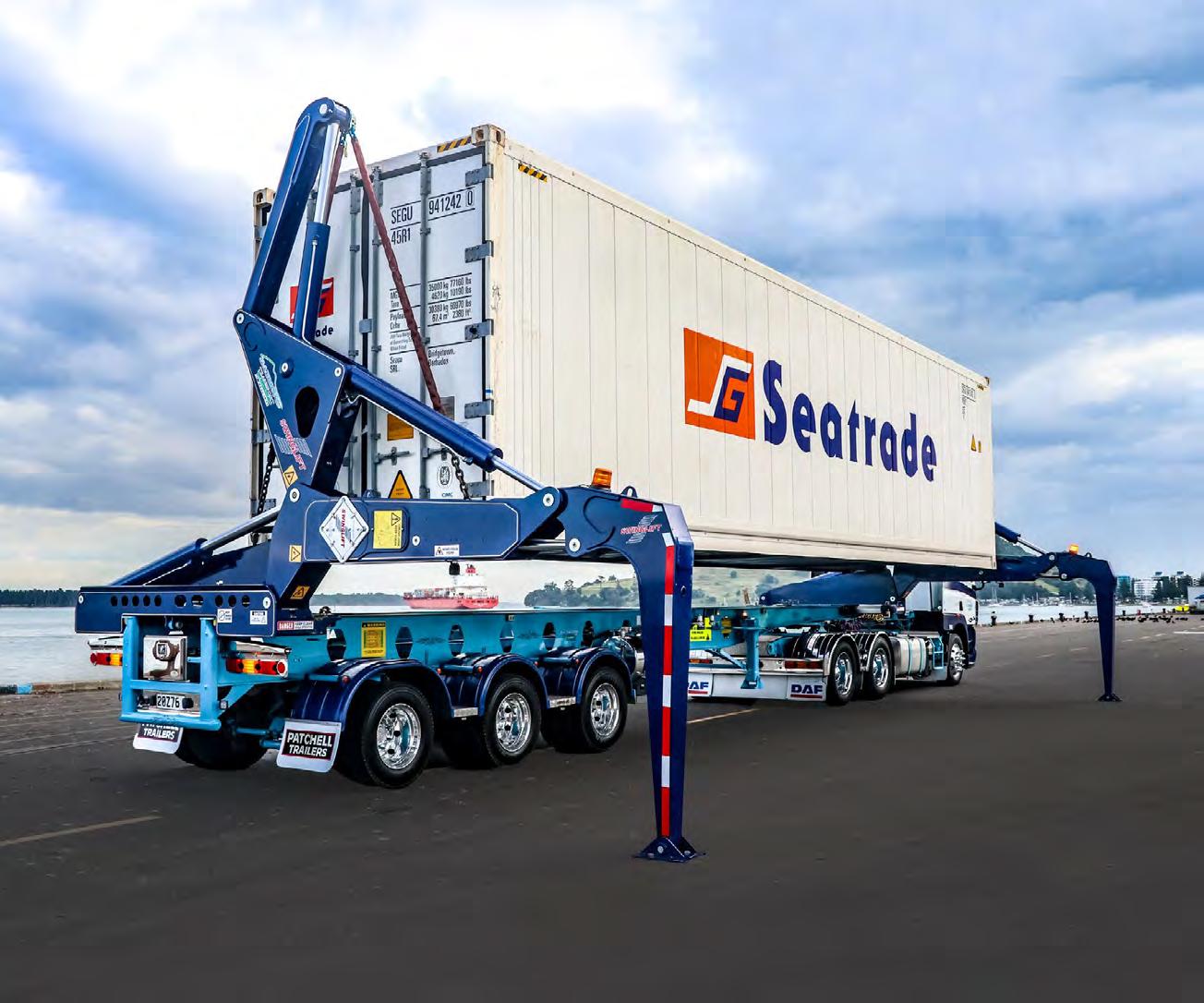
Swinglift® is the only side loader 100% designed, manufactured & built in New Zealand, supporting local people & manufacturing. BUY LOCAL - BUY NZ MADE
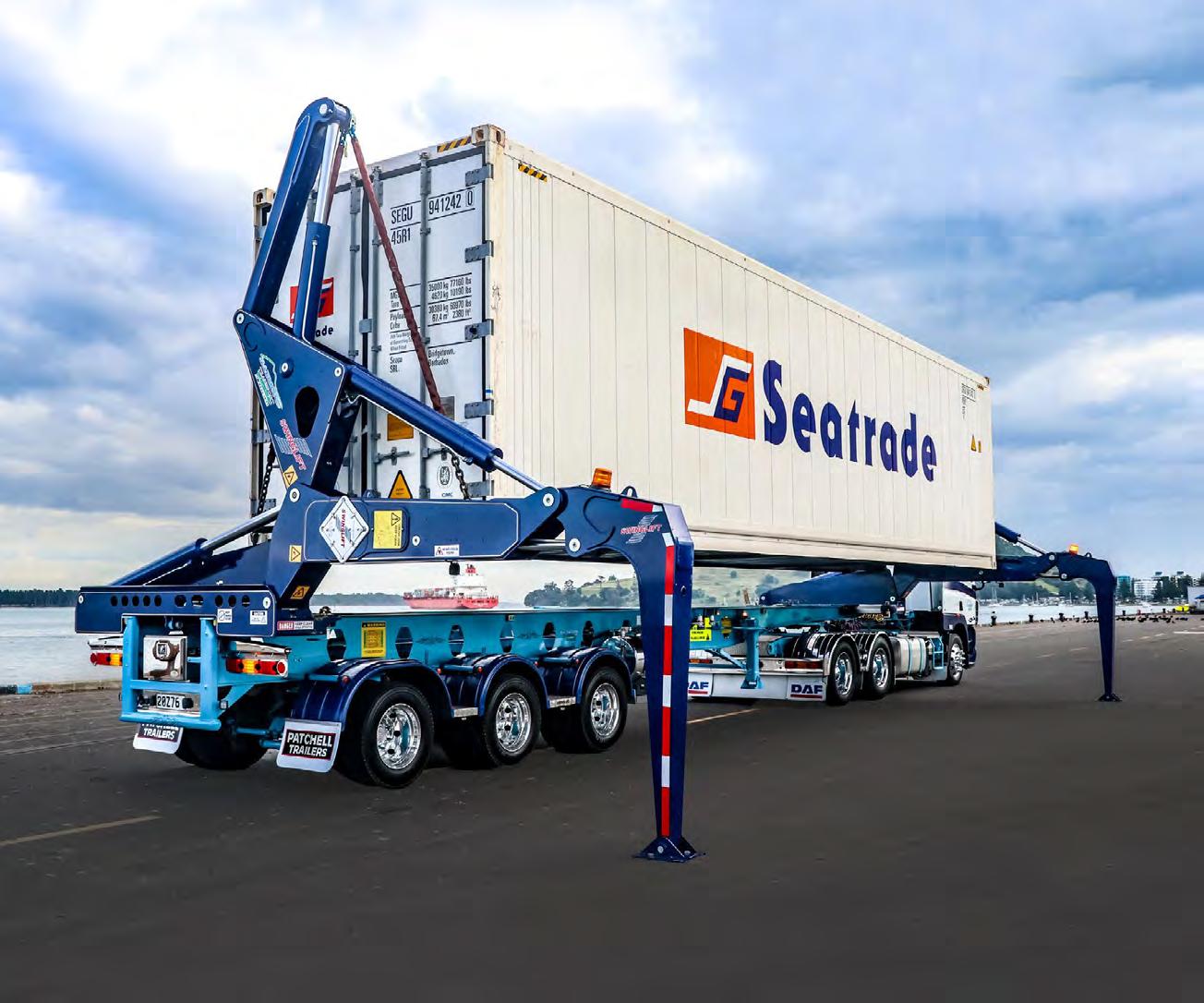
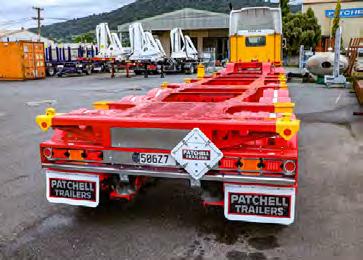
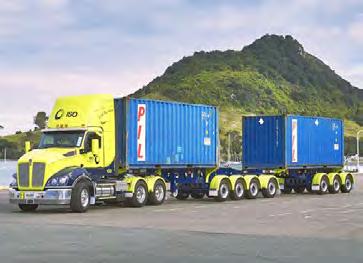

As frequently happens, something catches my eye that warrants comment. The past couple of months have been no exception.
In late June, it was revealed in New Zealand Autocar magazine that NZTA had spent $5.2 million over two years developing an app designed to hold driver licence details, which could be used as a form of identification. But it cannot be used now without a law change, and that’s not likely soon. Apparently, the app was developed in the hope that it would be usable with a digital driver licence, which is currently under investigation by the Ministry of Transport. Work to create a robust digital driver licence is underway overseas but this has run into some opposition, especially surrounding personal privacy, so why did the agency consider it necessary to go ahead and develop the app that currently has no use?
In a report entitled ‘Driving Change’, compiled by The New Zealand Initiative’s Dr Mathew Birchall, smart road-user charges (smart RUC)

are discussed as a replacement system for fuel excise tax. Smart RUC considers two options, automated pay-as-you-drive or pre-purchase similar to what we have now. Personally, I like the idea of pay-asyou-go. That way, if your vehicle is not in use, your money isn’t tied up in RUC, especially so in the current economic climate. One of the downsides of this arrangement, though, would be the effect on the cash flow going into the government’s coffers. A smart system could also be linked to the weight of the vehicle(s) at the time rather than the current crude calculation method now.
I am sure that some of the electronic road-user charges systems around now would have the ability to provide a pay-as-you-go function without too much bother. Compliance may be an issue but the weigh-in-motion sites NZTA is currently rolling out should be able to monitor this.
Also in June, it was good to see the Minister of Transport putting notice on NZTA about the proliferation of road cones. Nobody wants to expose road workers to hazards from vehicles, but I defy anybody to argue that the placement of road cones isn’t entirely out of hand. So let us hope the minister’s comments result in some real action. (But, then, if you are supplying these cones or their placement and retrieval, the last thing you would want to see is a reduction in their use.)
Something in the daily ATN bulletin (Australasian Transport News) caught my eye recently. Like most of the world, journalists there are voicing concern about the critical shortage of truck drivers in Australia and cite a need for 26,000 drivers to fill the shortfall. To put this into perspective, the shortfall quoted is about the entire truck-driving workforce in this country, so there is little chance of us finding an immediate solution to our problem.
One of the industry associations recently sent out a reminder that it is possible to extend CoF inspection frequency. This has been possible for some time and was one of the benefits cited that could arise from ORS – remember ORS and its associated star ratings, the system that was billed as a game-changer regarding heavy-vehicle safety? Whatever happened to that? Gone the way of the Dodo bird I suspect.
With winter theoretically behind us, we should all be looking forward to longer days and a lot warmer temperatures. Let us hope that the end of winter and better weather will also signal an improving economy, one that benefits us all.
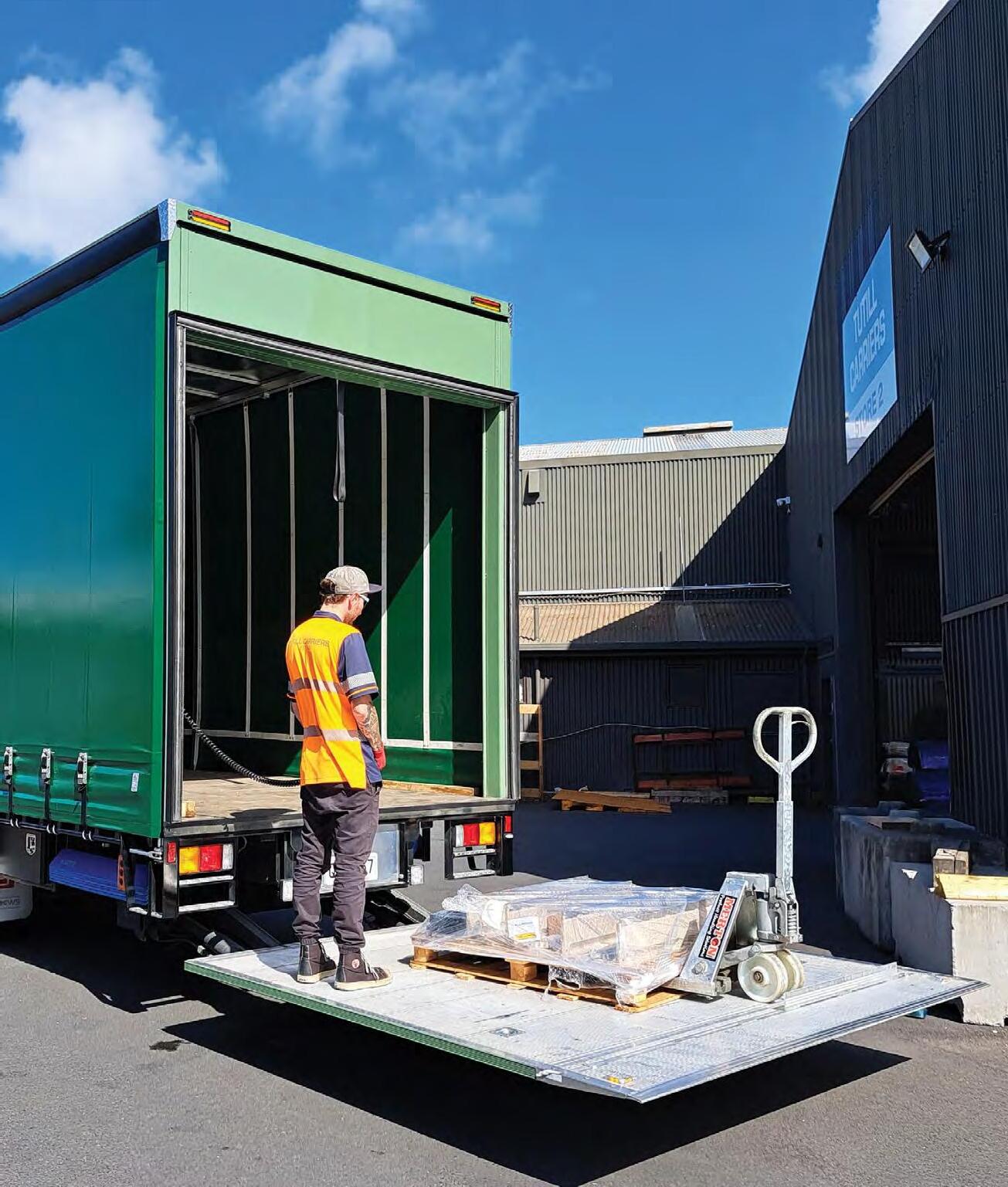
The Accidental Trucker
ZEPRO Z-20 2000KG TAIL LIFT PROMISES SAFETY, EFFICIENCY AND RELIABLE PERFORMANCE - EVERY TIME.
The Zepro Z-20 is designed to manage the busy and demanding operating needs for all lifting jobs, regardless of location or environment.
Built to the highest quality standards for absolute reliability and performance to support logistics and distributions with ease and reliability.


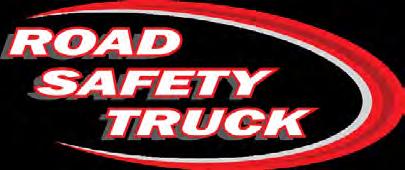
Road safety is a collective responsibility, everyone has a role to play in ensuring that our roads are safe for all users.
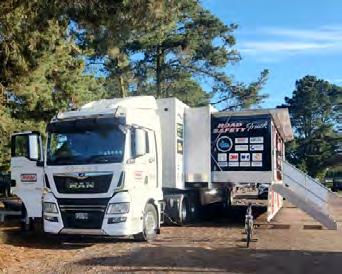
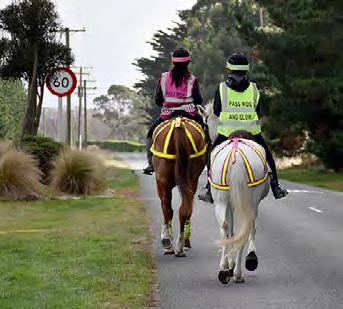
Our New Zealand roads are shared by a diverse range of users, each with different needs and responsibilities, but all have the equal right to share our roads. This shared space requires everyone’s cooperation, awareness, and respect to ensure safety and efficiency. This is especially important on roads where larger vehicles like trucks and campervans operate alongside smaller vehicles and more vulnerable road users like cyclists, pedestrians, and horse riders.
Truck drivers in New Zealand play a crucial role in road safety, especially when sharing the road with horse riders. Given the size and noise of trucks, it’s important for drivers to take extra precautions to ensure the safety of horse riders and their animals.
Slow down and pass carefully, give the horse and rider plenty of room.
Don’t sound your horn, rev your engine or pass at speed.
If the horse and rider are on a bridge or narrow road, be very careful – slow down or stop.
If the horse appears frightened, stop.
At night, dip your headlights when approaching a horse.
Avoid passing another vehicle near a horse
Driving safely around horse riders is crucial to ensure the safety of both the riders and the horses, every small action contributes to a safer environment on New Zealand’s roads. It’s a simple but powerful way to make our roads better and more accommodating for everyone.
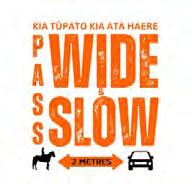


























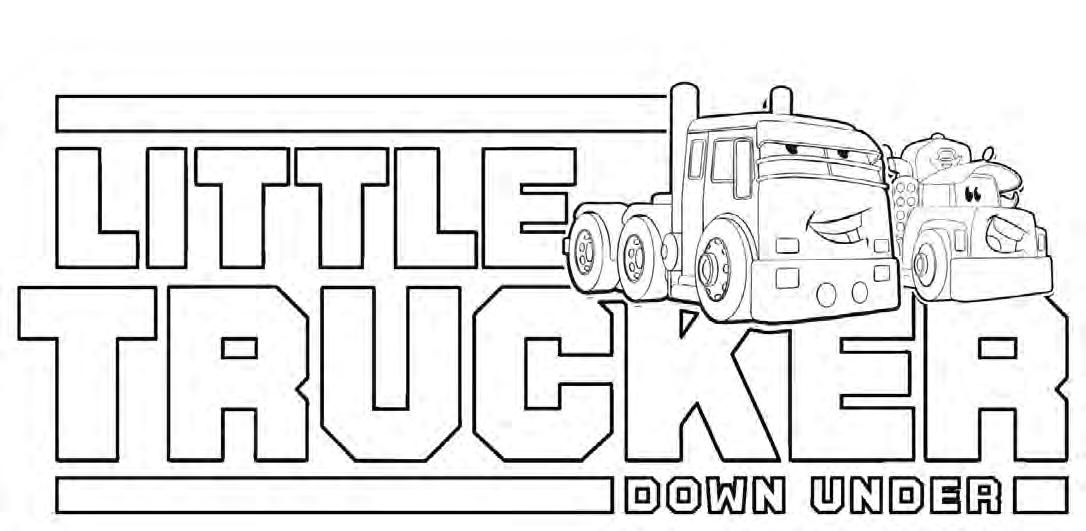
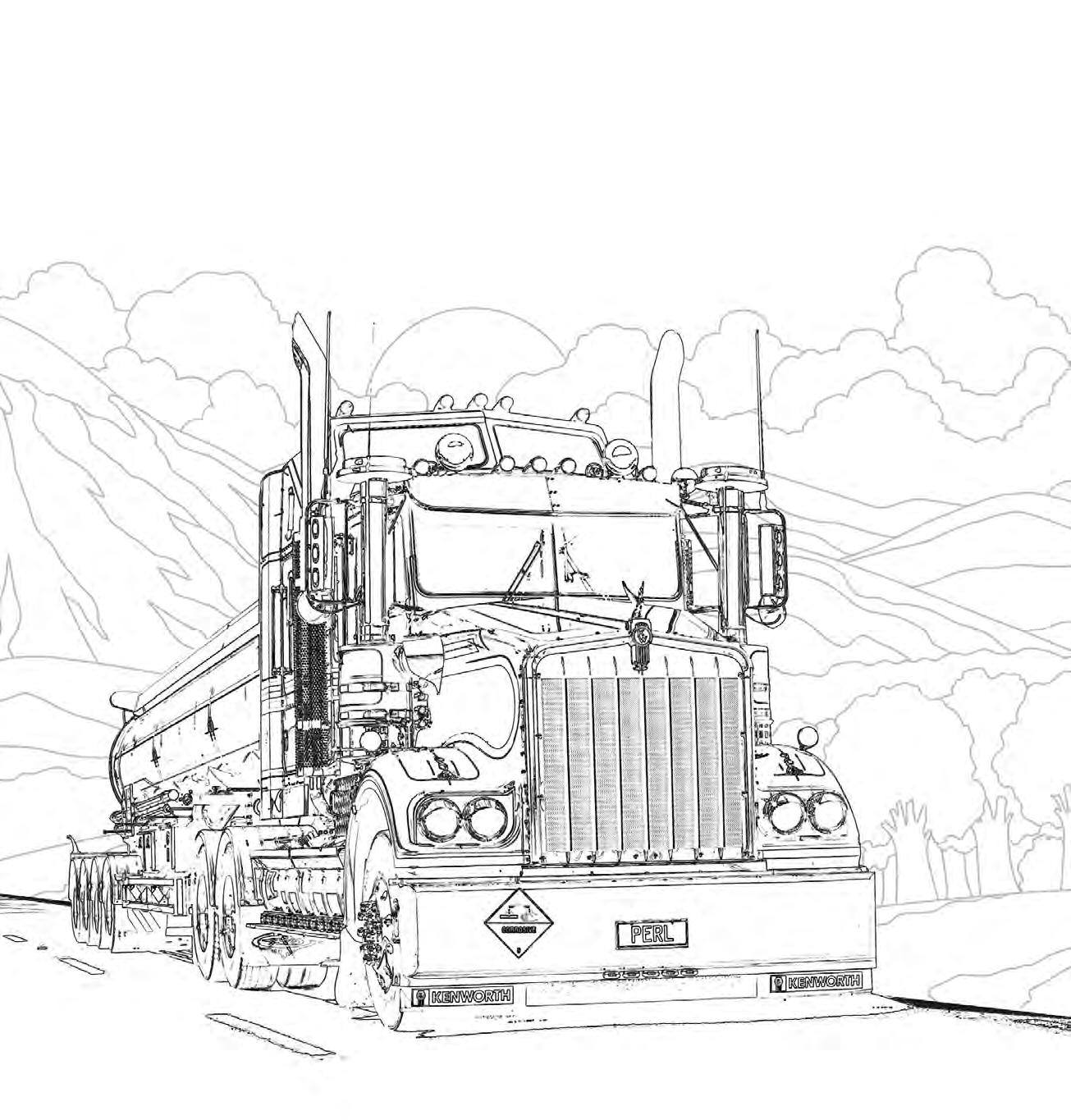
Hey Little Truckers!

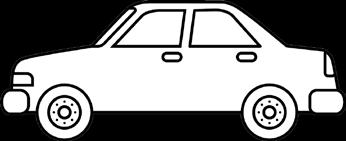

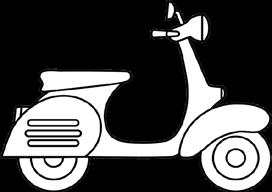

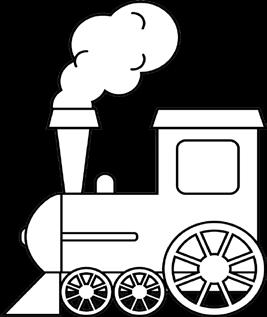

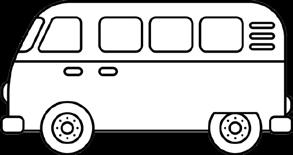



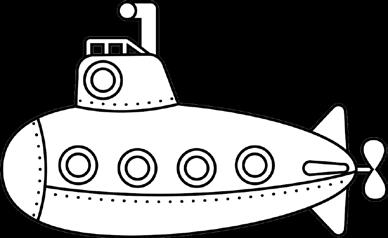


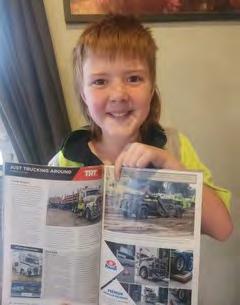



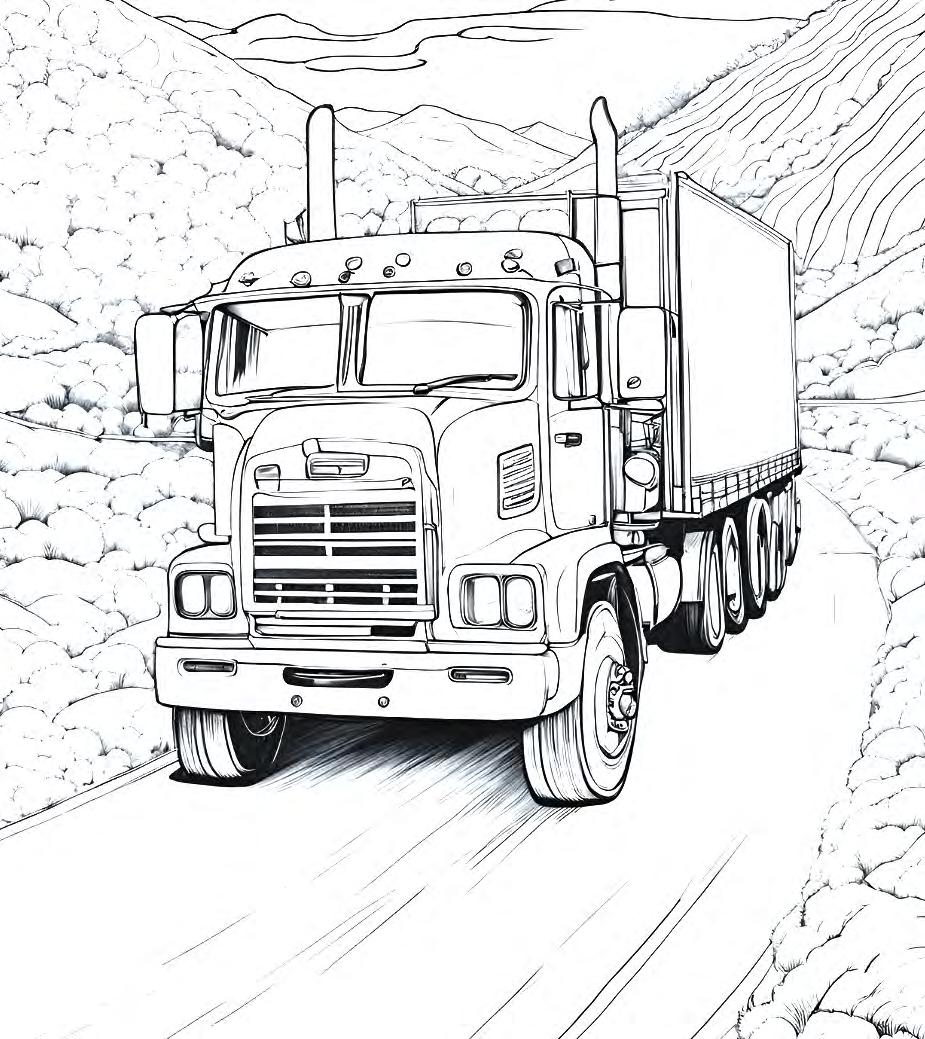
shannon@nztrucking.co.nz

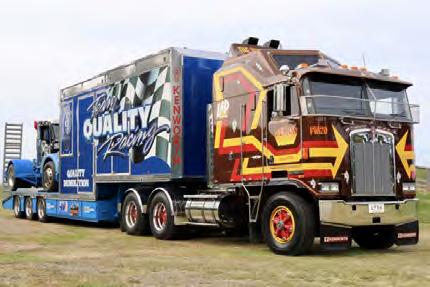
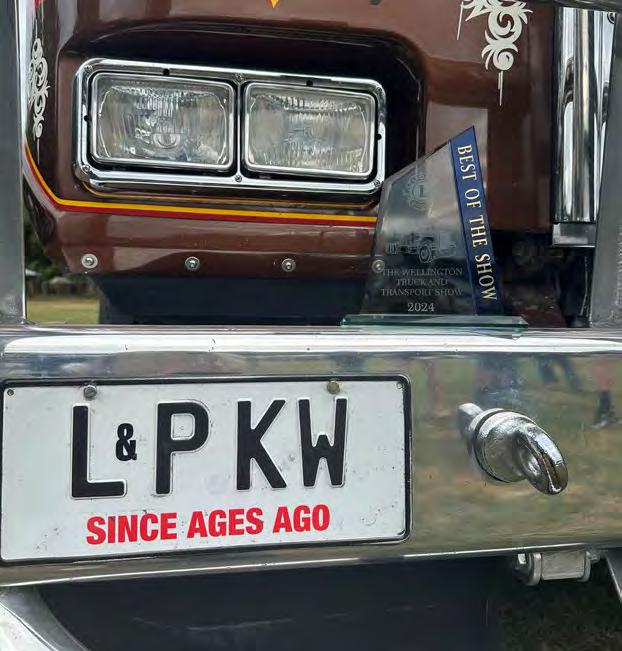
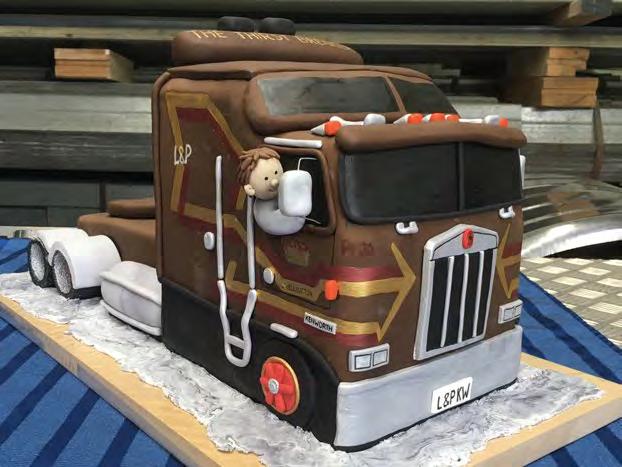

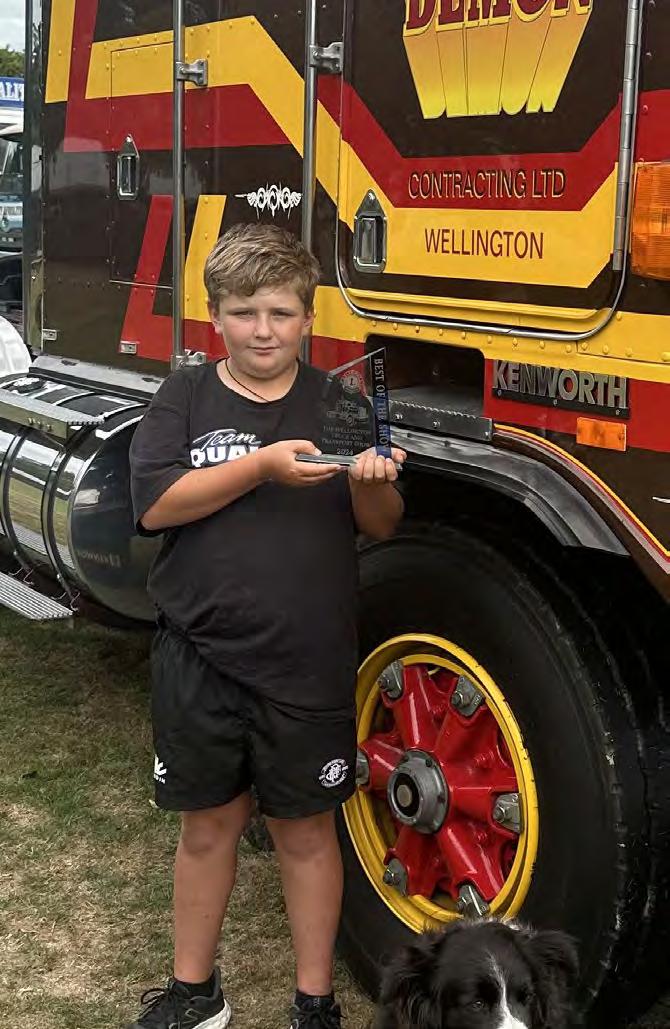

Jacob tells us all about his favourite truck of all time, the L&P truck, which has won some cool awards this year.
Earlier this year, we all travelled to Hamilton to celebrate the 100 Years of Kenworth Show at Mystery Creek.
The team from Quality Demolition and Contracting worked so hard to make all the trucks look perfectly clean and shiny for the show.
The L&P truck is my favourite truck of all time.
Mum and Dad bought the truck a long time ago – they restored it, but because they didn’t have much money, they did a lot of work on it themselves.
When they finished the truck, Mum and Dad went on a holiday
in it just before I was born. I don’t know how Mum could get into it with a big tummy!
The truck has Demon Contracting on the door. This was Mum and Dad’s old business.
My dad has always told me that it’s my truck, and to always look after it.
I was so proud that the L&P truck won the best 1980s truck at the 100 Years of Kenworth Show this year – there were about 800 trucks there!
We had the Wellington Truck & Transport Show and L&P won best truck in show there, too.
I am very happy to have an awesome truck, and for people to come and see it too.
Keep on trucking, Jacob – Ed.


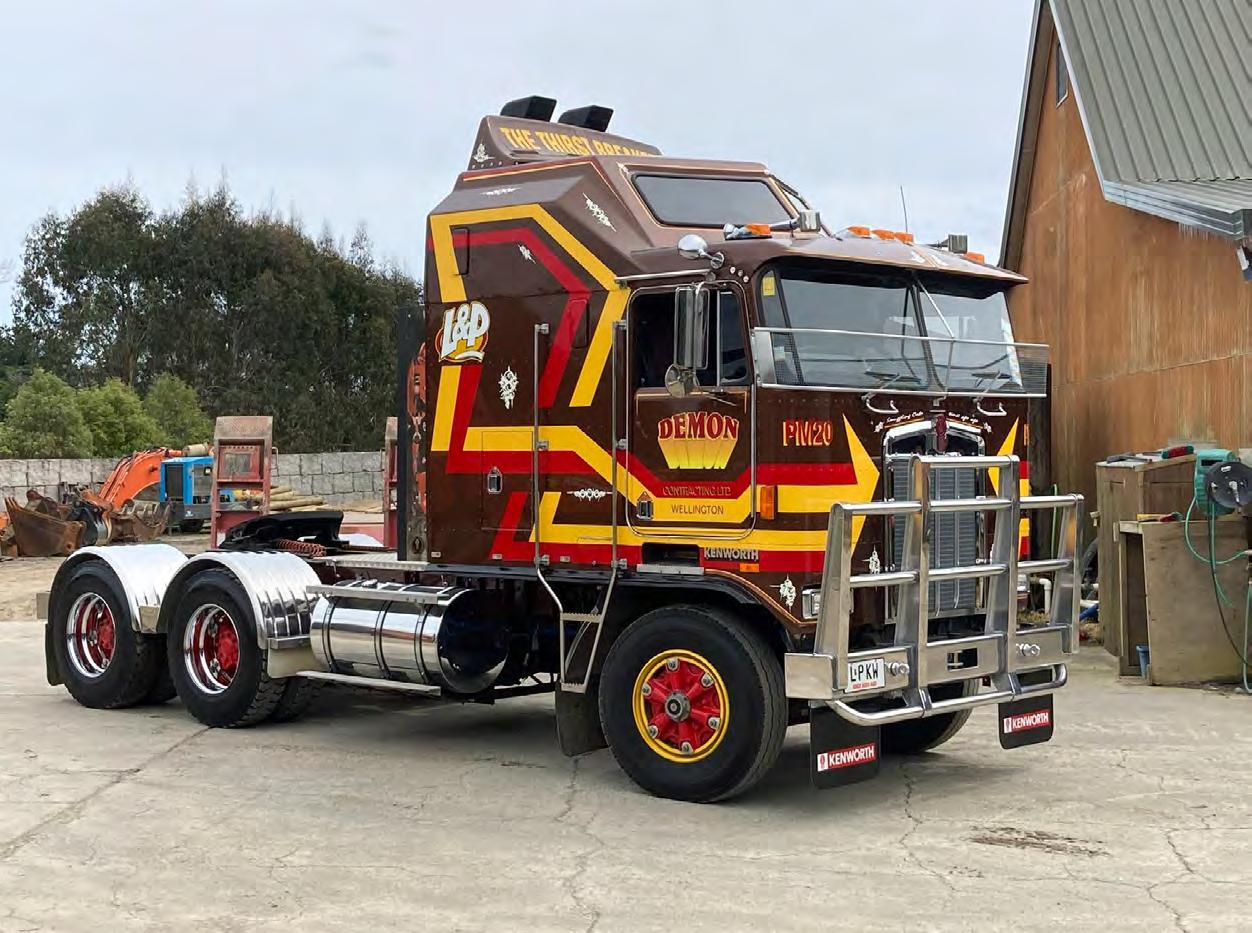
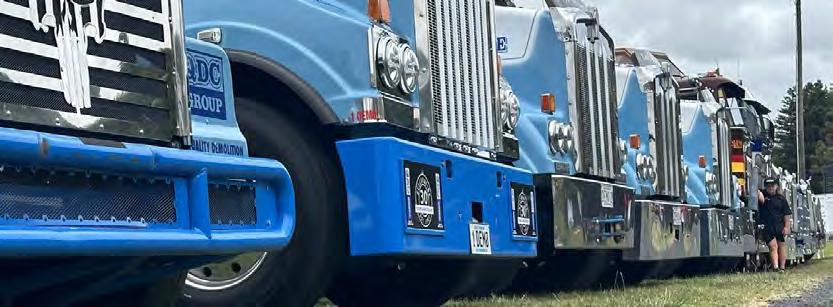
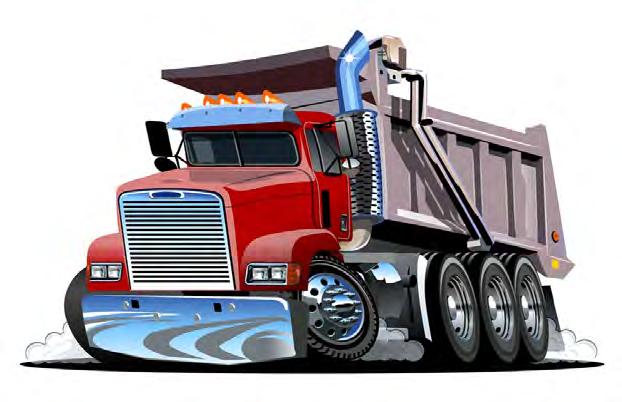



Truck drivers often spend heaps of time on the road doing their jobs – sometimes they can be away from home for days at a time. But where do they sleep? In a hotel? At a friend’s place? Well, believe it or not, many truck drivers have their very own sleeping area right inside their truck – called a sleeper cab!
Many trucks just have a small space inside the cab, enough room for the driver and a passenger, and maybe a small space for some personal belongings like a bag.
Other trucks have an area behind the seats that can be used by the driver to have a quick rest in between driving.
Sleeper cabs have a much bigger space, and are used by truck drivers who are travelling long distances. These cabs can also be used during the day for resting in mandatory break periods, as defined by logbooks and work-time rules.
A sleeper cab will often have a bed, some kind of storage, and modern conveniences such as a fridge, microwave or TV.
These days, there are even some luxury sleeper cabs in some trucks. They are often tricked out with custom packages, and you can bet there’s more than just a mattress back there!
Cool features can include bunk beds, mirrors, LED lighting in different colours, curtains, a sofa, flat-screen TVs, closets to hang up your clothes, mini fridges, kitchen counters, cook tops, and more. Pretty cool.
Have you ever been inside a sleeper cab? Send your pics to shannon@nztrucking.co.nz.




ANSWER
Because they’ve got loads of experience!
